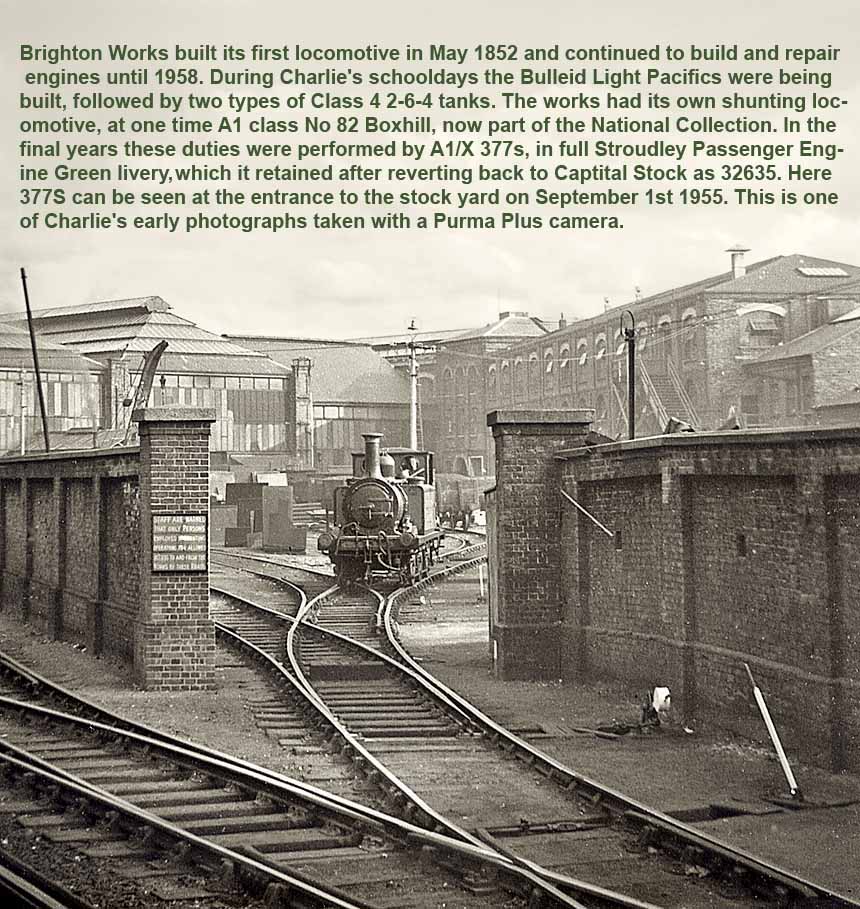
INTRODUCTION
by David Hey
by David Hey
As mentioned elsewhere on this site, the quality of 'top drawer' railway photographs to be found on the Internet is truly amazing. Today we have the benefit of blindingly-fast search engines to help us find the best sites, but sorting out the wheat from chaff can take an age. However, I recently stumbled upon a superb collection of photos taken by Charlie Verrall, who goes by the name of 'Pondhopper1' on 'Flickr's' online photo management facility. Interestingly the name 'Pondhopper1' was chosen because during the
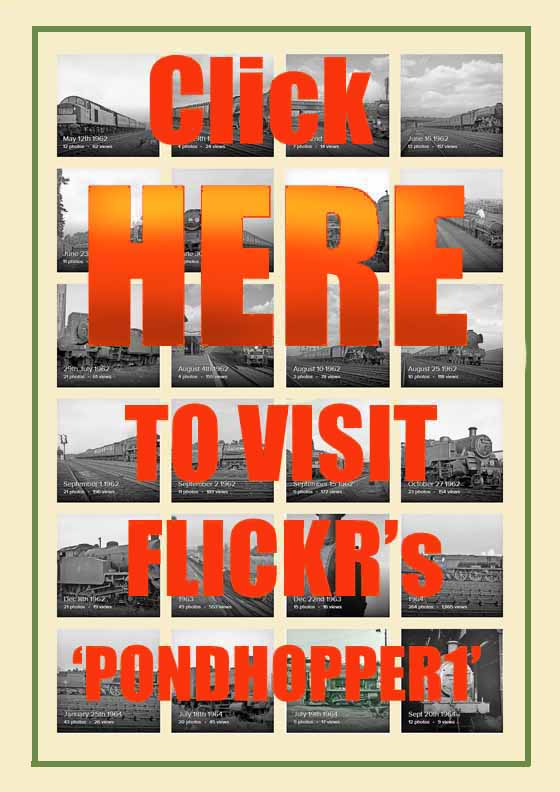
1980s Charlie regularly flew the London-New York route across the Atlantic, more commonly known as 'The Big Pond' in airline parlance, and so when he joined the rank and file of Citizens Band Radio users, the name 'Pondhopper' seemed a reasonable choice for his Flickr site, but he has added the suffix '1' since there was already a Flickr member of that name.
Indeed 'Flickr' is among the best online photo management and sharing applications on the web. If you fancy showcasing your photos on the Internet, but don't want the hassle (and expense) of creating your own website then you'll find Flickr much simpler. Over the years it has grown into a massive photographic community used by countless thousands of railway enthusiasts who share a passion for trains.
All can all be found on Flickr, including 'Pondhopper1's' pages.
Click on image (left) to visit the site...
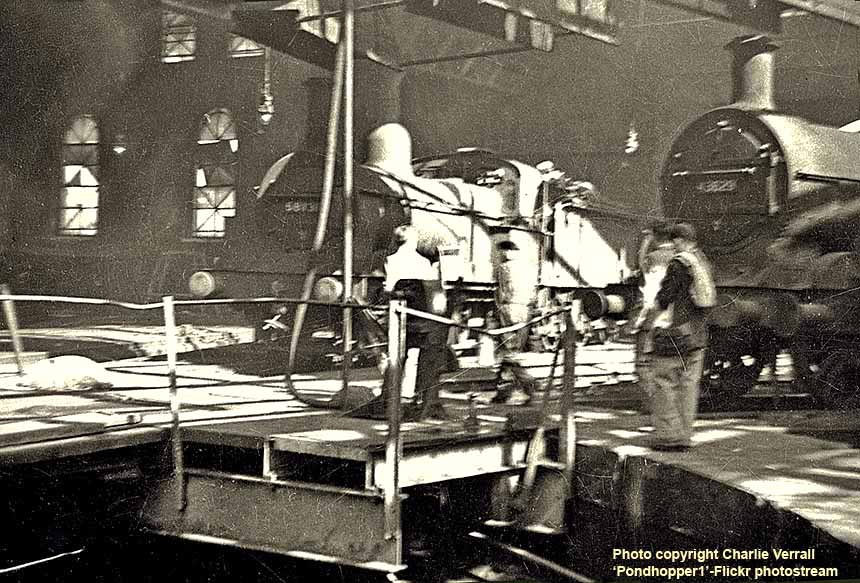
As As for Charlie's early days? With a grandfather who had been a footplate man on the London Brighton & South Coast Railway (LBSCR) and Southern Railway, and an uncle who was on the footplate with both the Southern and BR, plus a father who was also a railwayman - it was not surprising that he was interested in railways as a small boy, eventually leaving school to follow family tradition by joing BR from 1953 until 1967.
It all began with family holidays in the West Country, his first trip on the 'Atlantic Coast Express' (ACE) hauled by 'Merchant Navy' No 35005 Canadian Pacific and the use of a 120 Box Brownie type camera, all of which introduced him to railway photography at a very early age
Charlie's oldest surviving negative (above right) of ex-Midland Railway 0-6-0s 58137 and 43829 was taken at Cricklewood shed on August 2nd 1950. Of course, the box camera was a bit restricted to say the least, but in the main some of his oldest negatives from 1950 have been worth keeping if only for their sentimental value; they remind him of childhood days when he lived next to Wivelsfield station where he spent many happy hours photographing the steady procession of local steam trains hauled by the likes of the SECR's Class Ds and Brighton Atlantics on the Brighton Main Line; indeed a feature for several years was the through trains from Birkenhead and Wolverhamton to the coastal resorts of Kent and East Sussex. These trains were routed via the Western Region to Reading and on to Redhill where they were divided; a portion then went either to Eastbourne or Hastings via Brighton, and until their withdrawal the service was the domain of ex-SECR D class 4-4-0s.
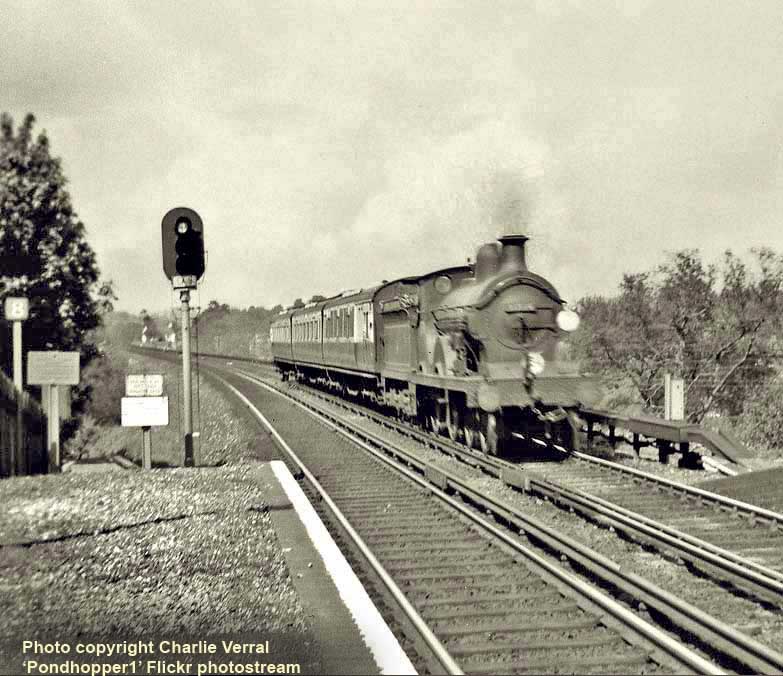
(Above-Below) Here are two of Charlie's 6 X 9 box camera photographs taken during the summer of 1955 showing both an up and down train passing through Wivelsfield Station; although the dates differ they are both being hauled by the same locomotive, namely 31734.
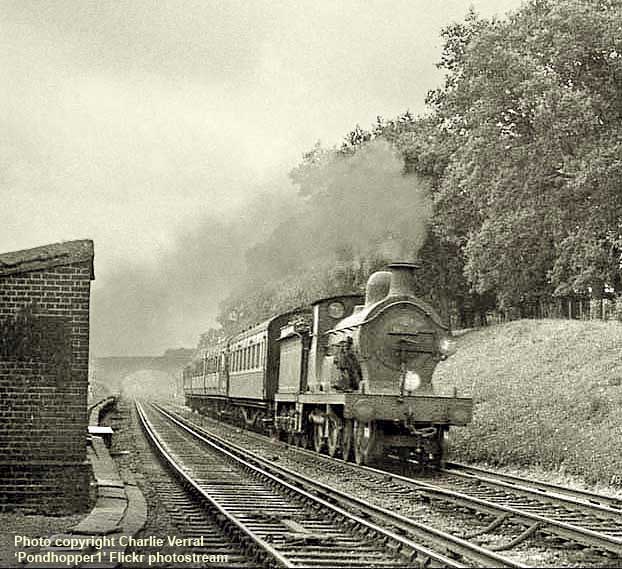
Being a 'train boy' going to school in Hove he saw much of what was emerging from Brighton Works, the last of Bulleid's Light Pacifics, the Fairburn and BR Standard 2-6-4 tanks, and of the course the experimental 0-6-6-0T articulated locomotive, Leader, numbered 36001. Sadly he never actually saw 36001 or the modified Atlantic 32039 working under their own steam, but during his morning trips by train to school there was the passing of a freight in the same direction, which in the mid-1948 period was invariably worked by WD 77007 until it went to pastures new. However, I'll let Charlie take up the story...
Living as I did next to the London to Brighton mainline and being able to obtain cheap tickets owing to my father being a railwayman, travelling to London was not a problem at weekends and during school holidays. In retrospect it is difficult to imagine that a 12 year-old schoolboy in short trousers, either by himself or with friends of a similar age, could make these trips unhindered. This would not be the case in this present age.
(Below) This photo of two young locospotters in 1950 was taken by my spotting pal Mike Harris. I am on the left with Jimmy Stevenson, and we are standing on St Wildred Road bridge which crosses the London to Brighton mainline almost over the points at Keymer Juntion. This was a favourite spot for observing trains. We may well have been watching Bank Holiday specials when an almost never-ending stream of extra services would go past, almost all comprised of suburban stock. For returning holidaymakers the lamp posts at Brighton Station were used as queuing points; once one train had been filled they would then advance to the next post and so on.
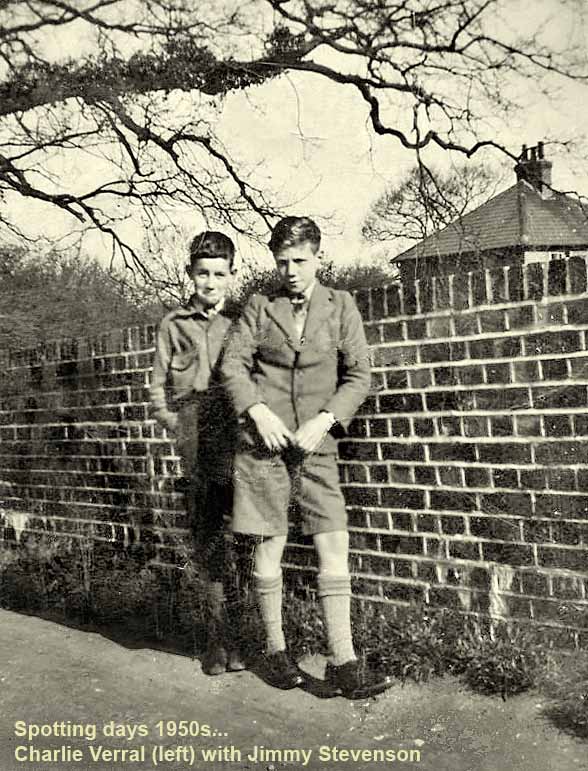
However, the Mecca for all of us was Clapham Junction with trains coming and going in all directions, although little interest was shown in the electric multiple units. Visiting the various London terminal stations was quite easy since most were on or near the Underground Circle line. The exception was Paddington which was best reached by bus from Victoria. Other than Waterloo we tended to avoid the Southern Stations since there was very little steam to be seen or few spotting facilities. Two other stations we rarely visited were Fenchurch Street, again few facilities although better than today where the platforms appear to be hidden from view, and Marylebone where we suspected little in the way of train services and just not worth the bother.
The others of course had their own appeal: Liverpool Street with its steam-hauled suburban services; St Pancras and the chance of seeing several Compound 4-4-0s or the 'Jubilee' and 'Royal Scot' 4-6-0s; the sheer joy of Kings Cross was the Pacifics, especially the A4s, and hope upon hope a sighting the solitary Class W1 4-6-4 60700. I never actually saw 60700 at the Cross but she was on shed most times when I visited 'Top Shed'. What I did get to see however on different occasions were the two Gresley streamlined B17/5 4-6-0s Nos 61659 East Anglian and 61670 City of London, and the Class B2 4-6-0 assigned Royal Train duties, No 61671 Royal Sovereign. Another feature of Kings Cross was the emergence from the cavernous depths of the Metropolitan Line of condensing N2 class 0-6-2 tanks.
Euston offered more Pacifies and the vain hope of seeing the Turbomotive, 46202, but I never saw it either as an experimental non-condensing turbine-powered machine or after rebuilding to a conventional four-cylinder Pacific and named Princess Anne. Following rebuilding it had a very short life after being damaged beyond repair in the tragic Harrow collision on October 8th 1952. Finally there was Paddington with its 'Kings' and 'Castles', and the mysterious diesel parcels railcars and the Class 9700 0-6-0 pannier tanks fitted with condensing apparatus disappearing somewhere over the far side of the station.
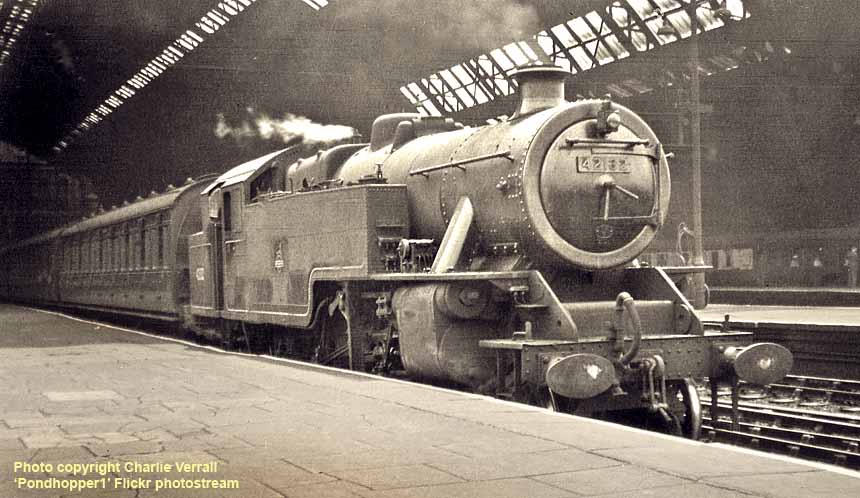
(Above) All in all, every one of the London mainline stations was a spotters paradise, but sadly few of my photographs have survived, however I do have this one of Class 4MT 2-6-4T 42132 at St Pancras on August 30th 1951. There were several variants of the LMS Class 2-6-4Ts: the originals by Fowler, the two and three cylinder versions by Stanier and finally those designed by Fairburn. No 42132 was a Fairburn engine delivered from Derby Works in December 1949 and based at St Albans shed at the time this photograph was taken. Withdrawal came in June 1966 and, like so many other London Midland Region locomotives, No 42132 was scrapped by Cashmore's at Great Bridge.
(Below) The North British Locomotive Company built the majority of the Thompson Class B1 4-6-0s, including 61302 which entered traffic on Eastern Region in March 1948 as E1302. This photograph was taken at Liverpool Street on April 15th 1952 when No 61302 was based at Cambridge, however ousted by the new diesels in 1966, 61302 was withdrawn in April that year and broken up by Cashmore's at Great Bridge.
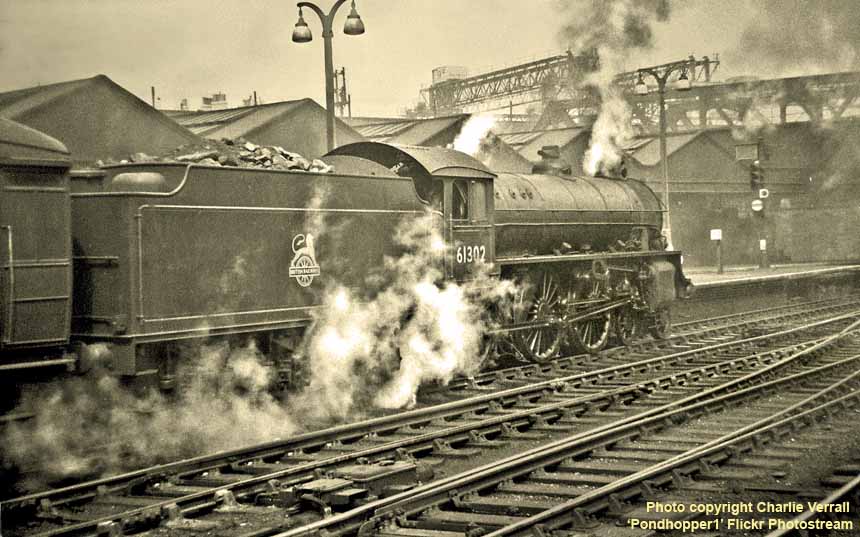
Between 1950 and 1952 I belonged to a Locospotters Club based in Birmingham, which organised Sunday coach trips to most of the London sheds. Notable among them were Willesden, Camden, Cricklewood, Kentish Town, Kings Cross, Neasden, Old Oak Common and Stratford, with the prospect of seeing well over a thousand locomotives. The best of all was Stratford where complete classes could be seen, plus locos awaiting entry to Stratford Works or returning to their depots in immaculate ex-Works condition. Also present were the works shutters, including three J92 0-6-0 crane tanks. I most certainly went to Stratford in late March-early April 1950 when Class B1 4-6-0 61057 was outside the works awaiting withdrawal following a collision at Chelmsford on March 7th of that year. On another occasion one of the J70 0-6-0 'Tram' tanks was present. With an allocation of over 350 it is almost impossible to list here the different types to be seen, however many of them were elderly Great Eastern engines from pre-1923 Grouping days. Cricklewood and Kentish Town were similar with a joint allocation of nearly 200 including many from the Midland Railway such as the double framed 0-6-0s. Old Oak Common did not have too many older locomotives, just 'Kings', 'Castles', the pretty 4700 class 2-8-0s and the newly arrived 1500 class pannier tanks. Old Oak Common was one of the few sheds with diesel shunters. Camden Town's allocation was almost exclusively express locos, and some Jinty 0-6-0 tanks, whereas Willesden had Stanier standard types and several London and North Western 0-8-0s, something which would continue until almost the end of steam there.
(Below) During 1947 the LMS began construction of the first of two mainline Co-Co diesel locomotives Nos 10000 and 10001 at Derby Works. Designed by HG Ivatt in collaboration with the English Electric Co, the first of the 1,600hp Co-Co twins No 10000 made its debut in December 1947, just a few weeks before nationalisation. The second of the pair, No 10001, entered service in the autumn of 1948 and, along with Bulleid's three Southern mainline diesels Nos 10201/02/03, were regularly employed on West Coast Main Line express passenger services out of Euston. Willesden shed was the home of the two LMS diesels; I photographed 10001 there on July 27 1952, but with the advent of the English Electric Type 4 diesels (Class 40s) in the early 1960s all five were withdrawn and stored at Crewe. Eventually they went to Cashmore's at Great Bridge and scrapped in early 1968. It is puzzling as to why, since they had in storage at least one that was not selected to become part of the National Collection. It is known that the original list of candidates nominated for preservation in the collection was far greater than those that actually survived, although the details have never been released.
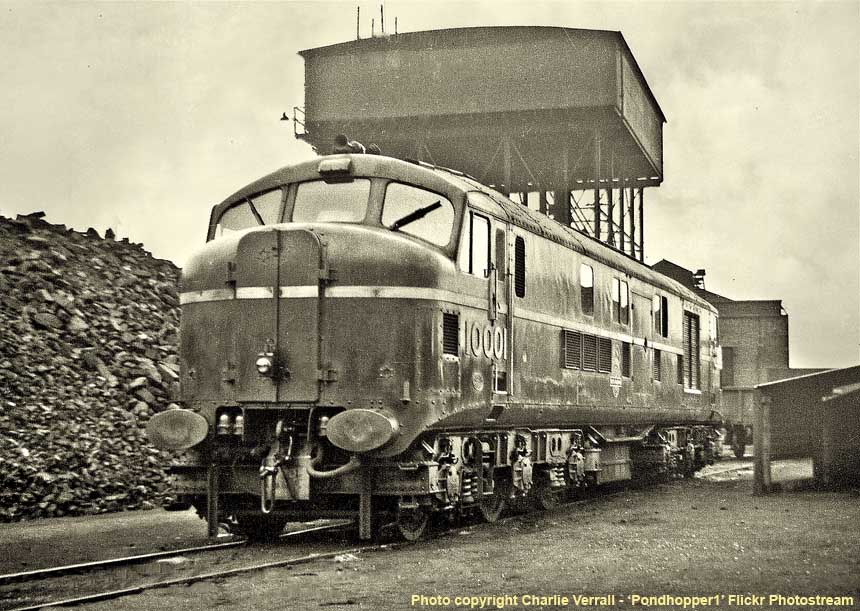
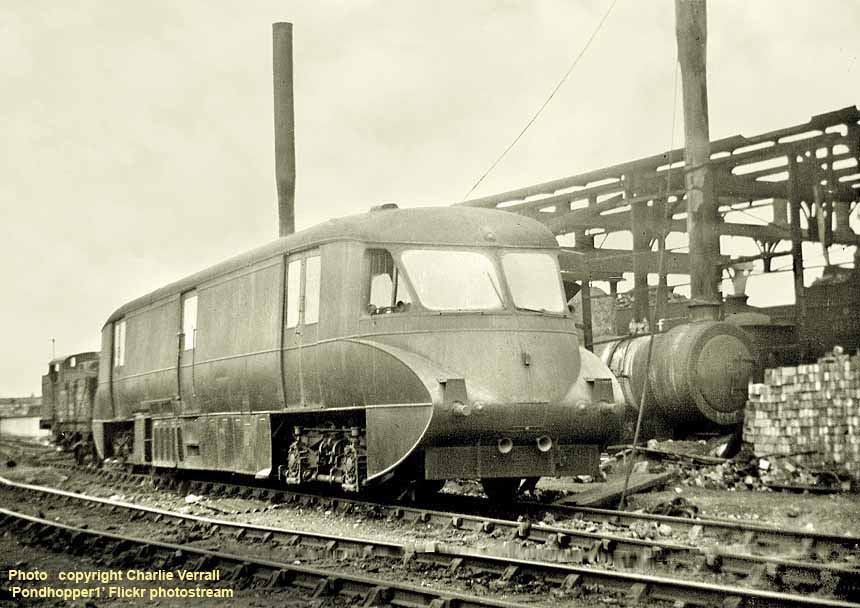
(Above) Also on July 27th 1952 I photographed this Great Western Railway diesel parcels car W17W during a visit Southall Shed. Built in in 1936, this was one of two owned by the GWR, the other being W34W also seen at Southall the same day. Of special interest is the stationary locomotive boiler with the long chimney on the right; a second chimney can be seen further back. What they were used for I do not know; the boiler certainly doesn't look like a Swindon product.
Neasden also had an allocation of many pre-Grouping Great Central Railway locos, but sadly none of the few remaining 4-6-0s and 4-4-0s. Finally there was Kings Cross 'Top Shed', again a fine collection of Pacifics and V2 2-6-2s. Pride of place had to go to the W1 4-6-4 60700 and some Great Northern C12 4-4-2 tanks. As stated above it is impossible to list the various classes of locomotives I've seen, however I would recommend Hugh Longworth's British Steam Locomotive Allocations 1948-1968 (OPC) which contains shed lists for various dates.
There is just one final visit outside of my local area to be recorded. In the spring of 1952 a teacher at my school organised a Youth Hostelling visit to North Yorkshire. We arrived at York after dusk and it wasn't until the morning we realised the Hostel was on the other side of the River Ouse to York Shed, now the main part of the National Railway Museum. The sight we saw was really something, black smoke filing the sky and a lines of locomotives, including some LMS Garretts. The teacher had things really organised since we not only went to the sheds but also the old Railway Museum and the Carriage Works. As a Southern boy the sight of so many ex-North Eastern locomotives was something else, Raven B16 4-6-0s, 4-4-0s etc, but none of the 0-8-0s; I was not to see any of them until the mid-1960s.
Still the time we spent in Yorkshire was a wonderful experience. Later we walked along the cliff path and railway between Robin Hoods Bay and Whitby. Sadly again no photographs on this trip. Unfortunately all by logs and records were lost whilst doing my National Service, but I still have fond memories of all those different trips.
Of course, I did not ignore the Southern Sheds during this period, however it was not until the 1960s that I got around to visiting Nine Elms, Norwood, Feltham and Stewarts Lane, but I never managed a visit to Hither Green. However I went to Bricklayers Arms in the spring of 1951; I'm pretty sure about this date because I observed the sole S Class 0-6-0 saddle tank 1685 before it was replaced by a diesel shunter; the BR number of 31685 was never applied. This locomotive was a 1917 rebuild of a standard South Eastern and Chatham C Class 0-6-0, an example of which can be seen on the Bluebell Railway. Here No 592 is seen (above left) working an up train from Sheffield Park to Horsted Keynes near Keynsford Lane Bridge in 1984.
(Below) Brighton 75A was my 'home' shed, but visits there were infrequent. Normally most of the locos in residence could be seen from Brighton's platform 1 and 2, as quite often the practice was for the locos inside the shed to be pulled out and displayed in the yard. I believe some spotters sneakingly suspected this was arranged purely for their benefit. My first official visit was on April 24th 1952, when N15/X 32327 Trevithick was present. This was one of the 4-6-0 rebuilds of the London Brighton and South Coast L Class 4-6-4 Baltic Tanks and a rare visitor to Brighton, having arrived for minor attention. Built at Brighton in April 1914, this was the first of the 4-6-4Ts originally numbered 327 and named Charles C Macrae. However, following electrification of the line from Keymer Junction to astbourne and Hastings, there were few suitable duties remaining for the seven locomotives, and Maunsell took the decision to have them rebuilt as Class N15/X 4-6-0 tenders engines between 1934-1936. No 327 returned to traffic coupled with the tender formerly fitted to Urie S15 509 on April 4th 1935. In December 1941 it was on loan to the GWR based at Old Oak Common, before returning to the Southern in July 1943. Later renumbered BR 32327, the locomotive was withdrawn in January 1956.
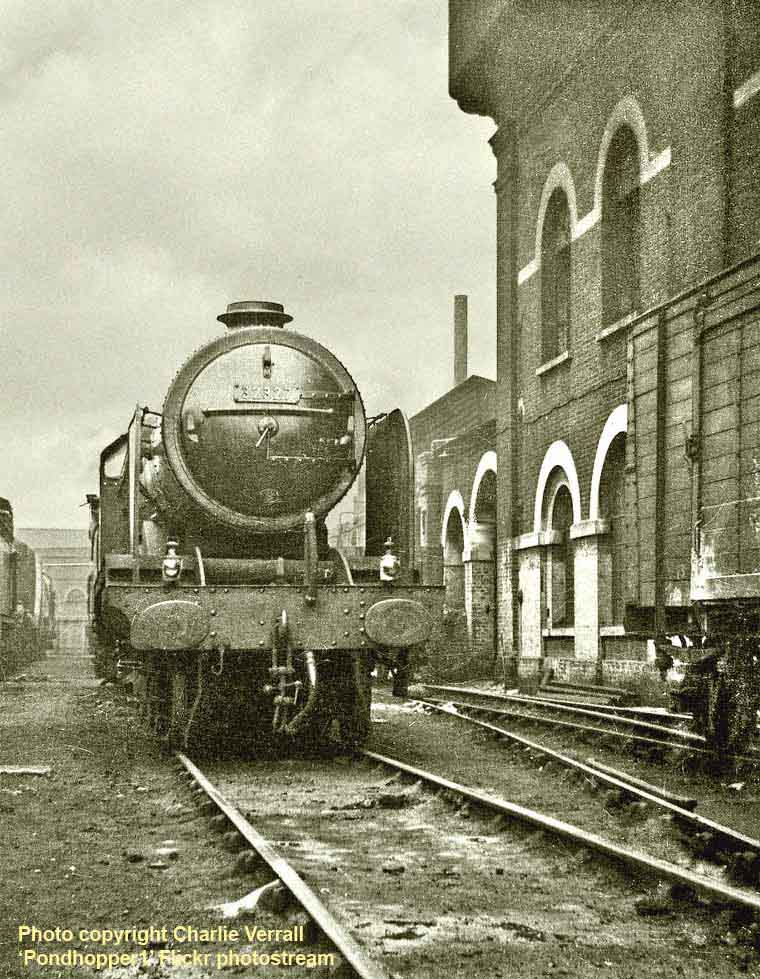
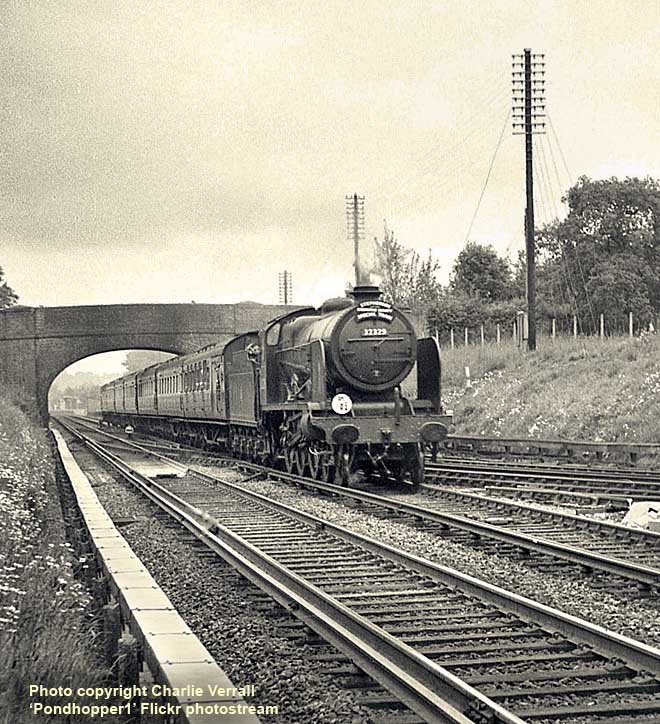
(Above) On June 23rd 1956 No 32329 Stephenson worked a 60 min scheduled Stephenson Locomotive Society special from London Bridge to Brighton seen here passing beneath my old spotting haunt, St Wilfred Road at Keymer Junction Bridge.
(Below) Another visit to Brighton Shed was on May 17th 1952 when I photographed Salisbury's T9 4-4-0 30721, either in for some attention or perhaps after working one of the through services between Brighton and Cardiff and Plymouth. The Drummond T9 class 4-4-0s were regular performers at different times on all sections the Southern Railway, but by 1952 withdrawals were taking place, although 30721 lasted until July 1958. To the right can be seen the water purification plant with an attendant lime covering the outside framed tender, more than likely from a James Stirling South Eastern Railway locomotive.
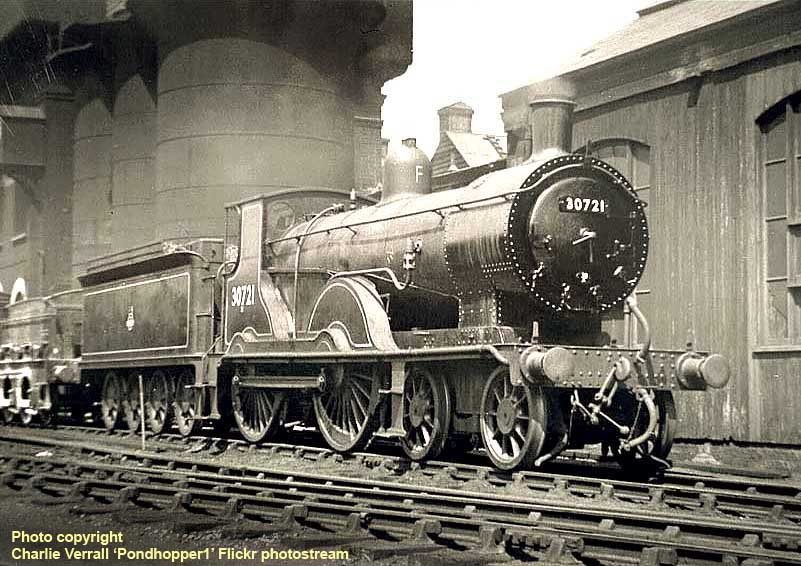
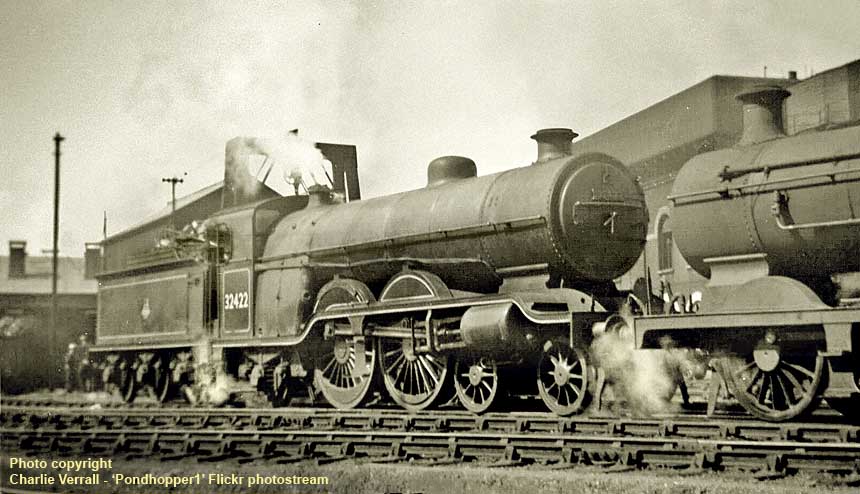
Above-Inset) The H2 Class Atlantic locomotives were the pride of both Brighton and Newhaven, despite an allocation of West Country Pacifics. Seen here is 32422 North Foreland originally built in 1911. By 1952 the H2s were in regular use not only on the Newhaven to Victoria boat trains but also the through services from Brighton to Bournemouth, Cardiff and Plymouth, as well special trains; indeed I travelled behind one between Brighton and New Cross Gate when working a football special from Brighton to Norwich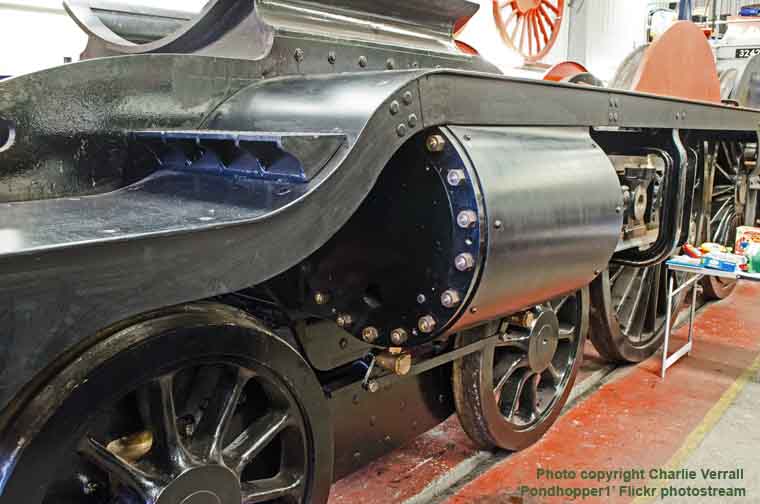 on December 11th 1954. Sadly most of the class was withdrawn in 1956 while I was doing my National Service in Germany. (Inset) Fortunately a 'new build' is underway at Sheffield Park on the Bluebell Railway; this is progressing well as can be seen by the photograph taken on April 17th 2015.
on December 11th 1954. Sadly most of the class was withdrawn in 1956 while I was doing my National Service in Germany. (Inset) Fortunately a 'new build' is underway at Sheffield Park on the Bluebell Railway; this is progressing well as can be seen by the photograph taken on April 17th 2015.
(Below) During the early 1950s Brighton was still very much the place to see London Brighton and South Coast Railway engines, however this was soon about to change with the arrival of the Brighton-built Fairburn and BR class 4MT 2-6-4 tanks; it ultimately led to the extinction of the elderly Class I1/X and I3 4-4-2 tanks. The original I1 class engines were not very successful, being poor steamers and in 1925 work commenced on fitting them with discarded boilers from Robert Billington's B4 class 4-4-0s. This seemed in part to do the trick and they held their own until during WW2. Withdrawal of the class started just after nationalisation and by June 1951 only No 2002 remained in service; the locomotive retained its Southern Railway number up to withdrawal in July 1951.
It all began with family holidays in the West Country, his first trip on the 'Atlantic Coast Express' (ACE) hauled by 'Merchant Navy' No 35005 Canadian Pacific and the use of a 120 Box Brownie type camera, all of which introduced him to railway photography at a very early age
Charlie's oldest surviving negative (above right) of ex-Midland Railway 0-6-0s 58137 and 43829 was taken at Cricklewood shed on August 2nd 1950. Of course, the box camera was a bit restricted to say the least, but in the main some of his oldest negatives from 1950 have been worth keeping if only for their sentimental value; they remind him of childhood days when he lived next to Wivelsfield station where he spent many happy hours photographing the steady procession of local steam trains hauled by the likes of the SECR's Class Ds and Brighton Atlantics on the Brighton Main Line; indeed a feature for several years was the through trains from Birkenhead and Wolverhamton to the coastal resorts of Kent and East Sussex. These trains were routed via the Western Region to Reading and on to Redhill where they were divided; a portion then went either to Eastbourne or Hastings via Brighton, and until their withdrawal the service was the domain of ex-SECR D class 4-4-0s.

(Above-Below) Here are two of Charlie's 6 X 9 box camera photographs taken during the summer of 1955 showing both an up and down train passing through Wivelsfield Station; although the dates differ they are both being hauled by the same locomotive, namely 31734.

Being a 'train boy' going to school in Hove he saw much of what was emerging from Brighton Works, the last of Bulleid's Light Pacifics, the Fairburn and BR Standard 2-6-4 tanks, and of the course the experimental 0-6-6-0T articulated locomotive, Leader, numbered 36001. Sadly he never actually saw 36001 or the modified Atlantic 32039 working under their own steam, but during his morning trips by train to school there was the passing of a freight in the same direction, which in the mid-1948 period was invariably worked by WD 77007 until it went to pastures new. However, I'll let Charlie take up the story...
CHAPTER ONE EARLY SPOTTING DAYS
Living as I did next to the London to Brighton mainline and being able to obtain cheap tickets owing to my father being a railwayman, travelling to London was not a problem at weekends and during school holidays. In retrospect it is difficult to imagine that a 12 year-old schoolboy in short trousers, either by himself or with friends of a similar age, could make these trips unhindered. This would not be the case in this present age.
(Below) This photo of two young locospotters in 1950 was taken by my spotting pal Mike Harris. I am on the left with Jimmy Stevenson, and we are standing on St Wildred Road bridge which crosses the London to Brighton mainline almost over the points at Keymer Juntion. This was a favourite spot for observing trains. We may well have been watching Bank Holiday specials when an almost never-ending stream of extra services would go past, almost all comprised of suburban stock. For returning holidaymakers the lamp posts at Brighton Station were used as queuing points; once one train had been filled they would then advance to the next post and so on.

However, the Mecca for all of us was Clapham Junction with trains coming and going in all directions, although little interest was shown in the electric multiple units. Visiting the various London terminal stations was quite easy since most were on or near the Underground Circle line. The exception was Paddington which was best reached by bus from Victoria. Other than Waterloo we tended to avoid the Southern Stations since there was very little steam to be seen or few spotting facilities. Two other stations we rarely visited were Fenchurch Street, again few facilities although better than today where the platforms appear to be hidden from view, and Marylebone where we suspected little in the way of train services and just not worth the bother.
The others of course had their own appeal: Liverpool Street with its steam-hauled suburban services; St Pancras and the chance of seeing several Compound 4-4-0s or the 'Jubilee' and 'Royal Scot' 4-6-0s; the sheer joy of Kings Cross was the Pacifics, especially the A4s, and hope upon hope a sighting the solitary Class W1 4-6-4 60700. I never actually saw 60700 at the Cross but she was on shed most times when I visited 'Top Shed'. What I did get to see however on different occasions were the two Gresley streamlined B17/5 4-6-0s Nos 61659 East Anglian and 61670 City of London, and the Class B2 4-6-0 assigned Royal Train duties, No 61671 Royal Sovereign. Another feature of Kings Cross was the emergence from the cavernous depths of the Metropolitan Line of condensing N2 class 0-6-2 tanks.
Euston offered more Pacifies and the vain hope of seeing the Turbomotive, 46202, but I never saw it either as an experimental non-condensing turbine-powered machine or after rebuilding to a conventional four-cylinder Pacific and named Princess Anne. Following rebuilding it had a very short life after being damaged beyond repair in the tragic Harrow collision on October 8th 1952. Finally there was Paddington with its 'Kings' and 'Castles', and the mysterious diesel parcels railcars and the Class 9700 0-6-0 pannier tanks fitted with condensing apparatus disappearing somewhere over the far side of the station.

(Above) All in all, every one of the London mainline stations was a spotters paradise, but sadly few of my photographs have survived, however I do have this one of Class 4MT 2-6-4T 42132 at St Pancras on August 30th 1951. There were several variants of the LMS Class 2-6-4Ts: the originals by Fowler, the two and three cylinder versions by Stanier and finally those designed by Fairburn. No 42132 was a Fairburn engine delivered from Derby Works in December 1949 and based at St Albans shed at the time this photograph was taken. Withdrawal came in June 1966 and, like so many other London Midland Region locomotives, No 42132 was scrapped by Cashmore's at Great Bridge.
(Below) The North British Locomotive Company built the majority of the Thompson Class B1 4-6-0s, including 61302 which entered traffic on Eastern Region in March 1948 as E1302. This photograph was taken at Liverpool Street on April 15th 1952 when No 61302 was based at Cambridge, however ousted by the new diesels in 1966, 61302 was withdrawn in April that year and broken up by Cashmore's at Great Bridge.

Between 1950 and 1952 I belonged to a Locospotters Club based in Birmingham, which organised Sunday coach trips to most of the London sheds. Notable among them were Willesden, Camden, Cricklewood, Kentish Town, Kings Cross, Neasden, Old Oak Common and Stratford, with the prospect of seeing well over a thousand locomotives. The best of all was Stratford where complete classes could be seen, plus locos awaiting entry to Stratford Works or returning to their depots in immaculate ex-Works condition. Also present were the works shutters, including three J92 0-6-0 crane tanks. I most certainly went to Stratford in late March-early April 1950 when Class B1 4-6-0 61057 was outside the works awaiting withdrawal following a collision at Chelmsford on March 7th of that year. On another occasion one of the J70 0-6-0 'Tram' tanks was present. With an allocation of over 350 it is almost impossible to list here the different types to be seen, however many of them were elderly Great Eastern engines from pre-1923 Grouping days. Cricklewood and Kentish Town were similar with a joint allocation of nearly 200 including many from the Midland Railway such as the double framed 0-6-0s. Old Oak Common did not have too many older locomotives, just 'Kings', 'Castles', the pretty 4700 class 2-8-0s and the newly arrived 1500 class pannier tanks. Old Oak Common was one of the few sheds with diesel shunters. Camden Town's allocation was almost exclusively express locos, and some Jinty 0-6-0 tanks, whereas Willesden had Stanier standard types and several London and North Western 0-8-0s, something which would continue until almost the end of steam there.
(Below) During 1947 the LMS began construction of the first of two mainline Co-Co diesel locomotives Nos 10000 and 10001 at Derby Works. Designed by HG Ivatt in collaboration with the English Electric Co, the first of the 1,600hp Co-Co twins No 10000 made its debut in December 1947, just a few weeks before nationalisation. The second of the pair, No 10001, entered service in the autumn of 1948 and, along with Bulleid's three Southern mainline diesels Nos 10201/02/03, were regularly employed on West Coast Main Line express passenger services out of Euston. Willesden shed was the home of the two LMS diesels; I photographed 10001 there on July 27 1952, but with the advent of the English Electric Type 4 diesels (Class 40s) in the early 1960s all five were withdrawn and stored at Crewe. Eventually they went to Cashmore's at Great Bridge and scrapped in early 1968. It is puzzling as to why, since they had in storage at least one that was not selected to become part of the National Collection. It is known that the original list of candidates nominated for preservation in the collection was far greater than those that actually survived, although the details have never been released.


(Above) Also on July 27th 1952 I photographed this Great Western Railway diesel parcels car W17W during a visit Southall Shed. Built in in 1936, this was one of two owned by the GWR, the other being W34W also seen at Southall the same day. Of special interest is the stationary locomotive boiler with the long chimney on the right; a second chimney can be seen further back. What they were used for I do not know; the boiler certainly doesn't look like a Swindon product.
Neasden also had an allocation of many pre-Grouping Great Central Railway locos, but sadly none of the few remaining 4-6-0s and 4-4-0s. Finally there was Kings Cross 'Top Shed', again a fine collection of Pacifics and V2 2-6-2s. Pride of place had to go to the W1 4-6-4 60700 and some Great Northern C12 4-4-2 tanks. As stated above it is impossible to list the various classes of locomotives I've seen, however I would recommend Hugh Longworth's British Steam Locomotive Allocations 1948-1968 (OPC) which contains shed lists for various dates.
There is just one final visit outside of my local area to be recorded. In the spring of 1952 a teacher at my school organised a Youth Hostelling visit to North Yorkshire. We arrived at York after dusk and it wasn't until the morning we realised the Hostel was on the other side of the River Ouse to York Shed, now the main part of the National Railway Museum. The sight we saw was really something, black smoke filing the sky and a lines of locomotives, including some LMS Garretts. The teacher had things really organised since we not only went to the sheds but also the old Railway Museum and the Carriage Works. As a Southern boy the sight of so many ex-North Eastern locomotives was something else, Raven B16 4-6-0s, 4-4-0s etc, but none of the 0-8-0s; I was not to see any of them until the mid-1960s.
Still the time we spent in Yorkshire was a wonderful experience. Later we walked along the cliff path and railway between Robin Hoods Bay and Whitby. Sadly again no photographs on this trip. Unfortunately all by logs and records were lost whilst doing my National Service, but I still have fond memories of all those different trips.
Of course, I did not ignore the Southern Sheds during this period, however it was not until the 1960s that I got around to visiting Nine Elms, Norwood, Feltham and Stewarts Lane, but I never managed a visit to Hither Green. However I went to Bricklayers Arms in the spring of 1951; I'm pretty sure about this date because I observed the sole S Class 0-6-0 saddle tank 1685 before it was replaced by a diesel shunter; the BR number of 31685 was never applied. This locomotive was a 1917 rebuild of a standard South Eastern and Chatham C Class 0-6-0, an example of which can be seen on the Bluebell Railway. Here No 592 is seen (above left) working an up train from Sheffield Park to Horsted Keynes near Keynsford Lane Bridge in 1984.
(Below) Brighton 75A was my 'home' shed, but visits there were infrequent. Normally most of the locos in residence could be seen from Brighton's platform 1 and 2, as quite often the practice was for the locos inside the shed to be pulled out and displayed in the yard. I believe some spotters sneakingly suspected this was arranged purely for their benefit. My first official visit was on April 24th 1952, when N15/X 32327 Trevithick was present. This was one of the 4-6-0 rebuilds of the London Brighton and South Coast L Class 4-6-4 Baltic Tanks and a rare visitor to Brighton, having arrived for minor attention. Built at Brighton in April 1914, this was the first of the 4-6-4Ts originally numbered 327 and named Charles C Macrae. However, following electrification of the line from Keymer Junction to astbourne and Hastings, there were few suitable duties remaining for the seven locomotives, and Maunsell took the decision to have them rebuilt as Class N15/X 4-6-0 tenders engines between 1934-1936. No 327 returned to traffic coupled with the tender formerly fitted to Urie S15 509 on April 4th 1935. In December 1941 it was on loan to the GWR based at Old Oak Common, before returning to the Southern in July 1943. Later renumbered BR 32327, the locomotive was withdrawn in January 1956.


(Above) On June 23rd 1956 No 32329 Stephenson worked a 60 min scheduled Stephenson Locomotive Society special from London Bridge to Brighton seen here passing beneath my old spotting haunt, St Wilfred Road at Keymer Junction Bridge.
(Below) Another visit to Brighton Shed was on May 17th 1952 when I photographed Salisbury's T9 4-4-0 30721, either in for some attention or perhaps after working one of the through services between Brighton and Cardiff and Plymouth. The Drummond T9 class 4-4-0s were regular performers at different times on all sections the Southern Railway, but by 1952 withdrawals were taking place, although 30721 lasted until July 1958. To the right can be seen the water purification plant with an attendant lime covering the outside framed tender, more than likely from a James Stirling South Eastern Railway locomotive.


Above-Inset) The H2 Class Atlantic locomotives were the pride of both Brighton and Newhaven, despite an allocation of West Country Pacifics. Seen here is 32422 North Foreland originally built in 1911. By 1952 the H2s were in regular use not only on the Newhaven to Victoria boat trains but also the through services from Brighton to Bournemouth, Cardiff and Plymouth, as well special trains; indeed I travelled behind one between Brighton and New Cross Gate when working a football special from Brighton to Norwich
 on December 11th 1954. Sadly most of the class was withdrawn in 1956 while I was doing my National Service in Germany. (Inset) Fortunately a 'new build' is underway at Sheffield Park on the Bluebell Railway; this is progressing well as can be seen by the photograph taken on April 17th 2015.
on December 11th 1954. Sadly most of the class was withdrawn in 1956 while I was doing my National Service in Germany. (Inset) Fortunately a 'new build' is underway at Sheffield Park on the Bluebell Railway; this is progressing well as can be seen by the photograph taken on April 17th 2015. (Below) During the early 1950s Brighton was still very much the place to see London Brighton and South Coast Railway engines, however this was soon about to change with the arrival of the Brighton-built Fairburn and BR class 4MT 2-6-4 tanks; it ultimately led to the extinction of the elderly Class I1/X and I3 4-4-2 tanks. The original I1 class engines were not very successful, being poor steamers and in 1925 work commenced on fitting them with discarded boilers from Robert Billington's B4 class 4-4-0s. This seemed in part to do the trick and they held their own until during WW2. Withdrawal of the class started just after nationalisation and by June 1951 only No 2002 remained in service; the locomotive retained its Southern Railway number up to withdrawal in July 1951.

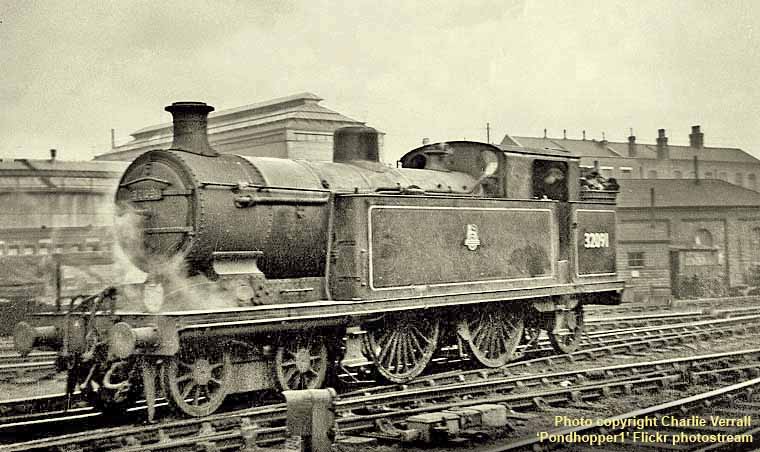
(Above) The larger I3 class 4-4-2 tank locomotives were a success almost from the onset, especially when the first superheated engines were introduced; widely regarded as the earliest example of this successful enhancement, in 1909 a series of comparative trials was arranged with a LNWR saturated tender engine which ultimately proved the superheated engine was more economic to operate and this result set future standards. Here, the last of the class, No 32091, was photographed at Brighton on 25th February 1952; a decision was taken to postpone its withdrawal so that it could take part in the Brighton Works centenary celebration in the autumn of 1952; the engine was scrapped at Ashford in February 1953.
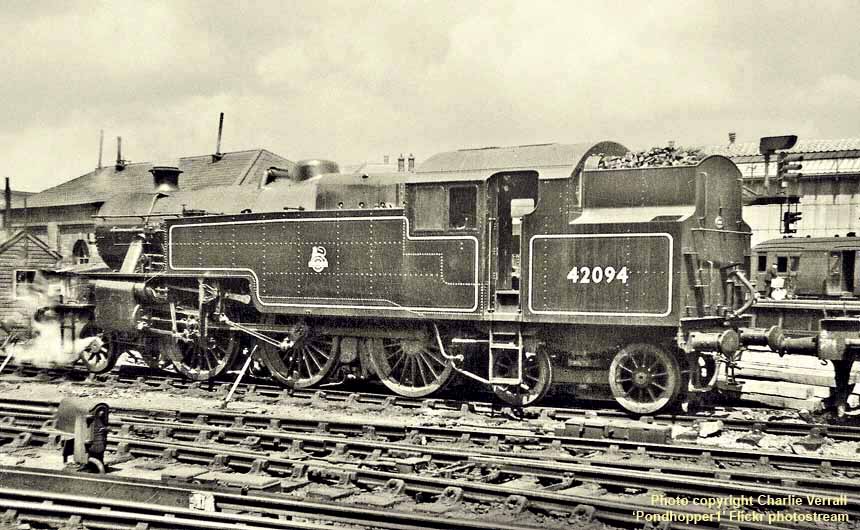
(Inset) In all, 277 Fairburn LMS Class 4MT 2-6-4 tanks were built between 1945 and 1951, with Brighton Works constructing Nos 42066-42106. This nearly new 42094 is seen outside Brighton Shed on July 21st 1951. Initially allocated to Ashford, No 42094 migrated north to Gateshead in 1954; it ended its days based at Sowerby Bridge where it was withdrawn in November 1962.
(Below) While the design of the BR Standard Class 4MT 2-6-4 tank was based on Fairburn's earlier LMS 2-6-4T, a number of handsome visual changes were very apparent, most notably the plating ahead of the cylinders and the subtle curvature of the side tanks compared with Fairburn's straight-sided tanks. The design work was done at Brighton and 130 of the class was built there. The BR Standard 4 tanks allocated to the Southern Region were widely used on the former London Brighton and South Coast Railway between Brighton, Tunbridge Wells and Three Bridges, and on the London, Tilbury and Southend Line working commuter services out of London until that route was electrified in 1962. This brand new 80127 was photographed at Haywards Heath on November 7th 1955; the Brighton MPD tool van crew are attending to the rerailing of Class C2/X 0-6-0 32586's tender. No 80127 went to Corkerhill (67A) on the ScR, where it remained until withdrawal in July 1964.
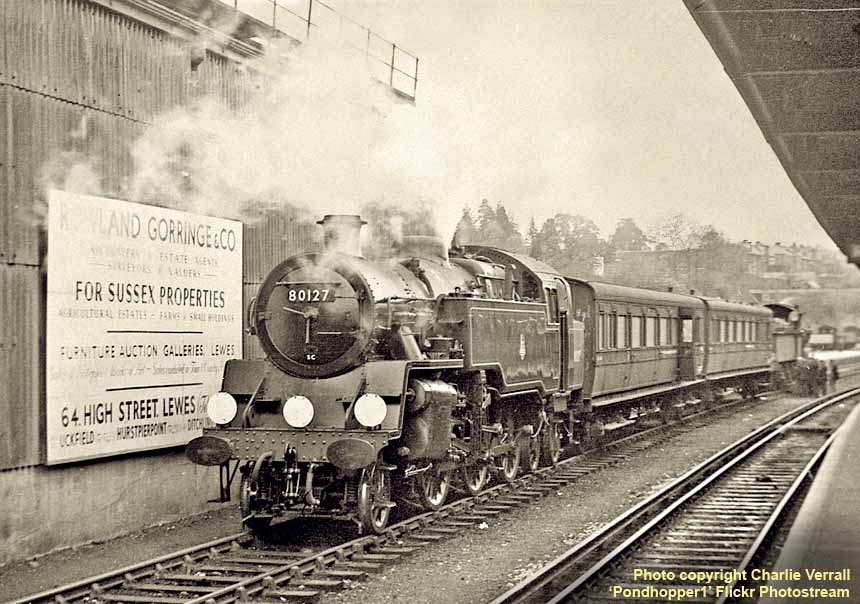
PHOTO GALLERY ONE LINESIDE RECONNAISSANCE - BASINGSTOKE AND BATTLEDOWN
The following are a selection taken between Basingstoke and Battledown on Saturday September 1st 1962, a hot and sunny day with little cloud. Why that particular date? Well it was the last day of the 1962 South Western summer service, with several extra services, and unknown to me at the time possibly the final fling of several of the Maunsell express locomotives. These photographs are not in any chronological sequence, in any case all my log books were lost many years ago.
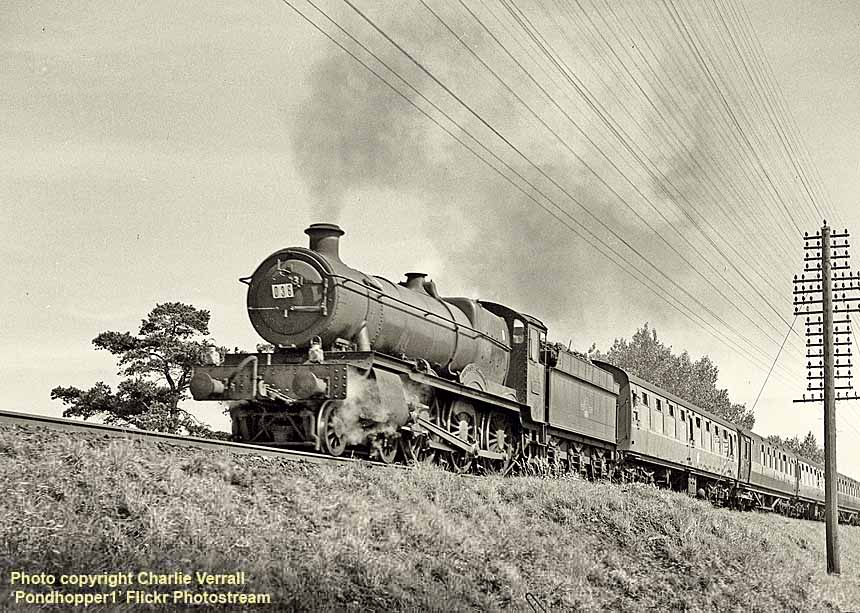
(Above-Below) Grange class 6833 Calcott Grange with the 08.43 Wolverhampton to Portsmouth. 6833 had taken this service over at Basingstoke, being seen on shed earlier in the day. I am unsure which loco worked to Basingstoke, howver 5990 Dorford Hall seen on shed later that day waiting to work a return service to the midlands. Granges and Halls were frequently seen working through services to and from Portsmouth. (Below) N15 class 30782 Sir Brian on the 09.40 Ilfracombe-Waterloo. This 'Arthur' had not much longer to go being withdrawn later in the month.
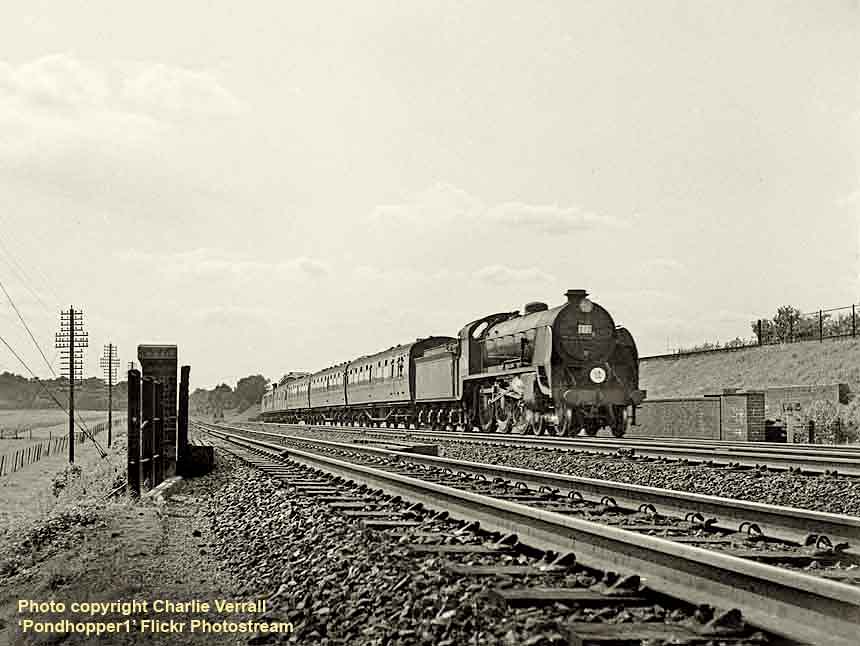
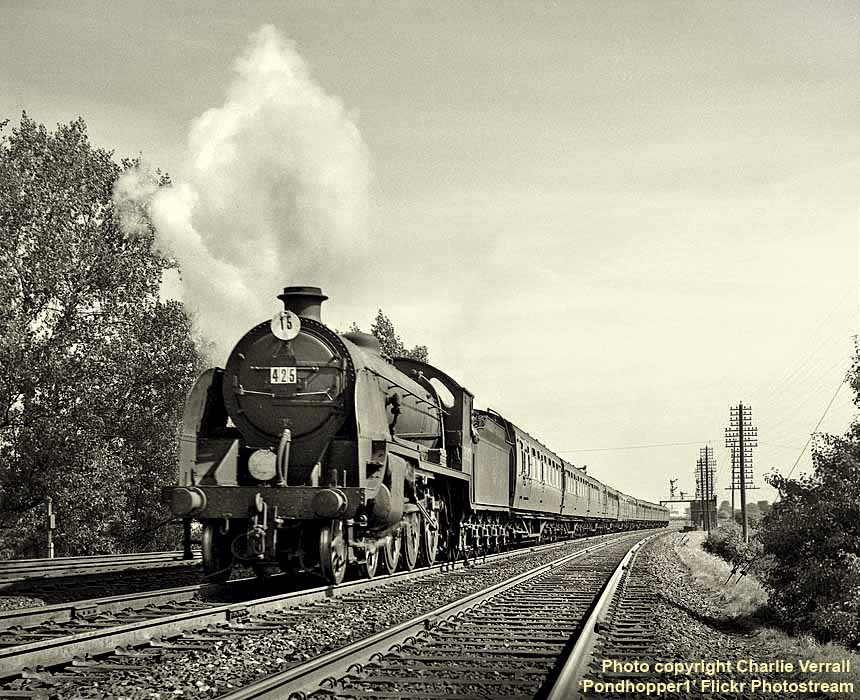
(Above-Below) Urie S15 30512 with the 10.45 Waterloo to the West of England. This was the last Urie S15 in service, lasting until March 1964. (Below) Urie S15 30497 with the 11.54 Waterloo to Salisbury. 30497 was the very first Urie S15; withdrawal came in July 1963.
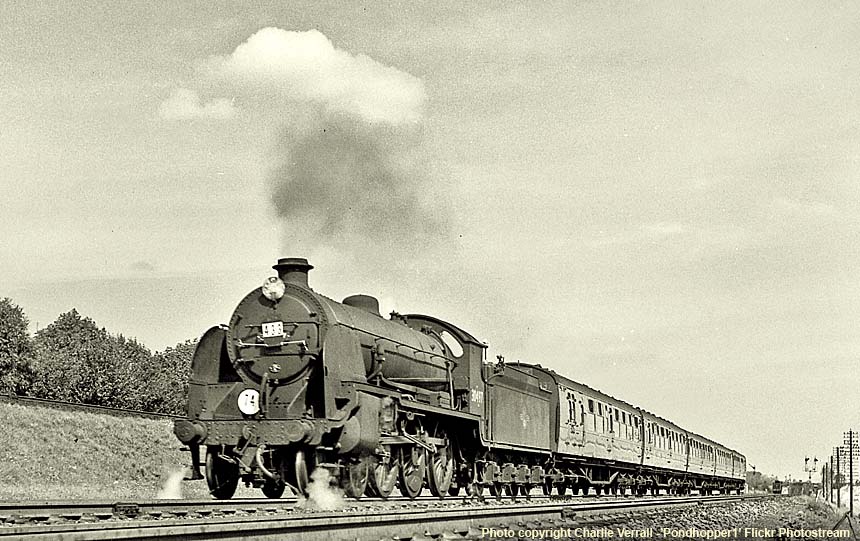

(Above-Below) Maunsell S15 30826 with the 1310 Salisbury to Waterloo. The first Maunsell S15 to be withdrawn, in December 1962. (Below) Battle of Britain class 34081 92 Squadron passing Worting Junction signal box with the 09.30 Exmouth to Waterloo, in the background can be seen Hampshire DEMU 1133 with the 11.53 Reading to Southampton Terminus.
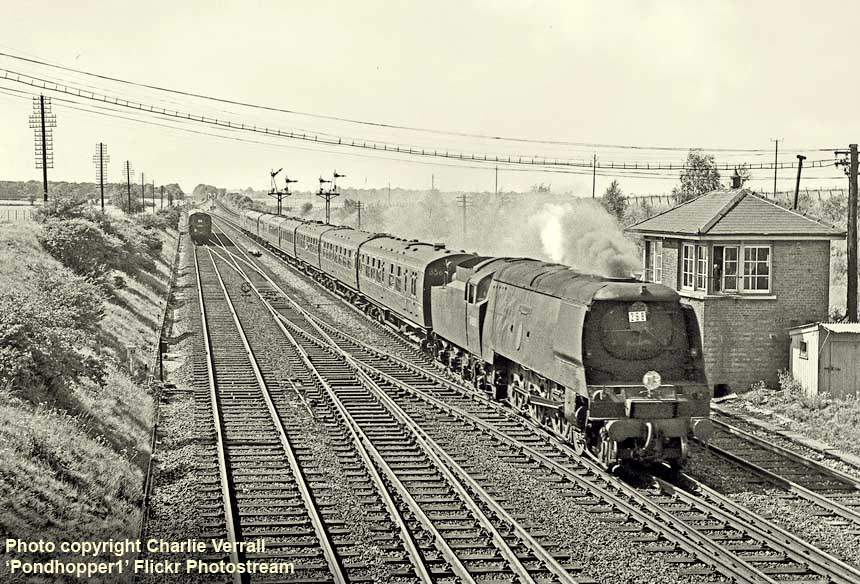
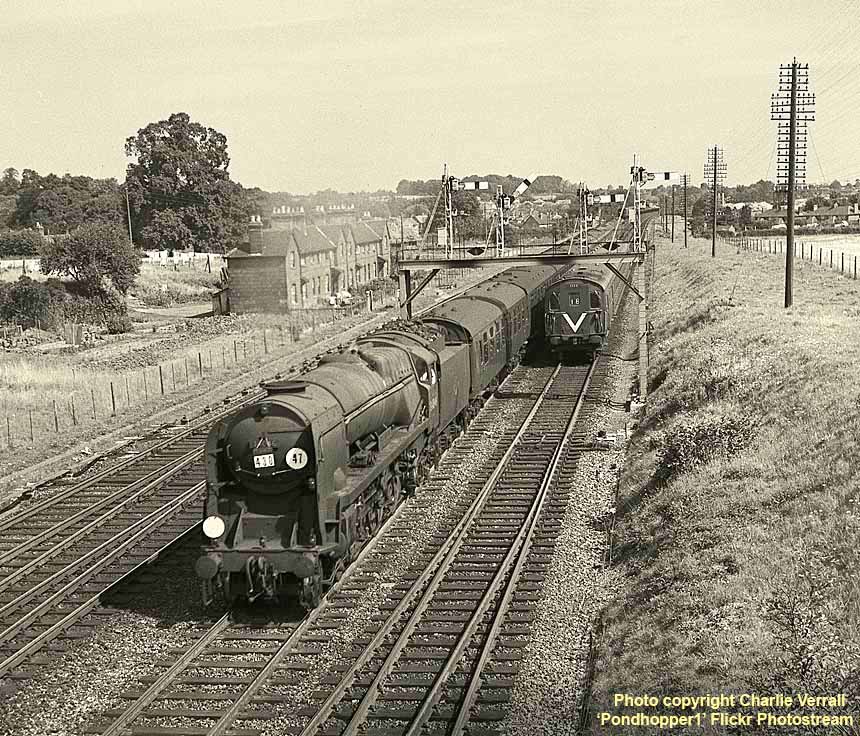
(Above-Below) Rebuilt West Country class 34046 Braunton working the 11.22 Waterloo to Weymouth and Hampshire DEMU 11.33 on the 1151 Reading to Southampton Terminus passing Worting Junction signal box. (Below) Merchant Navy class 35014 Netherland Line with the down 'Atlantic Coast Express'.
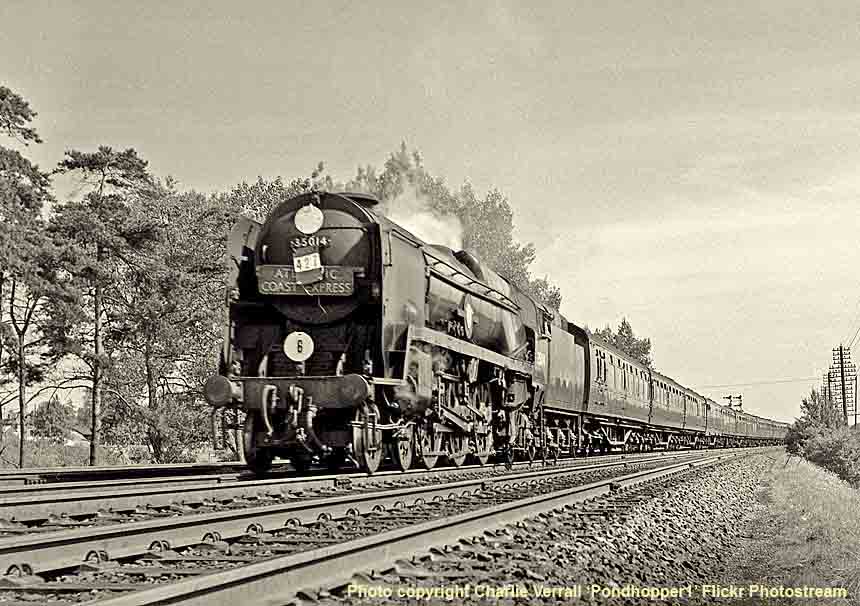
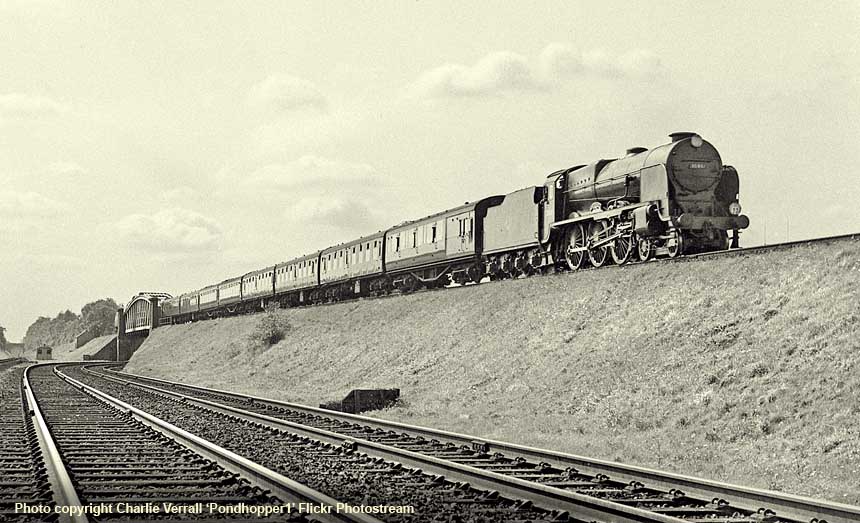
(Above) LN Class 30861 Lord Anson with the 11.51 Southampton Docks to Waterloo. The Nelson was working into London prior to working a rail tour to the West Country as far as Sidmouth Junction on the following day. One of the last two Nelsons in service, the other being 30862. The pair were both withdrawn in October 1962.
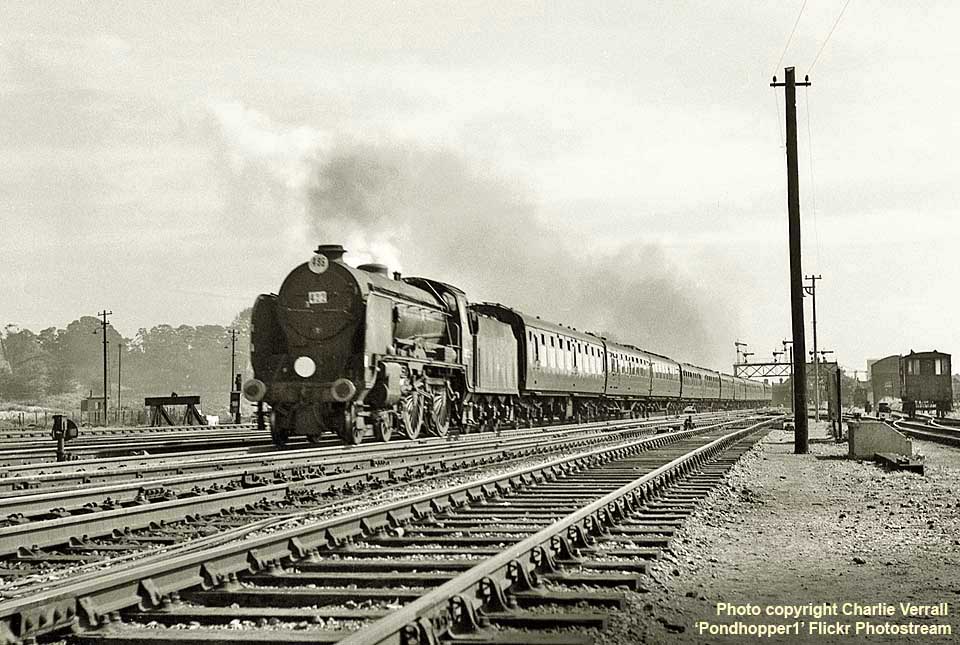
(Above-Below) I have kept this to the end, since to me it was the sight of the day. Schools class 30925 Cheltenham heading the 10.15 Waterloo to the West of England. With a load of 10 coaches 30925 arrived at Exeter three minutes early. The experience on the footplate crossing those points and crossing at some speed must have been exciting to say the least. (Below) The following day I photographed 30925 entering Salisbury with the 08.35 Plymouth to Waterloo which it had taken over at Exeter. Cheltenham is of course still with us, being part of the National Collection.
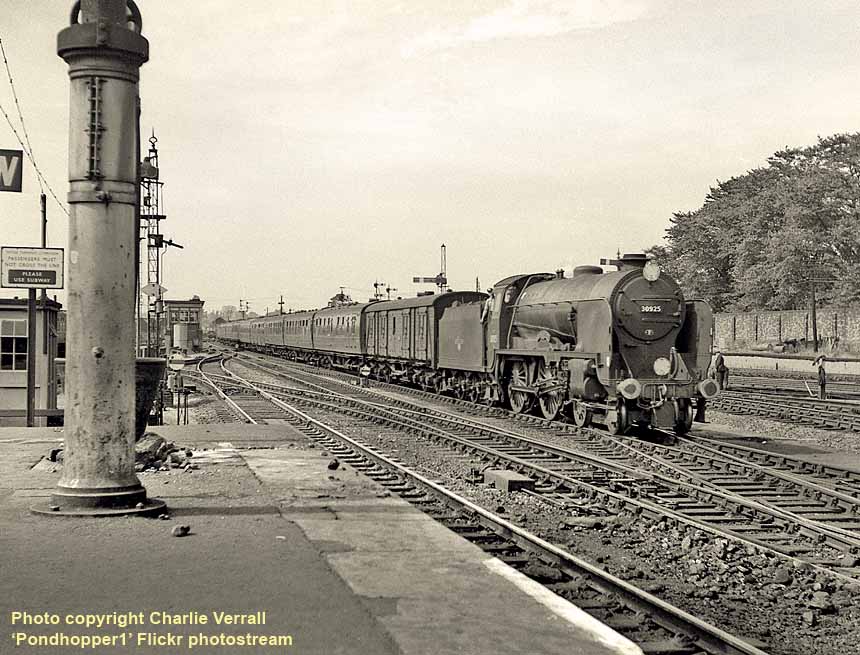
CHAPTER TWO
HOLIDAYS IN DEVON.
The first family holiday I recall was to Sandy Bay, Exmouth, on the lovely south Devon coast in 1948. We travelled down from Waterloo on the 'Atlantic Coast Express' hauled by 35005 Canadian Pacific. The following year we went to Salcombe, Teignmouth and it was there I received a postcard from my friend telling me that an odd-looking 'banana shaped' locomotive had emerged from Brighton works; he was referring, of course, to the Leader Class 0-6-6-0 36001. The postcard was dated June 21st 1949, the day 36001 was first shown to the public.
was referring, of course, to the Leader Class 0-6-6-0 36001. The postcard was dated June 21st 1949, the day 36001 was first shown to the public.
Although the annual holidays were taken during school term, both my sister and I had dispensation not to attend school. My father was a relief porter and his holiday dates were allocated, hence he had no other choice but take them unless he could get an exchange with another member of staff. Still the little gaps in our education had little negative effect on our schooling. Nowadays parents take their children out of school during term because holidays are then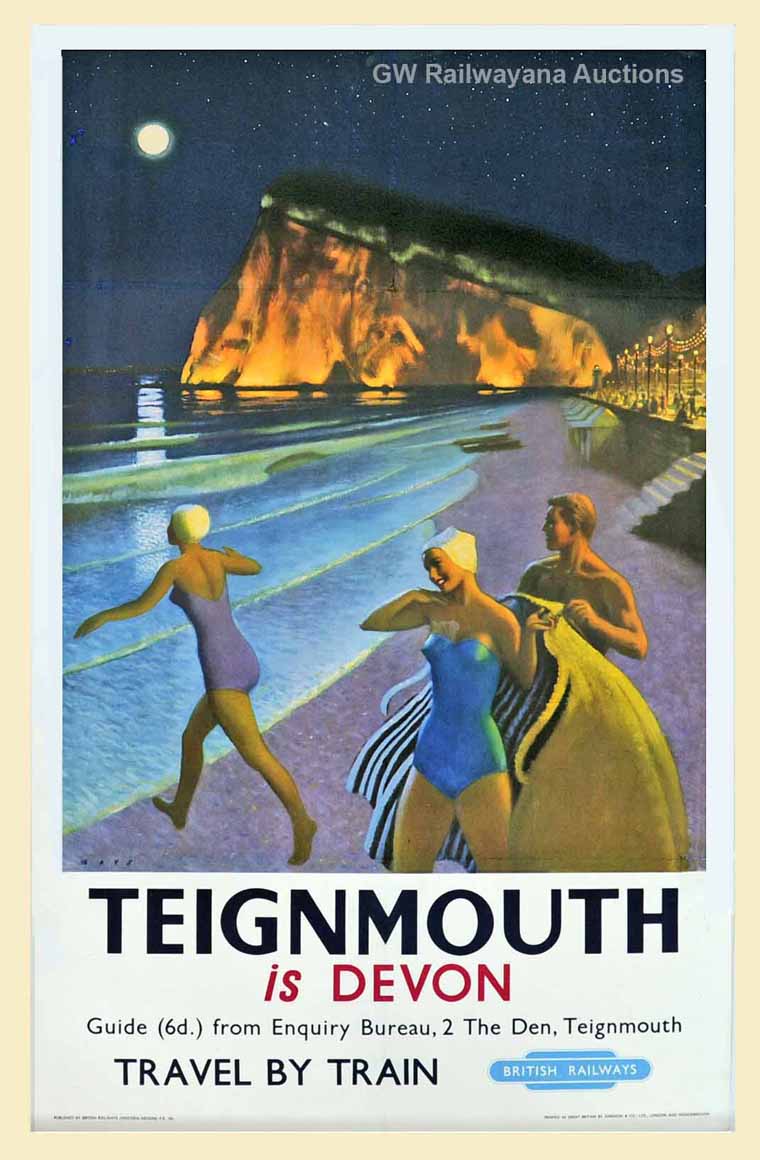 cheaper. We had no choice in the matter; indeed when my Wife harks back to her childhood days during the post-war austerity years, there was never such a thing as a family holiday until she started work and could pay for it herself. In fact the only reason we went to Devon every year was because my father could make use of his annual allocation of free tickets, one of the few real benefits a low paid railway worker received. Even after I joined British Railways we continued holidaying in Teignmouth; my parents were there in September 1953 when I started my National Service training initially at Cardington and then on to West Kirby for 'square bashing'. My father liked Teignmouth and Dawlish so much he holidayed there every year until his death in 1981.
cheaper. We had no choice in the matter; indeed when my Wife harks back to her childhood days during the post-war austerity years, there was never such a thing as a family holiday until she started work and could pay for it herself. In fact the only reason we went to Devon every year was because my father could make use of his annual allocation of free tickets, one of the few real benefits a low paid railway worker received. Even after I joined British Railways we continued holidaying in Teignmouth; my parents were there in September 1953 when I started my National Service training initially at Cardington and then on to West Kirby for 'square bashing'. My father liked Teignmouth and Dawlish so much he holidayed there every year until his death in 1981.
(Right) This double royal size poster 'Teignmouth Is Devon' by Mays went under the hammer at a recent Great Western Railwayana Auction. Published in 1957 by BR Western Region, the artist depicts a nightime beach view of two young ladies and a young man taking a dip by the lights of the promenade.
(Below) The only surviving photographs I have from that period were taken in 1951 and 1952, mostly on the Western Region. The two rail centres I visited most were Newton Abbot and Plymouth North Road, at either end of the torturous South Devon banks of Dainton, Brent and Hemerdon, all requiring assistance on the heaviest trains. This shot at Newton Abbot shows 'King Class' 4-6-0 No 6017 King Edward IV awaiting a Newton Abbot engine to hook on for the journey to Plymouth with the down 'Cornish Riviera Express' on September 7th 1952. No 6017 continued in service until July 1962 but was not cut up until May 1963.
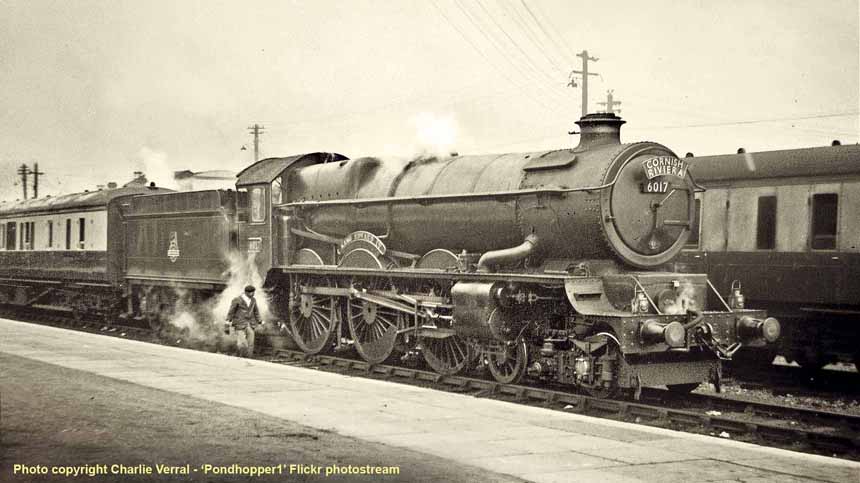

(Above) Two days later I photographed 'Grange' Class 4-6-0 6809 Burghclere Grange arriving at Plymouth North Road with an up freight. The Granges were very much in evidence in South Devon, working both freight and passenger services as well as acting as pilot engines between Plymouth and Newton Abbot. The Granges and small Manor Class 4-6-0s were built as replacements for withdrawn 4300 class 2-6-0s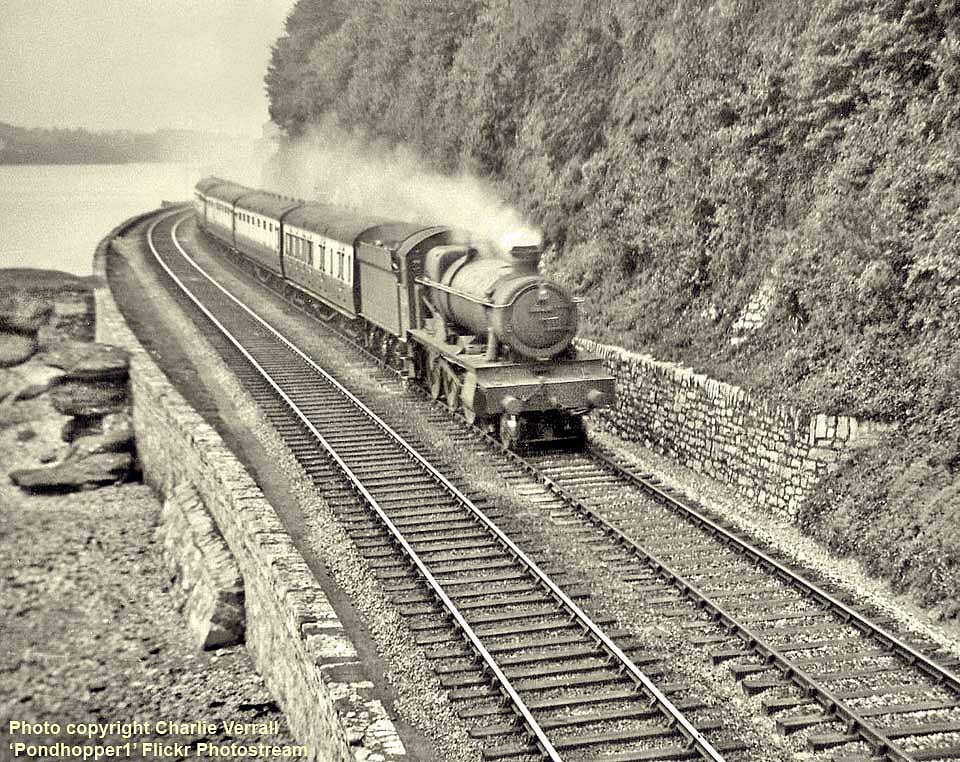 and Incorporated some parts from those locos, including the driving wheels and motion. Built at Swindon in September 1936, No 6809 was withdrawn in July 1963 and scrapped the following month.
and Incorporated some parts from those locos, including the driving wheels and motion. Built at Swindon in September 1936, No 6809 was withdrawn in July 1963 and scrapped the following month.
The stretch of main line along the sea and river walls at Teignmouth have always been favourite spots for photographers. Clearly a box camera was unsuitable for photographing trains at speed, however I did succeed in getting this photograph of Hall Class 4-6-0 No 6937 Beachamwell Hall approaching the road bridge to Shaldon with an up train on September 11th 1952. No 6937 entered service during December 1941 and withdrawal came in October 1965; the locomotive was scrapped the following January.
(Below) Fast forward to September 1957, and Teignmouth was one of the first places I visited after being demobbed from National Service, perhaps making up for the holidays I missed two years before. I had now acquired a Purma Plus camera, and on September 7th 1957 photographed Castle Class 4-6-0 5006 Treganna Castle just east of Teignmouth station with the 10.20 Plymouth to Paddington. 5006 was built at Swindon and entered service during June 1927. Withdrawal took place in April 1964, although it was another year before this loco was broken up.
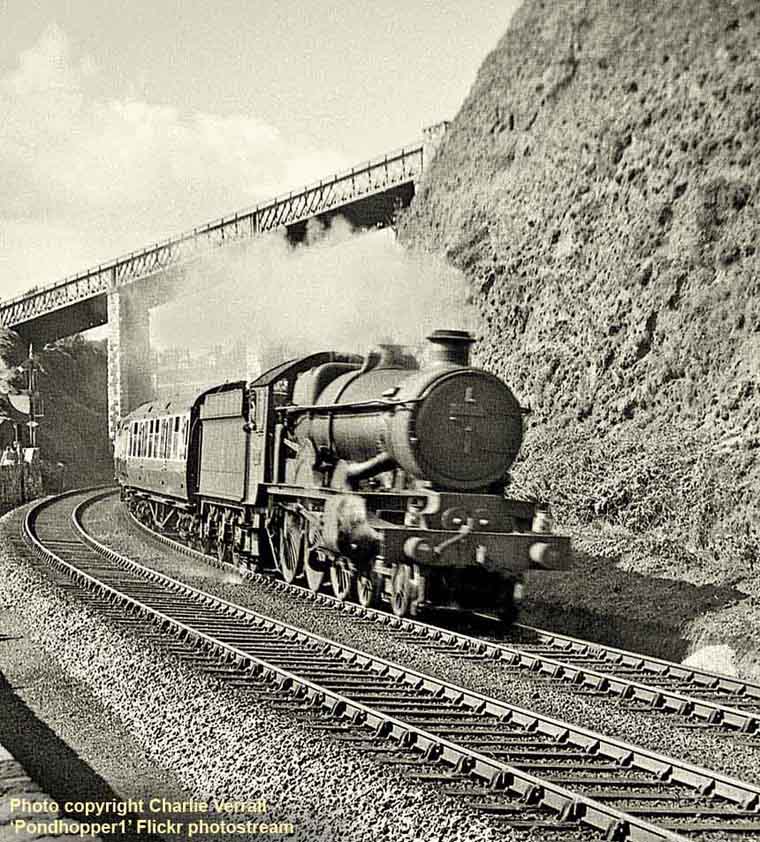
(Above) The following day I saw another Castle, this time No 5085 Evesham Abbey, emerging from Parsons Tunnel with a down extra to Kingswear. No 5085 was rebuilt from an earlier Star Class 4-6-0, namely 4063 Evesham Abbey. As a Star Class. No 5085 was built at Swindon, entering service in December 1922, rebuilding taking place in 1939. 5085 was withdrawn in February 1962.
(Below) Finally on returning to the sea wall at Teignmouth on September 10th I photographed an up freight being worked by 4300 class 2-6-0 5336; one of the class not to become a donor locomotive for the 'Grange' and 'Manor' class 4-6-0s. 5336 was built at Swindon, entering service in December 1917. Withdrawal took place in September 1964.
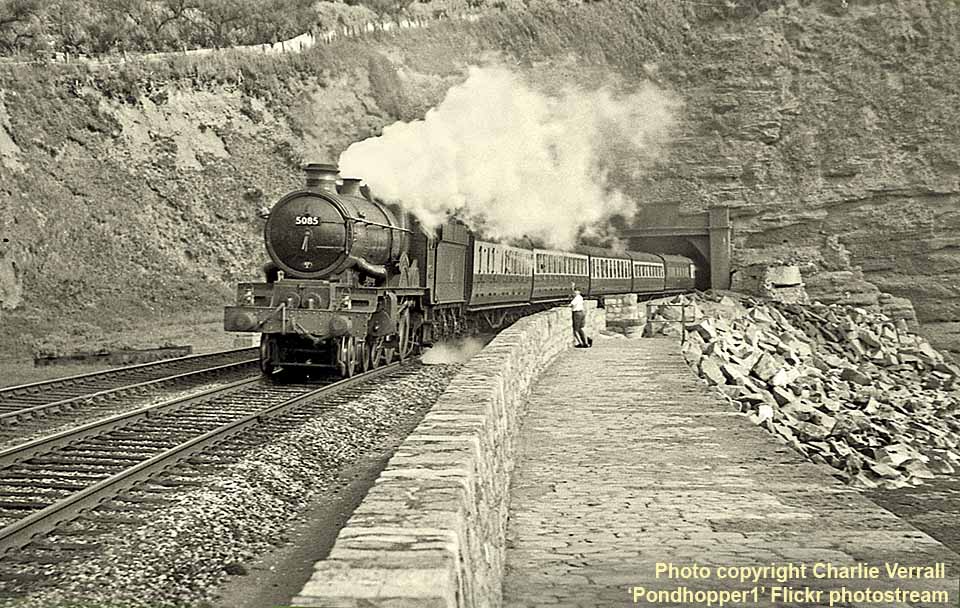
CHAPTER THREE
STARTING WORK.
After my O level exams in 1953 I started work as a junior booking clerk at Hassocks station, this was at the time of the Coronation. This culture shock curtailed my spotting and photographic activities; no more school holidays and Saturdays available. The Station Master at Hassocks would doubtless have taken a dim view of my wandering off during the day with my box camera, and it wasn't until I had reached the District Traffic Superintendants Office at Redhill in 1955 that I had rare opportunities to take anything. By then I had realised the failings of my box camera and had bought another camera, a Purma Plus, which was better but not really ideal. Prior to being called up I had moved into the freight timetable section working alongside the ballast clerk, David Duncan, a 35mm expert who used to photograph in the Gas Works Junction area on Great Northern section. I just wonder what happened to all his images?
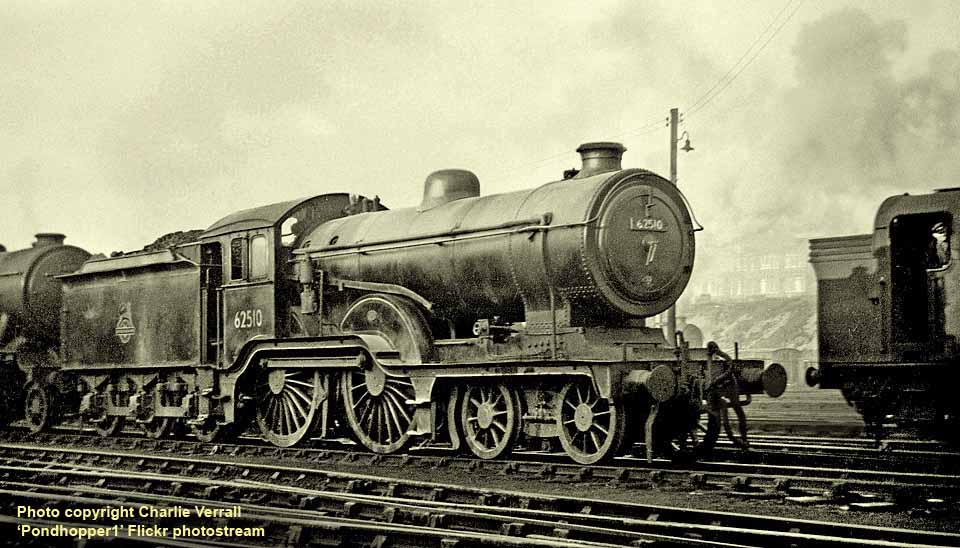
(Above) 1954 was a barren year photographically and only three photographs have survived, each one taken several months apart; all these years later I wonder how many other pictures I had taken and subsequently discarded. However in that year I met Pat Farmer, who was transferred to Redhill at the same time as me; we hit it off straight away and remained good friends right up until his death in 2003. One trip we made was behind an H2 class Atlantic on a football special from Brighton to Norwich via the East London Line. Although we were both Brighton and Hove Albion FC supporters, a prime objective was to visit Norwich Thorpe shed where we found D16/3 class 4-4-0 No 62510. Originally built as a Great Eastern Railway Class D56, the locomotive was reclassified D15 by the LNER. The D56/15s originally had Belpaire boilers and a valance over the coupled wheels. During the 1930s Gresley rebuilt this locomotive with a round top boiler, removed the wheel valances and it became Class D16/3. 62510 was withdrawn in September 1957.

CHAPTER TWO
HOLIDAYS IN DEVON.
The first family holiday I recall was to Sandy Bay, Exmouth, on the lovely south Devon coast in 1948. We travelled down from Waterloo on the 'Atlantic Coast Express' hauled by 35005 Canadian Pacific. The following year we went to Salcombe, Teignmouth and it was there I received a postcard from my friend telling me that an odd-looking 'banana shaped' locomotive had emerged from Brighton works; he
 was referring, of course, to the Leader Class 0-6-6-0 36001. The postcard was dated June 21st 1949, the day 36001 was first shown to the public.
was referring, of course, to the Leader Class 0-6-6-0 36001. The postcard was dated June 21st 1949, the day 36001 was first shown to the public. Although the annual holidays were taken during school term, both my sister and I had dispensation not to attend school. My father was a relief porter and his holiday dates were allocated, hence he had no other choice but take them unless he could get an exchange with another member of staff. Still the little gaps in our education had little negative effect on our schooling. Nowadays parents take their children out of school during term because holidays are then
 cheaper. We had no choice in the matter; indeed when my Wife harks back to her childhood days during the post-war austerity years, there was never such a thing as a family holiday until she started work and could pay for it herself. In fact the only reason we went to Devon every year was because my father could make use of his annual allocation of free tickets, one of the few real benefits a low paid railway worker received. Even after I joined British Railways we continued holidaying in Teignmouth; my parents were there in September 1953 when I started my National Service training initially at Cardington and then on to West Kirby for 'square bashing'. My father liked Teignmouth and Dawlish so much he holidayed there every year until his death in 1981.
cheaper. We had no choice in the matter; indeed when my Wife harks back to her childhood days during the post-war austerity years, there was never such a thing as a family holiday until she started work and could pay for it herself. In fact the only reason we went to Devon every year was because my father could make use of his annual allocation of free tickets, one of the few real benefits a low paid railway worker received. Even after I joined British Railways we continued holidaying in Teignmouth; my parents were there in September 1953 when I started my National Service training initially at Cardington and then on to West Kirby for 'square bashing'. My father liked Teignmouth and Dawlish so much he holidayed there every year until his death in 1981. (Right) This double royal size poster 'Teignmouth Is Devon' by Mays went under the hammer at a recent Great Western Railwayana Auction. Published in 1957 by BR Western Region, the artist depicts a nightime beach view of two young ladies and a young man taking a dip by the lights of the promenade.
(Below) The only surviving photographs I have from that period were taken in 1951 and 1952, mostly on the Western Region. The two rail centres I visited most were Newton Abbot and Plymouth North Road, at either end of the torturous South Devon banks of Dainton, Brent and Hemerdon, all requiring assistance on the heaviest trains. This shot at Newton Abbot shows 'King Class' 4-6-0 No 6017 King Edward IV awaiting a Newton Abbot engine to hook on for the journey to Plymouth with the down 'Cornish Riviera Express' on September 7th 1952. No 6017 continued in service until July 1962 but was not cut up until May 1963.


(Above) Two days later I photographed 'Grange' Class 4-6-0 6809 Burghclere Grange arriving at Plymouth North Road with an up freight. The Granges were very much in evidence in South Devon, working both freight and passenger services as well as acting as pilot engines between Plymouth and Newton Abbot. The Granges and small Manor Class 4-6-0s were built as replacements for withdrawn 4300 class 2-6-0s
 and Incorporated some parts from those locos, including the driving wheels and motion. Built at Swindon in September 1936, No 6809 was withdrawn in July 1963 and scrapped the following month.
and Incorporated some parts from those locos, including the driving wheels and motion. Built at Swindon in September 1936, No 6809 was withdrawn in July 1963 and scrapped the following month. The stretch of main line along the sea and river walls at Teignmouth have always been favourite spots for photographers. Clearly a box camera was unsuitable for photographing trains at speed, however I did succeed in getting this photograph of Hall Class 4-6-0 No 6937 Beachamwell Hall approaching the road bridge to Shaldon with an up train on September 11th 1952. No 6937 entered service during December 1941 and withdrawal came in October 1965; the locomotive was scrapped the following January.
(Below) Fast forward to September 1957, and Teignmouth was one of the first places I visited after being demobbed from National Service, perhaps making up for the holidays I missed two years before. I had now acquired a Purma Plus camera, and on September 7th 1957 photographed Castle Class 4-6-0 5006 Treganna Castle just east of Teignmouth station with the 10.20 Plymouth to Paddington. 5006 was built at Swindon and entered service during June 1927. Withdrawal took place in April 1964, although it was another year before this loco was broken up.

(Above) The following day I saw another Castle, this time No 5085 Evesham Abbey, emerging from Parsons Tunnel with a down extra to Kingswear. No 5085 was rebuilt from an earlier Star Class 4-6-0, namely 4063 Evesham Abbey. As a Star Class. No 5085 was built at Swindon, entering service in December 1922, rebuilding taking place in 1939. 5085 was withdrawn in February 1962.
(Below) Finally on returning to the sea wall at Teignmouth on September 10th I photographed an up freight being worked by 4300 class 2-6-0 5336; one of the class not to become a donor locomotive for the 'Grange' and 'Manor' class 4-6-0s. 5336 was built at Swindon, entering service in December 1917. Withdrawal took place in September 1964.

CHAPTER THREE
STARTING WORK.
After my O level exams in 1953 I started work as a junior booking clerk at Hassocks station, this was at the time of the Coronation. This culture shock curtailed my spotting and photographic activities; no more school holidays and Saturdays available. The Station Master at Hassocks would doubtless have taken a dim view of my wandering off during the day with my box camera, and it wasn't until I had reached the District Traffic Superintendants Office at Redhill in 1955 that I had rare opportunities to take anything. By then I had realised the failings of my box camera and had bought another camera, a Purma Plus, which was better but not really ideal. Prior to being called up I had moved into the freight timetable section working alongside the ballast clerk, David Duncan, a 35mm expert who used to photograph in the Gas Works Junction area on Great Northern section. I just wonder what happened to all his images?

(Above) 1954 was a barren year photographically and only three photographs have survived, each one taken several months apart; all these years later I wonder how many other pictures I had taken and subsequently discarded. However in that year I met Pat Farmer, who was transferred to Redhill at the same time as me; we hit it off straight away and remained good friends right up until his death in 2003. One trip we made was behind an H2 class Atlantic on a football special from Brighton to Norwich via the East London Line. Although we were both Brighton and Hove Albion FC supporters, a prime objective was to visit Norwich Thorpe shed where we found D16/3 class 4-4-0 No 62510. Originally built as a Great Eastern Railway Class D56, the locomotive was reclassified D15 by the LNER. The D56/15s originally had Belpaire boilers and a valance over the coupled wheels. During the 1930s Gresley rebuilt this locomotive with a round top boiler, removed the wheel valances and it became Class D16/3. 62510 was withdrawn in September 1957.
(Inset) Pat and I had at least two other trips in 1955. On April 17 we travelled on the Ian Allan special 'The Lickey Limited' hauled by 'Castle' class 7017 GJ Churchward from Paddington to Bristol Temple Meads, and then to Bourneville where LMS 'Black 5' No 44842 was called on to haul the short trip into Birmingham New 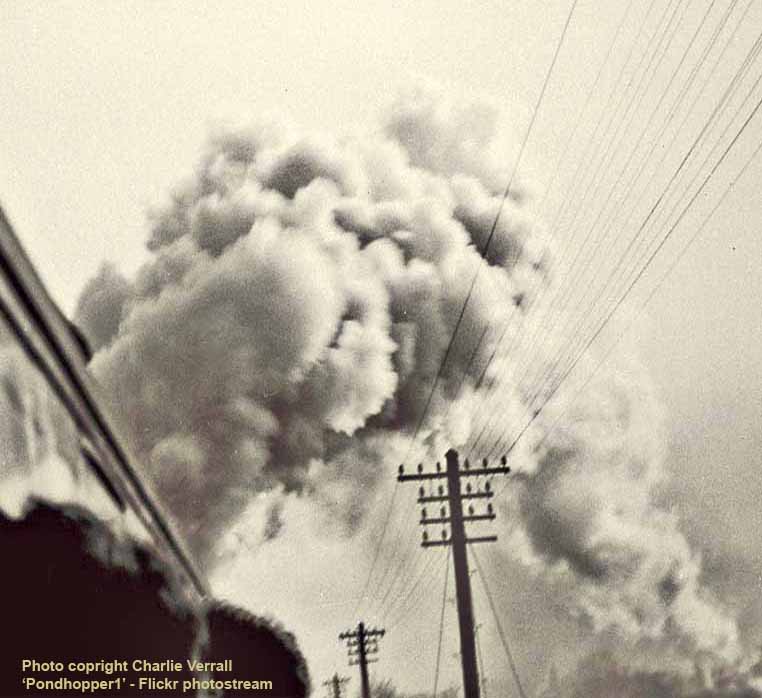 Street due to the Castle being out-of-gauge for that routing. From New Street we returned to Paddington via Banbury behind another 'Castle' No 7007 Great Western. We stopped at Bromsgrove to collect the banking engine, none other than 0-10-0 58100, commonly known as 'Big 'Bertha'. The special had the Coronation Beaver-tail observation car as the rear vehicle, and it was decreed that this vehicle was not suitable to be banked by 58100 and it was expected that a number LMS 'Jinties would be used instead. Pat and I managed to get seats in the observation car for this part of the journey and were surprised to have our view blocked the emergence of this huge locomotive and boiler, 58100 itself. The ride up the incline was dramatic to say the least.
Street due to the Castle being out-of-gauge for that routing. From New Street we returned to Paddington via Banbury behind another 'Castle' No 7007 Great Western. We stopped at Bromsgrove to collect the banking engine, none other than 0-10-0 58100, commonly known as 'Big 'Bertha'. The special had the Coronation Beaver-tail observation car as the rear vehicle, and it was decreed that this vehicle was not suitable to be banked by 58100 and it was expected that a number LMS 'Jinties would be used instead. Pat and I managed to get seats in the observation car for this part of the journey and were surprised to have our view blocked the emergence of this huge locomotive and boiler, 58100 itself. The ride up the incline was dramatic to say the least.
 Street due to the Castle being out-of-gauge for that routing. From New Street we returned to Paddington via Banbury behind another 'Castle' No 7007 Great Western. We stopped at Bromsgrove to collect the banking engine, none other than 0-10-0 58100, commonly known as 'Big 'Bertha'. The special had the Coronation Beaver-tail observation car as the rear vehicle, and it was decreed that this vehicle was not suitable to be banked by 58100 and it was expected that a number LMS 'Jinties would be used instead. Pat and I managed to get seats in the observation car for this part of the journey and were surprised to have our view blocked the emergence of this huge locomotive and boiler, 58100 itself. The ride up the incline was dramatic to say the least.
Street due to the Castle being out-of-gauge for that routing. From New Street we returned to Paddington via Banbury behind another 'Castle' No 7007 Great Western. We stopped at Bromsgrove to collect the banking engine, none other than 0-10-0 58100, commonly known as 'Big 'Bertha'. The special had the Coronation Beaver-tail observation car as the rear vehicle, and it was decreed that this vehicle was not suitable to be banked by 58100 and it was expected that a number LMS 'Jinties would be used instead. Pat and I managed to get seats in the observation car for this part of the journey and were surprised to have our view blocked the emergence of this huge locomotive and boiler, 58100 itself. The ride up the incline was dramatic to say the least.(Below) By the end of June Pat had received his National Service call-up papers, and we thought we would apply for permits to visit Eastleigh Shed and Southampton Docks, which to out surprise we got. We used these permits on July 8th and saw several of the USA 0-6-0 tanks working at the Docks; we did not get a full tour however. Here is 30067 with a selection of dock cranes in the background. 30067 was built at The Vulcan Iron Works, Wilkes-Berr, Pennsylvania USA for the US Army Transportation Corps in 1942 and came to Europe as USA TC 1282. At the end of 1946, the USA Tank plus 13 others were purchased by the Southern Railway and brought to Eastleigh for any necessary repairs and the fitting of standard Southern Railway ejectors etc. Southern Railway 67 was ready for working at Southampton Docks in May 1947, although further modifications were later needed and which lasted until June 1948. No 30067, as it then was, continued to work at Southampton Dock until replaced by a Rushton & Hornsby diesel shunter. 30067 soldiered on until being final withdrawal in September 1967.
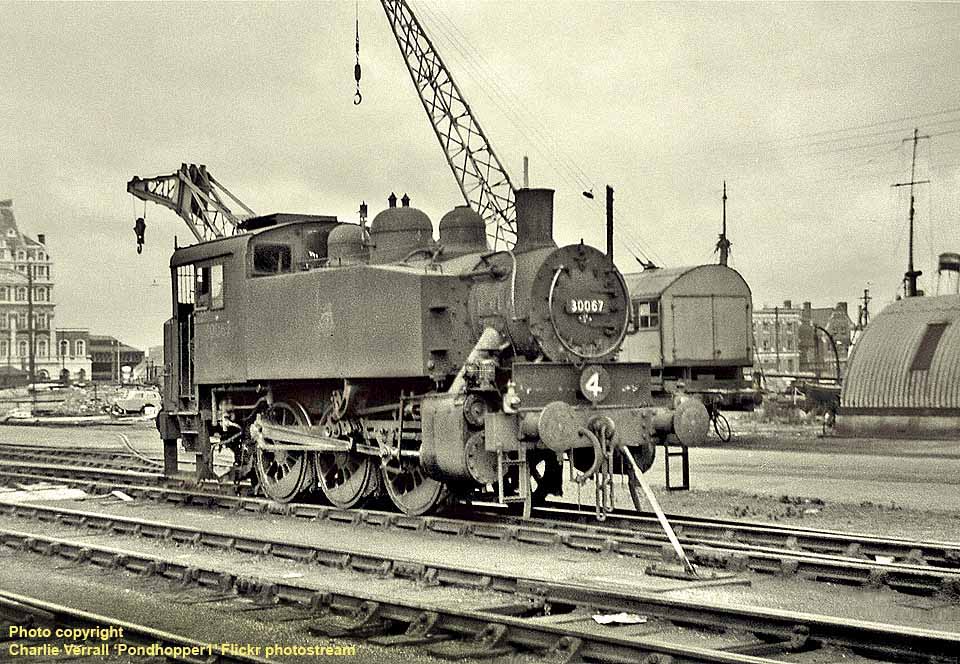
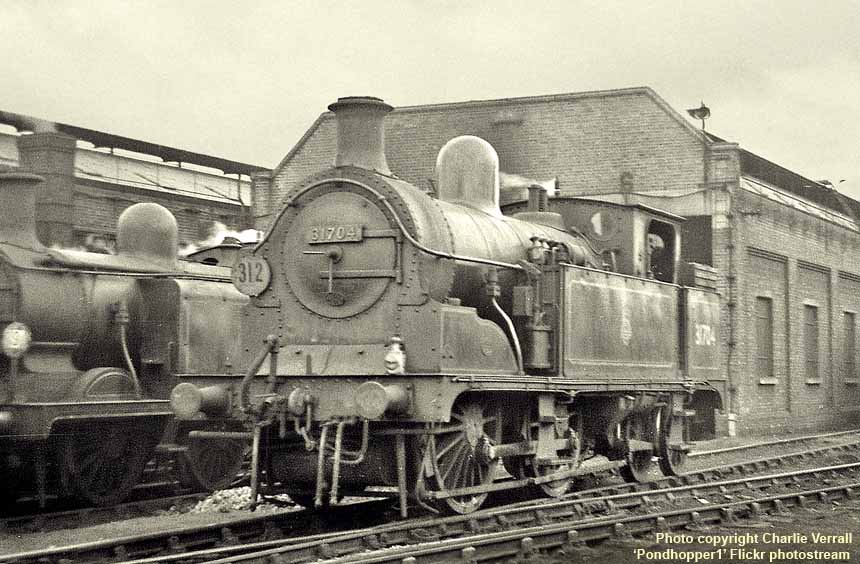
(Above) On July 29th 1955 I made a visit to Tonbridge and Ashford Sheds, this being the last time I used a box camera on a shed visit. As was to expected both sheds were full of ex-South Eastern and Chatham pre-grouping locos, although there were a couple of exceptions at Tonbridge in the form of London Chatham and Dover R1 class 0-4-4 tank 31704 and London Brighton and South Coast Railway C2/X 0-6-0 32438. After the amalgamation of the South Eastern and London Chatham and Dover Railway in 1899, the resultant London and South Eastern Railway had two R classes of locomotives and two R1 classes; this anomaly remaining unchanged right up to the four classes becoming extinct. The SER R class were domeless Stirling 0-6-0 tanks, the R1s being those which had been rebuilt with domed boilers and were a familiar sight as the bankers on the Folkestone Harbour branch until the last 1950s, the last R class being withdrawn during World War II. The LDCR R class locomotives were 0-4-4 tanks, with the last one, No 31665, being withdrawn during 1955. The R1s where a development of the Rs, and went straight into SECR stock and formed the basis for the later SECR H class 0-4-4 tanks. 31704 was built by Sharp Stewart & Co and entered service during November 1900, as with most of the LCDR R1s an H class boiler was later fitted. 31704 was withdrawn in April 1956, the last survivor of this class.

(Above) In August 1892 The London Brighton and South Coast Railway placed an order with the Vulcan Foundry for ten of what would become at total of fifty five Class C2 0-6-0 goods engines, commonly known amongst railwaymen as the 'Vulcans'. By 1908 the loads of the freight services had increased beyond the steaming capacity of the original boilers and as a result it was decided to fit larger boilers of the type employed on the later but less successful C3 class 0-6-0s to the successful C2 class chassis to produce the C2/X class of locomotive. They the became commonly know as 'Large Vulcans' and all but ten of the original locos were so reboilered. After the end of World War I a further 15 of these boilers were manufactured, however these were fitted with L Billington's top feed arrangement housed in a second dome, and it is one of these boilers shown here as carried by 32438. The top feed boilers were treated as pool boilers and eventually all the C2/Xs had at one time had one fitted, as had the most of the C3s and the some of the E5/X and E6/X radial tanks rebuilds. After Ashford became responsible for the classes the top feed was removed and the side-feed was replaced, however the second dome remained. 32438 entered service in April 1900 and became a C2/X on February 1924. Final withdrawal took place in December 1961.
(Below) There is just one other visit which merits a mention before I stopped using the box camera. On May 20th I visited the Isle of Wight and caught a train from Ryde to Newport hauled by O2 class 0-4-4 tank W25 GodshillL, observing W19 Osborne and W23 Totland in store at Ryde. The shed at Newport could be seen from the station, where O2 class 0-6-0Ts W26 Whitwell and W33 Bembridge were present along with E1 class 0-6-0 tank W3 Ryde. W26 was originally the London and South Western Railway's No 210 and came to the Island in June 1926; withdrawal took place in March 1966. No W33 - originally LSWR 217 - arrived on the Island in May 1936 and was withdrawn in December 1966; W3 was originally the London Brighton and South Coast Railway's No 154 Madrid, which joined the island's steam fleet in July 1932 until withdrawal in June 1959.
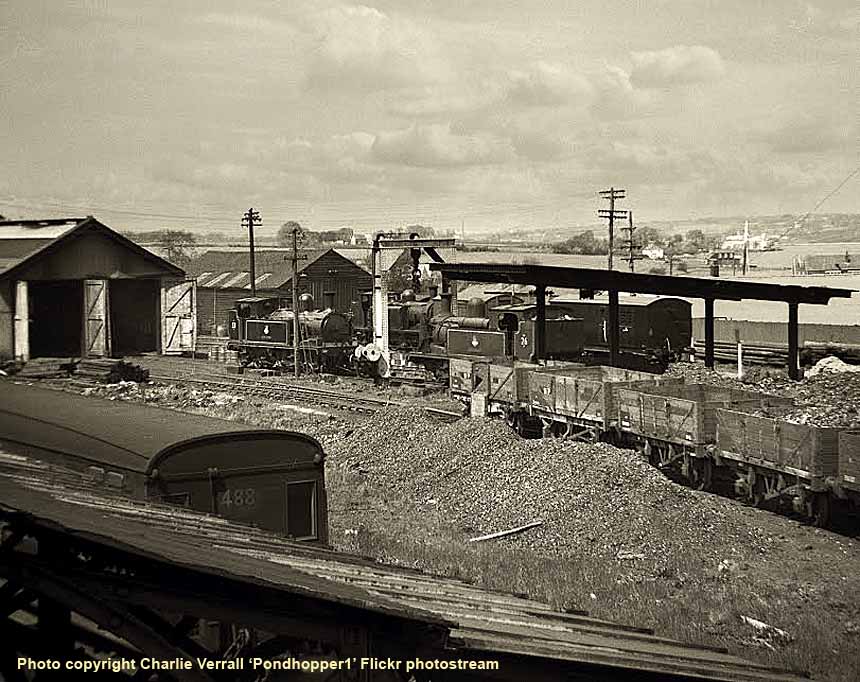

(Above-Below) The Schools class 4-4-0s were still working services to and from Hastings via Tunbridge Wells. Here 30910 Merchant Taylors is leaving with a down service. 30910 was built at Eastleigh and entered service in December 1932, the first of the second batch of the class to built. Withdrawal took place in December 1961 following electrification of the line from Sevenoaks to Dover. (Below) Another School class was 30920 Rugby seen here working an up train from either Folkestone or Dover, the combination of discs indicate either. 30920 emerged from Eastleigh in October 1933 and was another of the engines displaced by electrification, this time in November 1961.
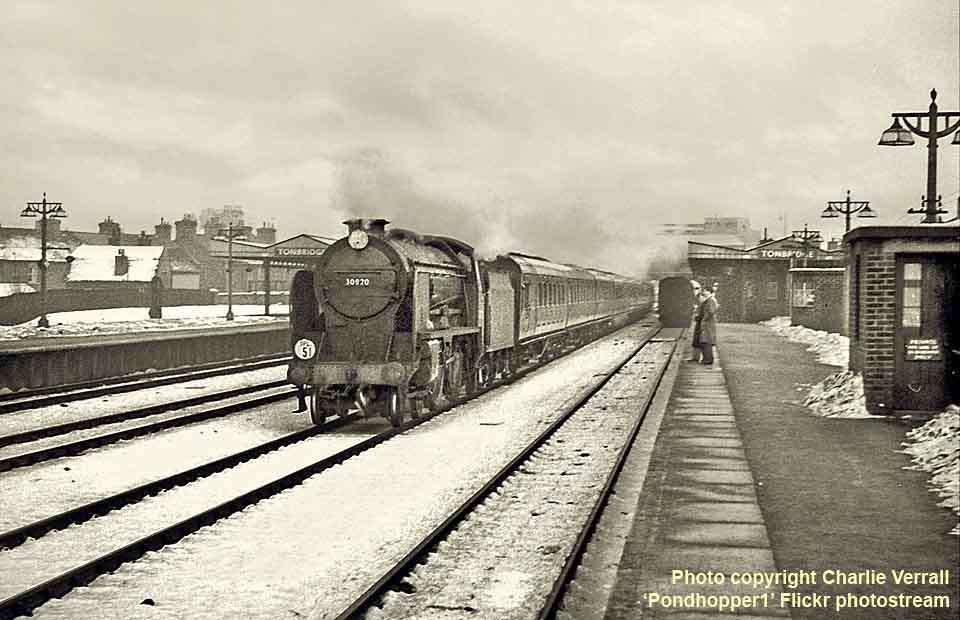
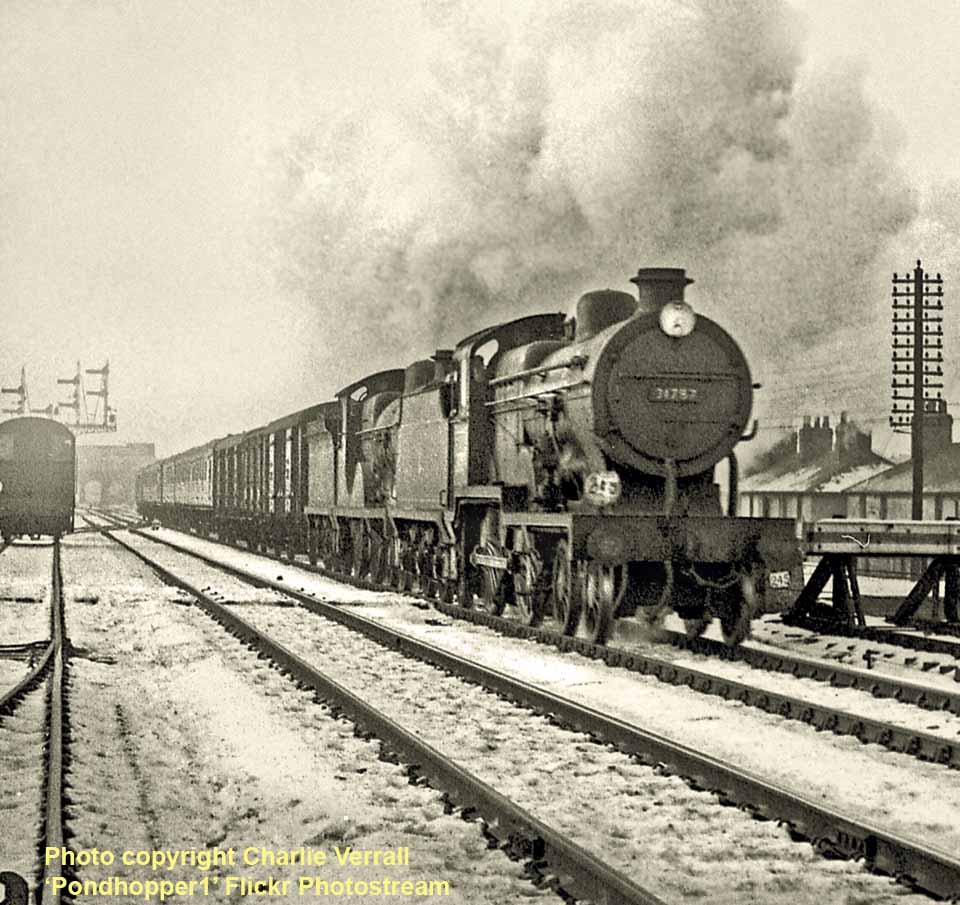
(Above-Below) L1 class 4-4-0 31787 and L class 4-4-0 31781 are seen working what appears to be a down boat train to either Dover of Folkestone. 31781 was one of the Wainwright L class locomotives, the last of his passenger designs. Built by Borsig in Berlin, 31781 entered service July 1914; withdrawal came in June 1959. 31787 was a later Maunsell L1 class locomotive very much based on the design of the L class and D1 and E1 rebuilds. Built by the North British Locomotive Co as A787, this engine entered service in April 1928 and was withdrawn in January 1961. (Below) Many of the Bullied Q1 class 0-6-0s were based at Tonbridge and in this shot 33028 is seen preparing to leave the West yard with a freight working. Built at Brighton and entering service in August 1942 as C28, 33028 was withdrawn in February 1963, the first of the class to go.
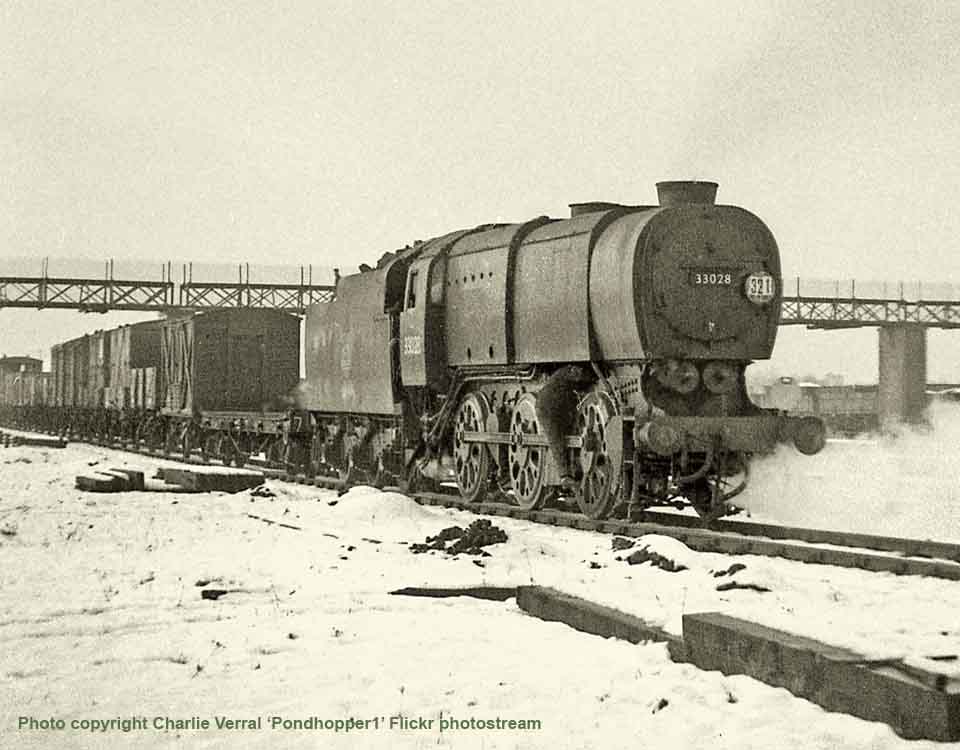
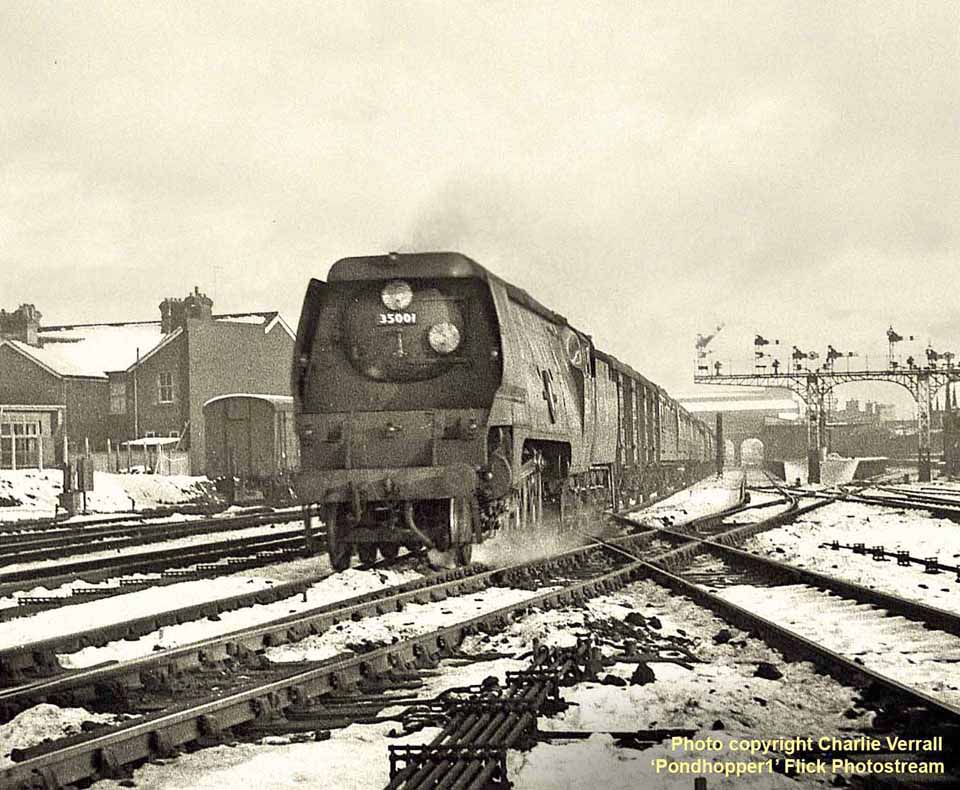
(Above) The Merchant Navy 4-6-2s continued to work express services through Tonbridge until Stage 1 of the Kent Coast Electrification had been completed or they had been called in for rebuilding. 35001 Channel Packet was the penultimate one to be rebuilt, the other being 35028 Clan Line. The first of its class, 35001 is seen here working an up Boat train; the locomotive emerged from Eastleigh Works in March 1941, rebuilt in August 1959 and withdrawn in November 1964 with a total mileage of 1.09,884.
Bob Dylan famously wrote 'The times they are a changing' and this most certainly was the case when I made this visit to a slightly overcast snowy Tonbridge. The class 201 six coach DEMUs, 'Thumpers', were coming into use on the Hastings services and electrification was just around the corner. Here is a selection of what I saw that day, incidentally this was the last time I made use of my Purma Plus camera. More photographs taken with this camera are contained in the next chapter.
CHAPTER FOUR
THE PURMA PLUS YEARS 1955-1961
It must have been my disappointing reconnaissances with a box camera to Ashford and Tonbridge on July 28th 1955 that I decided enough was enough and a replacement camera was desperately needed, but why I chose the Purma Plus camera is now lost in the mists of time. Perhaps it was cheap and available? What I am sure of is that I should have sought expert advice first. It had a small fixed focus and fixed aperture lens, a tiny viewfinder and used 127 roll film giving square negatives with a total area about the same size as a 35mm camera. There were three shutter speeds - 1/25th, 1/150th and 1/450th sec - depending how the camera was held on the horizontal axis. A bit of a pig's ear, but then as a camera virgin I knew no better - and needless to say the first photographs were a disaster!
chose the Purma Plus camera is now lost in the mists of time. Perhaps it was cheap and available? What I am sure of is that I should have sought expert advice first. It had a small fixed focus and fixed aperture lens, a tiny viewfinder and used 127 roll film giving square negatives with a total area about the same size as a 35mm camera. There were three shutter speeds - 1/25th, 1/150th and 1/450th sec - depending how the camera was held on the horizontal axis. A bit of a pig's ear, but then as a camera virgin I knew no better - and needless to say the first photographs were a disaster!
Knowing that trains move fast I used a fast film, Kodak Super XX. Wrong! The images were grainy - or in modern digital parlance full of 'noise' - and certainly barely viewable; indeed even with modern digital processing it is difficult to get an image to be proud of. I then tried Ilford HP3 with much the same results. Then I took advice and tried Ilford FP3. The results were much better as can be seen in this photograph of Brighton Works (inset right below) taken on September 1st 1955.
 After the Brighton shot I caught the 8.48am train to Tunbridge Wells West, hauled by Standard class 4MT 2-6-4 tank 80031 and during the walk back towards Eridge I photographed a Brighton to Tonbridge train being worked by L class 4-4-0 No 31765. The L class was the last of three 4-4-0 classes designed by HS Wainright for the South Eastern and Chatham Railway (SE&CR). Before construction commenced, Maunsell made a number of modifications and an order for twenty one superheated engines were placed, eleven with Beyer Peacock followed by ten with Borsig of Berlin. An interesting fact is that the German engines were cheaper and delivered on time, even during the first year of World War One, whereas the Beyer Peacock engines cost more and were late. There must be a moral there somewhere!
After the Brighton shot I caught the 8.48am train to Tunbridge Wells West, hauled by Standard class 4MT 2-6-4 tank 80031 and during the walk back towards Eridge I photographed a Brighton to Tonbridge train being worked by L class 4-4-0 No 31765. The L class was the last of three 4-4-0 classes designed by HS Wainright for the South Eastern and Chatham Railway (SE&CR). Before construction commenced, Maunsell made a number of modifications and an order for twenty one superheated engines were placed, eleven with Beyer Peacock followed by ten with Borsig of Berlin. An interesting fact is that the German engines were cheaper and delivered on time, even during the first year of World War One, whereas the Beyer Peacock engines cost more and were late. There must be a moral there somewhere!
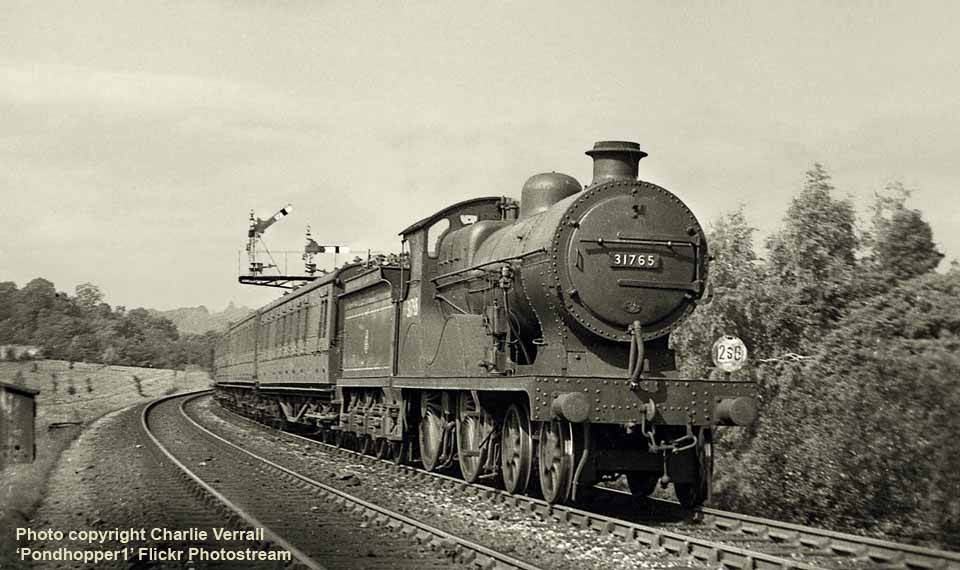
(Above) On September 1st 1955 a Brighton to Tonbridge train is hauled by L Class 4-4-0 No 31765, a Beyer Peacock-built locomotive delivered in August 1914. Other than changes to the superheaters, these attractive engines were largely unaltered throughout their lives. 31765 was withdrawn in February 1961 and broken up at Ashford.
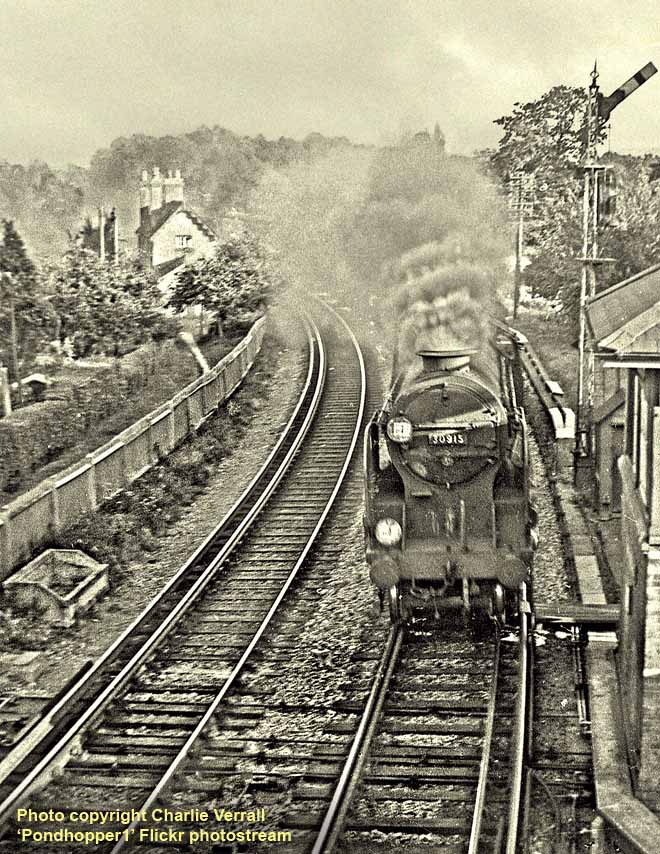 (Inset) The first week in September 1955 was a busy one for me, I was waiting to start National Service in the Royal Air Force. After returning from Tunbridge Wells I captured School Class 4-4-0 30915 Brighton passing Keymer Junction signal box in the evening sun with 17.41 Newhaven Harbour to Victoria Boat Train. Bullied's use of Lemaitre blast pipes made little change to the already outstanding performance of the Schools class, and certainly did nothing for their looks. 30915 was built at Eastleigh and entered ervice in May 1933, the Lematre blast pipe being fitted in October 1940. This Schools loco was a victim of the December 1962 massacre of many ex-Southern locomotives. At the time this photo was taken the Schools were, along with the three electric locos 20001-3, the mainstay of the Newhaven Boat Train services. It is possible a near neighbour of mine, Don Richardson, may have been the signalman on duty. While my parents and sister were on holiday in Devon I stayed with an uncle who lived near to Bromley until I had to report for National Service.
(Inset) The first week in September 1955 was a busy one for me, I was waiting to start National Service in the Royal Air Force. After returning from Tunbridge Wells I captured School Class 4-4-0 30915 Brighton passing Keymer Junction signal box in the evening sun with 17.41 Newhaven Harbour to Victoria Boat Train. Bullied's use of Lemaitre blast pipes made little change to the already outstanding performance of the Schools class, and certainly did nothing for their looks. 30915 was built at Eastleigh and entered ervice in May 1933, the Lematre blast pipe being fitted in October 1940. This Schools loco was a victim of the December 1962 massacre of many ex-Southern locomotives. At the time this photo was taken the Schools were, along with the three electric locos 20001-3, the mainstay of the Newhaven Boat Train services. It is possible a near neighbour of mine, Don Richardson, may have been the signalman on duty. While my parents and sister were on holiday in Devon I stayed with an uncle who lived near to Bromley until I had to report for National Service.
(Below) Whilst waiting at London Bridge Eastern Station on September 3rd I photographed Schools Class 4-4-0 30934 St Lawrence working a down train. This being the last weekend of the summer of 1955 there were many extra trains running, hence the reporting number tied to the smokebox door. St Lawrence was one of last Schools class locos to be built, emerging from Eastleigh works during March 1935 and receiving a Lemaitre blast pipe in May 1940. After nationalisation of British Railways in 1948 30934 ran for a time with the temporary 'S' prefix to the Southern number. 30934 was another victim of the December 1962 massacre.

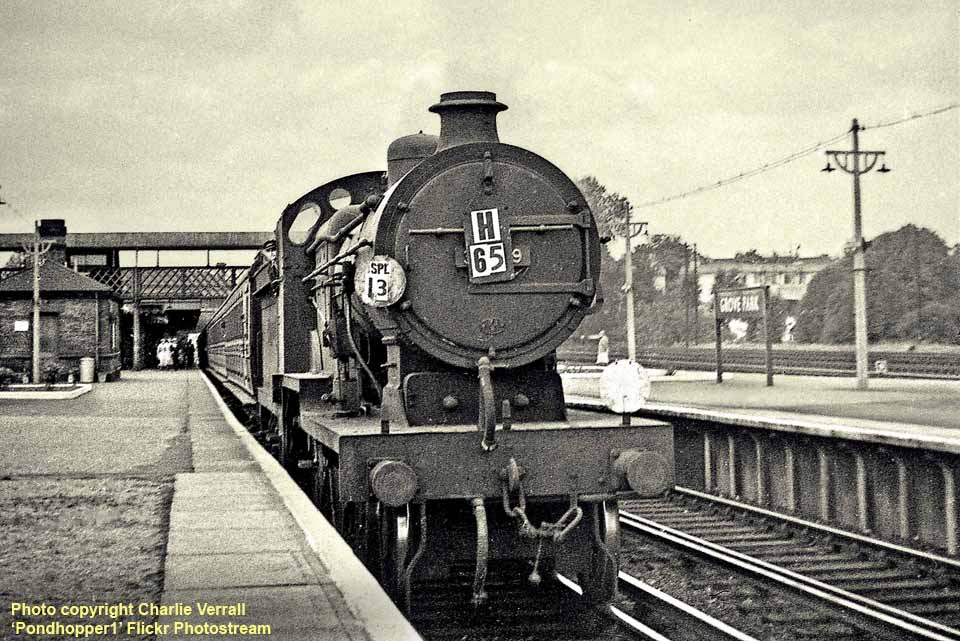
(Above) The nearest station to my uncle's house was Grove Park, and on the same day I saw D1 class 4-4-0 31739 heading a down Hop-Pickers special. Until recent years many Londoners used to spend their holidays picking hops in the Kent hop fields and it was necessary to run extra trains for this purpose. 31739 was originally a Wainright South Eastern and Chatham Railway D class 4-4-0 built at Ashford Works in 1902. In 1919 Maunsell obtained permission to rebuild twenty of these with superheated boilers and piston valves, similar to the earlier rebuilding of eleven of the Wainwight E class 4-4-0. Ashford was unable to undertake the rebuilding so the the locomotive were despatched without tenders to Beyer, Peacock and Co for the work to be carried out. The Southern Railway's E739, as 31739 then was, returned in its rebuilt form in April 1927. No 31739 was one of the last E1s and together with Q1 class 0-6-0 33039 worked the final Hawkhurst Branch passenger services on October 28th 1961. Final withdrawn took place on November 11th 1961, having achieved the highest mileage of any Wainright 4-4-0 (2,002,974 miles).
(Below) The next Monday I was at St Pancras catching a train to Bedford and on to Cardington to start my two years National Service. After being posted to West Kirby in The Wirral for my basic training (aka Square Bashing) I didn't expect to take many photographs for a while. However I was back home on a 48 hour pass on October 14th 1955, and photographed one of the Southern Railway electric locomotives, 20002, working the 9.35am Victoria to Newhaven Harbour boat train at Wivensfield.
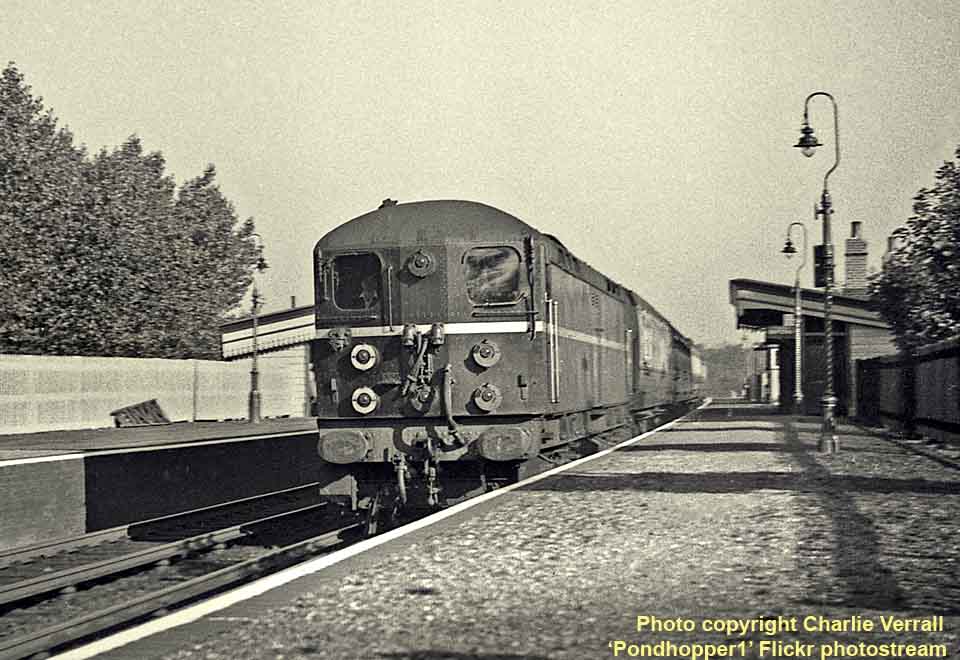
CHAPTER FOUR
THE PURMA PLUS YEARS 1955-1961
It must have been my disappointing reconnaissances with a box camera to Ashford and Tonbridge on July 28th 1955 that I decided enough was enough and a replacement camera was desperately needed, but why I
 chose the Purma Plus camera is now lost in the mists of time. Perhaps it was cheap and available? What I am sure of is that I should have sought expert advice first. It had a small fixed focus and fixed aperture lens, a tiny viewfinder and used 127 roll film giving square negatives with a total area about the same size as a 35mm camera. There were three shutter speeds - 1/25th, 1/150th and 1/450th sec - depending how the camera was held on the horizontal axis. A bit of a pig's ear, but then as a camera virgin I knew no better - and needless to say the first photographs were a disaster!
chose the Purma Plus camera is now lost in the mists of time. Perhaps it was cheap and available? What I am sure of is that I should have sought expert advice first. It had a small fixed focus and fixed aperture lens, a tiny viewfinder and used 127 roll film giving square negatives with a total area about the same size as a 35mm camera. There were three shutter speeds - 1/25th, 1/150th and 1/450th sec - depending how the camera was held on the horizontal axis. A bit of a pig's ear, but then as a camera virgin I knew no better - and needless to say the first photographs were a disaster! Knowing that trains move fast I used a fast film, Kodak Super XX. Wrong! The images were grainy - or in modern digital parlance full of 'noise' - and certainly barely viewable; indeed even with modern digital processing it is difficult to get an image to be proud of. I then tried Ilford HP3 with much the same results. Then I took advice and tried Ilford FP3. The results were much better as can be seen in this photograph of Brighton Works (inset right below) taken on September 1st 1955.
 After the Brighton shot I caught the 8.48am train to Tunbridge Wells West, hauled by Standard class 4MT 2-6-4 tank 80031 and during the walk back towards Eridge I photographed a Brighton to Tonbridge train being worked by L class 4-4-0 No 31765. The L class was the last of three 4-4-0 classes designed by HS Wainright for the South Eastern and Chatham Railway (SE&CR). Before construction commenced, Maunsell made a number of modifications and an order for twenty one superheated engines were placed, eleven with Beyer Peacock followed by ten with Borsig of Berlin. An interesting fact is that the German engines were cheaper and delivered on time, even during the first year of World War One, whereas the Beyer Peacock engines cost more and were late. There must be a moral there somewhere!
After the Brighton shot I caught the 8.48am train to Tunbridge Wells West, hauled by Standard class 4MT 2-6-4 tank 80031 and during the walk back towards Eridge I photographed a Brighton to Tonbridge train being worked by L class 4-4-0 No 31765. The L class was the last of three 4-4-0 classes designed by HS Wainright for the South Eastern and Chatham Railway (SE&CR). Before construction commenced, Maunsell made a number of modifications and an order for twenty one superheated engines were placed, eleven with Beyer Peacock followed by ten with Borsig of Berlin. An interesting fact is that the German engines were cheaper and delivered on time, even during the first year of World War One, whereas the Beyer Peacock engines cost more and were late. There must be a moral there somewhere! 
(Above) On September 1st 1955 a Brighton to Tonbridge train is hauled by L Class 4-4-0 No 31765, a Beyer Peacock-built locomotive delivered in August 1914. Other than changes to the superheaters, these attractive engines were largely unaltered throughout their lives. 31765 was withdrawn in February 1961 and broken up at Ashford.
 (Inset) The first week in September 1955 was a busy one for me, I was waiting to start National Service in the Royal Air Force. After returning from Tunbridge Wells I captured School Class 4-4-0 30915 Brighton passing Keymer Junction signal box in the evening sun with 17.41 Newhaven Harbour to Victoria Boat Train. Bullied's use of Lemaitre blast pipes made little change to the already outstanding performance of the Schools class, and certainly did nothing for their looks. 30915 was built at Eastleigh and entered ervice in May 1933, the Lematre blast pipe being fitted in October 1940. This Schools loco was a victim of the December 1962 massacre of many ex-Southern locomotives. At the time this photo was taken the Schools were, along with the three electric locos 20001-3, the mainstay of the Newhaven Boat Train services. It is possible a near neighbour of mine, Don Richardson, may have been the signalman on duty. While my parents and sister were on holiday in Devon I stayed with an uncle who lived near to Bromley until I had to report for National Service.
(Inset) The first week in September 1955 was a busy one for me, I was waiting to start National Service in the Royal Air Force. After returning from Tunbridge Wells I captured School Class 4-4-0 30915 Brighton passing Keymer Junction signal box in the evening sun with 17.41 Newhaven Harbour to Victoria Boat Train. Bullied's use of Lemaitre blast pipes made little change to the already outstanding performance of the Schools class, and certainly did nothing for their looks. 30915 was built at Eastleigh and entered ervice in May 1933, the Lematre blast pipe being fitted in October 1940. This Schools loco was a victim of the December 1962 massacre of many ex-Southern locomotives. At the time this photo was taken the Schools were, along with the three electric locos 20001-3, the mainstay of the Newhaven Boat Train services. It is possible a near neighbour of mine, Don Richardson, may have been the signalman on duty. While my parents and sister were on holiday in Devon I stayed with an uncle who lived near to Bromley until I had to report for National Service. (Below) Whilst waiting at London Bridge Eastern Station on September 3rd I photographed Schools Class 4-4-0 30934 St Lawrence working a down train. This being the last weekend of the summer of 1955 there were many extra trains running, hence the reporting number tied to the smokebox door. St Lawrence was one of last Schools class locos to be built, emerging from Eastleigh works during March 1935 and receiving a Lemaitre blast pipe in May 1940. After nationalisation of British Railways in 1948 30934 ran for a time with the temporary 'S' prefix to the Southern number. 30934 was another victim of the December 1962 massacre.


(Above) The nearest station to my uncle's house was Grove Park, and on the same day I saw D1 class 4-4-0 31739 heading a down Hop-Pickers special. Until recent years many Londoners used to spend their holidays picking hops in the Kent hop fields and it was necessary to run extra trains for this purpose. 31739 was originally a Wainright South Eastern and Chatham Railway D class 4-4-0 built at Ashford Works in 1902. In 1919 Maunsell obtained permission to rebuild twenty of these with superheated boilers and piston valves, similar to the earlier rebuilding of eleven of the Wainwight E class 4-4-0. Ashford was unable to undertake the rebuilding so the the locomotive were despatched without tenders to Beyer, Peacock and Co for the work to be carried out. The Southern Railway's E739, as 31739 then was, returned in its rebuilt form in April 1927. No 31739 was one of the last E1s and together with Q1 class 0-6-0 33039 worked the final Hawkhurst Branch passenger services on October 28th 1961. Final withdrawn took place on November 11th 1961, having achieved the highest mileage of any Wainright 4-4-0 (2,002,974 miles).
(Below) The next Monday I was at St Pancras catching a train to Bedford and on to Cardington to start my two years National Service. After being posted to West Kirby in The Wirral for my basic training (aka Square Bashing) I didn't expect to take many photographs for a while. However I was back home on a 48 hour pass on October 14th 1955, and photographed one of the Southern Railway electric locomotives, 20002, working the 9.35am Victoria to Newhaven Harbour boat train at Wivensfield.

The three Southern electric locos Nos 20001, 20002 and 20003 were great favourites of mine, although I had not previously managed to get a decent photograph of them. Know locally as the 'Hornbies', they worked not only the Newhaven boat services but mainline freight and parcels trains. There were two diagrams, with one loco kept as spare. One diagram left the loco available at Chichester during the daytime and if there was a midweek stone hopper train from Meldon Quarry to Three Bridges the Hornby would invariably be used. If there was a Friday hopper train a steam loco, usually an Exmouth Junction N class 2-6-0, would work through to Three Bridges to provide an additional engine available for use in engineers specials. 20002 was built at Ashford and entered service as CC2 in September 1945. Withdrawal took place in December 1968 and 20002 was stored in Brighton Top Yard until August 1969 when it was towed, possibly together with sister loco 20001, to Cashmore's of Newport for scrapping during September.
The third loco, 20003, was withdrawn in October 1968 and stored with the other two until going to Cohen's Kettering for scrapping in October 1969. Rather like the early mainline diesels I would have thought one of these three would have been worthly for inclusion in the National Collection, especially since CC1 - the future 20001 - did sterling work during World War II after leaving Ashford Works in July 1941. In either 1964 or 1965 I had a cab ride on one of the three from Hove to London Bridge whilst working a parcels train. I found the cab quite cramped with just enough room for three of us, the driver, the motive power inspector and myself; the second man was miffed at having to travel in the rear cab.

(Above) I was back home again on November 11th 1955, this time on a 48 hour pass between completing basic training and reporting to duty at RAF Worth Matravers, near Swanage, as a trainee Radar Operator (Gee). Gee was where signals from two radar stations were interlocked on to a bomber's target.
On that day I travelled on a race day special from Haywards Heath to Lingfield via Horsted Keynes and what is now the Northern Extension to the Bluebell Railway. As was usual several extra services were provided including U1 class 2-6-0 31907, seen here entering Lingfield with the 11.30 from Victoria. Ashford works built the Southern Railway's E890 River Frome, a three cylinder K1 class 2-6-4 tank in December 1925. However partly because of the poor standard of the ex-SECR track, E890 and the similar K class two cylinder 2-6-0s were subject to several derailments which cumulated with the derailment on August 21st 1928 of K class E800 River Cray at Sevenoaks with a loss 17 lives. A series of tests between Walton and Woking and between Huntingdon and St Neots on the LNER revealed that although the tests on the LNER lines revealed no real adverse riding problems, those on the South Western indicated hunting and rolling issues more than likely caused by the permanent way. As a result, all of the large 2-6-4 tanks were withdrawn and rebuilt as 2-6-0 tender engines, becoming classes U and U1 respectively. E890 entered Ashford Works on April 10th 1928, returning to traffic as a 2-6-0 on June 7th 1928, no longer being named. The success of this rebuilding resulted in the construction at Eastleigh of a further twenty similar locomotives numbered E891 to A900 and 1901 to 1910. E890 was originally fitted with Holcroft's derived vale gear on the middle cylinder, which was removed in early 1932, the other twenty were delivered with standard Walschaerts valve gear on all three cylinders. The U1s, or as with the U class engines, commonly called the 'U Boats', continued in service until 1962 and 1963, 31890 being one of the last to be withdrawn in June 1963 with a mileage of 1,026,346.
(Below) Also seen at Lingfield was BR Standard Class 4MT 2-6-4 tank 80031 on a Victoria to Tunbridge Wells service, note the passenger stock from earlier arrivals in the sidings behind the signal box, including a Pullman car, and the spotters standing by the track on the right…not a day-glo jacket to be seen! 80033 was built at Brighton, entering service in March 1953, withdrawal took place in October 1966.
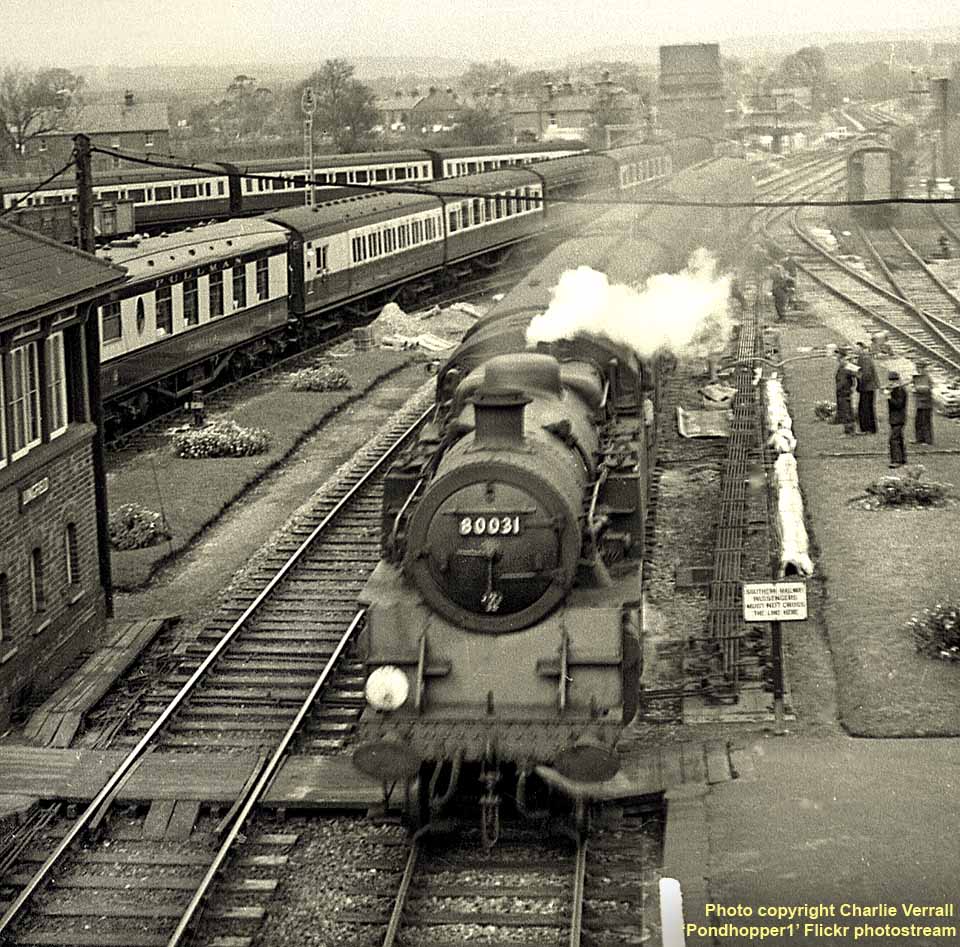
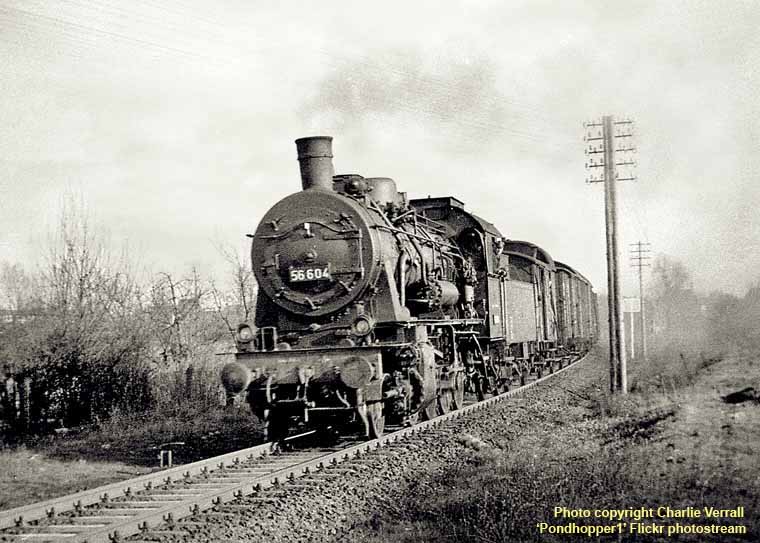
(Above) After completing my training at Worth Matravers I returned home at Christmas but in January 1956 I was transferred to 889 Signals Unit in Germany until August 1957. 889 Signals Unit was stationed at Goch in North Rheine-Westphalia not far from the ruined Siegfried line and the Dutch boarder. I had no knowledge of Continental Railways, and managed just two photographs of German steam locomotives whilst there. One is shown here of Deutsche Bundesbahn class 56 2-8-0 56 604 working a freight train on the outskirts of Goch, the date being April 22nd 1956. I wonder what the driver thought of having a photograph takenby someone in an RAF uniform!
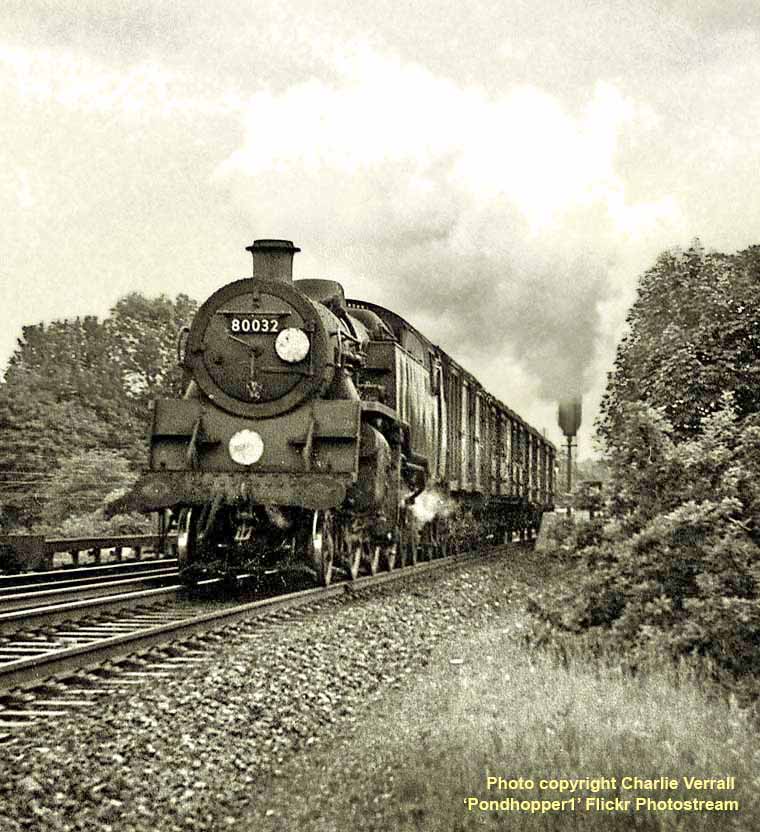 (Inset) A month or so later we moved our technical vehicles in convoy to RAF Schleswig-Holstein sited in Northern Germany between the Kiel canal and the Danish border. By mid June I was back home on the first of two leave periods whilst serving in Germany, obviously 48 passes were out of the question. The June leave period proved to very productive photographically. On the 14th I photographed BR Standard 4 2-6-4 tank 80032 leaving Wivelsfield with the 5.41pm vans form Brighton to London Bridge, this train consisted mainly of the stock being returned to London for the next day's newspaper trains. No 80032 was a Brighton built loco entering service during March 1952 and being withdrawn in January 1967.
(Inset) A month or so later we moved our technical vehicles in convoy to RAF Schleswig-Holstein sited in Northern Germany between the Kiel canal and the Danish border. By mid June I was back home on the first of two leave periods whilst serving in Germany, obviously 48 passes were out of the question. The June leave period proved to very productive photographically. On the 14th I photographed BR Standard 4 2-6-4 tank 80032 leaving Wivelsfield with the 5.41pm vans form Brighton to London Bridge, this train consisted mainly of the stock being returned to London for the next day's newspaper trains. No 80032 was a Brighton built loco entering service during March 1952 and being withdrawn in January 1967.
(Below) The following day I was at Haywards Heath station and saw the brand new 4CEP units 7101-03 working the 11.08 Brighton to Victoria semi-fast. These three were the first in service and were being tested prior to entering service on the Kent Coast Electrification scheme.

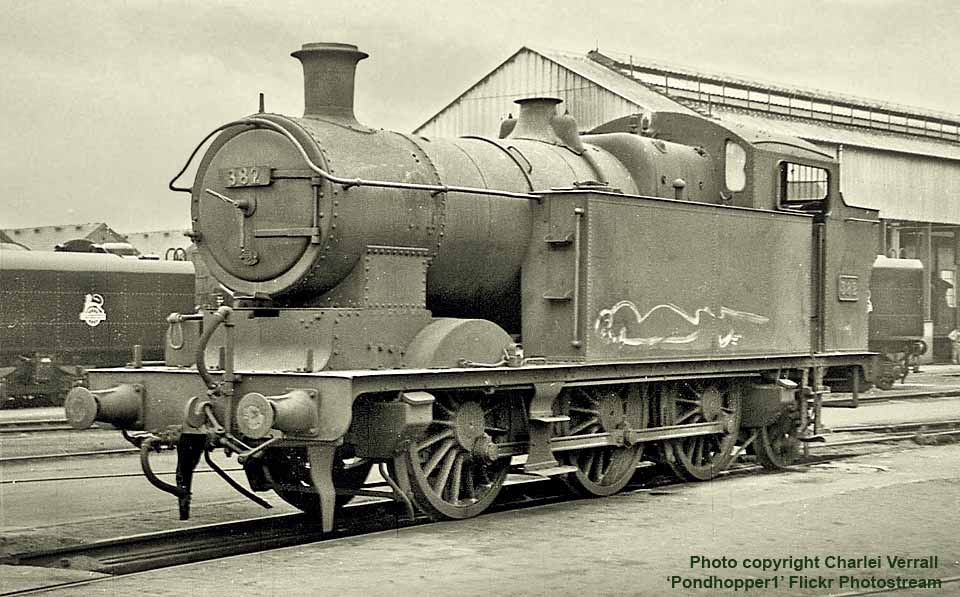
(Above) On the 18th I was at Swindon visiting the works and shed. I only ever saw one of the locomotives from the South Wales Railways absorbed by the GWR, namely this ex-Taff Vale Railway Class 0-6-2 tank 382. As with the others in the class 382 had been fitted with a standard GWR boiler. Withdrawn in April 1956, 382 was probably being used as a works pilot since it was not cut up until September.
(Below) Standing outside of the works was a 1400 Class 0-4-2T No 1428 and an ex-works 6400 class 0-6-0 pannier tank 6417. The Great Western had a great ability in recycling and upgrading older locomotive designs. The class 1400s, originally Class 4800 but renumbered in 1946 to make way for the Class 2800 2-8-0s which had been converted to oil burning and renumbered in the 4800 series, was a prime example based on locomotives built in the 19th century. Motor fitted they worked light branch trains until replaced by diesel railcars. Four have remained in preservation, although 1428 was withdrawn in August 1959.

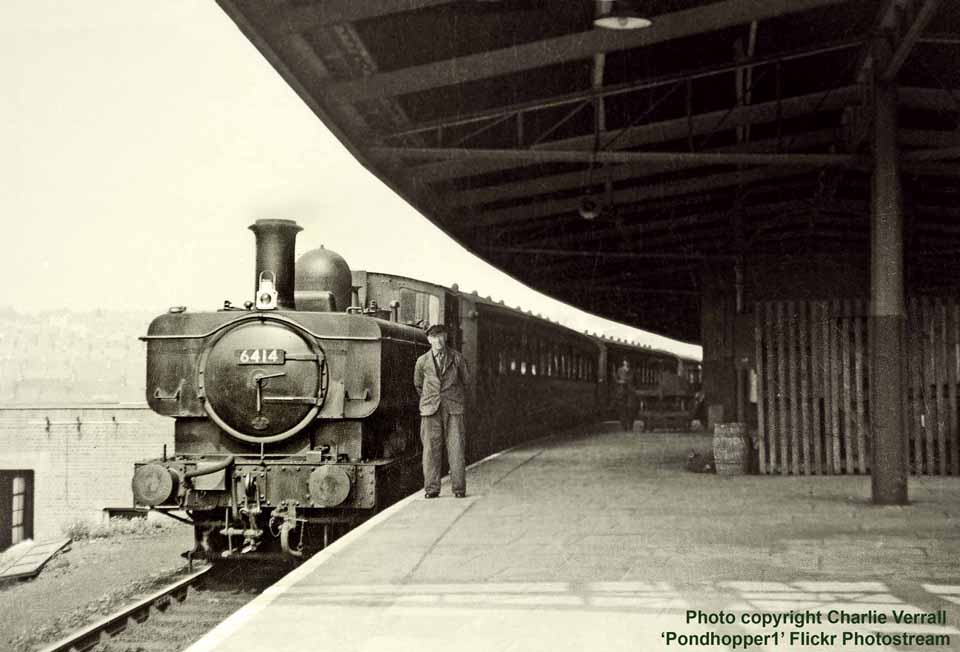
(Above) The Class 6400 0-6-0PTs were designed by Collett and also worked motor trains, mostly in South Wales. 6417 lasted until june 1959, although three have survived in preservation. Earlier, on September 8th 1952, I photographed another class member, No 6407, at Plymouth North Road waiting to work a service to Saltash.
 (Inset) A month or so later we moved our technical vehicles in convoy to RAF Schleswig-Holstein sited in Northern Germany between the Kiel canal and the Danish border. By mid June I was back home on the first of two leave periods whilst serving in Germany, obviously 48 passes were out of the question. The June leave period proved to very productive photographically. On the 14th I photographed BR Standard 4 2-6-4 tank 80032 leaving Wivelsfield with the 5.41pm vans form Brighton to London Bridge, this train consisted mainly of the stock being returned to London for the next day's newspaper trains. No 80032 was a Brighton built loco entering service during March 1952 and being withdrawn in January 1967.
(Inset) A month or so later we moved our technical vehicles in convoy to RAF Schleswig-Holstein sited in Northern Germany between the Kiel canal and the Danish border. By mid June I was back home on the first of two leave periods whilst serving in Germany, obviously 48 passes were out of the question. The June leave period proved to very productive photographically. On the 14th I photographed BR Standard 4 2-6-4 tank 80032 leaving Wivelsfield with the 5.41pm vans form Brighton to London Bridge, this train consisted mainly of the stock being returned to London for the next day's newspaper trains. No 80032 was a Brighton built loco entering service during March 1952 and being withdrawn in January 1967. (Below) The following day I was at Haywards Heath station and saw the brand new 4CEP units 7101-03 working the 11.08 Brighton to Victoria semi-fast. These three were the first in service and were being tested prior to entering service on the Kent Coast Electrification scheme.


(Above) On the 18th I was at Swindon visiting the works and shed. I only ever saw one of the locomotives from the South Wales Railways absorbed by the GWR, namely this ex-Taff Vale Railway Class 0-6-2 tank 382. As with the others in the class 382 had been fitted with a standard GWR boiler. Withdrawn in April 1956, 382 was probably being used as a works pilot since it was not cut up until September.
(Below) Standing outside of the works was a 1400 Class 0-4-2T No 1428 and an ex-works 6400 class 0-6-0 pannier tank 6417. The Great Western had a great ability in recycling and upgrading older locomotive designs. The class 1400s, originally Class 4800 but renumbered in 1946 to make way for the Class 2800 2-8-0s which had been converted to oil burning and renumbered in the 4800 series, was a prime example based on locomotives built in the 19th century. Motor fitted they worked light branch trains until replaced by diesel railcars. Four have remained in preservation, although 1428 was withdrawn in August 1959.


(Above) The Class 6400 0-6-0PTs were designed by Collett and also worked motor trains, mostly in South Wales. 6417 lasted until june 1959, although three have survived in preservation. Earlier, on September 8th 1952, I photographed another class member, No 6407, at Plymouth North Road waiting to work a service to Saltash.
(Below) On June 21st I was again on my travels, this time to Salisbury and Basingstoke, places which I would visit several times in the early 1960s. I am not what sure of the train I caught from Waterloo to Salisbury, however the first photograph I took was of Rebuilt Merchant Navy 4-6-2 35018 British India Line leaving with the down 'Atlantic Coast Express'. Because of a number of problems with the Merchant Navy Pacifics, by 1955 serious consideration was given to their withdrawal from service, however in view of the anticipated long life expectancy of the fireboxes and tube plates the decision was taken to rebuild them as more conventional locomotives, doing away with many of the original problematic Bullied features, thus becoming some of the finest express steam locomotives in Britain. 35018, by reputation not one of the better performers, was selected to be the first to be rebuilt and entered Eastleigh Works for this to be done on November 16th 1955. 35018 emerged in its new form on February 9th 1956 and shortly afterwards commenced trial runs, and after a number of mishaps and adjustments entered regular service. However it was not decided to use this locomotive for comparative trials. 35018 was an early withdrawal, in August 1964.
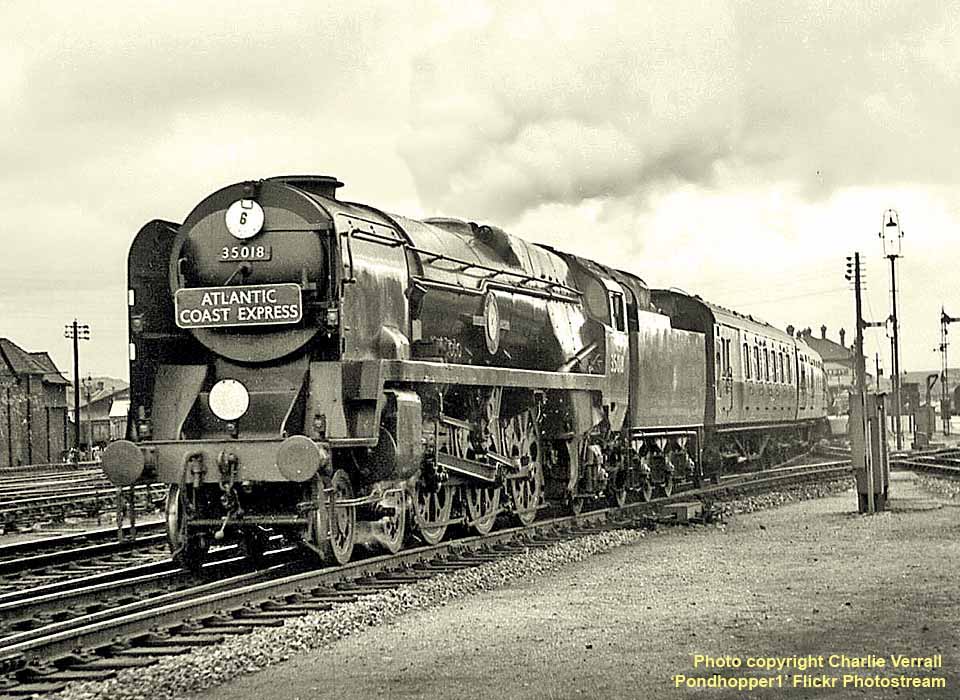
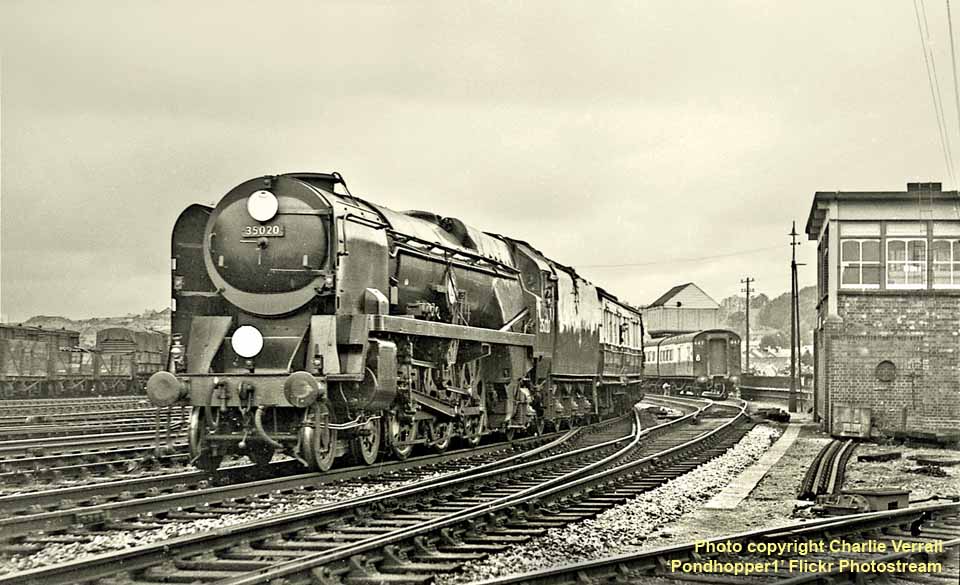
(Above) When I then visited Salisbury sheds I was pleased to see the second rebuild, 35020 Bibby Line being prepared for the comparative trials. Bibby Line was then positioned in the North Sidings, together with the Western Region dynamometer car prior to working a test train. 35020 was rebuilt in April 1956 but became an early class withdrawal in February 1965. For a serviceman on leave to unexpectedly see the first rebuild was one thing, but to see the second on the same day at the same place was a real bonus!
(Below) Another bonus was the sight of Maunsell H15 4-6-0 30332, this was a rebuild of an earlier Drummond class F13 four cylinder 4-6-0. In the main the Drummond 4-6-0s were a disaster, not performing well, and most were rebuilt at some time by Urie and Maunsell as two cylinder locomotives, the exceptions were the class T14s. The F13s had been earmarked by Urie for rebuilding as two cylinder 4-6-0s similar to the earlier rebuild of Drummond Class E14 335, however this was delayed until 1924 after Maunsell had become the Southern's CME. Nominally the only parts retained were the bogie wheels, boiler shell and tender. This loco re-emerged from Eastleigh on December 1924 and continued in service until October 1956.

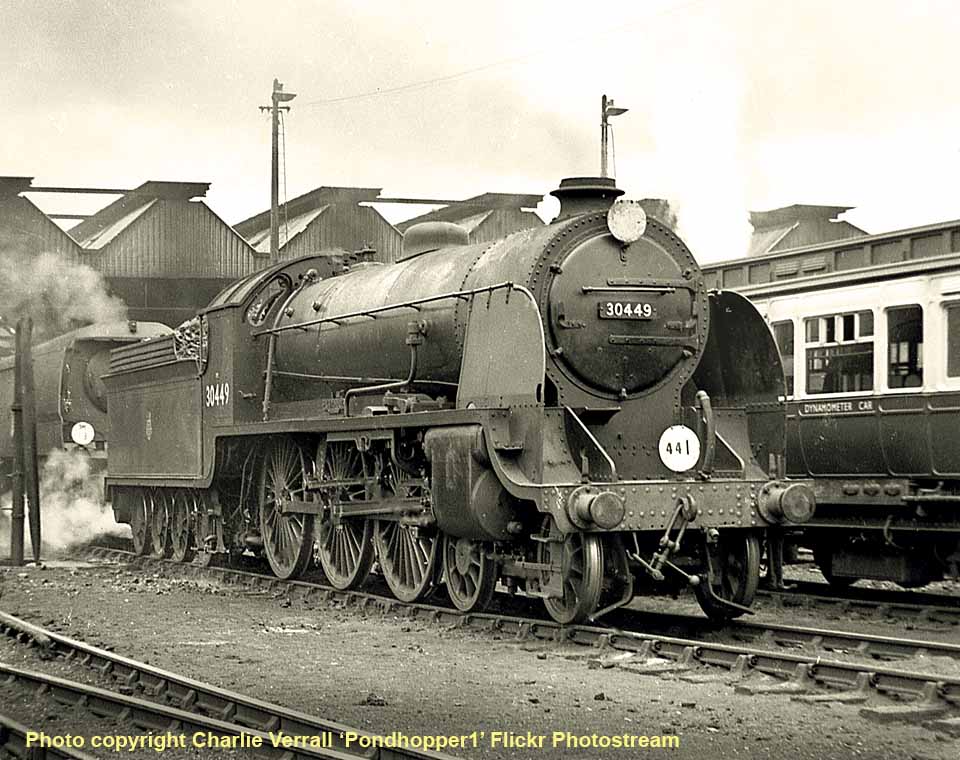
(Above) On Salisbury shed was Maunsell N15 class 4-6-0 30449 Sir Torre. The Maunsell 'King Arthurs' were a development of the earlier LSWR Urie N15 class. The first ten were replacements for the poor Drummond Class P14 and G14 four cylinder 4-6-0s. No 30449 entered service in June 1925 and lasted until December 1959.
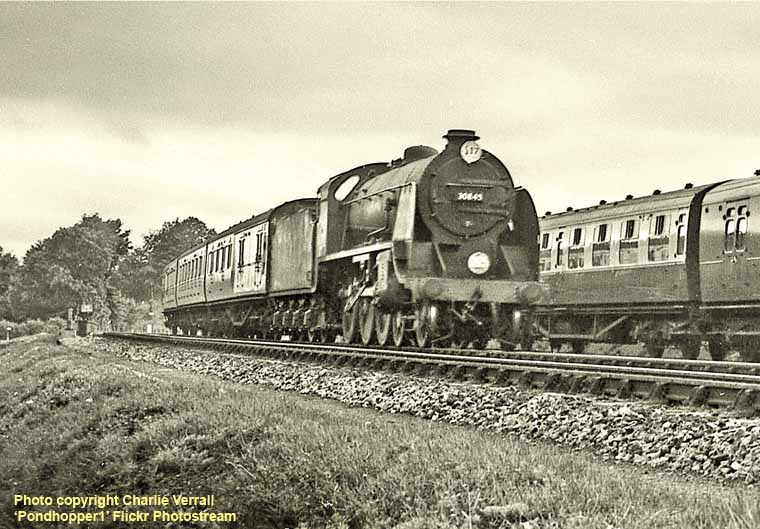
(Inset) Another Maunsell development of a Urie class were the S15 freight 4-6-0s, although as with their Urie counterparts they were frequently used on passenger services. 30845 is seen here entering Salisbury with an up train from Exeter. 30845 entered service during October 1936 and was withdrawn in July 1963.
(Below) Finally on shed at Salisbury was Lord Nelson class 4-6-0 30854 Howard of Effingham. Originally delivered as E854 the loco entered service in September 1928 initially to be allocated to Battersea but instead sent to Nine Elms to work on the Western Section. Later it was transferred to Battersea in 1930 and stayed there until at least 1939 after which it returned to the Western Section. 30854 was withdrawn during September 1961.
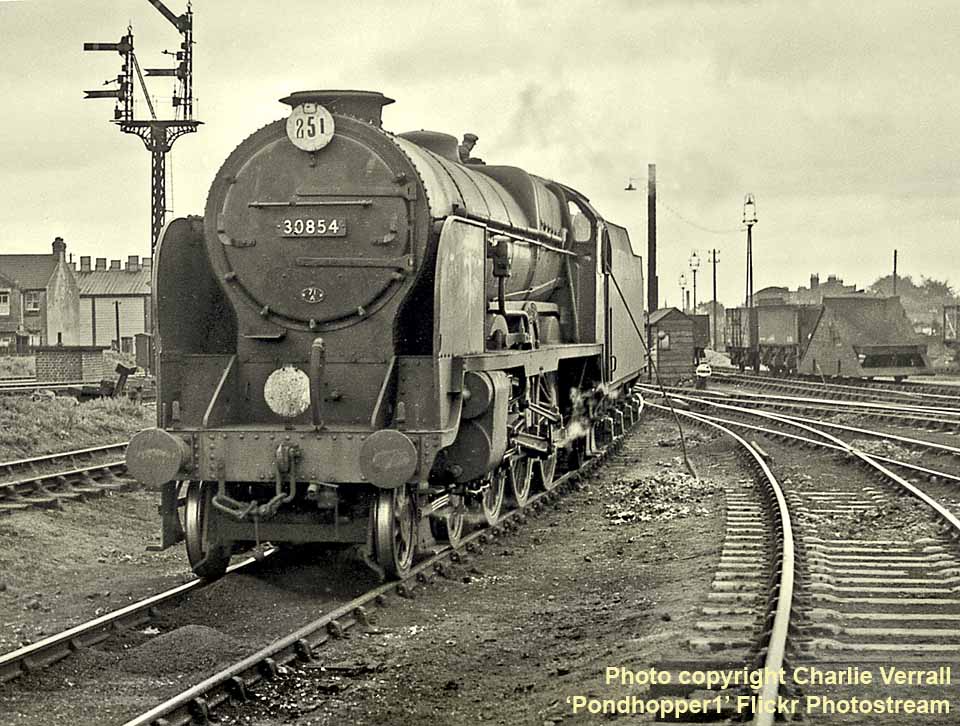

(Above) Later in the day I went to Basingstoke, another place frequently visited in the early 1960s. Seen working was Standard 5 4-6-0 73114, later to be named Etarre after the withdrawn N15 class loco with that name. The Standard 5s replaced in part many of the older LSWR and Southern 4-6-0s, especially the N15/X, Urie and early Maunsell N15s and the Urie H15s. 73114 was bulit at Doncaster in November 1955 and
withdrawn in june 1966...short lived indeed!

(Above) A brass nameplate measuring 31¼" x 4⅜" with chevron ends from No 73114 went under the hammer for £6,600 at a recent Sheffield Railway Auction. Delivered new to Nine Elms in November 1955, the loco was named 'Etarre' in April 1960 following withdrawal of the SR 'King Arthur' class loco No 30751 in June 1957. No 73114 spent many years at Nine Elms, before a brief transfer to Eastleigh and finally to Weymouth where it was withdrawn in June 1966 and cut up by John Cashmore at Newport.
(Below) Also working at Salisbury was Maunsell S15 4-6-0 30839, seen here on a down freight. 30839 left Eastleigh Works in May 1936 and was withdrawn in September 1965, one of the last in service.
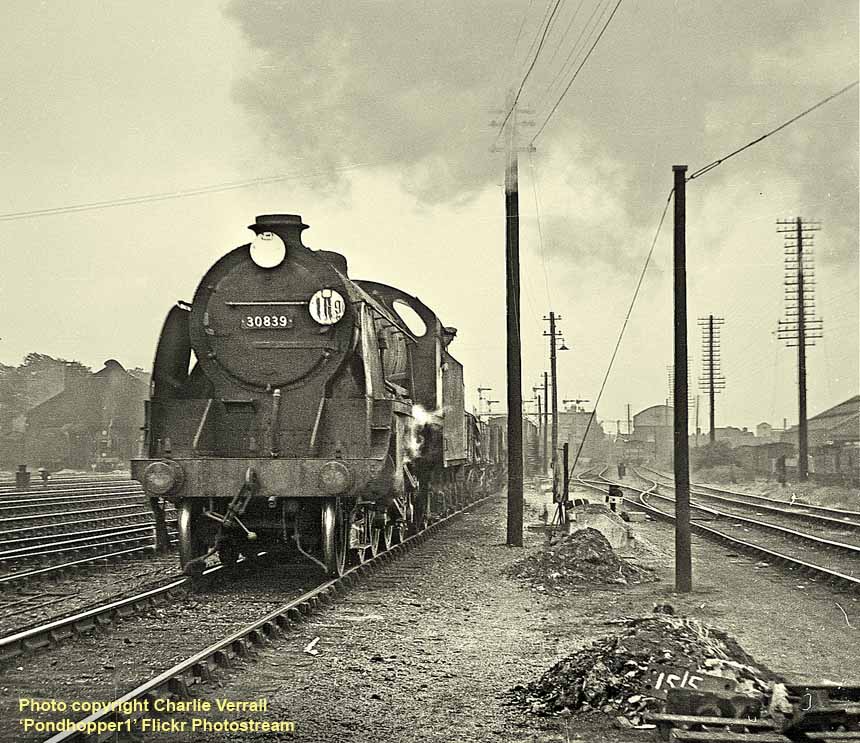
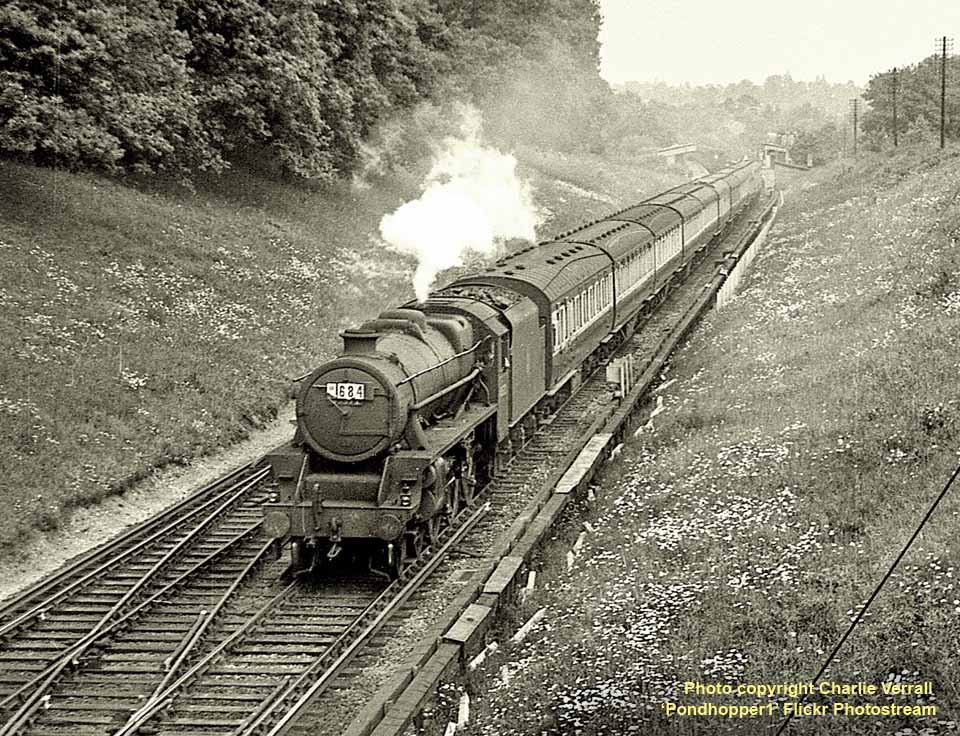
(Above) One of the last photographs taken before returning to Germany was of LMS class 5 4-6-0 45372 passing through Wivelsfield on a Tring to Brighton excursion on July 14th. Many of the through excursions to Brighton and the other local resorts were hauled by 'foreign' engines, mainly Black 5s, so the sight of 45372 was not exceptional. Built by Arnstrong Whitworth, 45372 entered service in June 1937 and was withdrawn in November 1968.
(Below) Shortly afterwards I was back at Schleswig after travelling via Liverpool Street, Harwich, the Hook of Holland and Hamburg. The mainline from Hamburg to the Danish border was worked by several different types of rail transport included streamlined diesel railcars; V200 mainline diesels, which in the cold winter needed a steam loco to provide heating, shades of future similar probles on BR; and class 50 2-10-0s. Seen here on February 7th 1957 was 50 1746 working a northbound freight.

(Below) My leave period in April 1957 produced very few photographs, mainly at Faversham; indeed April 16th was the only time I visited during steam days. On shed that day was South Eastern and Chatham C class 0-6-0 31714, a standard SECR goods engine of which a total of 109 were built between 1900 and 1908, including the sole rebuild to a Class S 0-6-0 saddle tank coming into British Railways stock. 31714 was built by Sharp Stewart and entered service during December 1900, withdrawal took place in July 1961!

(Above) A brass nameplate measuring 31¼" x 4⅜" with chevron ends from No 73114 went under the hammer for £6,600 at a recent Sheffield Railway Auction. Delivered new to Nine Elms in November 1955, the loco was named 'Etarre' in April 1960 following withdrawal of the SR 'King Arthur' class loco No 30751 in June 1957. No 73114 spent many years at Nine Elms, before a brief transfer to Eastleigh and finally to Weymouth where it was withdrawn in June 1966 and cut up by John Cashmore at Newport.
(Below) Also working at Salisbury was Maunsell S15 4-6-0 30839, seen here on a down freight. 30839 left Eastleigh Works in May 1936 and was withdrawn in September 1965, one of the last in service.


(Above) One of the last photographs taken before returning to Germany was of LMS class 5 4-6-0 45372 passing through Wivelsfield on a Tring to Brighton excursion on July 14th. Many of the through excursions to Brighton and the other local resorts were hauled by 'foreign' engines, mainly Black 5s, so the sight of 45372 was not exceptional. Built by Arnstrong Whitworth, 45372 entered service in June 1937 and was withdrawn in November 1968.
(Below) Shortly afterwards I was back at Schleswig after travelling via Liverpool Street, Harwich, the Hook of Holland and Hamburg. The mainline from Hamburg to the Danish border was worked by several different types of rail transport included streamlined diesel railcars; V200 mainline diesels, which in the cold winter needed a steam loco to provide heating, shades of future similar probles on BR; and class 50 2-10-0s. Seen here on February 7th 1957 was 50 1746 working a northbound freight.

(Below) My leave period in April 1957 produced very few photographs, mainly at Faversham; indeed April 16th was the only time I visited during steam days. On shed that day was South Eastern and Chatham C class 0-6-0 31714, a standard SECR goods engine of which a total of 109 were built between 1900 and 1908, including the sole rebuild to a Class S 0-6-0 saddle tank coming into British Railways stock. 31714 was built by Sharp Stewart and entered service during December 1900, withdrawal took place in July 1961!
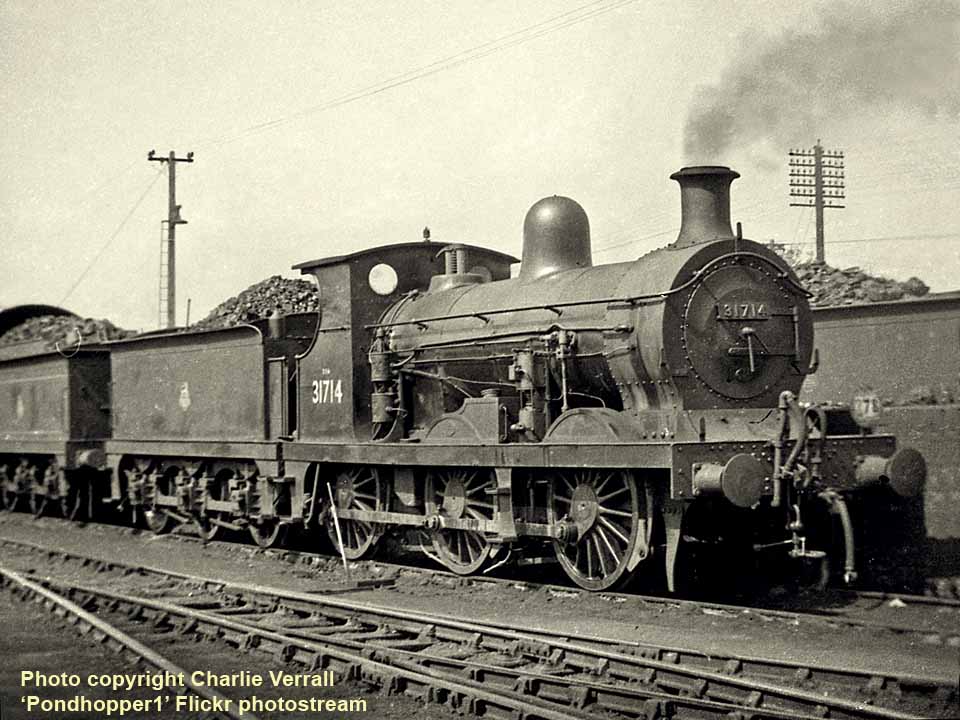
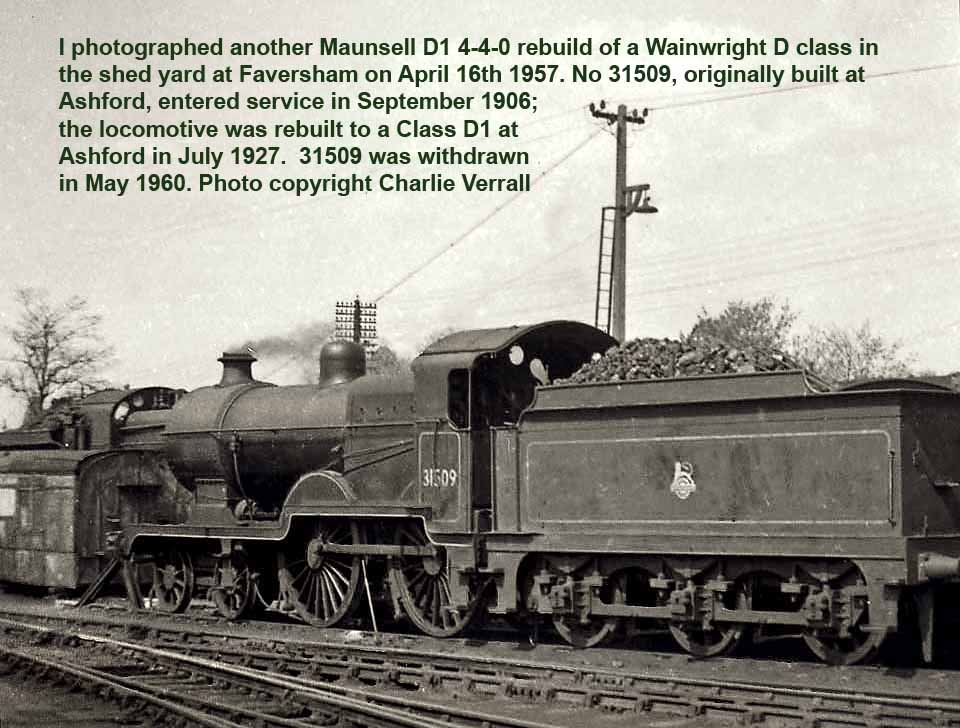

(Above-Below) In chapter One I included some photographs taken on the sea wall at Teignmouth after my return to civilian life. As part of that visit to South Devon I was at Exeter St Davids on September 9th 1957 and photographed 5101 class 2-6-2 tank 4174 working the 215pm to Torquay [photo. A batch of these locos were allocated to Exeter, including 4176 and 4178 also seen on this trip, and during one of my earlier school holiday trips to South Devon I rode on the footplate of one from Newton Abbot to Teignmouth. 4176 was one of the last of the class to be built entering service in December 1949, withdrawal took place in October 1965. (Below) Also at Exeter St Davids on the same day was one of the Grange Class 4-6-0s 6874 Haughton Grange, seen here shunting empty passenger stock. One of the last of the class to be built, No 6874 entered service during April 1939 and was withdrawn in September 1965.
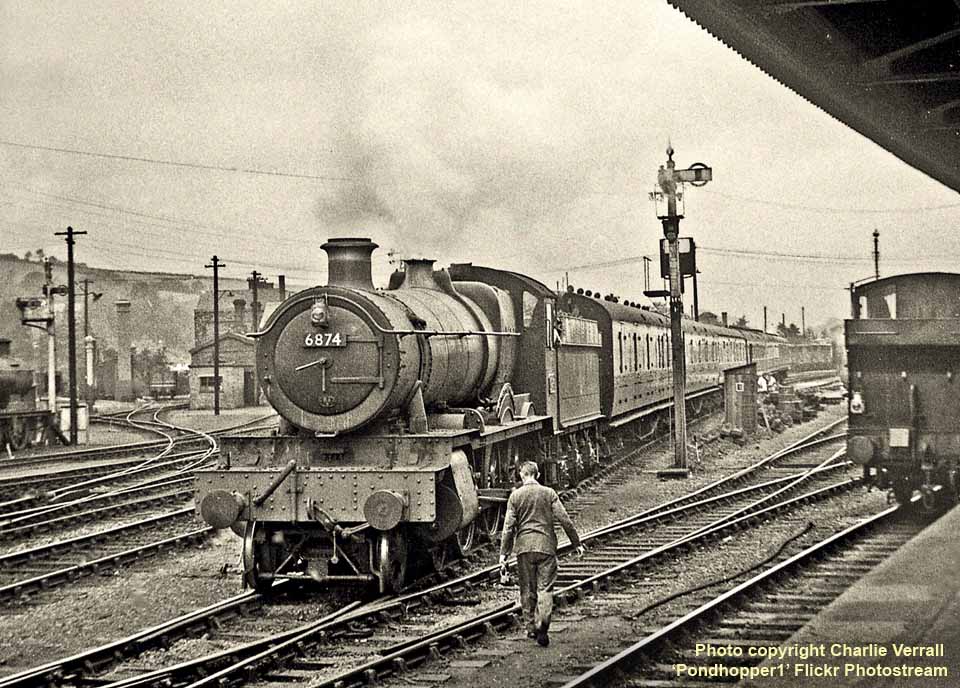
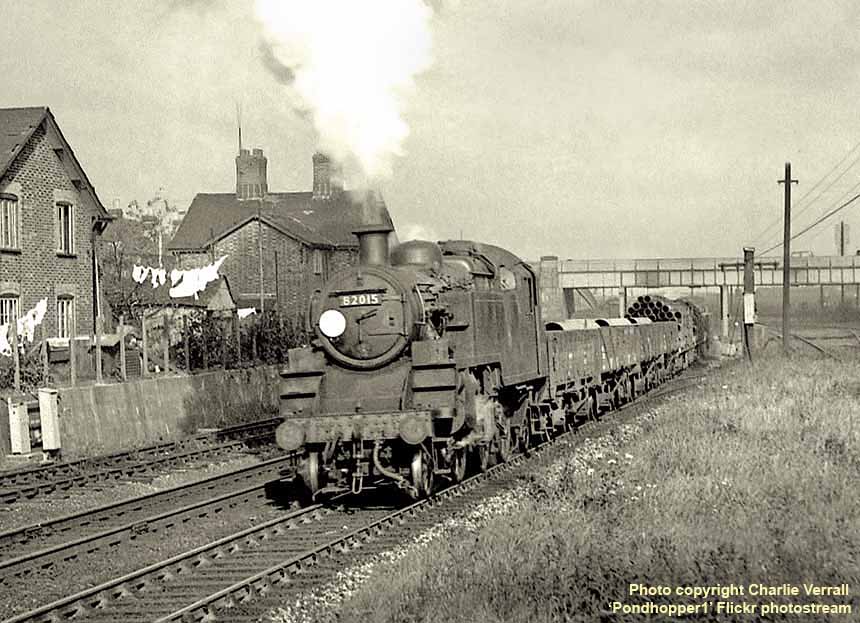
(Above) My final visit in 1957 was on November 9th to Eastleigh, again somewhere I would frequently visit in the early 1960s. In addition it was the penultimate visit where the Purma camera was used. Seen here is Standard 3MT 2-6-2 tank No 82015 on a freight working, probably to Fawley. Eastleigh had several of these engines, used mainly for local freight working. 82015 was built at Swindon, entering service in August 1955, withdrawal took place in December 1964.
(Below) Urie S15 4-6-0 No 30509 is positioning a number of ex-works locos including 'King Arthur' 4-6-0 30790 Sir Dondidas Le Savage, an LMS Class 2MT 2-6-2 tank 41292 and an unidentified Pacific. 30509 itself was built at Eastleigh and entered service during December 1920, withdrawal came in July 1963
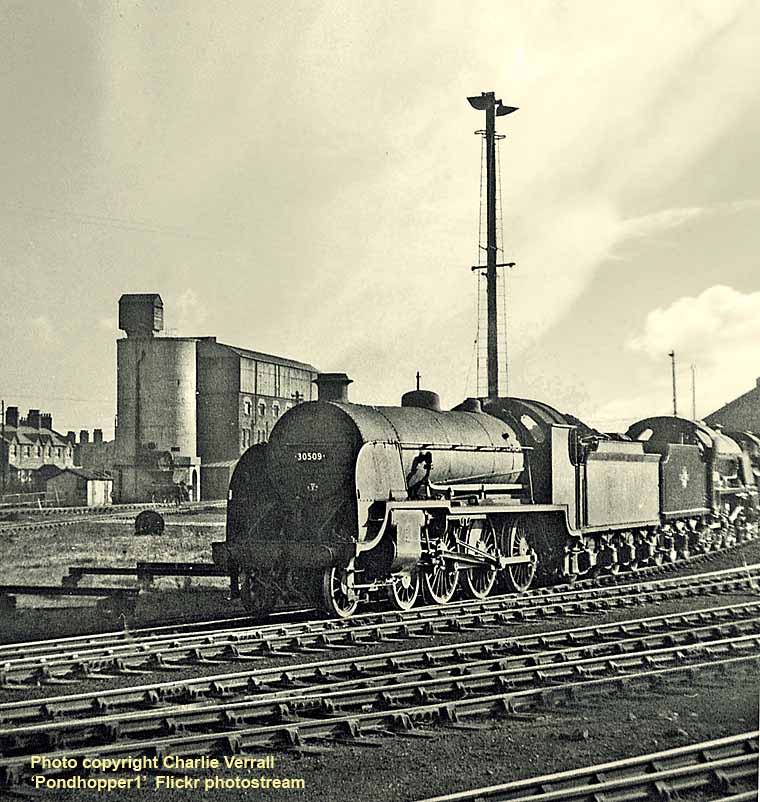
 (Inset) In 1957 Briitish Railways bought three 8F 2-8-0s from the War Department, and 48775 fresh from overhaul in Eastleigh Works was seen on shed. Two hundred and forty of the LMS 8Fs where built for use by the War Department, all went overseas to the Middle East. In 1957 three of these locomotives were absorbed into BR stock: WD 500, 501 and 512. All were overhauled at Eastleigh and initially allocated the numbers 90733 to 735 in the Riddles 'Austerity' WD 2-8-0 series. After it was realised that they were not 'Austerity' class locomotives they were then correctly renumbered 48773-5. Built by the North British Locomotive Company in June 1940, 48775 officially became part of BR stock in July 1957. Always a Polmadie engine it was withdrawn, first in December 1962 only to be reinstated the following February due to diesel locomotive failures in that severe winter, secondly in June 1963 only to be reinstated the following November to provide cold weather cover, and finally in August 1968. One of the three ex WD locomotives, WD500, became 48773 and can be seen on the Severn Valley Railway bearing its original LMS number of 8233.
(Inset) In 1957 Briitish Railways bought three 8F 2-8-0s from the War Department, and 48775 fresh from overhaul in Eastleigh Works was seen on shed. Two hundred and forty of the LMS 8Fs where built for use by the War Department, all went overseas to the Middle East. In 1957 three of these locomotives were absorbed into BR stock: WD 500, 501 and 512. All were overhauled at Eastleigh and initially allocated the numbers 90733 to 735 in the Riddles 'Austerity' WD 2-8-0 series. After it was realised that they were not 'Austerity' class locomotives they were then correctly renumbered 48773-5. Built by the North British Locomotive Company in June 1940, 48775 officially became part of BR stock in July 1957. Always a Polmadie engine it was withdrawn, first in December 1962 only to be reinstated the following February due to diesel locomotive failures in that severe winter, secondly in June 1963 only to be reinstated the following November to provide cold weather cover, and finally in August 1968. One of the three ex WD locomotives, WD500, became 48773 and can be seen on the Severn Valley Railway bearing its original LMS number of 8233.
(Below) Another freight working at Eastleigh, this time from the Basingstoke direction was headed by Urie S15 class 4-6-0 30507. As mentioned earlier, the Urie and Maunsell S15s were used on a number of South Western Division duties. 30507 was a product of Eastleigh, entering service in November 1920 and lasting until December 1963.
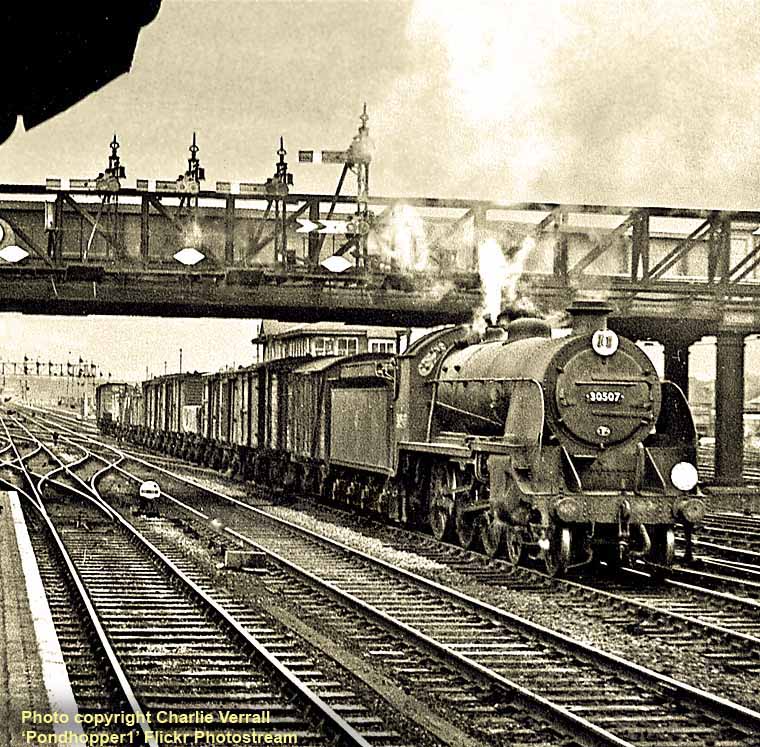
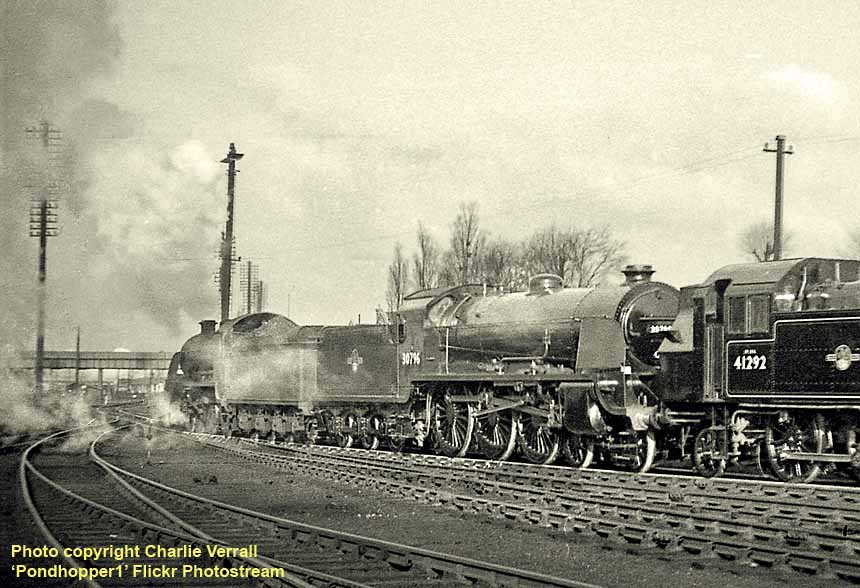
(Above) Also on shed at Eastleigh was the ex-works Maunsell N15 class 4-6-0 30796 Sir Dodinas Le Savage. This was one of the 'King Arthurs' built for the Brighton section, 30796 originally had a smaller six wheeled tender. Built at Eastleigh in May 1926, 30796 was withdrawn in February 1962.
CHAPTER FIVE - 1961
STARTING RAILWAY PHOTOGRAPHY AGAIN
By the autumn of 1961 I realised that steam was on its way out and I should get my backside in gear and start photographing some before it all went. So I got myself a Montana Twin-lens Reflex Camera, similar to a Rollieflex, which was a roll film camera. I knew nothing really about cameras so did not consider 35mm or colour slides. Initial use was at Redhill. Being employed at the District Traffic Superintendent's Office, Redhill Shed was just a short walk away along the cinder path alongside the line towards Tonbridge, and also near to my home at Wivelsfield.
Rollieflex, which was a roll film camera. I knew nothing really about cameras so did not consider 35mm or colour slides. Initial use was at Redhill. Being employed at the District Traffic Superintendent's Office, Redhill Shed was just a short walk away along the cinder path alongside the line towards Tonbridge, and also near to my home at Wivelsfield.
Later on that year I went to Eastleigh, Salisbury and Basingstoke; I was familiar with these places since I had photographed there during leave from National Service, in any case I already had a Southern non electrified lines track pass. Salisbury was of especial interest since both Southern and Western Region services could be photographed there. One thing I quickly found out about the Montana camera was - 'what you saw was not what you got' - in as much as the top viewing lens was on a higher plane than the bottom taking lens, a problem also associated with viewfinder cameras. This resulted in the either chopping off heads or legs, and in the case of railway photography the bottom of wheels when the locomotive was slightly below the level of the closest rails. It has to be remembered that photographs taken with a twin lens reflex tended to be shot at waist or chest level rather then eye level. Having overcome that problem it was a case of getting out and taking some photographs.
(Below) On August 12th I went to Brighton and headed for platform 1 and 2, which afforded a grandstand view of loco movements in the shed yard - a haven for locospotters of all ages. Seen departing with the 3.30pm to Horsham was Standard Class 4MT 2-6-4 tank 80138. By this time most of the Brighton to Horsham services via Steyning were worked by LMS Class 2 2-6-2 tanks, known to us a 'Micky Mouses', however the use of 80138 was an exception to the rule. 80138 was built at Brighton, entering service during June 1956. Withdrawal took place in October 1966.
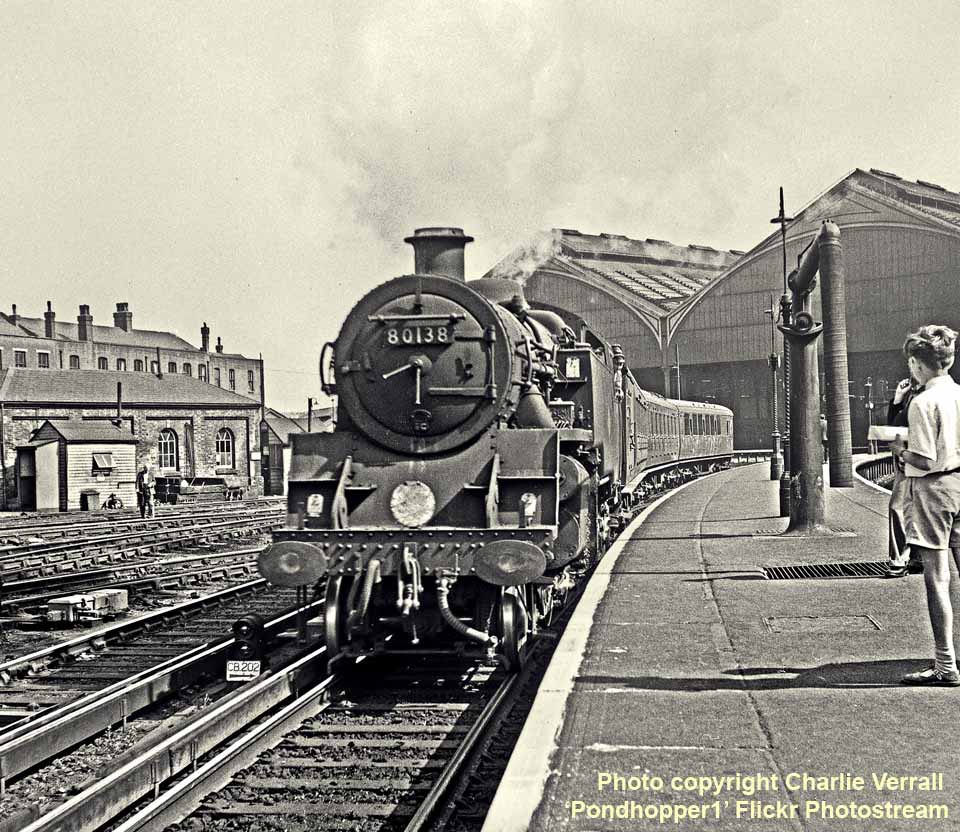
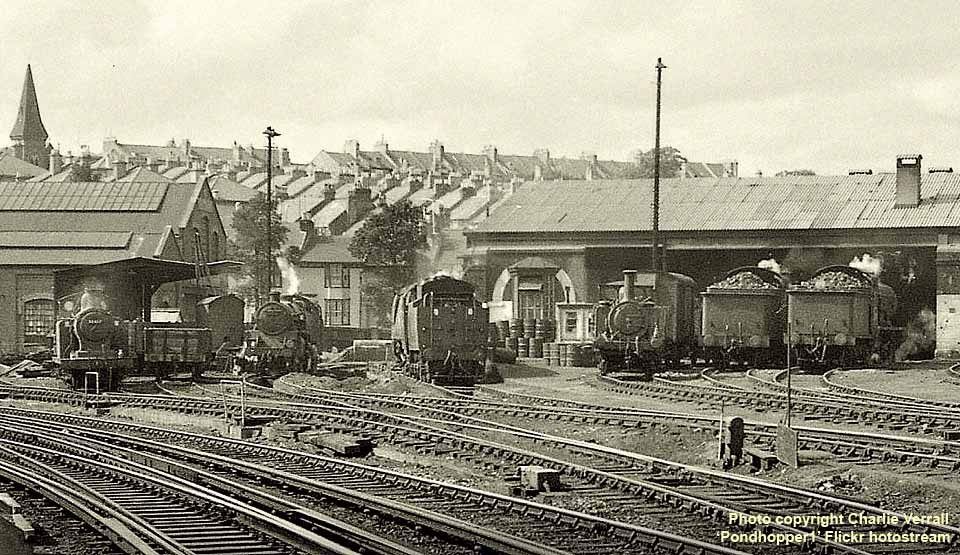
(Above) This view of part of Brighton Shed shows a LBSCR E6 class 0-6-2 standing at the coal stage; a Standard 4 2-6-4 tank waiting to be turned; a Light Pacific, possibly 34083, coming off the turntable; and two LBSCR K class 2-6-0s. There was a second turntable at Brighton, at Montpelier Junction where the lines to London and Lewes diverge. I rode in the cab of 34066 Spitfire to that turntable from Brighton Station and back when it was being turned whilst working a Rail Tour circa 1964-1965. The E6 class locomotives were the last radial tanks designed by Robert Billington and entered service between December 1904 and December 1905. The last one being withdrawn in October 1963.
(Below) For several years Brighton had an allocation of Bullied Light Pacifics which were mainly employed on the through services to Bournemouth, Cardiff and Plymouth, as well as the heavy freight trains from Brighton and Newhaven to London. Living at I did at the foot of the embankment by Wivelsfield Station I can still remember the sound and vibration as they accelerated up the hill towards Haywards Heath. The London bound Pacifics returned early the following morning with the down newspaper trains. Although not a Brighton engine 34083 605 Squadron is seen here on shed at 73A. 34083 was built at Brighton and entered service in October 1948, one the the locos I saw ex-works as a 'train boy'. Nominally at the time an Ashford engine made redundant by electrification and probably 'borrowed' by Stewarts Lane, 34083 would shortly be on its was to join many other un-rebuilt Pacifics at Exmouth Junction, where withdrawal took place in June 1964.
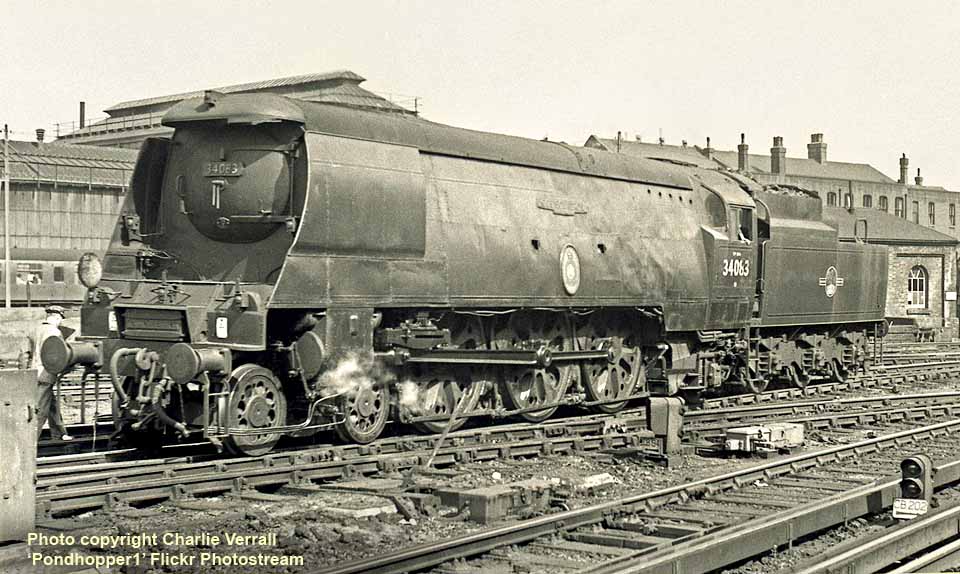
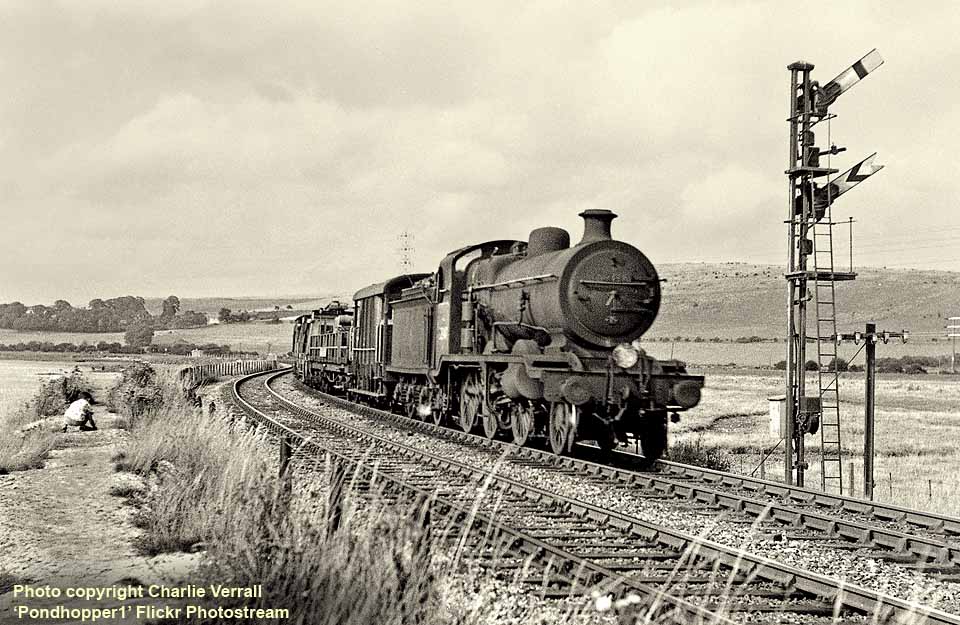
(Above) On the same day K class 2-6-0 32347 was photographed on the Steyning Branch at Old Shoreham with the 2.55pm engineers train from Three bridges via Horsham. The K class 2-6-0s were built at Brighton for the London Brighton and South Coast Railway. 32347 entered service during December 1920 and was withdrawn in December 1962 as part of the mass withrawal of this class. Apart for the disappearance of the railway this scene has changed little in the intervening years.
(Below) On a weekday, during my lunch break, I often walked to Redhill shed to see if there was anything worth photographing. On August 17th U class 2-6-0 31616, N class 2-6-0 31868 and Schools class 4-4-0 30924 Haileybury were in the open section at the rear of the shed. At the time 31616 was a Redhill engine, although by the end of the year it had been transferred to Norwood. Built at Brighton and entering service during September 1928, No 31616 was withdrawn in June 1964. The N class 31868 was one of several of this class based at Redhill. This Ashford-built locomotive entered service in July 1925, and withdrawal took place in January 1964 although it was not until February 1965 that it was broken up at Cashmores Newport. The Schools class No 30924 was technically still a Bricklayers Arms engine, not being transferred to Redhill until a week after this photograph was taken, but its tenure at Redhill was short-lived since it was withdrawn in January 1962 and broken up at Ashford the same month.
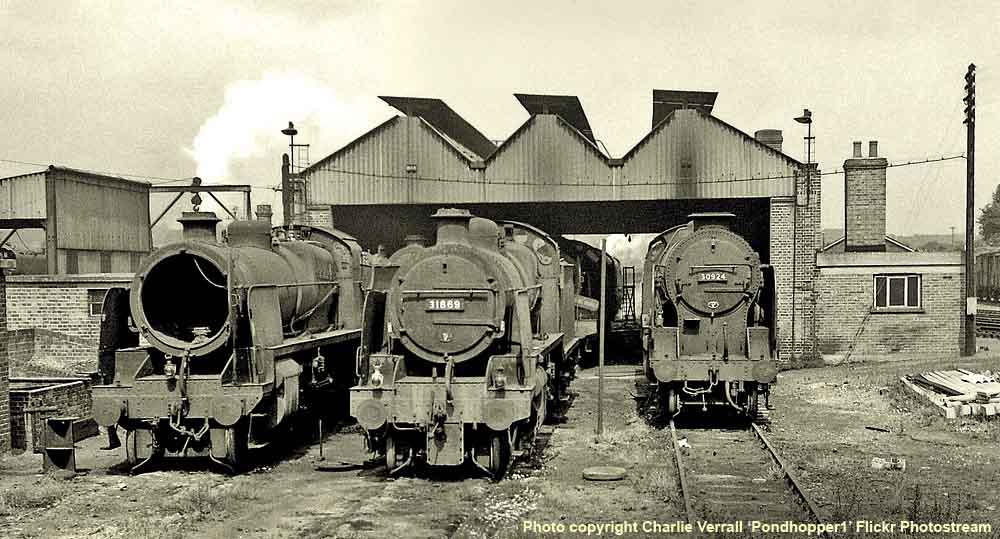
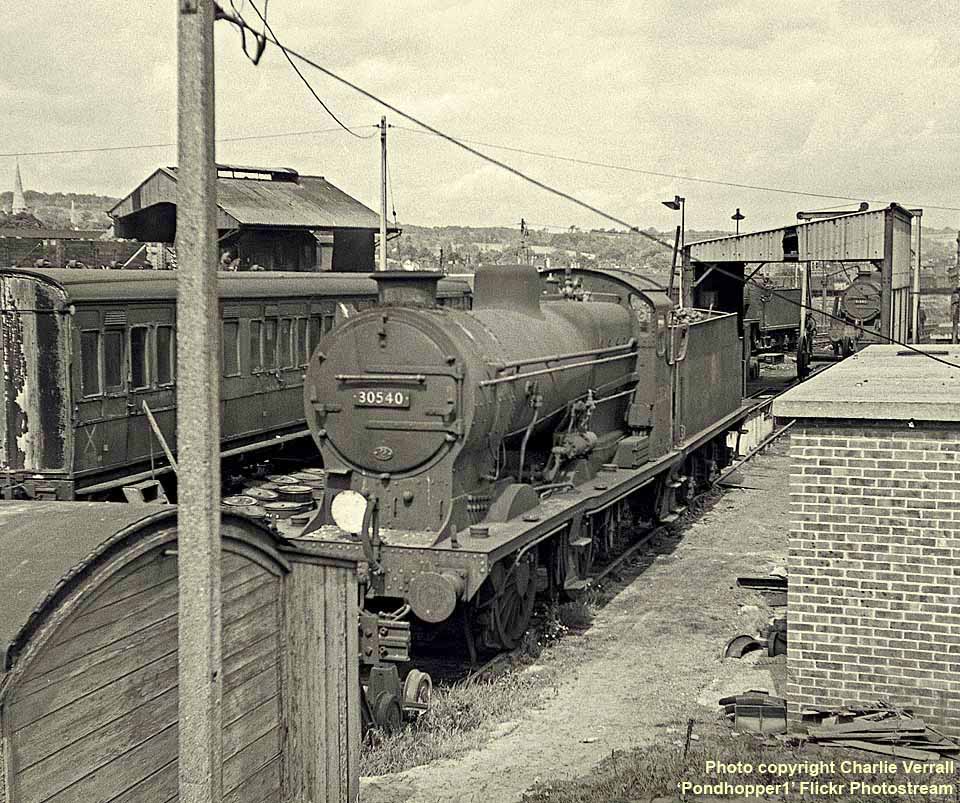
(Above) Six days later, I again went down to Redhill Shed and found Q class 0-6-0 30540 minus its rear driving wheels; also of interest is the old coach of unknown origin on the left which was used to hold, I think, stores. The Q class locos were the last class to be designed by Maunsell although he had retired before they were built. There were comments made regarding poor steaming and eventually Bullied fitted them with Lemaitre multiple blast pipes, which seemed to do the trick. In later years several were fitted with standard class 4 blast pipes and chimneys. 30540 was built at Eastleigh and entered service during January 1939. The Lemaitre blast pipe was fitted in January 1948. 30540 was withdrawn in November 1962 having never received a Class 4 blast pipe.
(Below) On September 29th I was back at Redhill shed to photograph Standard 4 2-6-4 tank 80059 passing with the 1105 Reading to Tonbridge. There were a different collection of engines at the back of the shed than from the 17th, just three 2-6-0s. 80059 was built at Brighton and entered service in September 1953, withdrawal took place during November 1965. From at least 1955 the Standard 4 tanks worked most of the services between Redhill and Tonbridge, being permitted through the narrow tunnels between Tonbridge and Tunbridge Wells.
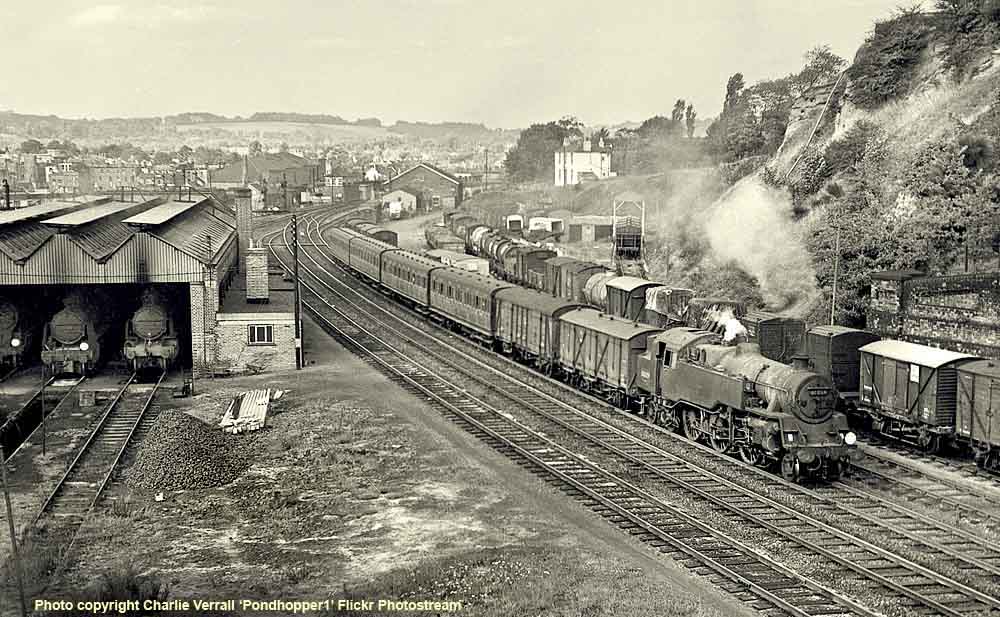
PHOTO GALLERY THREE
READING - SEPTEMBER 2nd 1961
I had previously been to Reading, firstly on a non photographic trip in November 1951 when I saw the last Bulldog Class 4-4-0 3453 Seagull, and then in 1955 when I first had the Purma Plus camera. However, this second trip produced no images fit for inclusion here. It was therefore logical that I would make a visit with my new camera. I an sure now that I had neither a lineside pass or a shed permit but still managed to get round the shed anyway.
(Below) The station pilot was Hall class 4-6-0 6913 Levens Hall which was built at Swindon in February 1941 and withdrawn in June 1965. One of the nameplates from this loco can be found at Levens Hall, Kendal, Cumbria.


(Above) My final visit in 1957 was on November 9th to Eastleigh, again somewhere I would frequently visit in the early 1960s. In addition it was the penultimate visit where the Purma camera was used. Seen here is Standard 3MT 2-6-2 tank No 82015 on a freight working, probably to Fawley. Eastleigh had several of these engines, used mainly for local freight working. 82015 was built at Swindon, entering service in August 1955, withdrawal took place in December 1964.
(Below) Urie S15 4-6-0 No 30509 is positioning a number of ex-works locos including 'King Arthur' 4-6-0 30790 Sir Dondidas Le Savage, an LMS Class 2MT 2-6-2 tank 41292 and an unidentified Pacific. 30509 itself was built at Eastleigh and entered service during December 1920, withdrawal came in July 1963

 (Inset) In 1957 Briitish Railways bought three 8F 2-8-0s from the War Department, and 48775 fresh from overhaul in Eastleigh Works was seen on shed. Two hundred and forty of the LMS 8Fs where built for use by the War Department, all went overseas to the Middle East. In 1957 three of these locomotives were absorbed into BR stock: WD 500, 501 and 512. All were overhauled at Eastleigh and initially allocated the numbers 90733 to 735 in the Riddles 'Austerity' WD 2-8-0 series. After it was realised that they were not 'Austerity' class locomotives they were then correctly renumbered 48773-5. Built by the North British Locomotive Company in June 1940, 48775 officially became part of BR stock in July 1957. Always a Polmadie engine it was withdrawn, first in December 1962 only to be reinstated the following February due to diesel locomotive failures in that severe winter, secondly in June 1963 only to be reinstated the following November to provide cold weather cover, and finally in August 1968. One of the three ex WD locomotives, WD500, became 48773 and can be seen on the Severn Valley Railway bearing its original LMS number of 8233.
(Inset) In 1957 Briitish Railways bought three 8F 2-8-0s from the War Department, and 48775 fresh from overhaul in Eastleigh Works was seen on shed. Two hundred and forty of the LMS 8Fs where built for use by the War Department, all went overseas to the Middle East. In 1957 three of these locomotives were absorbed into BR stock: WD 500, 501 and 512. All were overhauled at Eastleigh and initially allocated the numbers 90733 to 735 in the Riddles 'Austerity' WD 2-8-0 series. After it was realised that they were not 'Austerity' class locomotives they were then correctly renumbered 48773-5. Built by the North British Locomotive Company in June 1940, 48775 officially became part of BR stock in July 1957. Always a Polmadie engine it was withdrawn, first in December 1962 only to be reinstated the following February due to diesel locomotive failures in that severe winter, secondly in June 1963 only to be reinstated the following November to provide cold weather cover, and finally in August 1968. One of the three ex WD locomotives, WD500, became 48773 and can be seen on the Severn Valley Railway bearing its original LMS number of 8233. (Below) Another freight working at Eastleigh, this time from the Basingstoke direction was headed by Urie S15 class 4-6-0 30507. As mentioned earlier, the Urie and Maunsell S15s were used on a number of South Western Division duties. 30507 was a product of Eastleigh, entering service in November 1920 and lasting until December 1963.


(Above) Also on shed at Eastleigh was the ex-works Maunsell N15 class 4-6-0 30796 Sir Dodinas Le Savage. This was one of the 'King Arthurs' built for the Brighton section, 30796 originally had a smaller six wheeled tender. Built at Eastleigh in May 1926, 30796 was withdrawn in February 1962.
CHAPTER FIVE - 1961
STARTING RAILWAY PHOTOGRAPHY AGAIN
By the autumn of 1961 I realised that steam was on its way out and I should get my backside in gear and start photographing some before it all went. So I got myself a Montana Twin-lens Reflex Camera, similar to a
 Rollieflex, which was a roll film camera. I knew nothing really about cameras so did not consider 35mm or colour slides. Initial use was at Redhill. Being employed at the District Traffic Superintendent's Office, Redhill Shed was just a short walk away along the cinder path alongside the line towards Tonbridge, and also near to my home at Wivelsfield.
Rollieflex, which was a roll film camera. I knew nothing really about cameras so did not consider 35mm or colour slides. Initial use was at Redhill. Being employed at the District Traffic Superintendent's Office, Redhill Shed was just a short walk away along the cinder path alongside the line towards Tonbridge, and also near to my home at Wivelsfield. Later on that year I went to Eastleigh, Salisbury and Basingstoke; I was familiar with these places since I had photographed there during leave from National Service, in any case I already had a Southern non electrified lines track pass. Salisbury was of especial interest since both Southern and Western Region services could be photographed there. One thing I quickly found out about the Montana camera was - 'what you saw was not what you got' - in as much as the top viewing lens was on a higher plane than the bottom taking lens, a problem also associated with viewfinder cameras. This resulted in the either chopping off heads or legs, and in the case of railway photography the bottom of wheels when the locomotive was slightly below the level of the closest rails. It has to be remembered that photographs taken with a twin lens reflex tended to be shot at waist or chest level rather then eye level. Having overcome that problem it was a case of getting out and taking some photographs.
(Below) On August 12th I went to Brighton and headed for platform 1 and 2, which afforded a grandstand view of loco movements in the shed yard - a haven for locospotters of all ages. Seen departing with the 3.30pm to Horsham was Standard Class 4MT 2-6-4 tank 80138. By this time most of the Brighton to Horsham services via Steyning were worked by LMS Class 2 2-6-2 tanks, known to us a 'Micky Mouses', however the use of 80138 was an exception to the rule. 80138 was built at Brighton, entering service during June 1956. Withdrawal took place in October 1966.


(Above) This view of part of Brighton Shed shows a LBSCR E6 class 0-6-2 standing at the coal stage; a Standard 4 2-6-4 tank waiting to be turned; a Light Pacific, possibly 34083, coming off the turntable; and two LBSCR K class 2-6-0s. There was a second turntable at Brighton, at Montpelier Junction where the lines to London and Lewes diverge. I rode in the cab of 34066 Spitfire to that turntable from Brighton Station and back when it was being turned whilst working a Rail Tour circa 1964-1965. The E6 class locomotives were the last radial tanks designed by Robert Billington and entered service between December 1904 and December 1905. The last one being withdrawn in October 1963.
(Below) For several years Brighton had an allocation of Bullied Light Pacifics which were mainly employed on the through services to Bournemouth, Cardiff and Plymouth, as well as the heavy freight trains from Brighton and Newhaven to London. Living at I did at the foot of the embankment by Wivelsfield Station I can still remember the sound and vibration as they accelerated up the hill towards Haywards Heath. The London bound Pacifics returned early the following morning with the down newspaper trains. Although not a Brighton engine 34083 605 Squadron is seen here on shed at 73A. 34083 was built at Brighton and entered service in October 1948, one the the locos I saw ex-works as a 'train boy'. Nominally at the time an Ashford engine made redundant by electrification and probably 'borrowed' by Stewarts Lane, 34083 would shortly be on its was to join many other un-rebuilt Pacifics at Exmouth Junction, where withdrawal took place in June 1964.


(Above) On the same day K class 2-6-0 32347 was photographed on the Steyning Branch at Old Shoreham with the 2.55pm engineers train from Three bridges via Horsham. The K class 2-6-0s were built at Brighton for the London Brighton and South Coast Railway. 32347 entered service during December 1920 and was withdrawn in December 1962 as part of the mass withrawal of this class. Apart for the disappearance of the railway this scene has changed little in the intervening years.
(Below) On a weekday, during my lunch break, I often walked to Redhill shed to see if there was anything worth photographing. On August 17th U class 2-6-0 31616, N class 2-6-0 31868 and Schools class 4-4-0 30924 Haileybury were in the open section at the rear of the shed. At the time 31616 was a Redhill engine, although by the end of the year it had been transferred to Norwood. Built at Brighton and entering service during September 1928, No 31616 was withdrawn in June 1964. The N class 31868 was one of several of this class based at Redhill. This Ashford-built locomotive entered service in July 1925, and withdrawal took place in January 1964 although it was not until February 1965 that it was broken up at Cashmores Newport. The Schools class No 30924 was technically still a Bricklayers Arms engine, not being transferred to Redhill until a week after this photograph was taken, but its tenure at Redhill was short-lived since it was withdrawn in January 1962 and broken up at Ashford the same month.


(Above) Six days later, I again went down to Redhill Shed and found Q class 0-6-0 30540 minus its rear driving wheels; also of interest is the old coach of unknown origin on the left which was used to hold, I think, stores. The Q class locos were the last class to be designed by Maunsell although he had retired before they were built. There were comments made regarding poor steaming and eventually Bullied fitted them with Lemaitre multiple blast pipes, which seemed to do the trick. In later years several were fitted with standard class 4 blast pipes and chimneys. 30540 was built at Eastleigh and entered service during January 1939. The Lemaitre blast pipe was fitted in January 1948. 30540 was withdrawn in November 1962 having never received a Class 4 blast pipe.
(Below) On September 29th I was back at Redhill shed to photograph Standard 4 2-6-4 tank 80059 passing with the 1105 Reading to Tonbridge. There were a different collection of engines at the back of the shed than from the 17th, just three 2-6-0s. 80059 was built at Brighton and entered service in September 1953, withdrawal took place during November 1965. From at least 1955 the Standard 4 tanks worked most of the services between Redhill and Tonbridge, being permitted through the narrow tunnels between Tonbridge and Tunbridge Wells.

PHOTO GALLERY THREE
READING - SEPTEMBER 2nd 1961
I had previously been to Reading, firstly on a non photographic trip in November 1951 when I saw the last Bulldog Class 4-4-0 3453 Seagull, and then in 1955 when I first had the Purma Plus camera. However, this second trip produced no images fit for inclusion here. It was therefore logical that I would make a visit with my new camera. I an sure now that I had neither a lineside pass or a shed permit but still managed to get round the shed anyway.
(Below) The station pilot was Hall class 4-6-0 6913 Levens Hall which was built at Swindon in February 1941 and withdrawn in June 1965. One of the nameplates from this loco can be found at Levens Hall, Kendal, Cumbria.
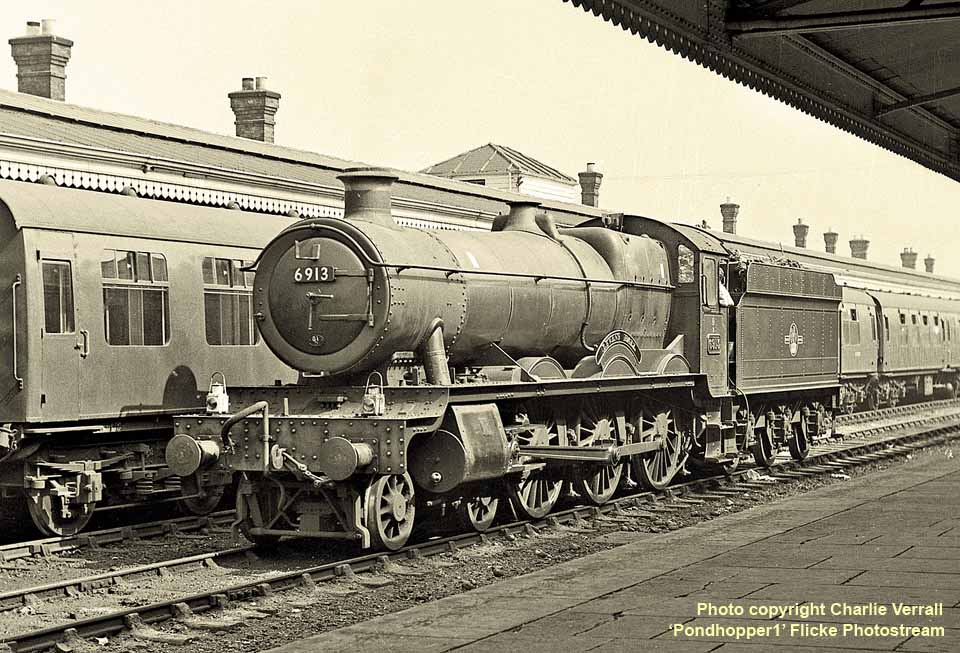
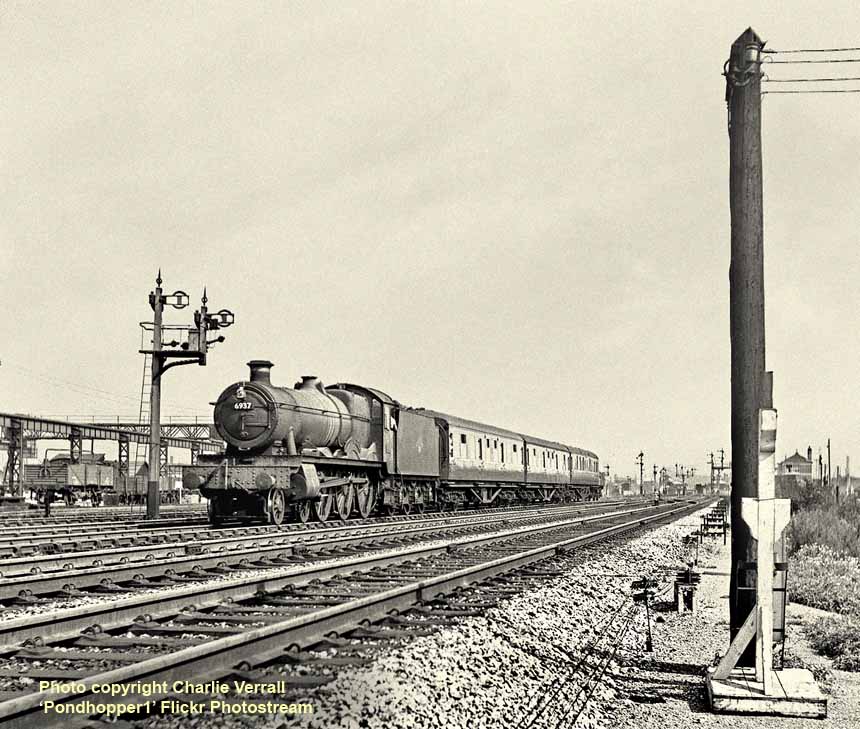
(Above-Below) Another Hall class seen was 6937 Conygham Hall seen here departing with the 2.40pm to Swindon. 6937 was built at Swindon during July 1941 and withdrawn in December 1965. (Below) Also seen leaving departing from Reading General was Castle Class 4-6-0 5096 Bridgwater Castle with a down express from Paddington. 5096 emerged from Swindon Works during July 1939 and was withdrawn in June 1964.
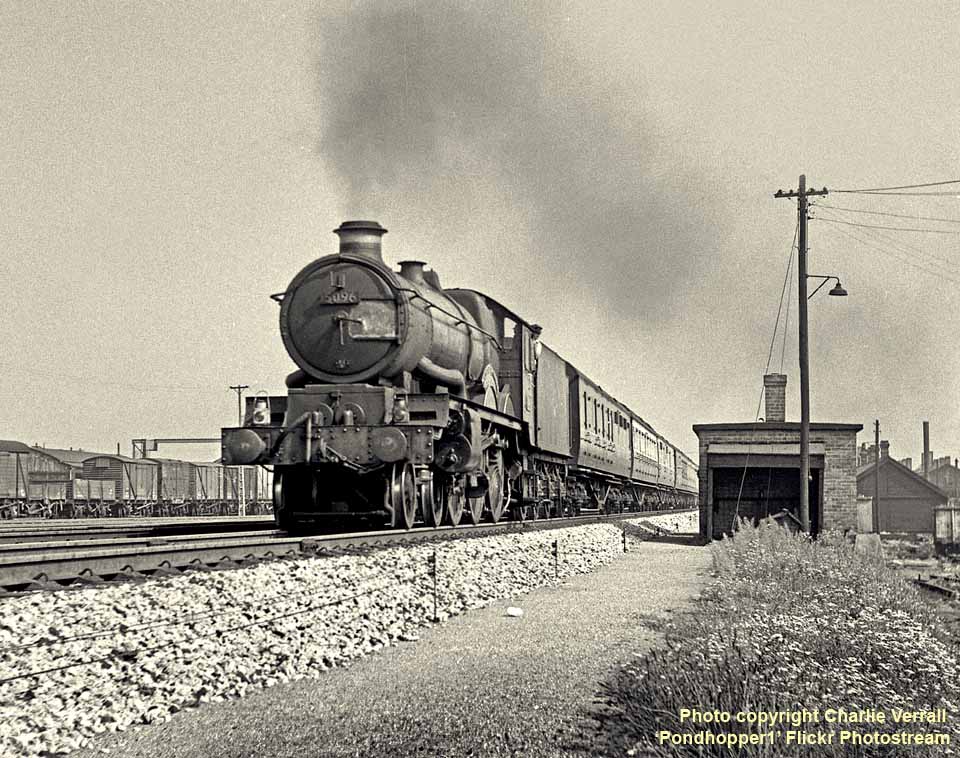
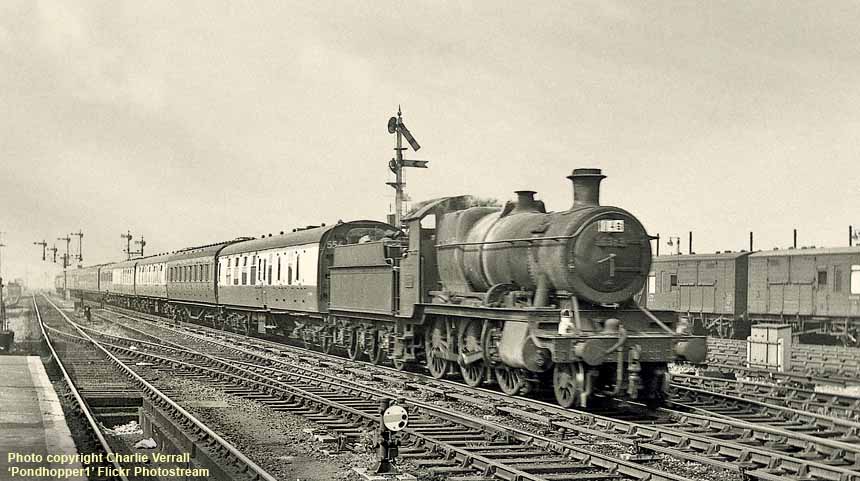
(Above-Below) Seen entering Reading General with the 10.42am Wolverhampton to Ramsgate was this scruffy 4300 class 2-6-0 6313, which would have worked this service from Wolverhampton. A Southern Region would take this service from Reading to Redhill. 6313 was built at Swindon in January 1921 and withdrawn not long after this photograph was taken in November 1961. (Below) Another Hall seen, this time on Reading Shed was 4950 Patshull Hall. No 4950 was built at Swindon in August 1929 and withdrawn in May 1964.

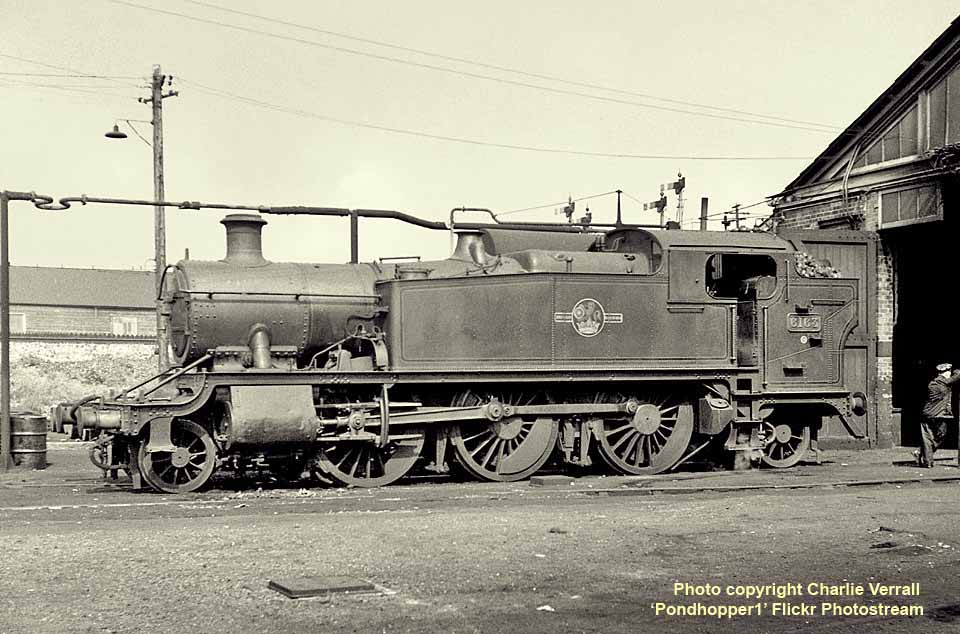
(Above-Below) The 6100 class 2-6-2 tanks were primarily built to work the suburban services out of Paddington. 6163, built at Swindon in October 1935, is seen here on Reading Shed. The loco was withdrawn in October 1965. (Below) The 7200 class 2-8-2 tanks were rebuilds with trailing wheels and extended bunkers of earlier class 4200 and 5205 class 2-8-0 tanks. 7238 was a rebuild of 5273 and emerged in February 1936 from Swindon, 5273 being stored and never running in traffic. 7238 was withdrawn in April 1964.
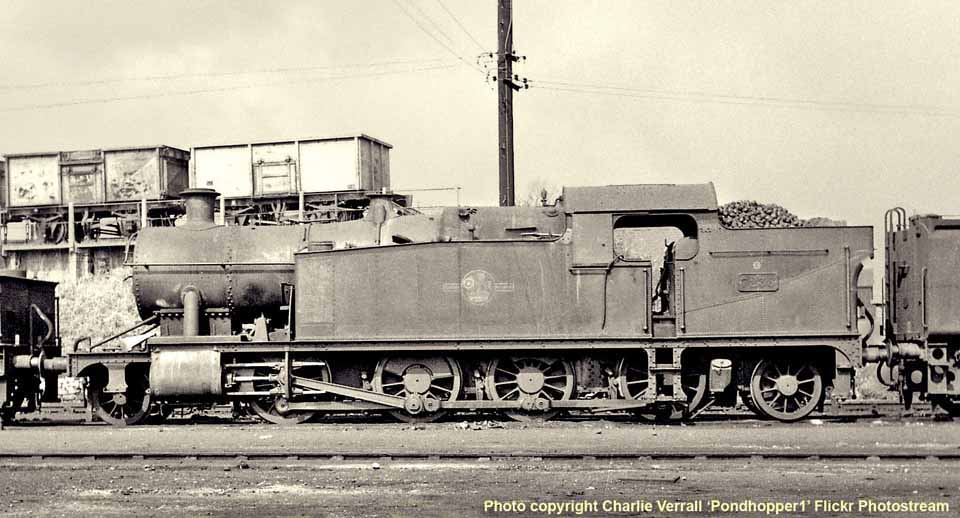
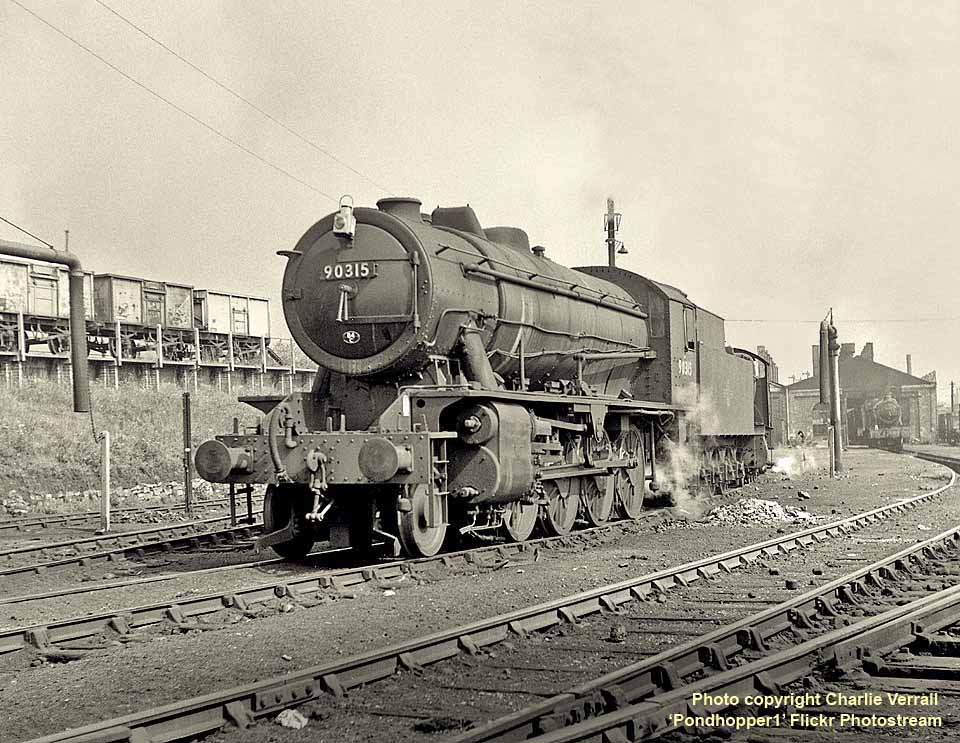
(Above-Below) Several hundreds of Riddles designed 2-8-0s were build for the War Department by the North British Locomotive Company and the Vulcan Foundry between 1943 and 1946. Many were loaned to the Railways in Britain, and in 1947 the LNER purchased 200 which became their class O7. A further 533 were purchased by British Railways at the end of 1948. 90315 , seen here on Reading Shed, was one of these purchases. Built by North British in August 1944 it was originally WD 808 and later became 70808. Renumbering to 90315 took place in October 1952. Withdrawal came during November 1965. (Below) The final batch of Class 9F 2-10-0s built at Swindon and Crewe were fitted with double chimneys and one of these, 92207, is seen here on shed. Emerging from Swindon Works in June 1959, 92207 had a short life being withdrawn in December 1964.
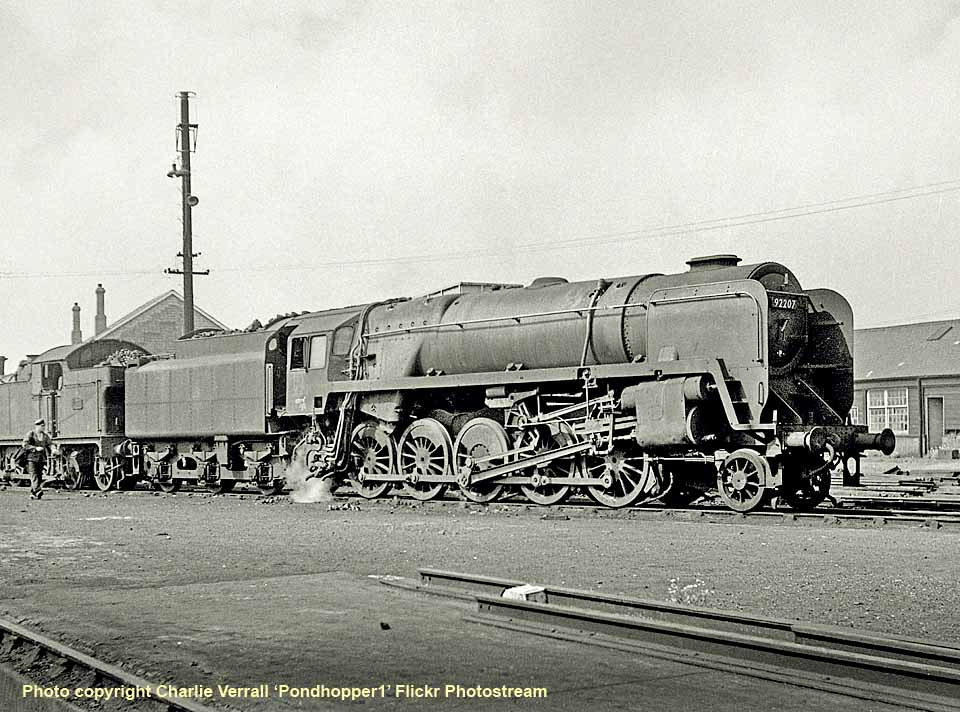
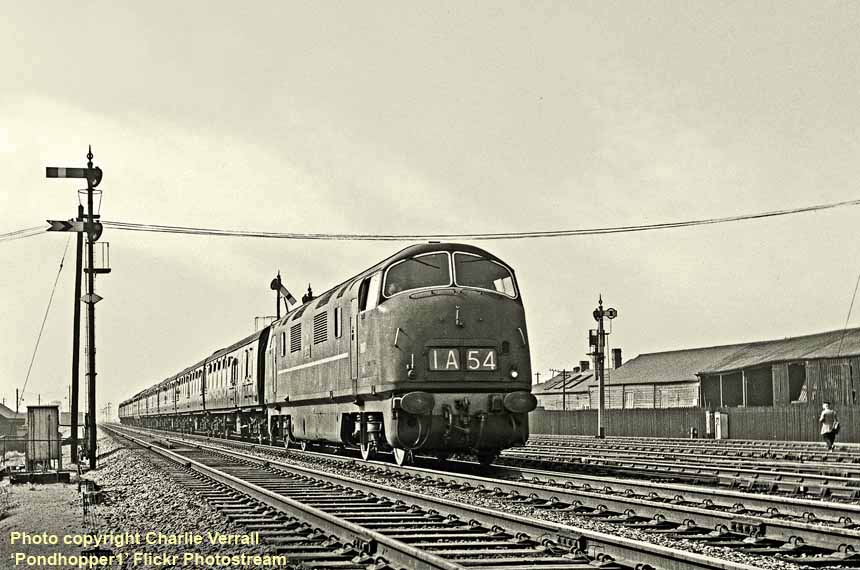
(Above) Finally returning to the mainline here is Warship Class B-B diesel hydraulic D817 Foxhound working the 10.35 Torquay to Paddington. Built at Swindon and entering service in March 1960, D817 was withdrawn in October 1970.
CHAPTER SIX
MORE 1961 MEMORIES
MORE 1961 MEMORIES
Later in 1961 the Freight Section moved to the new Divisional Managers Office at Essex House and was absorbed into the Special Traffic Section and I was appointed full time Ballast Clerk. In addition to again working alongside David Duncan, I was in the same section as J J Smith and S C Nash, both Southern photographers of some note. Later I moved to the Engine Diagrams section working on the day-to-day changes to the diagrams. Essex House closed during July 1984 and has since been demolished.
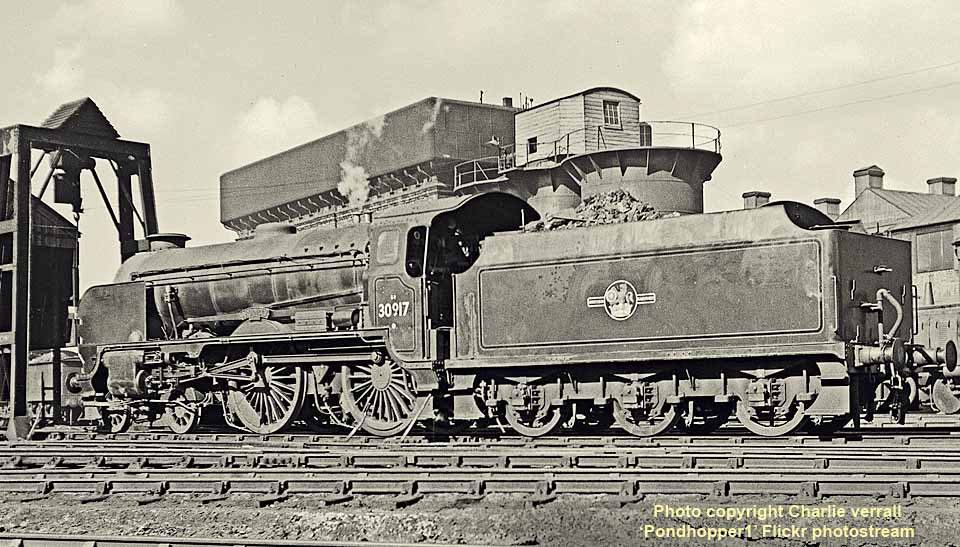
(Above-Below) I was back a Brighton on September 9th to photograph Schools Class 4-4-0 30917 Ardingley and Q class 0-6-0 30544. Built at Eastleigh in May 1933, No 30917 was fitted with a Lemaitre blastpipe in May 1940; withdrawal took place in November 1962. (Below) For some reason 30544 was running in the shed yard with the smokebox door open, which could not have helped the steaming. In the right background can be seen another Q Class, 30533. No 30544 was built at Eastleigh during April 1939, the Lemaitre blastpipe being fitted in June 1946. Withdrawal took place in January 1964.
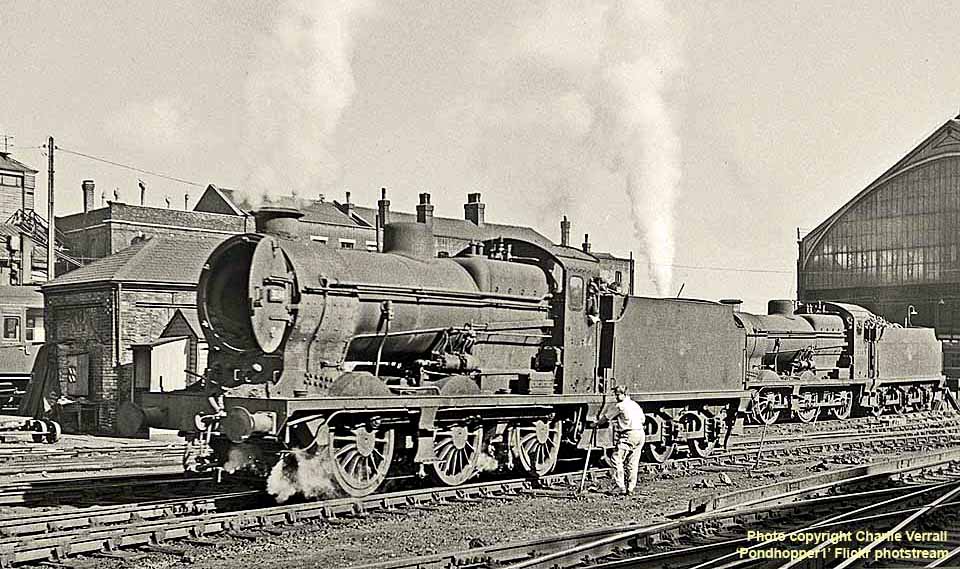
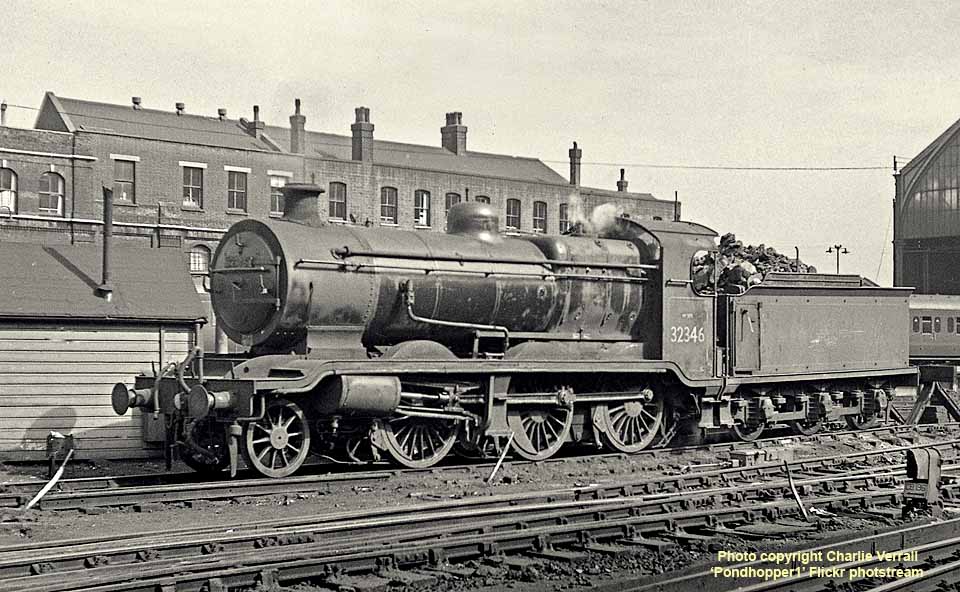
(Above-Below) The next day, September 10th, I was back at Brighton to photograph K class 2-6-0 32346. Built at Brighton in December 1916, 32346 was withdrawn during November 1962 and was on of the many engines stored in Hove Goods yard awaiting removal for scrapping. (Below) U1 class 2-6-0 31893 is seen here on September 1st approaching Wivelsfield station with a Sunday morning return engineers train from Berwick (Sussex) to Three Bridges. 31893 was built at Eastleigh and entered service during February 1931. Withdrawal took place in December 1962.
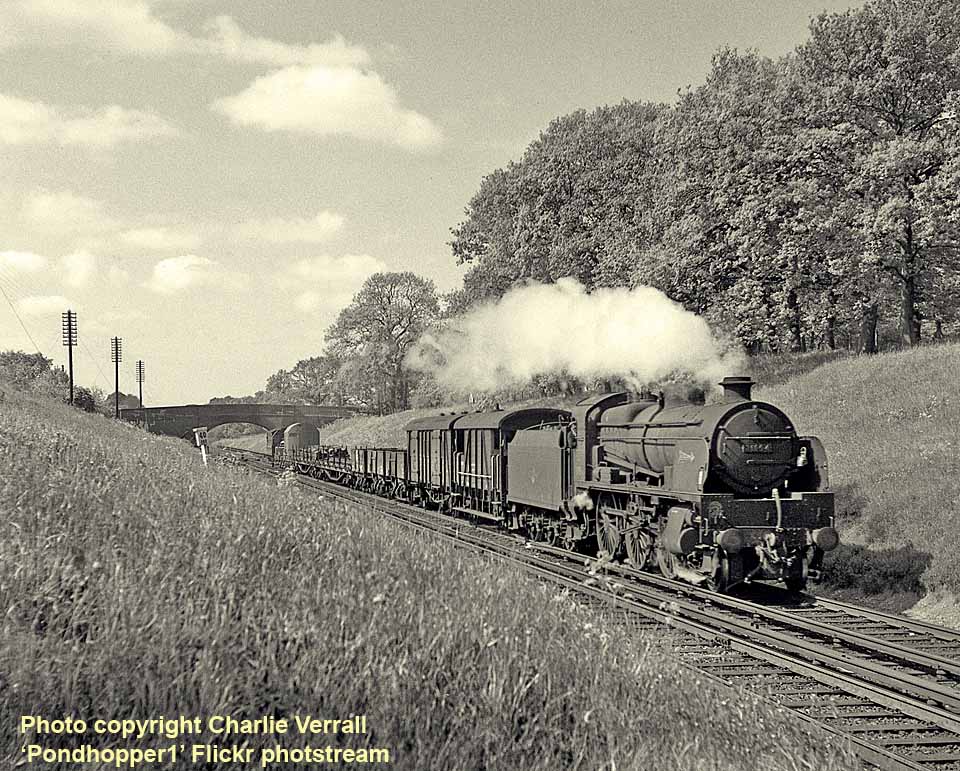

(Above-Below) A race meeting was held at Lingfield on October 4th and I slipped out of the office at Essex House in time to photograph N class 2-6-0 31410 leaving on the down relief line with the 11.54am race special from Victoria. 31410 was built at Ashford in November 1933 and withdrawn from Guildford Shed in November 1964. (Below) On October 14th I travelled behind West Country class 4-6-2 34019 Bideford as far as Bournemouth Central on the 9.30am Brighton to Bournemouth West. Brighton-built 34019 entered service as 21C119 in December 1945, later renumbered 34019 in May 1948; withdrawal came in March 1967.

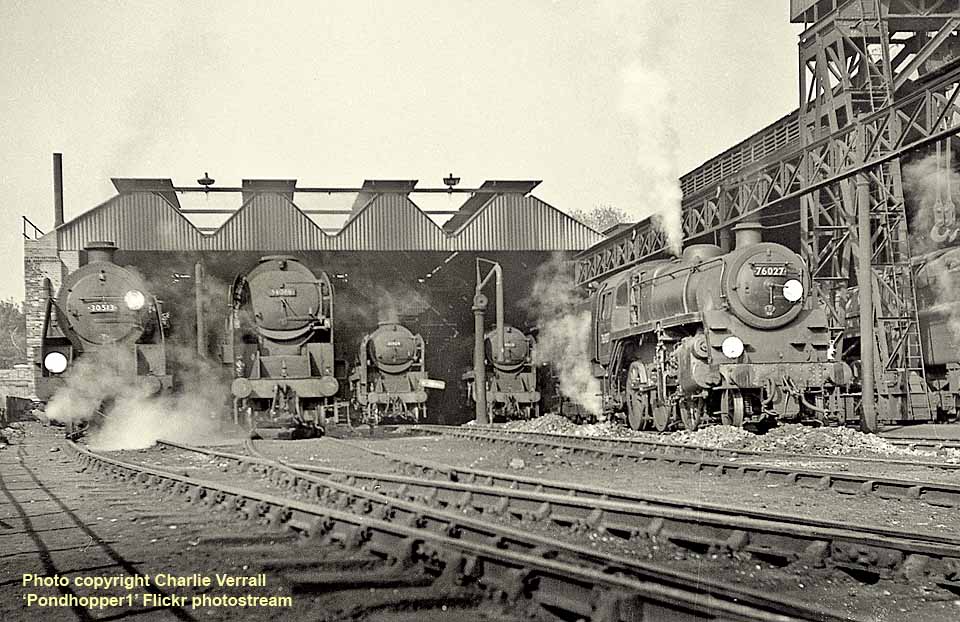
(Above-Below) On shed at Bournemouth were S15 class 4-6-0 30513, Battle of Britain class 4-6-2 34056 Croydon and Merchant Navy Class 4-6-2 35024 East Asiatic Company. I saw this loco at Brighton in February .... when it was painted in dark blue with three horizontal red lines testing the proposed new blue livery. This livery was not approved although a later modified version was. West Country Class 4-6-2 34039 Boscastle and Standard 4 2-6-0 76027 feature prominently in this shot of the shed yard. (Below) On the way back to Brighton I called in at Eastleigh Shed and photographed several withdrawn locos waiting to be broken up. The included O2 class 0-4-4 tank 30223, built at Nine Elms and entering service as LSWR 223 in October 1892; withdrawal took place in October 1961.
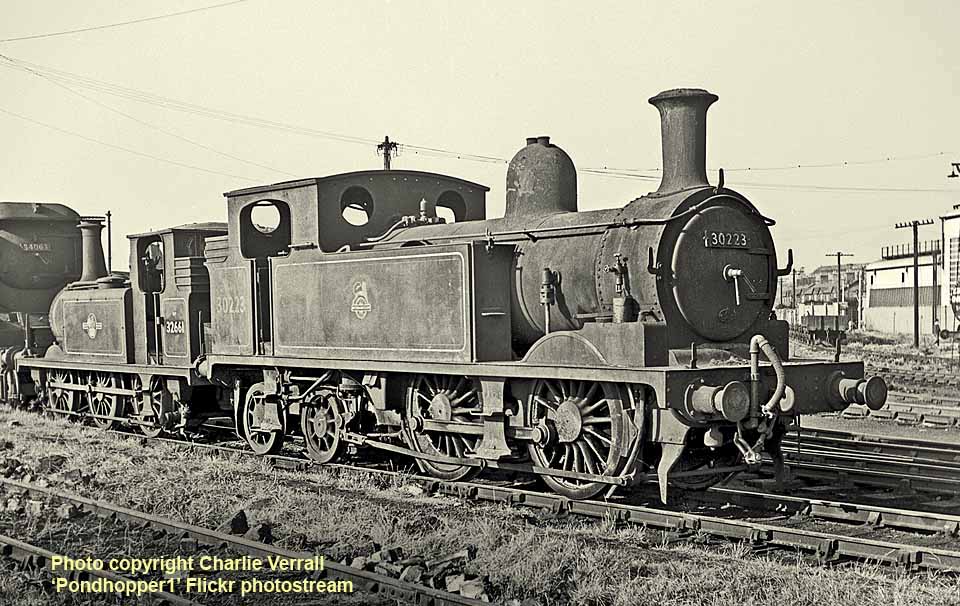
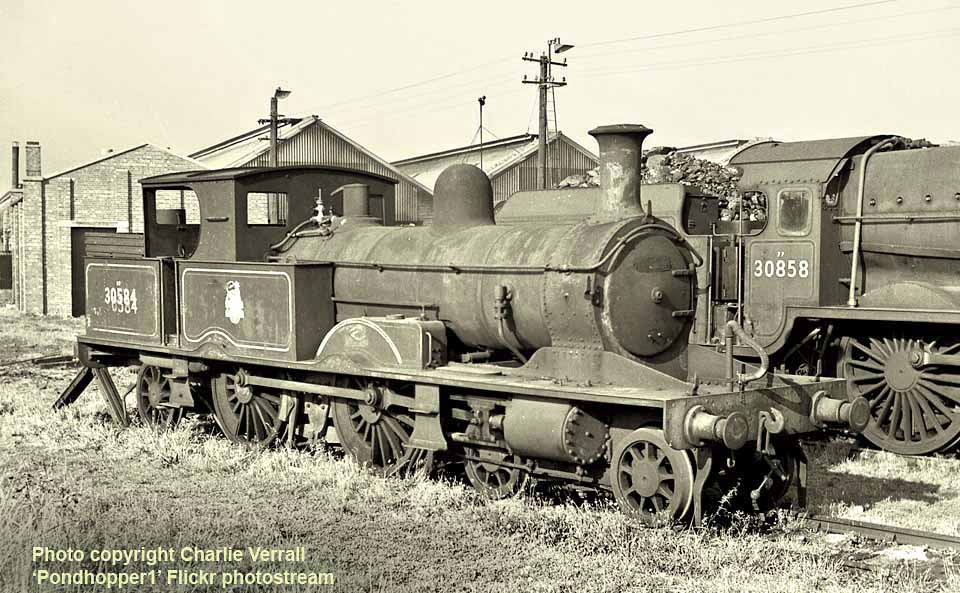
(Above-Inset-Below) Also awaiting the cutters torch was 0415 class 4-4-2 tank 30584, one of the three of this class which stayed in service far longer that the other class members; 30584 worked the Axminster to Lyme Regis branch until replaced by LMS class 2 2-6-2 tanks at the end of 1960. 30584 was the 'spare' engine and sent to Eastleigh for withdrawal on January 19th 1961. The other two locos in the class soldiered on in turn with the LMS 2-6-2 tanks until July 1961. 30584 was built by Dubs & Co in December 1885 and became London and South Western Railway 520, placed on the duplicate list it became 0520 in February 1922 and Southern Railway 3520 in January 1934; the British Railways number 30584 was applied in April 1948. One of the three survived on the Bluebell Railway, where it ran as 488 for several years. It has since been withdrawn
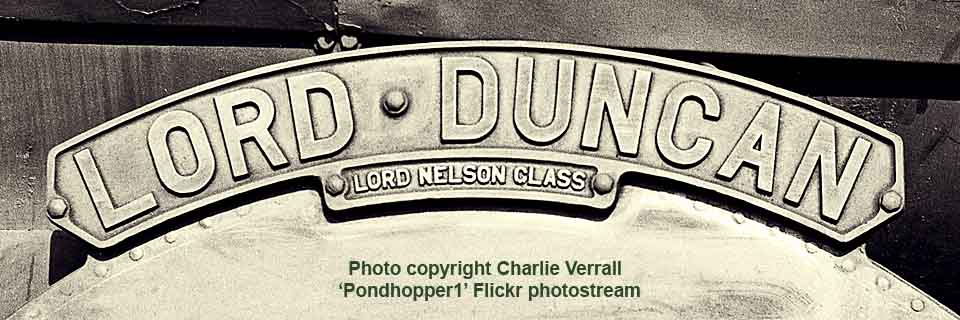 and is unlikely to run again unless a new boiler can be built. To the right of 30584 is Lord Nelson class 4-6-0 30858 Lord Duncan which was withdrawn in August 1961. (Below) M7 class 0-4-4 tank 30668 was built at Nine Elms and entered service as LSWR 668 in September 1897, withdrawal took place in August 1961.
and is unlikely to run again unless a new boiler can be built. To the right of 30584 is Lord Nelson class 4-6-0 30858 Lord Duncan which was withdrawn in August 1961. (Below) M7 class 0-4-4 tank 30668 was built at Nine Elms and entered service as LSWR 668 in September 1897, withdrawal took place in August 1961. 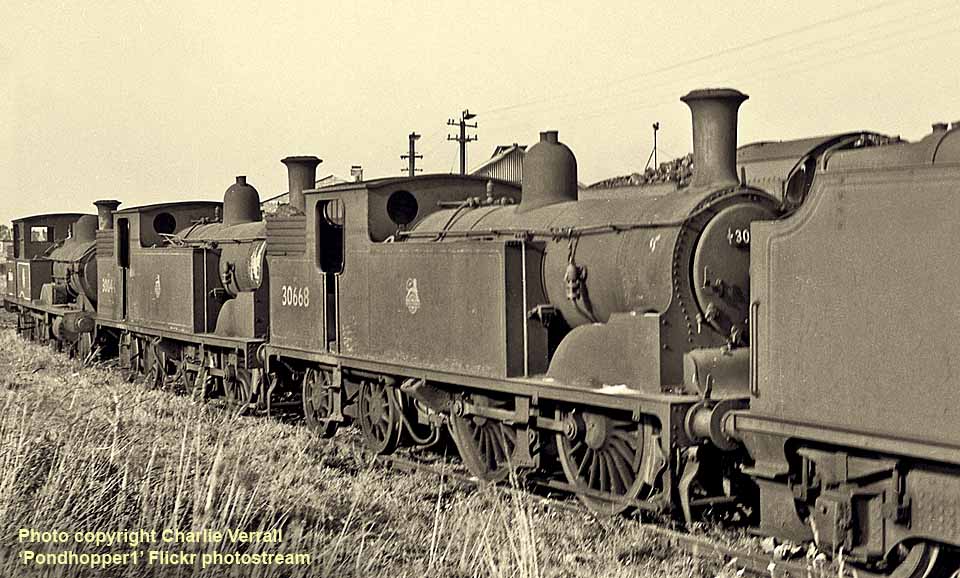
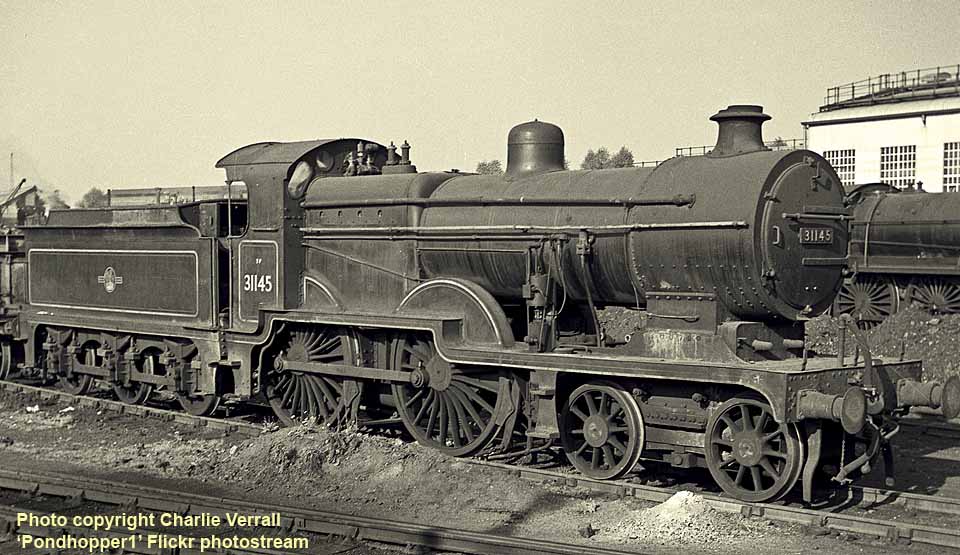
(Above-Below) No 31145 was one the D1 class 4-4-0 rebuilds which were similar in appearance to the earlier E1 class 4-4-0 rebuilds except the E1s had fluted coupling rods whereas those on the D1s were plain. 31145 was rebuilt from D class 4-4-0 No 145 in November 1922 and withdrawn from Nine Elms in October 1961. (Below) Also on shed at Eastleigh was LMS Class 2MT 2-6-2 tank No 41216 which had arrived from Rhyl. After entering Eastleigh Works the loco was transferred to Barnstable Junction. No 41216 was built at Crewe in September 1948 and withdrawn in March 1966.
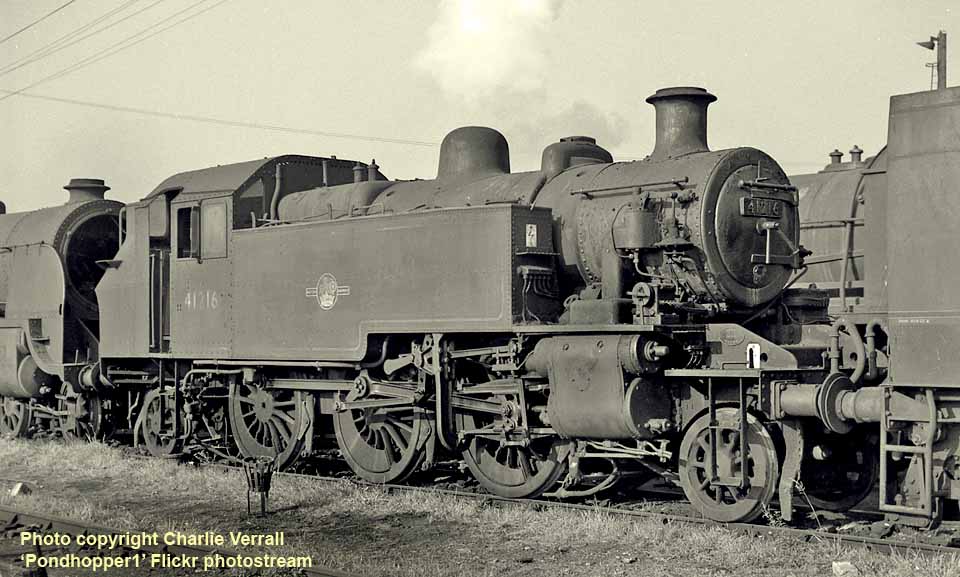
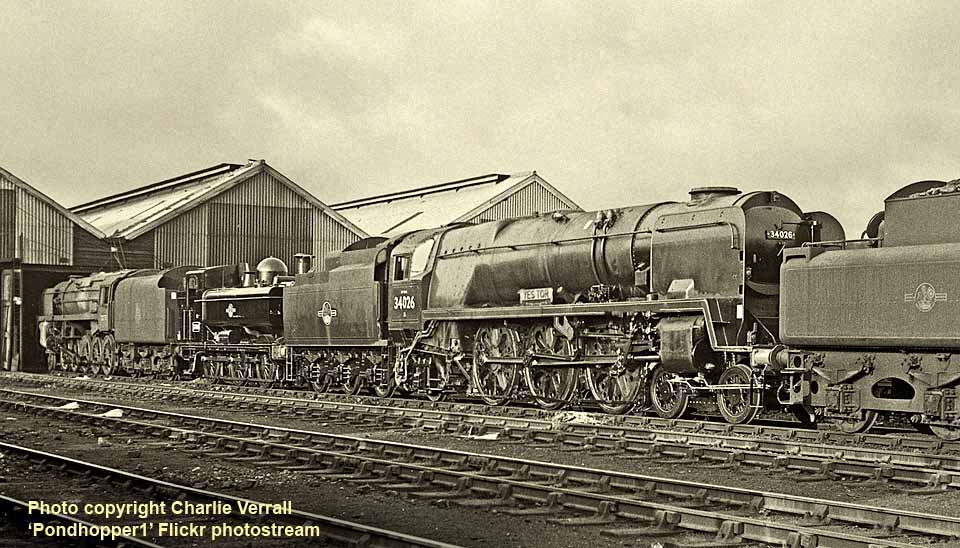
(Above-Below) A very clean rebuilt West Country 4-6-2 34026 Yes Tor. Built at Brighton this loco entered service as 21C126 during April 1946. Rebuilt at Eastleigh in May 1958 it was withdrawn in September 1966. Unfortunately I do not have the details of the ex-works pannier tank or the Class 9F 2-10-0. (Below) My final shot at Eastleigh is A1/X 0-6-0 tank 32661, noted for being one of the locos to work their final years on the services between Havant and Hayling Island. 32661 started life as LBSCR A1 class 661 Sutton, being built at Brighton in October 1875. It was placed on the duplicate list in June 1901 as 661 to make way for B4 class 4-4-0 61. As 661 it was rebuilt as an A1/X in January 1912. Surplus to requirements on the Hayling Harbour branch, 32661 was withdrawn in April 1963 and broken up the following September.
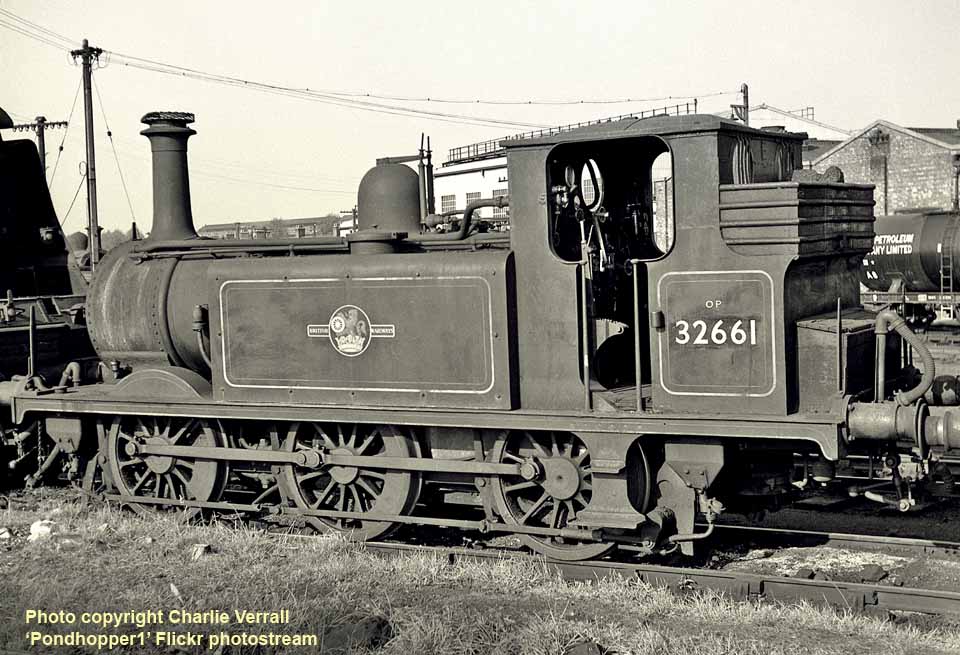
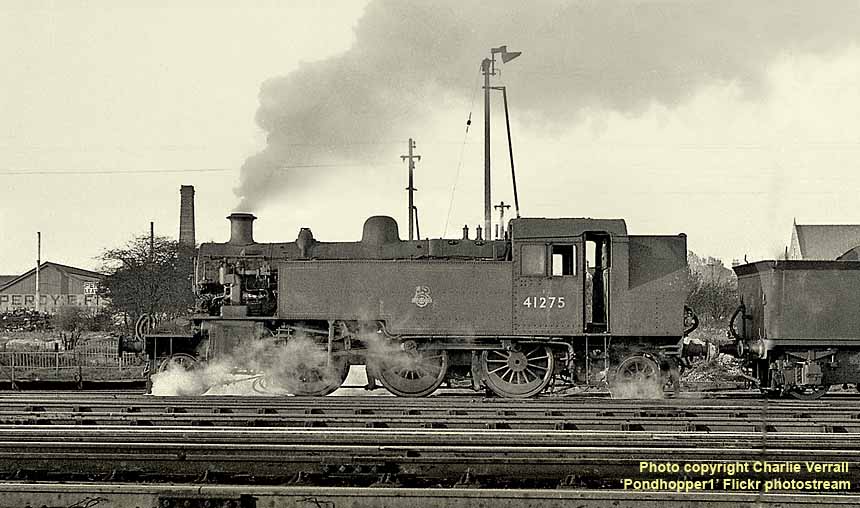
(Above-Below) On November 4th I was in the Basingstoke area, however I must have rejected most if the resulting photographs since only three have survived. On shed was another Ivatt LMS Class 2 2-6-2 tank, this time 41275 on its way from Bletchley to Eastleigh where it would join stablemate 41216 in the Works. No 41275 was built at Crewe and entered service in October 1950. After going through Eastleigh Works it would be transferred to Wadebridge. Withdrawal took place during October 1965. (Below) Seen approaching Basingstoke was Schools class 4-4-0 30905 Tonbridge with an up freight train. 30905 was built at Eastleigh in March 1930 and withdrawn in December 1961. It is coupled to the self trimming tender previously carried from July 1938 by 932, later 30932 Blundell's. 30905 inherited this tender in August 1958 when Ashford painted the tender green and 30932 in a lined black livery.
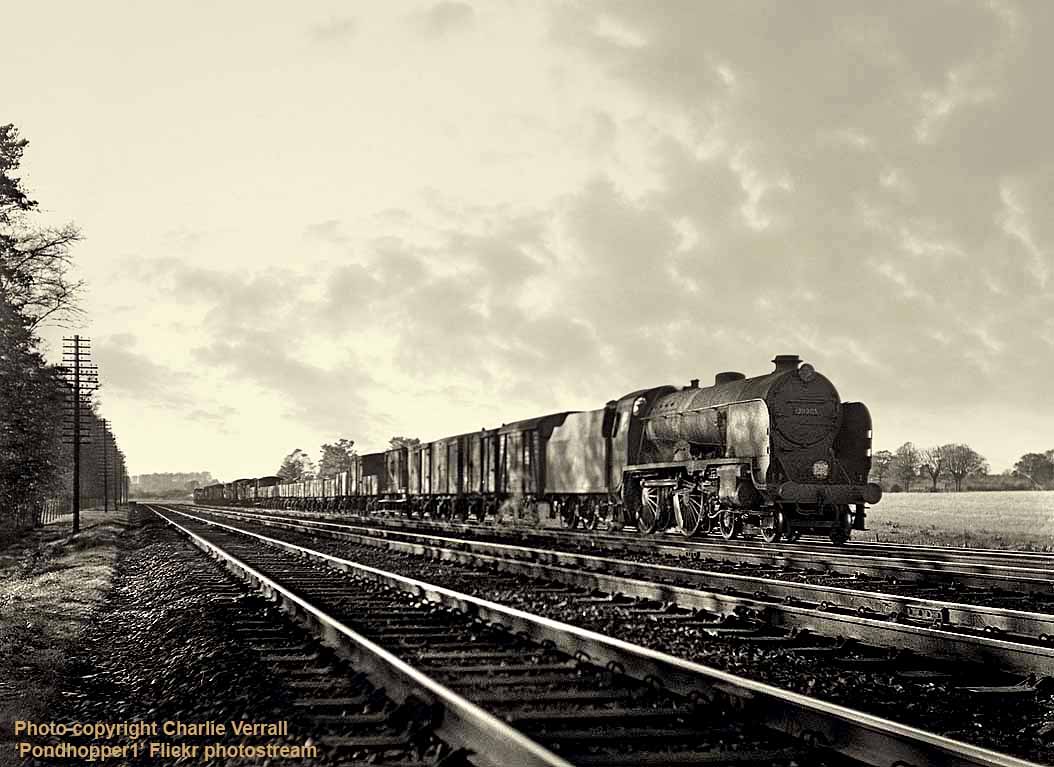
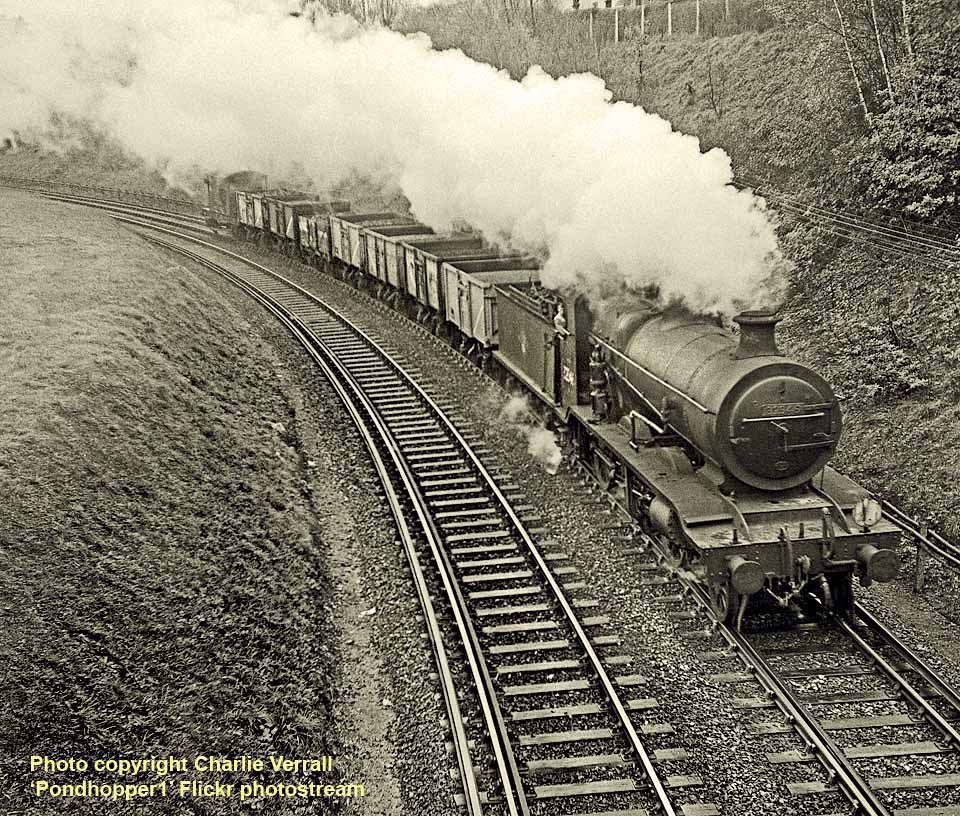
(Above-Below) As Ballast Clerk I had a weekly meeting at the District Engineer's Office at Purley to collect their train requirements for the following week. I rarely took my camera with me, however on November 6th I photographed K Class 2-6-0 32346 going round the tight curve with the 12.08 freight to Tattenham Corner. No 32346 was among the batch built at Brighton which entered service in December 1916, and one the class to be withdrawn in November 1962. (Below) My final trip out in 1961 was again to Basingstoke and Worting junction, where on a foggy day I photographed firstly Merchant Navy 4-6-2 35030 Elder Dempster Lines on the down Atlantic Coast Express. No 35030 was the last of the class and entered service during April 1949. Rebuilt in April 1958 it was withdrawn in July 1967.
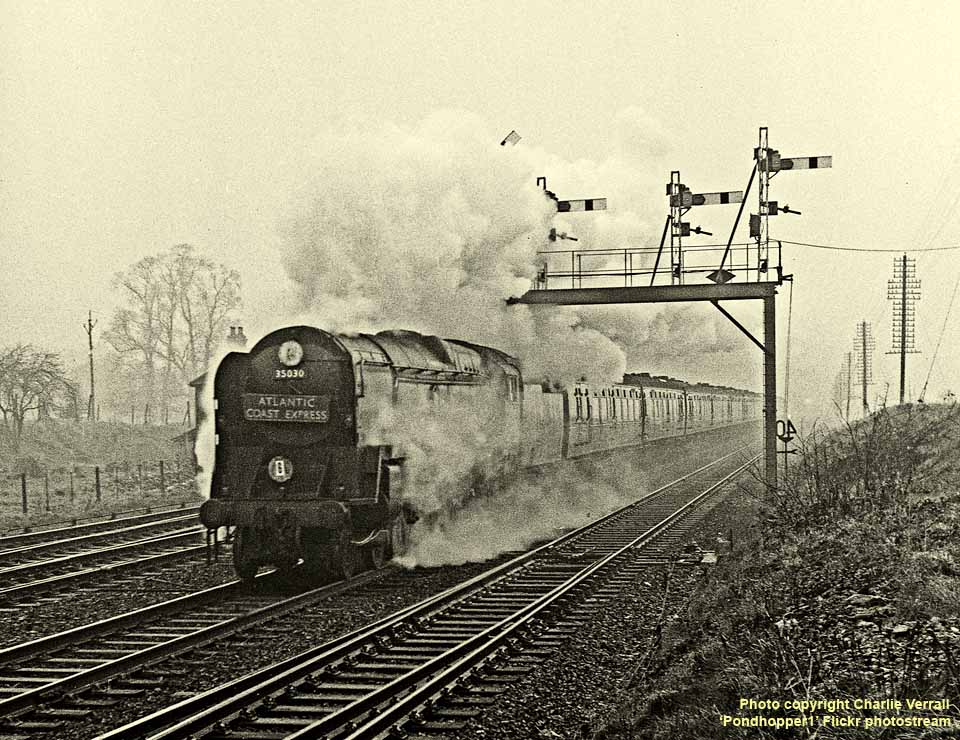
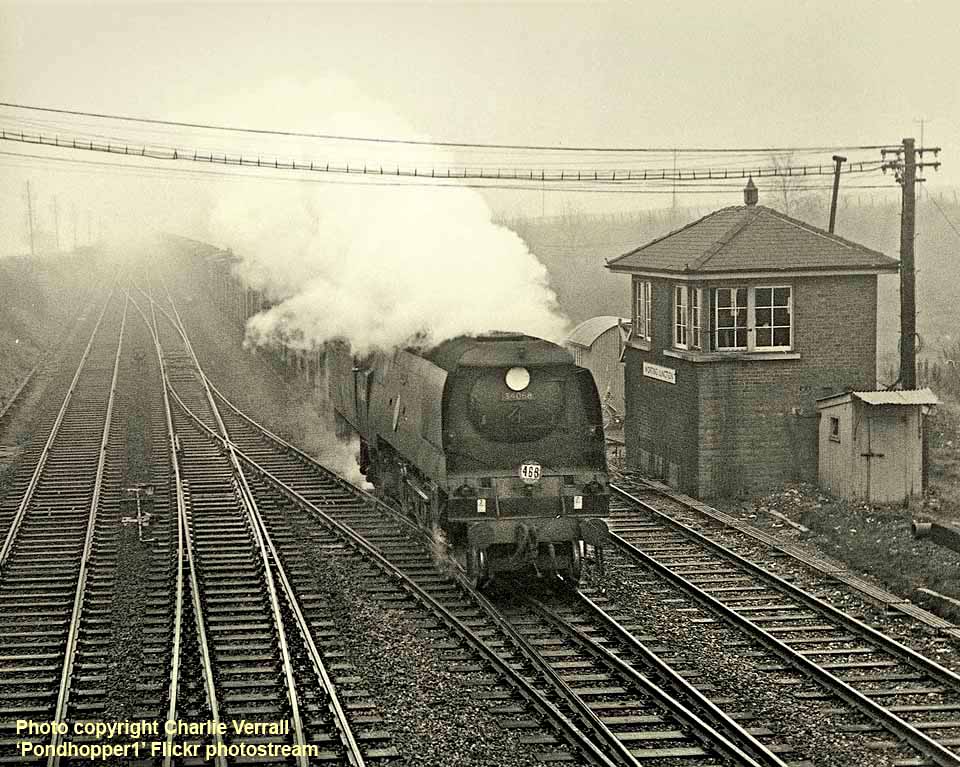
(Above) Battle of Britain class 4-6-2 34068 Kenley passes Worting Junction signal box with the 8.10am freight from Templecombe to Feltham. 34068 was built at Brighton and entered service as 21C168 during October 1947, withdrawal took place in December 1963.
1961 PHOTO GALLERY FOUR
SALISBURY - NOVEMBER 25th 1961
To me Salisbury was always a place of interest, with the Western Region joining the Southern Region mainline to the West as well as Southern services coming via Eastleigh. My habit was to take some photographs just west of the station and then walk along the track towards Dinton making sure I captured some of the WR movements coming and going in the Westbury direction. As with all of my photographs of the period my records have been lost so the following may not be in chronological order.
(Below) I must have come down from Waterloo on the 9.00am West of England train, seen here departing behind Battle of Britain Class 4-6-2 34050 Royal Observer Corps. 34050 was built at Brighton and entered service as 21C150 during December 1946. Rebuilt at Eastleigh in August 1958 it was withdrawn during August 1965. Since 34050 had been in service for twelve years on July 2nd 1961 it was awarding the Royal Observer Corps long service award plaques, which were attached to the cab sides
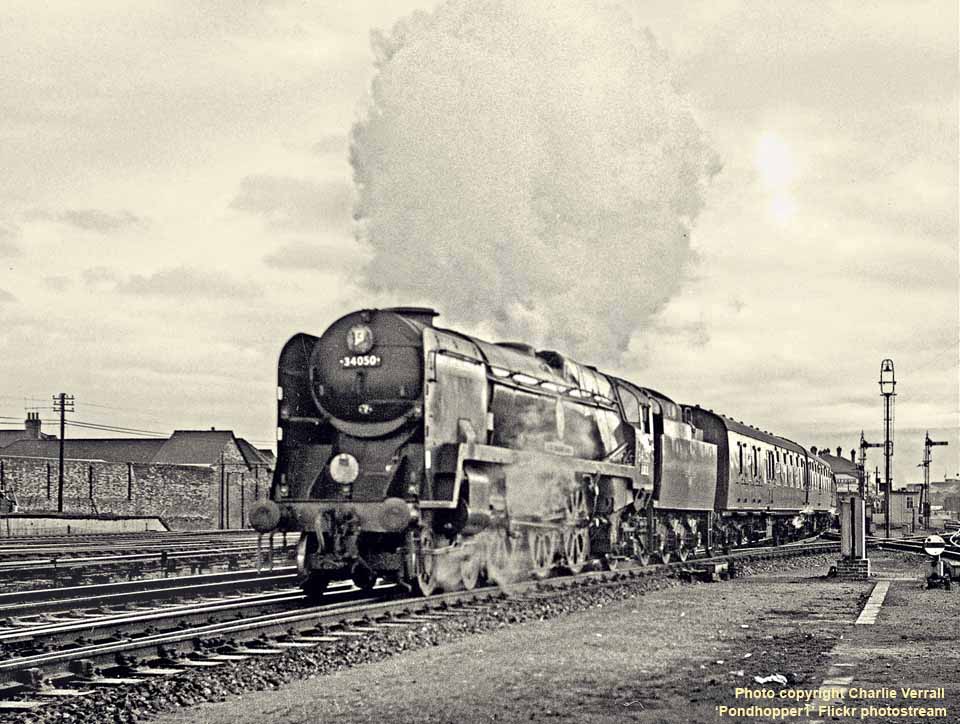
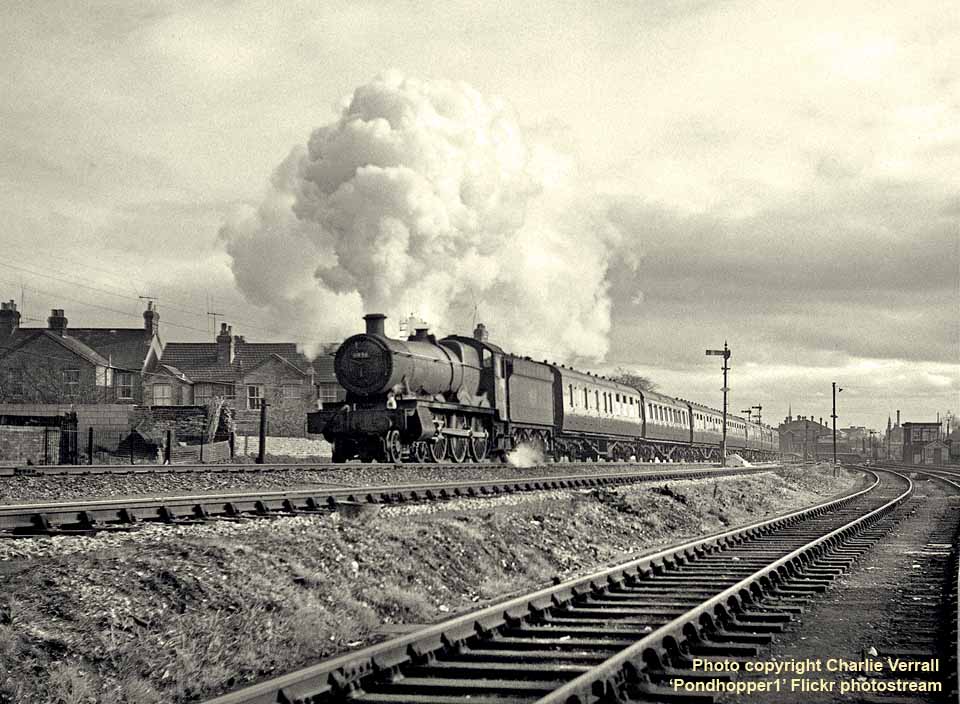
(Above-Below) One of the inter-Regional services was the 9.30am Portsmouth to Cardiff, seen here departing behind Hall Class 4-6-0 6936 Breccles Hall. 6936 was built at Swindon in December 1941 and was withdrawn in November 1964. (Below) Transferred from Exmouth Junction the previous month, this smart M7 Class 0-4-4 tank 30021 was acting as station pilot. Built at Nine Elms in January 1904, 30021 was withdrawn during March 1964.
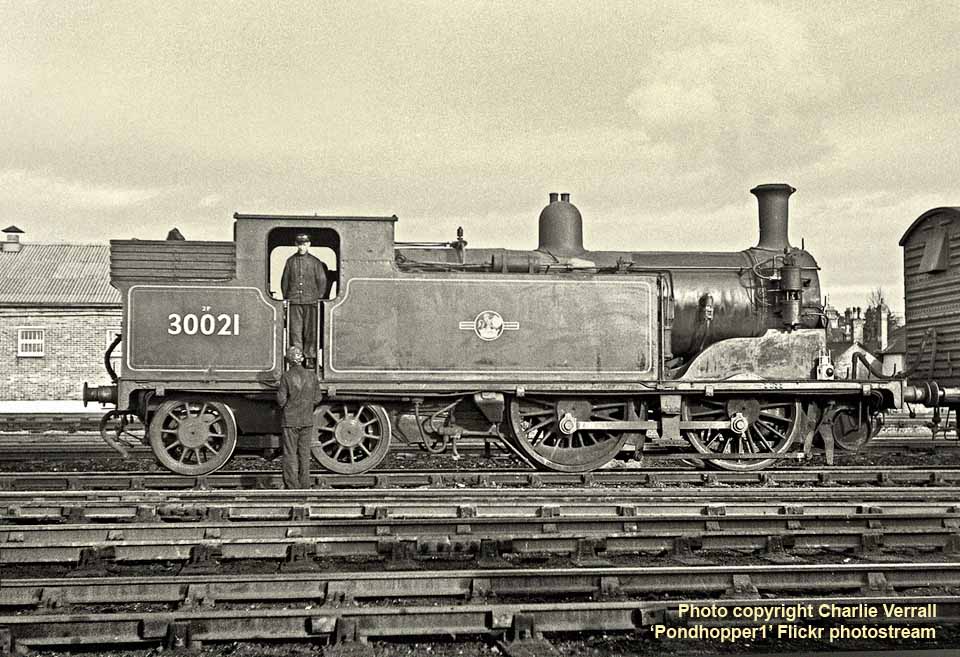
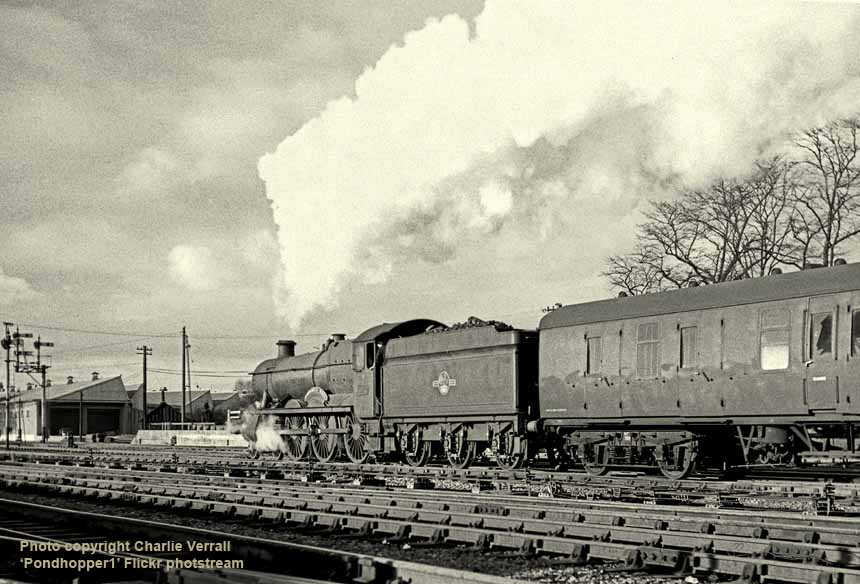
(Above-Below) Another through inter-Regional service was the 11.00 Brighton to Cardiff seen here leaving behind hall Class 4-6-0 6932 Burwarton Hall, to the left can be seen the closed ex GWR loco shed. 6932 was built at Swindon in December 1941 and was withdrawn in December 1965. (Below) Passing the old GWR loco shed with a freight is 4700 class 2-8-0 4702. I always regarded these rather elusive Churchward locos as being one of the most attractive of all the designs coming out of Swindon. 4702 was a Southall based loco and how it came to be working this service is a bit of a mystery; it was built at Swindon in June 1922 and withdrawn in June 1962.

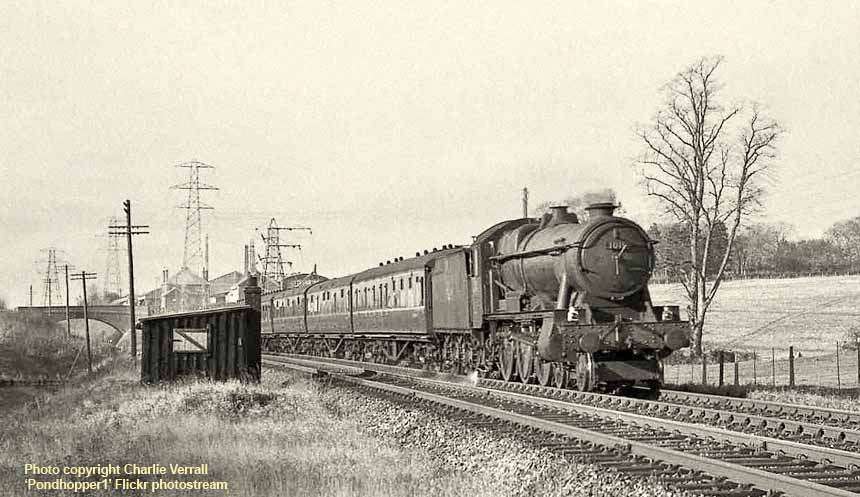
(Above-Below) County Class 4-6-0 1011 County of Chester is seen here approaching Salisbury with the 10.55 ex-Bristol. Built at Swindon in January 1946, 1011 was withdrawn in November 1964. (Below) Next I photographed the arrival of the 2.35am ex-Radyr freight hauled by 2884 Class 2-8-0 3850. Built at Swindon in June 1942 and withdrawn in September 3850 was rescued from Dai Woodham's Barry graveyard and can be seen on The West Somerset Railway.
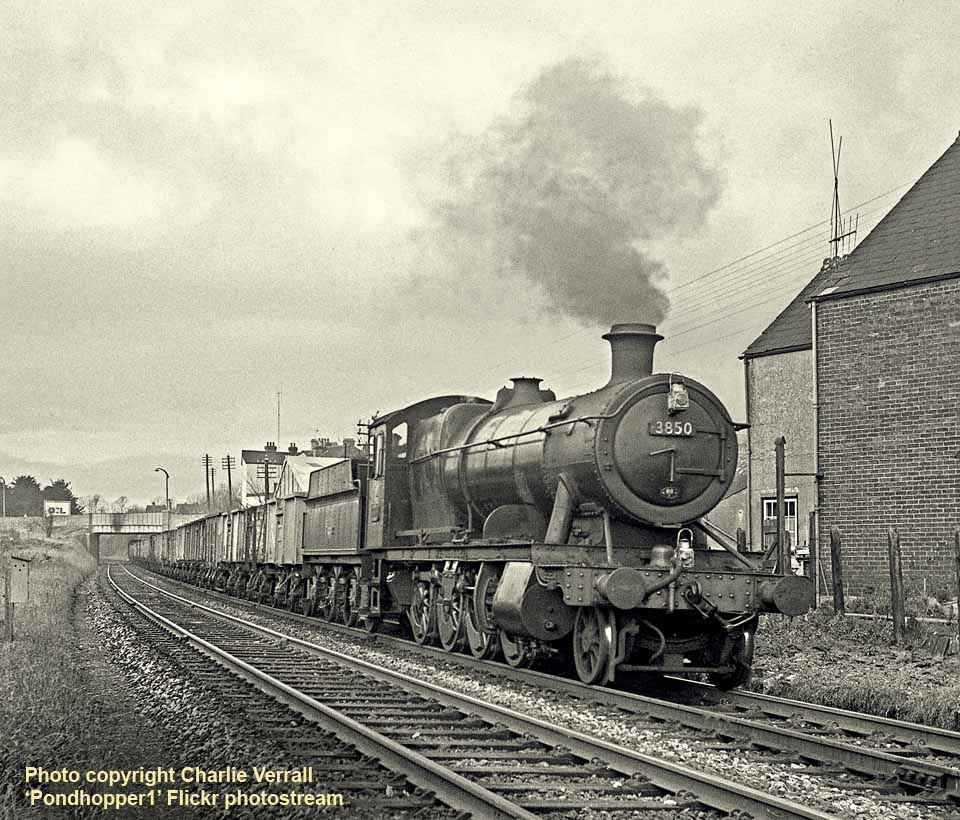
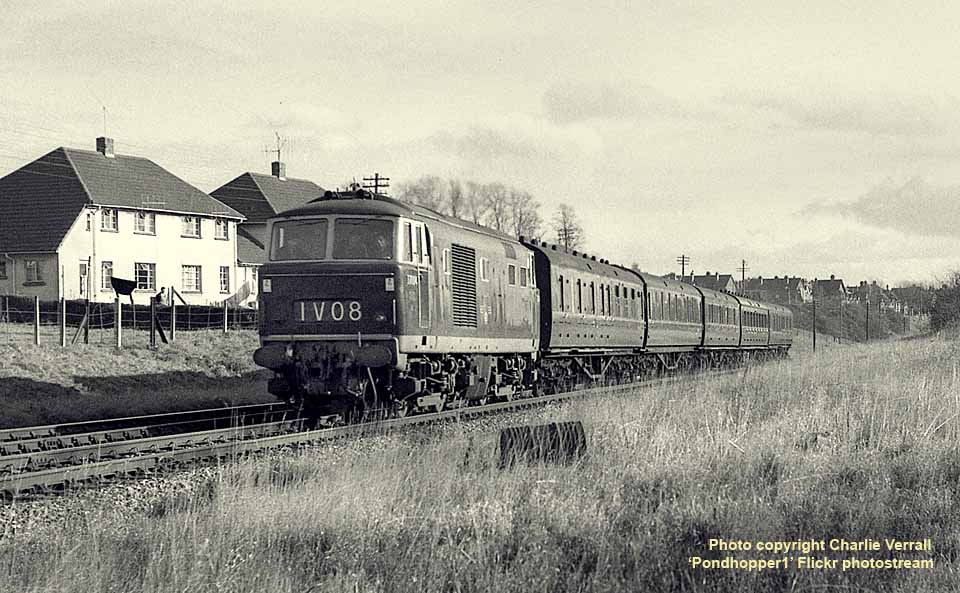
(Above-Below) The Hymek B-B Diesel Hydraulic locos had a regular turn to Salisbury and D7004 is seen working the 12.18 to Bristol Temple Meads. D7004 was built by Beyer Peacock and entered service in August 1961, and as with all of the class had a short life being withdrawn in June 1972. (Below) Walking down the Southern tracks toward Dinton I photographed Rebuilt Merchant Navy 4-6-2 35029 Ellermen Lines on the Down 'Atlantic Coast Express'. Built at Eastleigh in February 1949, 35029 was rebuilt at Eastleigh in September 1959 and withdrawn in September 1966. 35029 now resides at York Railway Museum having been sectionalised.
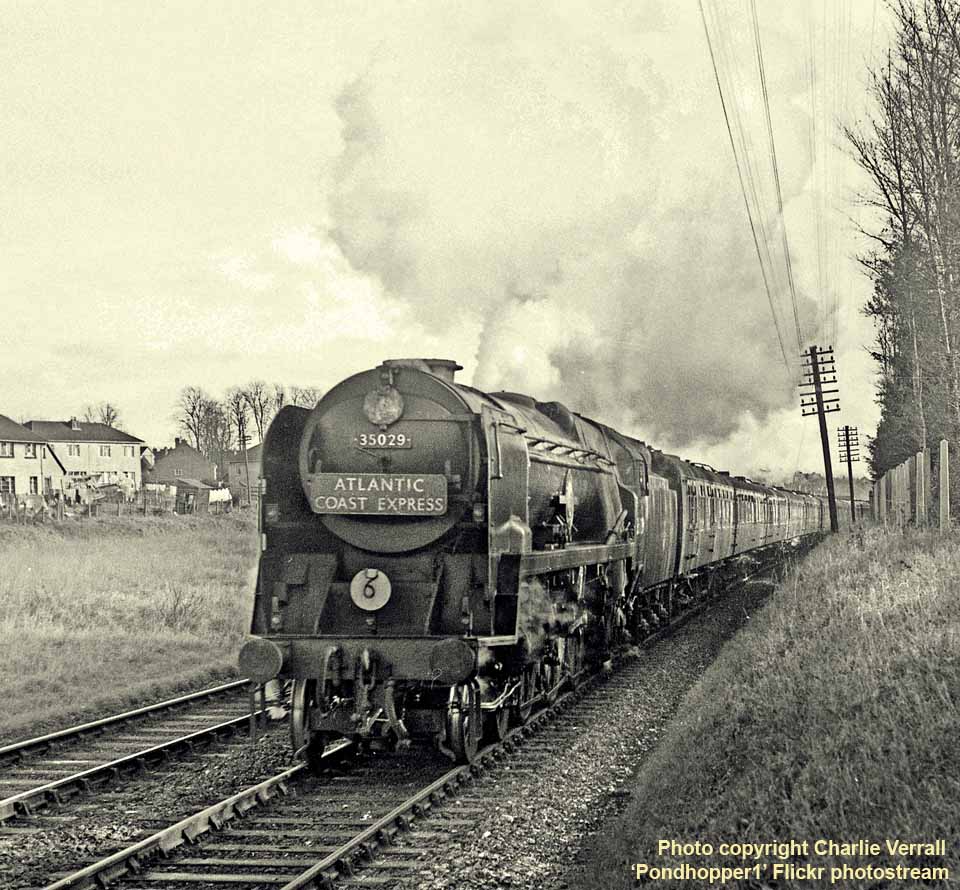

(Above-Below) Another Rebuilt Battle of Britain Class 4-6-2, this time 34052 Lord Dowding leaving with the 1.05pm freight to Templecombe. Built at Brighton as 21C152 and entering service in December 1946, 34052 was rebuilt at Eastleigh in September 1956 and withdrawn in July 1967. (Below) Finally I include this shot taken at the Tunnel Junction side of the station, as BR Standard 4 Class 4MT 2-6-0 76066 departs with the 10.30am Cardiff to Portsmouth. 76066 was built at Doncaster in July 1956 and withdrawn in July 1967.
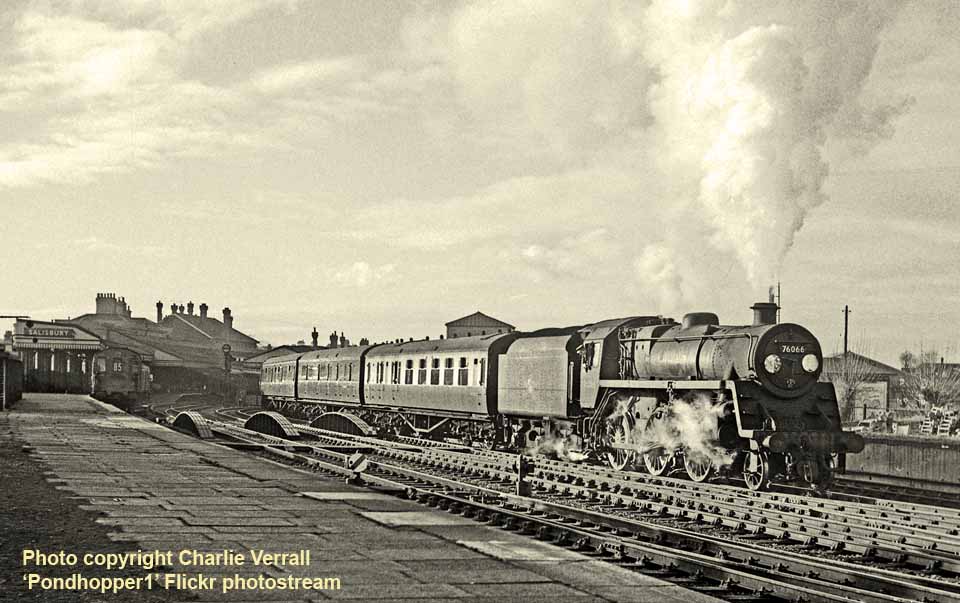
CHAPTER SEVEN - 1962
A YEAR OF MAINLINE PHOTOGRAPHY
In 1962 I continued my photo reconnaissance, which included a number of visits to the Great Northern line between Finsbury Park and Hitchin with the object of photographing the Pacifics and V2s. By this time I was living in Kentish Town and had a track pass for that section of track. My habit was to go out on a Saturday with several rolls of film and stay until the film ran out. When I was working at Essex House on a Saturday morning quite often I would go to Basingstoke on the lunch time semi from Waterloo, frequently hauled by the restored T9 120. Travelling behind the T9 was a rewarding experience, with people in the back gardens making a point of waving to the old girl when she went by.
(Below) 120 at Basingstoke on June 30th 1962 I had just ridden behind her on the midday semi-fast from Waterloo. This T9 was the last of the class in service and was selected for preservation in its rebuilt condition, originally it had an unsuperheated boiler. Preservation work took place at Eastleigh between the end of 1961 and March 1962. 120 was frequently seen in the Summer of 1962 on this Saturday service and also worked a number of Railtours. After September 1962 it was usually seen out of uses at Eastleigh until finally being withdrawn in July 1963. A period of storage at Fratton followed before returning again to Eastleigh. Later there followed a period on loan to the Bluebell Railway and then going to the Bodmin and Wenford Railway. In front of 120 can be seen the tender of 'Hall' Class 5973 Rolleston Hall.

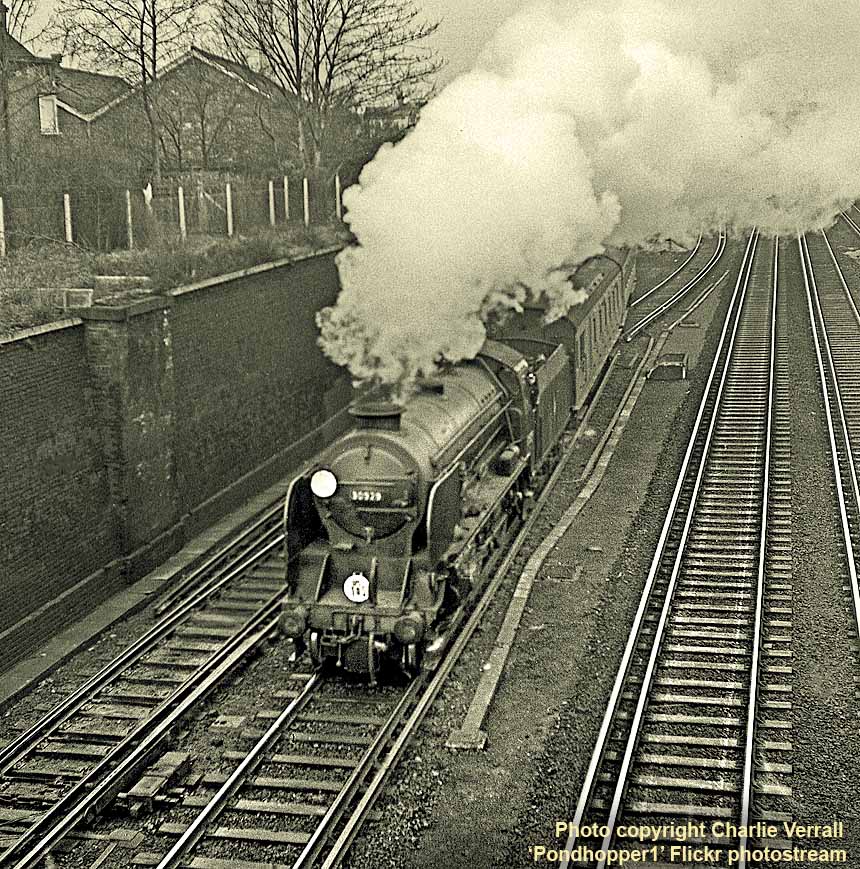
(Above-Below) The Southern Region used the sidings at Eardley, near to Herne Hill, in South London as a collection point for loco-hauled passenger stock needing to go to Lancing Carriage Work. There was a condition timings in the timetable, at 12.23pm from Eardley. On January 9th 1962, Schools Class 4-4-0 30929 Malvern was photographed just south of East Croydon station on this working. No 30929 was built at Eastleigh in July 1934. Fitted with a Lemaitre blast pipe in March 1941, this loco was withdrawn in December 1962. (Below) Seen on the same working on the following day, January 10th, was U Class 3-6-0 31614 passing through East Croydon station. No 31614 was built at Brighton and entered service as A614 in July 1928. Because of cracking in the frames some of the N and U class 2-6-0s had new front frames fitted; in the case of 31614 this was in February 1957. No 31614 was withdrawn during November 1963.
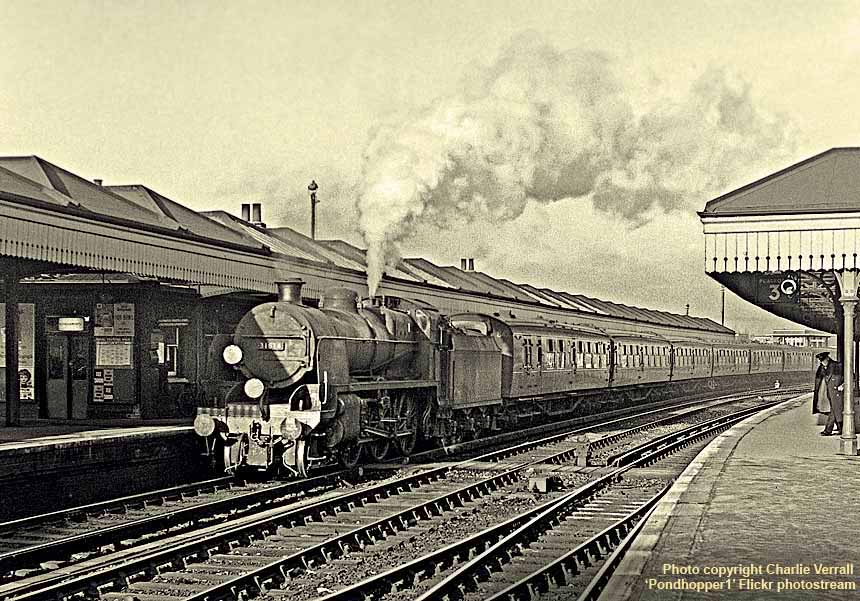
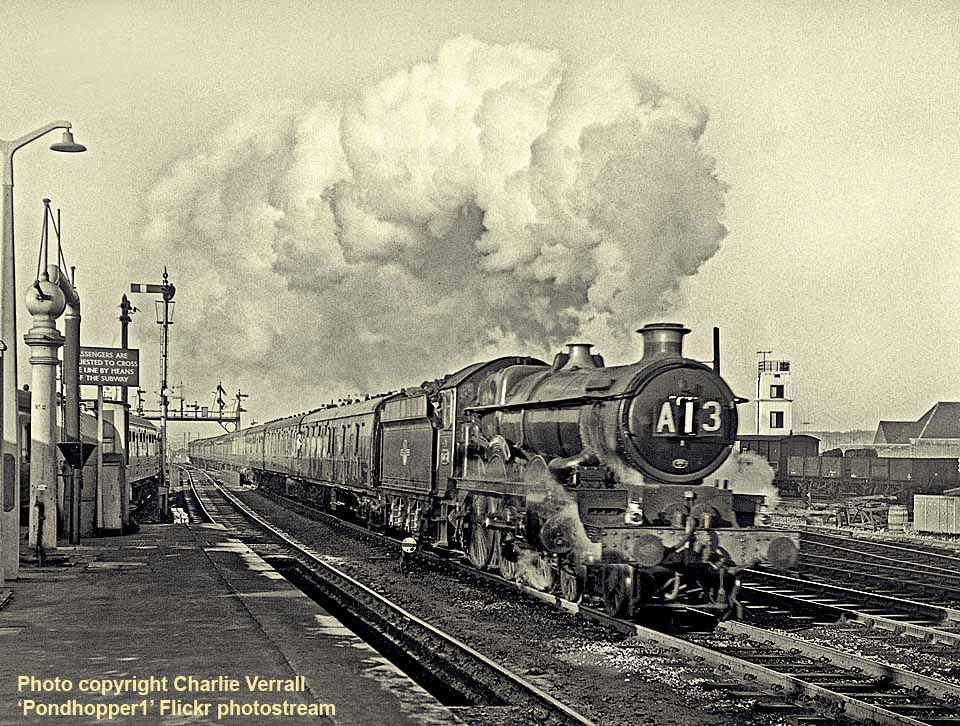
(Above-Below) On a cold January 13th 1962, I was again at Reading, this time focussing on taking shots from the platforms at Reading General station. Here Castle class 4-6-0 5073 Blenheim was photographed entering with the 6.25am Swansea to Paddington. Originally named Cranbrook Castle, No 5073 was one of several members of the class renamed to commemorate the aircraft that featured in the Battle of Britain between 1940 and 1941. 5073 was built at Swindon and entered service in August 1938; withdrawal came in February 1964, the double chimney was fitted in June 1959. (Below) King Class 4-6-0 6000 King George V is coming to a stop with the 4.55am Fishguard to Paddington. Built at Swindon in June 1927, 6000 is carrying the locomotive bell presented in 1927 during 6000's visit to the Baltimore and Ohio Railroad Centenary Celebrations in the USA. Withdrawn in December 1962, 6000 was deserving candidate for preservation and is now in the Swindon Heritage Centre.

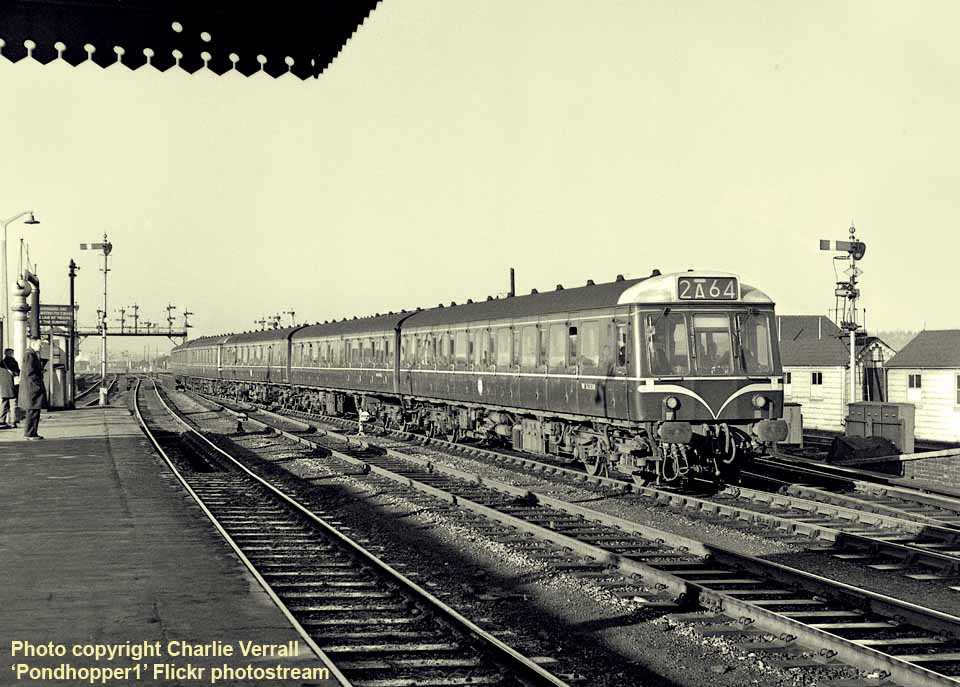
(Above) Finally, BRCW diesel unit W51330 was photographed on an Oxford to Paddington service, which a few years earlier would have been worked by a Class 6100 2-6-2 tank. (Below) On February 11th I returned to Redhill shed and photographed H Class 0-4-4 tank 31005. Built at Ashford as SECR No 5 in March 1909 the loco was fitted for motor train operation during January 1960; withdrawal came in September 1963.

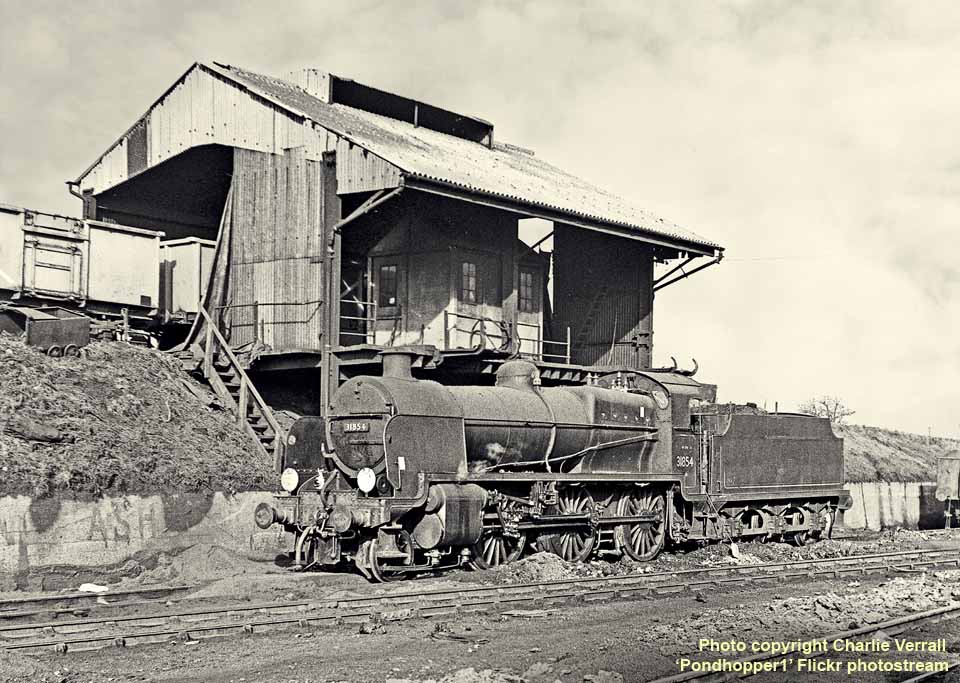
(Above-Below) Also on shed at Redhill was N Class 2-6-0 31854. Built at Ashford in March 1925, a front end frame conversion took place in August 1957; withdrawal came in June 1964. (Below) At the rear of the shed was Schools Class 4-4-0 30916 Whitgift, in front is the old coach previously seen when photographing Q Class 0-6-0 30540 in August 1961. 30916 was built at Eastleigh in May 1933 and withdrawn in December 1962.
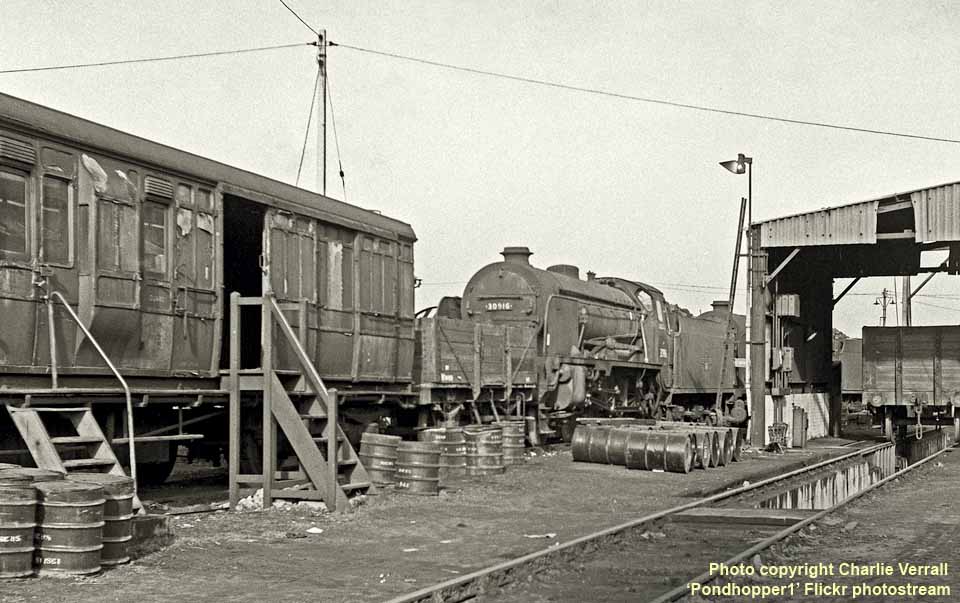
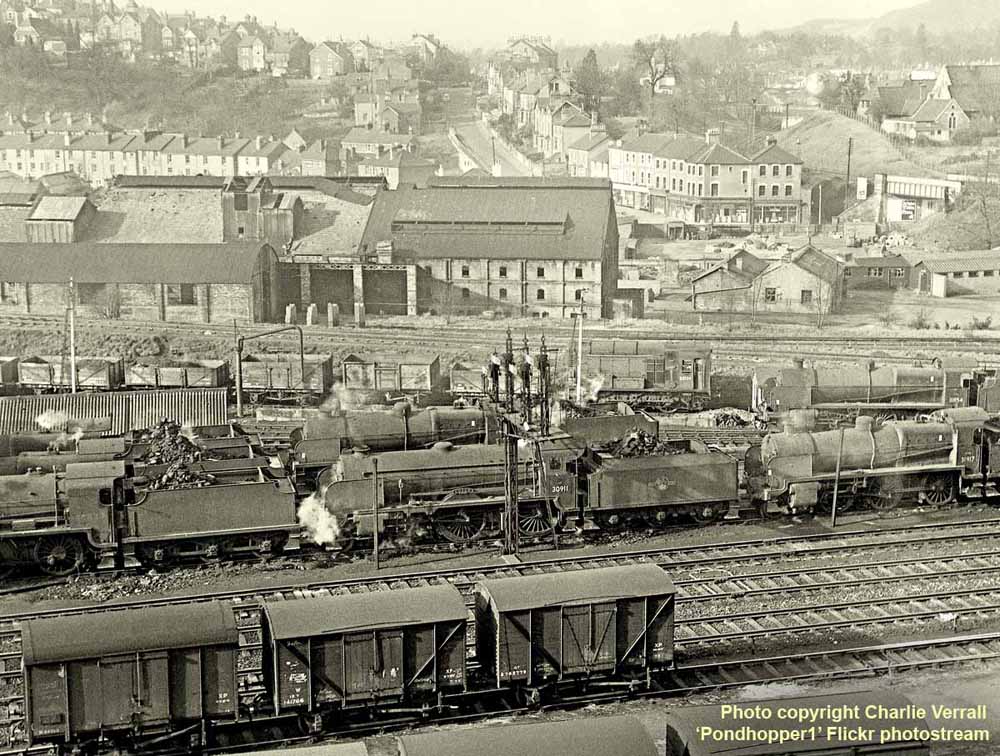
(Above) The final shot of Redhill shed is this grandstand view taken from the Chalk Mound. The locomotives in the yard are Schools Class 4-4-0 30911 Dover, S15 Class 4-6-0 30847, N Class 2-6-0s 31817 and 31854, plus three other 2-6-0s of either Class U or Class N, and a diesel shunter D3224. The line in the foreground goes to Tonbridge, and between the shed and the gas works are the lines to and from Brighton and London. The bridge on the upper right carries the lines to Reigate, Guildford and Reading.
(Below) On February 24th I photographed the 11.48am Engineers train from Three Bridges to Eastbourne hauled by N Class 2-6-0 31813 and U1 Class 2-6-0 31897 between Haywards Heath and Wivelsfield. No 31813 was a Salisbury engine and had come up to Three Bridges the previous day with a stone train from Meldon Quarry; it returned with the empty hopper wagons the following Monday. Built at Ashford and entering service in September 1920, withdrawal took place in October 1963. The U1 class 31897 was built at Eastleigh and entered service as A897 in February 1931, but as with many other Southern locos it was withdrawn in December 1962.
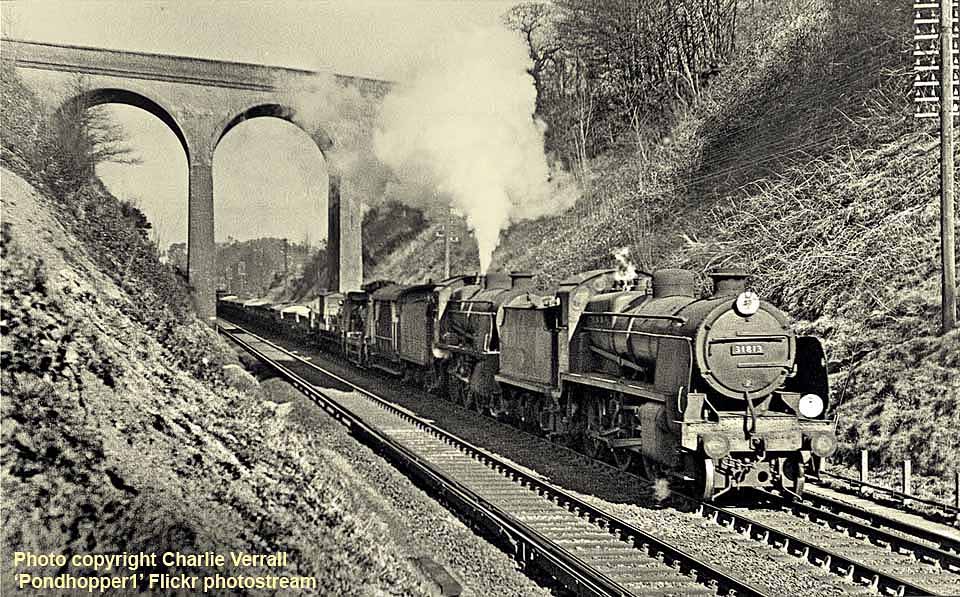
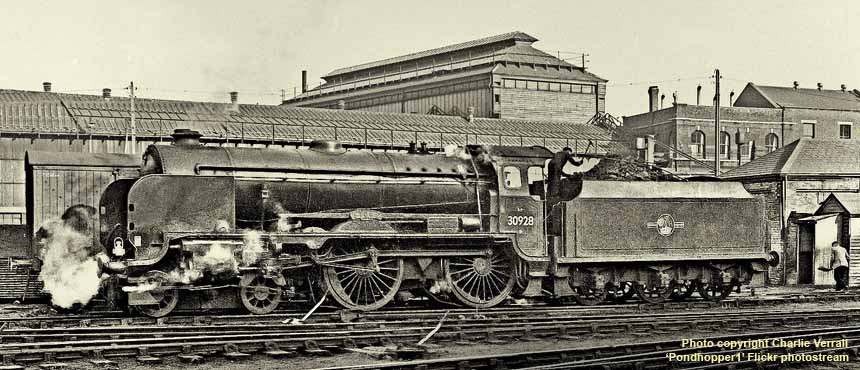
(Above) Later that day I was at Brighton and photographed Schools Class 4-4-0 30928 Stowe. Built at Eastleigh and entering service during June 1934, 30928 was withdrawn in November 1962. However it was spared the indignity of the cutters torch, and after several years on display at Beaulieu it is now on The Bluebell Railway.
(Below) I was back in the Basingstoke area on a misty March 10th, not really the best weather for taking photographs but there was always the chance of the sun breaking through. Here Rebuilt Merchant Navy Class 4-6-2 35020 Bibby Line was photographed near Worting Junction with the down 'Atlantic Coast Express'. Entering service in May 1946 as 21C20, 35020 was rebuilt at Eastleigh in April 1956 and withdrawn in February 1965.
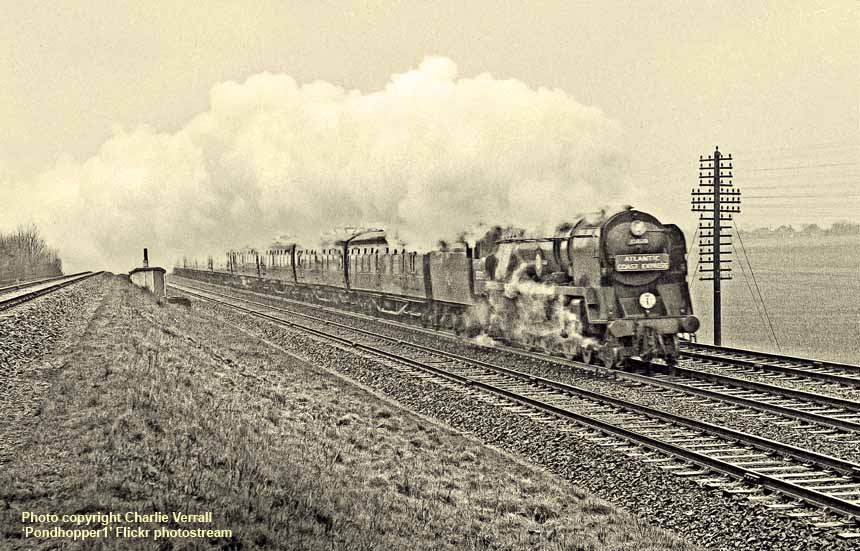
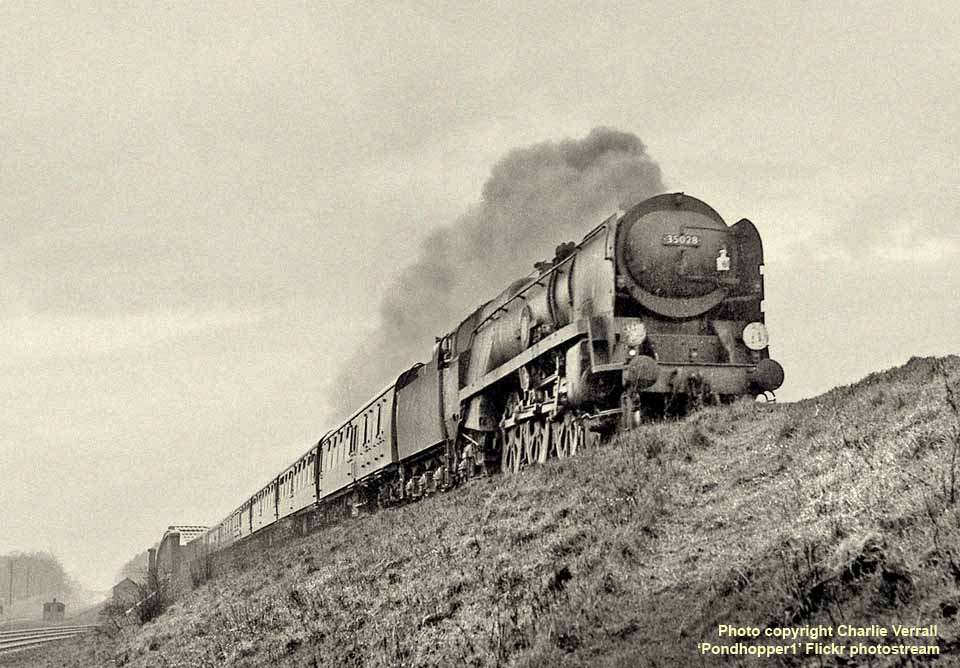
(Above-Below) Rebuilt Merchant Navy Class 4-6-2 35028 Clan Line is dropping down from Battledown Flyover with the 9.17am Weymouth to Waterloo. No 35028 was built at Eastleigh and entered service in December 1948. Rebuilt at Eastleigh in October 1949 and withdrawn in July 1967, No 35028 was awaiting scrapping at Dai Woodham's yard at Barry until rescued for preservation and is now very active working the regular Victoria - Guildford - Redhill - Victoria Pullman specials. (Below) Hall Class 4-6-0 5906 Lawton Hall is working the 10.07am Southampton Terminus to Reading. No 5906 was built at Swindon in May 1931 and withdrawn in May 1962.
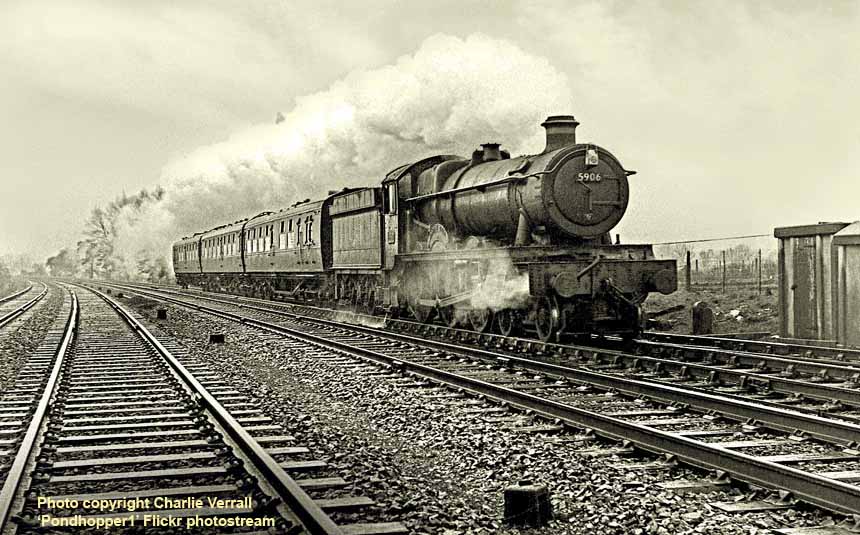
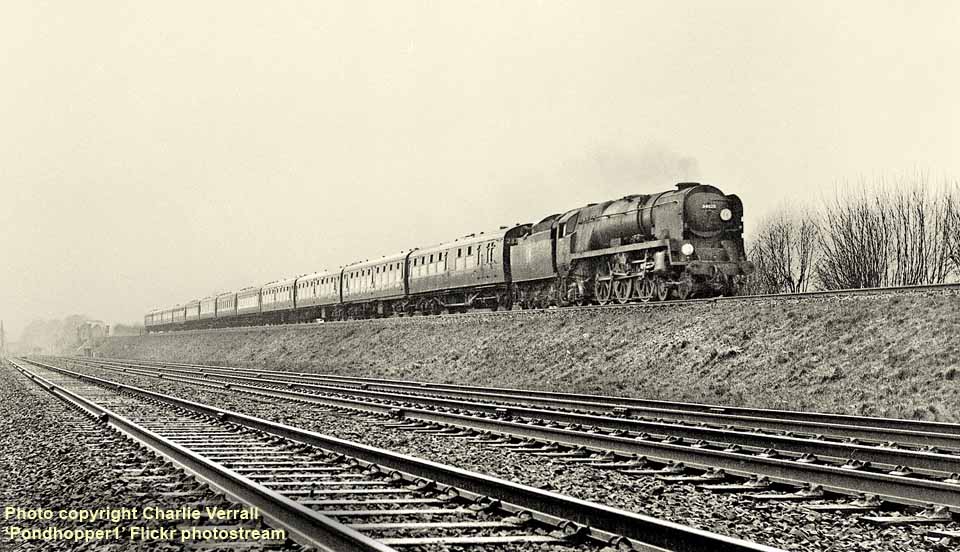
(Above) Rebuilt West Country Class 4-6-2 34029 Lundy at Battledown with the 9.55am special train from Poole to Wembley. No 34029 was built at Brighton and entered service as 21C129 in May 1946. Rebuilt at Eastleigh in December 1959 it was withdrawn during September 1964....
PHOTO GALLERY 5
EASTLEIGH - FEBRUARY 9th 1962
EASTLEIGH - FEBRUARY 9th 1962
This gallery includes a selection of photographs taken during a visit to Eastleigh on February 9th 1962, concentrating on a number of recently withdrawn locomotives and those shortly to be withdrawn from service; plus others that I did not get chance to photograph on a future visit. As in the other galleries the photographs are in no particular sequence.
(Below) South Eastern and Chatham Railway C Class 0-6-0 31723 was built by Sharp Stewart in January 1901. The last allocation was Guildford from where it was withdrawn In January 1962.
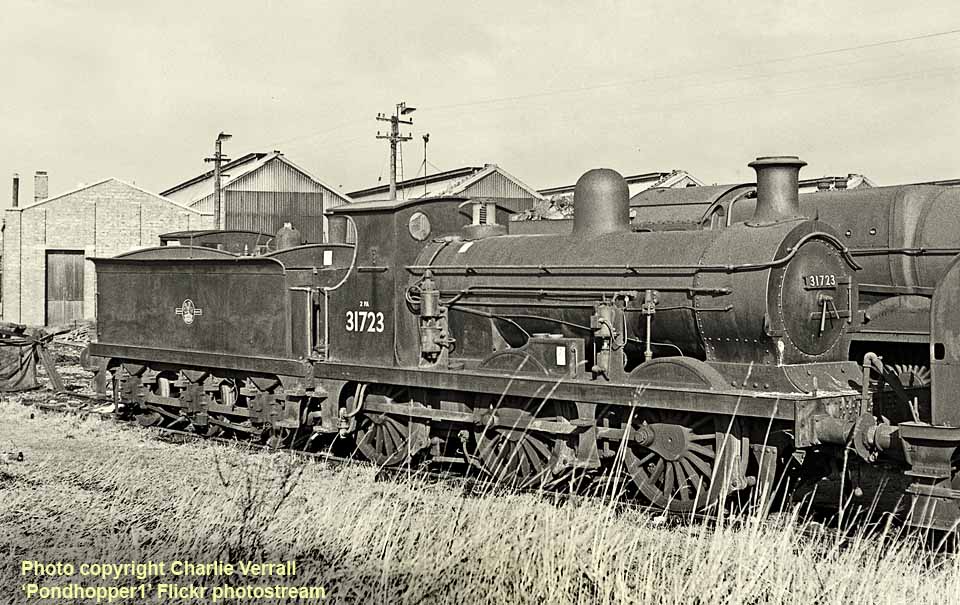

(Above-Below) One of the three venerable Adams Class 0415 4-4-2 tanks which worked the Lyme Regis branch for many years, 30582 was built by Robert Stephenson in September 1885 as LSWR No 125. Duplicated in July 1911 as 0125 it became Southern Railway 3125 in November 1933 and British Railways 30582 in April 1949. Withdrawal from service took place in July 1961. (Below) Schools class 4-4-0 30927 Clifton was built at Eastleigh in June 1934 and was withdrawn in January 1962.
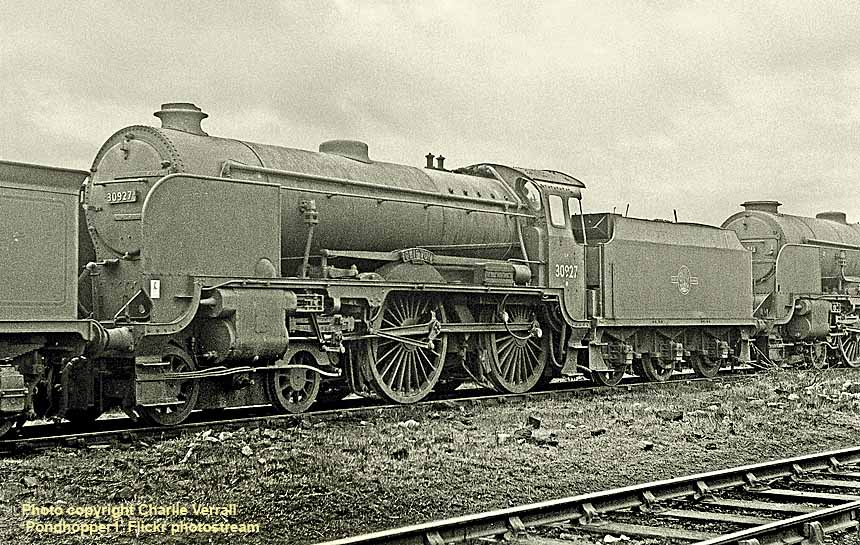
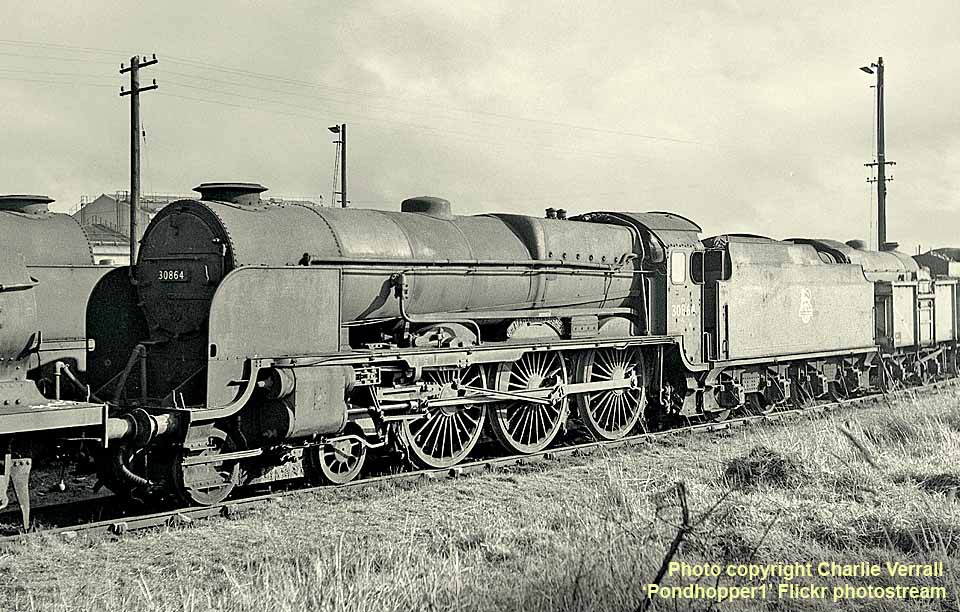
(Above-Below) Lord Nelson 4-6-0 30864 Sir Martin Frobisher was built at Eastleigh and entered service during November 1929. Another January 1962 withdrawal. (Below) The doyen of the Lord Nelson class 4-6-0s, No 30850. Built at Eastleigh as E850 the loco entered traffic on August 12th 1926. After withdrawal in June 1962, 30850 was selected for preservation as part of the National Collection and stored for a time at Fratton and the Pullman Sheds at Preston Park before going to York Museum for restoration. Beneath this shot is a photograph of the nameplate taken on the same day; note that unlike the other Lord Nelsons the class name does not appear on this nameplate.
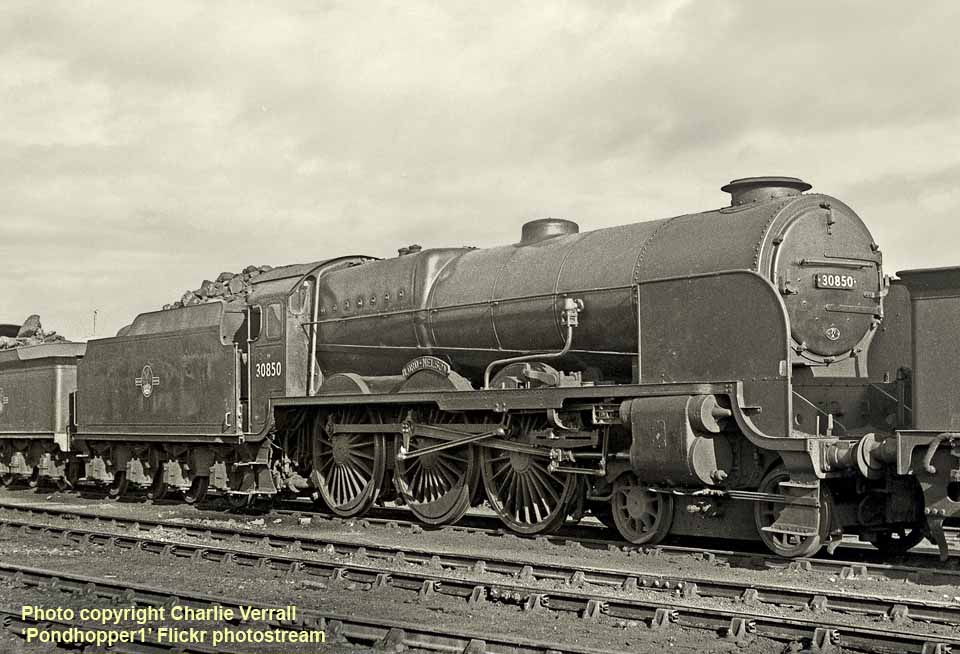
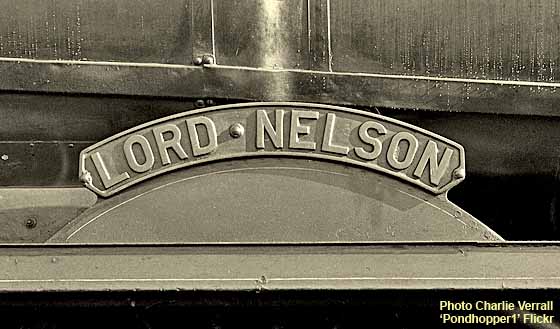
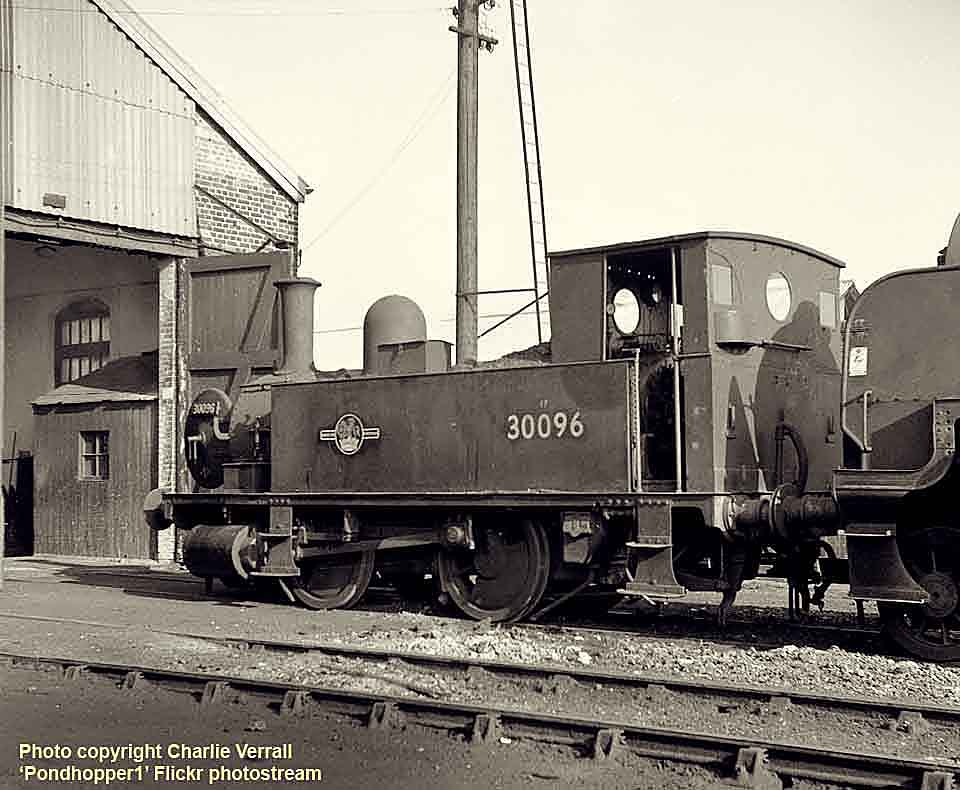
(Above-Inset) By the end of 1961 only three of the Adams B4 Class 0-4-0 tanks remained in service. No 30089 was the shed pilot at Guildford, and 30096 and 30102 alternated as the Winchester shunter; both were invariably on shed at Eastleigh over the weekends. 30096 was built at Nine Elms in November 1893 and as 96 Normandy was one of several allocated to Southampton Docks until replaced by the USA Class 0-6-0 tanks. No 30096 was withdrawn October 1963 and sold to Corralls Ltd for shunting duties at Dibbles Wharf,
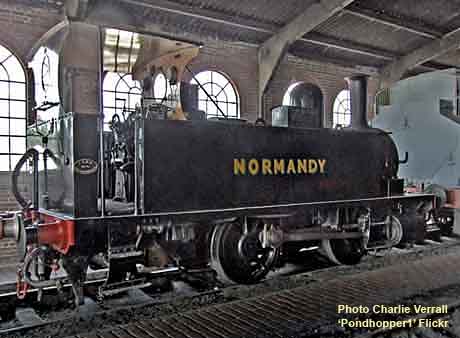 Southampton; the loco was named Corrall Queen, retaining the BR smoke box number plate. Later it went to the Bluebell Railway (inset) and restored to its original open backed cab condition. Normandy is seen here at Sheffield Park in July 2009.
Southampton; the loco was named Corrall Queen, retaining the BR smoke box number plate. Later it went to the Bluebell Railway (inset) and restored to its original open backed cab condition. Normandy is seen here at Sheffield Park in July 2009. (Below) The Brighton A1/X Class 'Terriers' worked the Hayling Island branch until it closed in November 1963. 32678 performed these duties until November 1959 when it was sent to Newhaven to effectively replace No 32636 Fenchurch on the West Quay duties. In return 32636 went to Eastleigh. When the West Quay requirement ended, 32678 was withdrawn in October 1963. 32678 was built at Brighton as A1 class 78 Knowle, entering service in August 1880. Placed on the duplicate list in March 1907 as 678, it was converted to A1/X standard in September 1911. Transfer to the Isle of Wight as W4, later W14, Bembridge took place in May 1929 until it was replaced in May 1936 by an O2 Class 0-4-0 tank and it returned to the mainland to be condemned. However repairs were effected and it was restored to Capital Stock as 2678 during December 1936. After withdrawal 32678 went to Butlins at Minehead; today the loco is restored and now on The Tenterden Railway. The loco in front is 700 Class 0-6-0 30695.

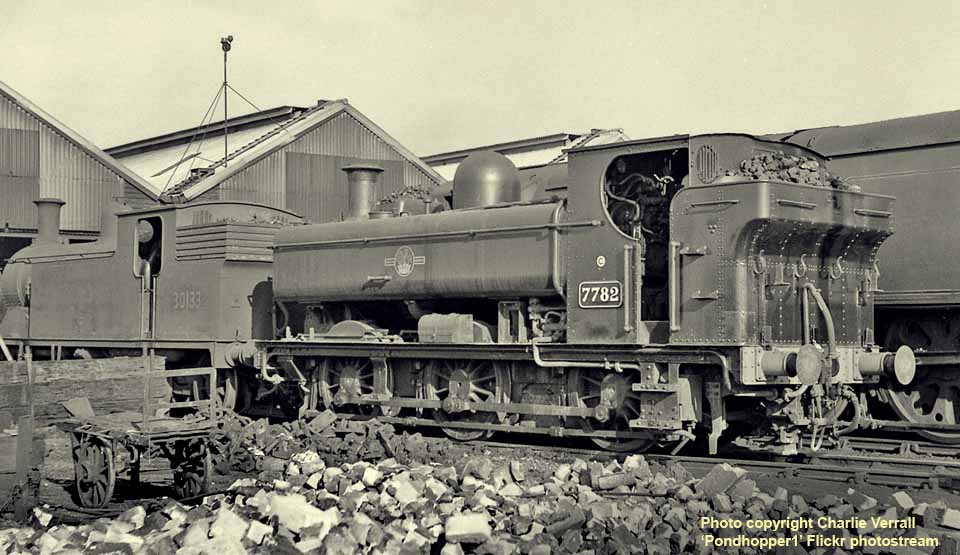
(Above-Below) This ex-works 5700 class 0-6-0 pannier tank 7782 was a Weymouth (82F) engine. Built by Armstrong Whitworth 7782 entered service in November 1930 and was withdrawn in October 1964. The locomotive to left is M7 class 0-4-0 tank 30133. (Below) With the introduction of the BRCW Type 3 Bo-Bo diesel electric 'Cromptons', the Hither Green W Class 2-6-4 tanks became redundant and four were transferred to Eastleigh during May 1961 to work on the Fawley branch oil trains, until being replaced by diesels in November 1962. 31913 was one of those transferred, built at Eastleigh in January 1932 and after transfer to Norwood in January 1963 was withdrawn in March 1964. These large tank locomotives were banned from all passenger train working, other than empty stock movements and banking duties between Exeter St David's and Exeter Central.
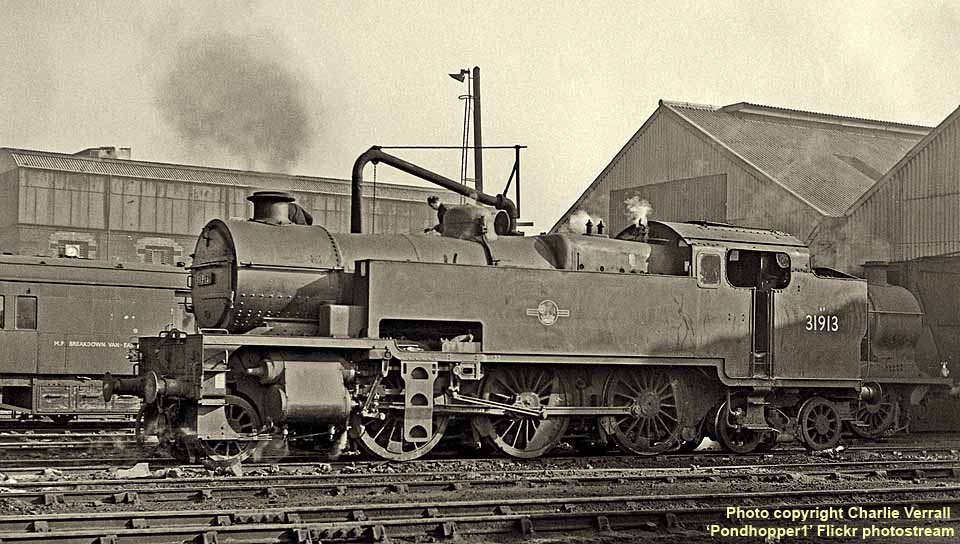
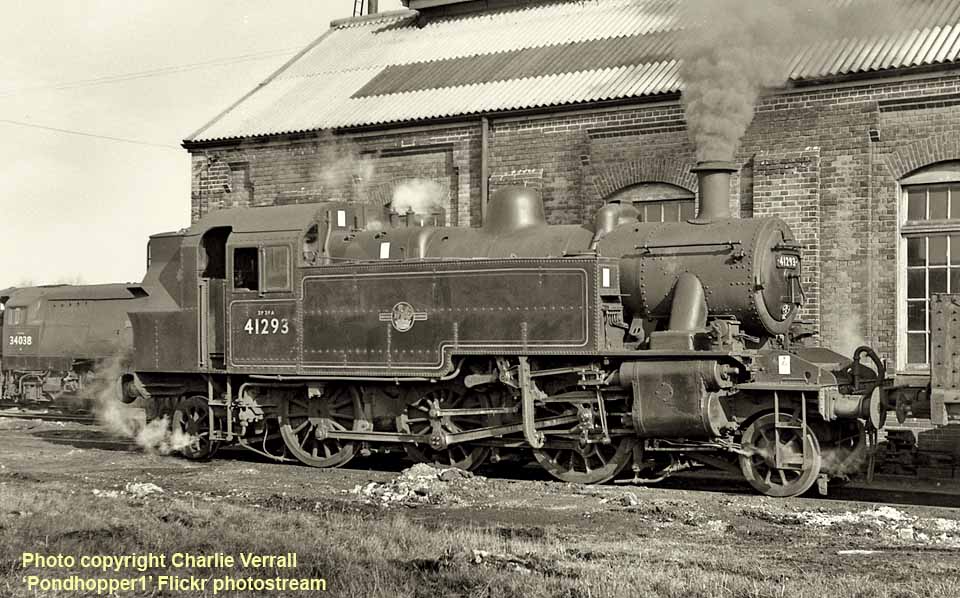
(Above-Below) Eastleigh had an allocation of LMS Class 2 2-6-2 tanks. Seen here are 41293, fitted with the narrow taper chimney, and 41301 with the usual chimney for this class. 41293 was built at Crewe in October 1950, and was withdrawn during February 1965, in the background can be seen Unrebuilt West Country Class 4-6-2 34038 Lynton. (Below) 41311 was another Crewe-built engine, introduced to traffic in May 1952 and withdrawn in January 1964.

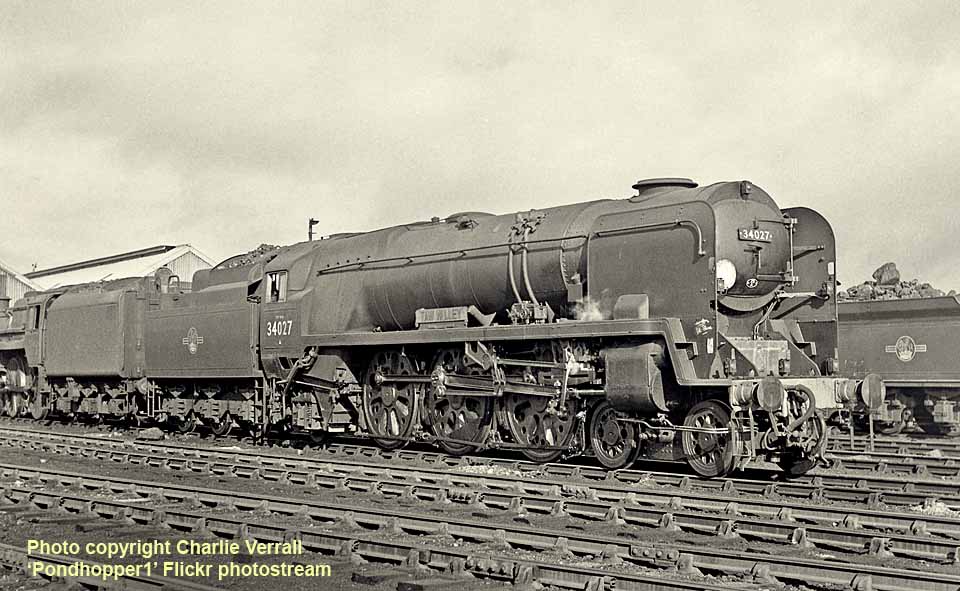
(Above-Below) Rebuilt West Country Class 4-6-2 34027 Taw Valley is seen on shed. Built at Brighton as 21C127 this loco entered service during April 1946. It was rebuilt in September 1957 it withdrawn in August
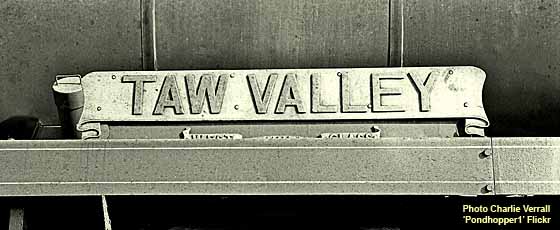 1964. After a period in Dai Woodham's yard at Barry it was rescued and has since been restored. (Inset) This is a photo of Taw Valley's nameplate taken at the same time. (Below) By 1961 Eastleigh had an allocation of Class 9F 'Spaceship' 2-10-0s, used mainly for freights to and from South Wales via Salisbury and Westbury. However being an Ebbw Junction loco, 92004 was not one of these; Eastleigh having the later Swindon built locos with double chimneys. 92004 entered service in February 1954 and withdrawn in April 1967. To the rear can be seen 700 Class 0-6-0 30306.
1964. After a period in Dai Woodham's yard at Barry it was rescued and has since been restored. (Inset) This is a photo of Taw Valley's nameplate taken at the same time. (Below) By 1961 Eastleigh had an allocation of Class 9F 'Spaceship' 2-10-0s, used mainly for freights to and from South Wales via Salisbury and Westbury. However being an Ebbw Junction loco, 92004 was not one of these; Eastleigh having the later Swindon built locos with double chimneys. 92004 entered service in February 1954 and withdrawn in April 1967. To the rear can be seen 700 Class 0-6-0 30306. 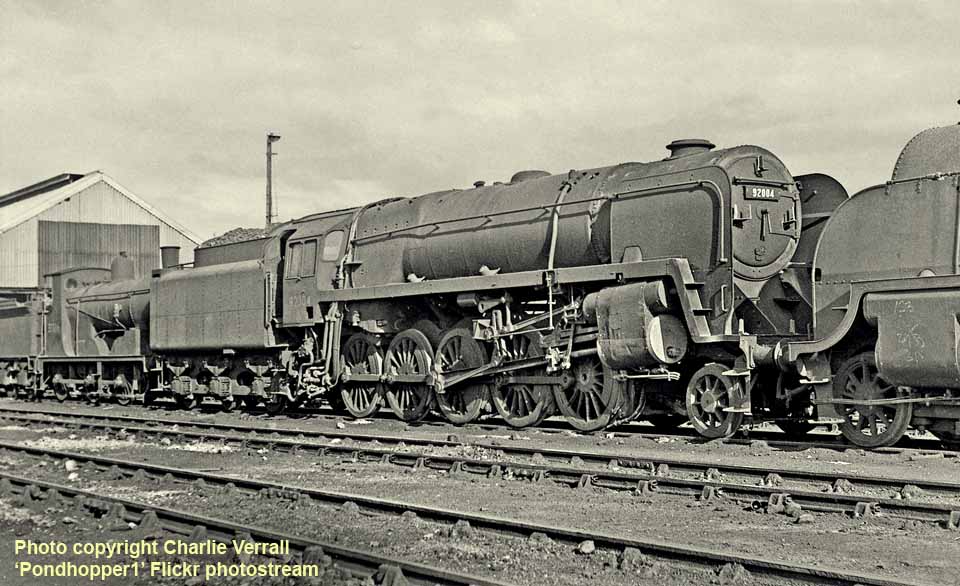

(Above) Finally a collection of boilers at the back of Eastleigh Works. The Belpaire boiler has come off of a Lord Nelson 4-6-0, the others from either H15 or King Arthur Class locomotives. What is interesting is the centre one with the number plate of S15 30507 on the smoke box door, however this loco was not withdrawn until December 1963. I wonder what number plate it carried at the end?
CHAPTER EIGHT - 1962
MORE MAINLINE RECONNAISANCES
MORE MAINLINE RECONNAISANCES
On March 31st I made my first trip of the year to Hitchin on the East Coast Main Line. My last visit to the Great Northern section had been the previous October but it produced only one usable image and so I was hoping for better results this time around. The first shot (below) shows Class 4-6-2 No 60062 Minoru leaking steam as it restarts the 12.57pm Peterborough to Kings Cross from Hitchin. No 60062 was built at Doncaster in May 1925 as LNER A1 class No 2561. In June 1944 it was modified to a Class A3 with a higher pressure boiler and reduced cylinder diameter. Under the first 1946 renumbering scheme the original allocated number of 530 was not applied, however under the second scheme Minoru became No 62, later BR 60062; the locomotive was withdrawn in December 1964.
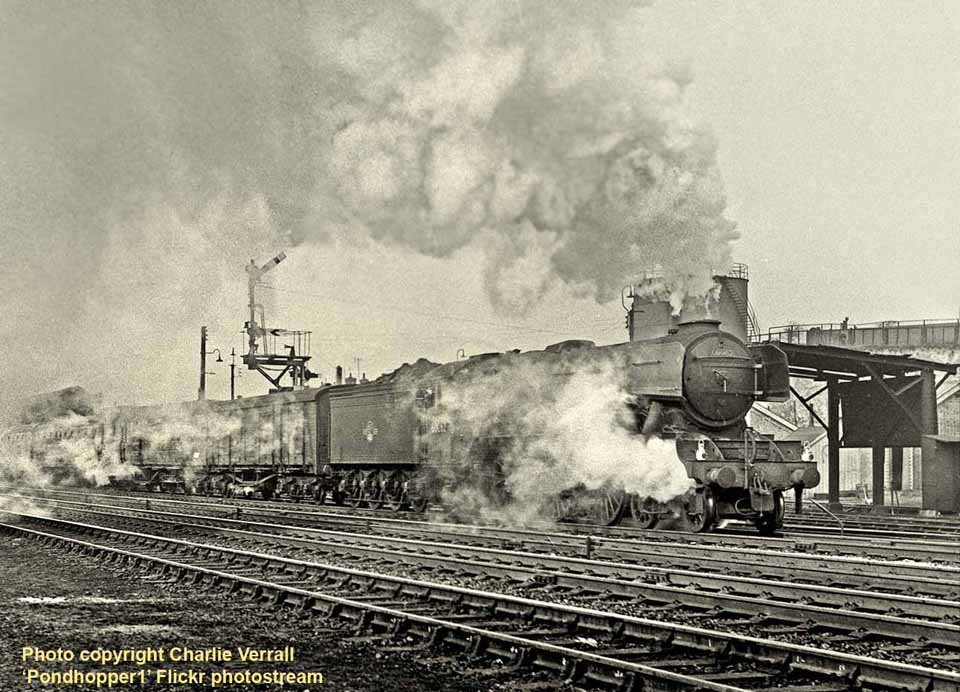
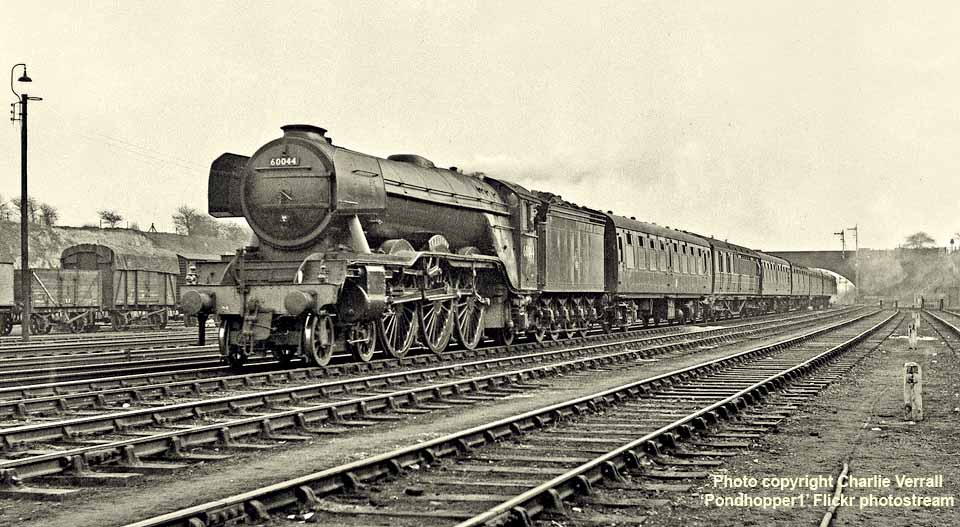
(Above-Below) Class A3 No 60044 Melton approaches Hitchin with the 1.45pm Kings Cross to Peterborough. Melton was built as A1 Class No 2524 and entered service in June 1924. In 1944 the locomotive was reclassified as Class A10 and rebuilt as a class A3 in September 1947. The first 1946 number of 512 was not applied; instead 2524 was renumbered 44 in September 1946. The locomotive was withdrawn in June 1963. (Below) A brief glimpse of sunshine made a welcome change as Class A3 No 60056 Centenary heads the 2pm Kings Cross to Doncaster. No 60056 was built as a Class A1 and entered service during February 1925 numbered 2555. It was rebuilt as a Class A3 in August 1944. The first 1946 number of 544 was not applied, however 2555 was renumbered 56 in July 1946. Withdrawal took place in May 1963.


(Above-Below) The sunshine remained long enough to photographe Class A4 No 60013 Dominion of New Zealand heading the 11.50 Harrogate to Kings Cross. Built at Doncaster in June 1937, 60013 entered service as 4492. The first 1946 number 594 was not applied; instead 4492 was renumbered 13 in August 1946. Withdrawal took place during April 1963. (Below) WD Class 2-8-0 90169 was seen working an up freight service. No 90169 was built by The North British Locomotive Company as WD 7186, later 707186 in August 1943. Purchased by British Railways it became 90169 in April 1950 and was withdrawn in August 1965.
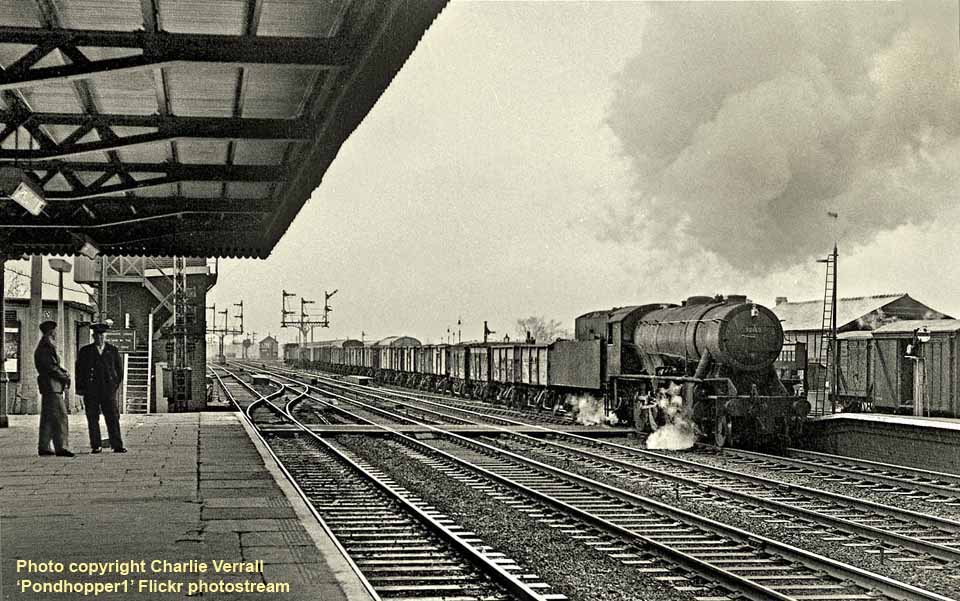
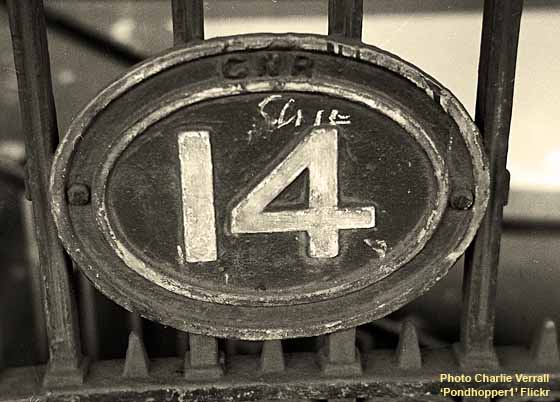 (Inset) By way of a change, during my trip to Hitchin I snatched this shot of a Great Northern Railway Bridge Plate 14 at Finsbury Park Station.
(Inset) By way of a change, during my trip to Hitchin I snatched this shot of a Great Northern Railway Bridge Plate 14 at Finsbury Park Station. (Below) In April 1962 my long-time spotting pal, Mike Harris, had been given a brand new a 35mm Werra camera, however since it did not come with a sales invoice he was worried about its provenance. He was getting married in a few weeks time and as he was honeymooning out of the UK, he feared a problem may arise with customs, and so he asked if he could borrow my Twin Lens Reflex and I could make use of his Werra 35mm camera. I agreed, though I am not sure which model it was; having used a Twin Lens Reflex and medium format roll film for so long, 35mm film cameras were alien to me, plus the film advance was activated by rotating a ring
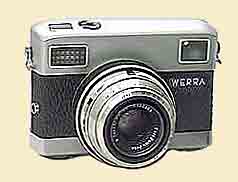 around the lens, all of which led to a few hiccups, especially when focusing! To add to the dilemma I decided to take some colour Ektachrome slides! However, the first b/w shots taken with the Werra were on April 7th (below). Here Q Class 0-6-0 30547 is seen passing Wivelsfield station with the 11.48am engineers train from Three Bridges to Eastbourne. Built at Eastleigh in July 1937, a Lemaitre blast pipe was fitted in April 1947, but this was replaced in November 1958 by a BR Standard Class 4 blast pipe and chimney. 30547 was withdrawn in January 1964.
around the lens, all of which led to a few hiccups, especially when focusing! To add to the dilemma I decided to take some colour Ektachrome slides! However, the first b/w shots taken with the Werra were on April 7th (below). Here Q Class 0-6-0 30547 is seen passing Wivelsfield station with the 11.48am engineers train from Three Bridges to Eastbourne. Built at Eastleigh in July 1937, a Lemaitre blast pipe was fitted in April 1947, but this was replaced in November 1958 by a BR Standard Class 4 blast pipe and chimney. 30547 was withdrawn in January 1964.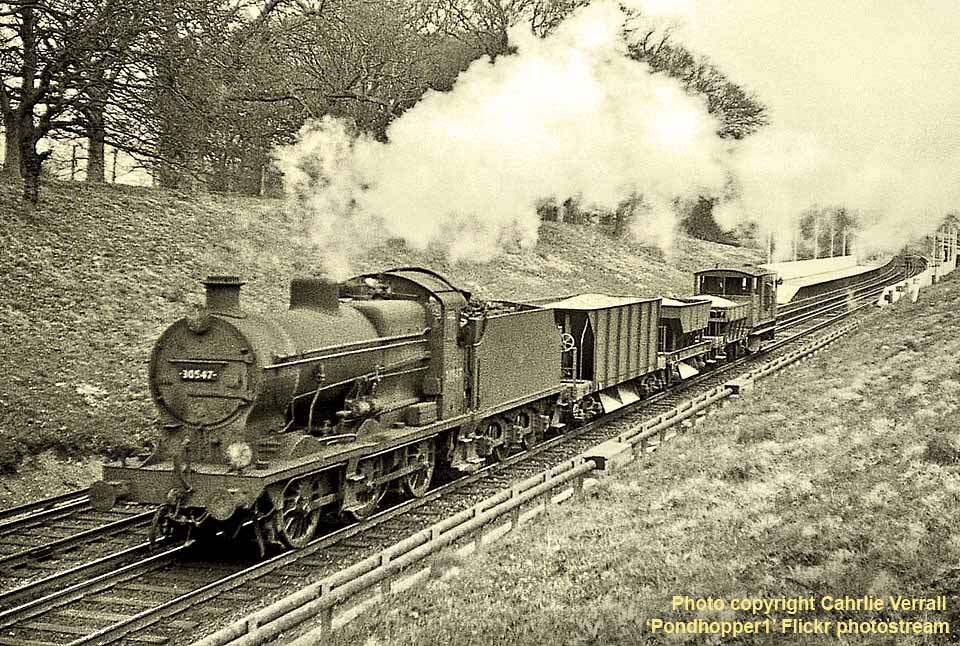
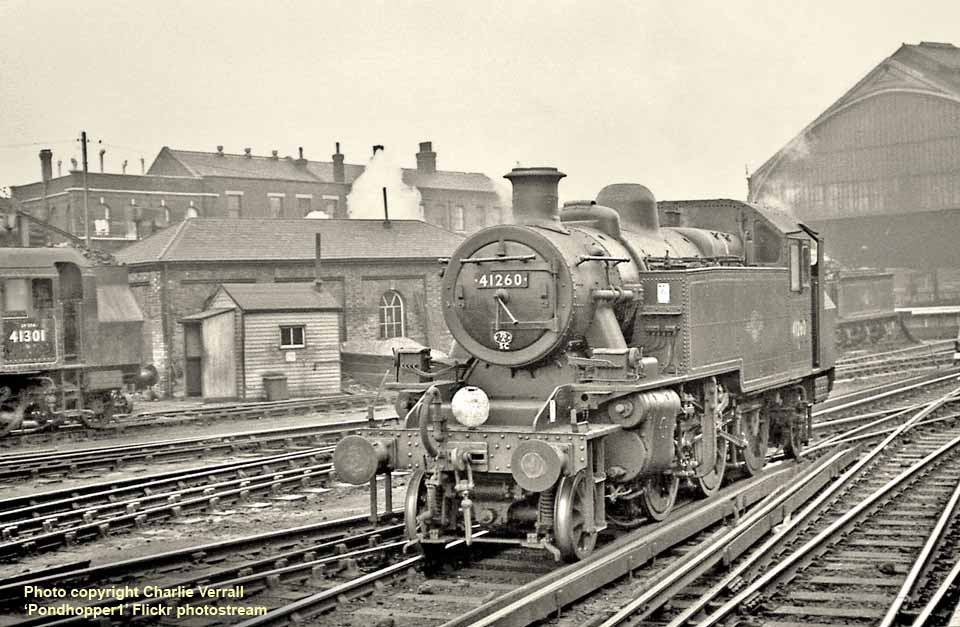
(Above-Below) Later in the day I went to Brighton and photographed two of the LMS Class 2MT 2-6-2 tanks that regularly worked the services to Horsham via Steyning. Both built at Crewe, No 41260 entered service in June 1950 and withdrawn in September 1964; No 41301 entered service in March 1952 and was withdrawn in December 1966.
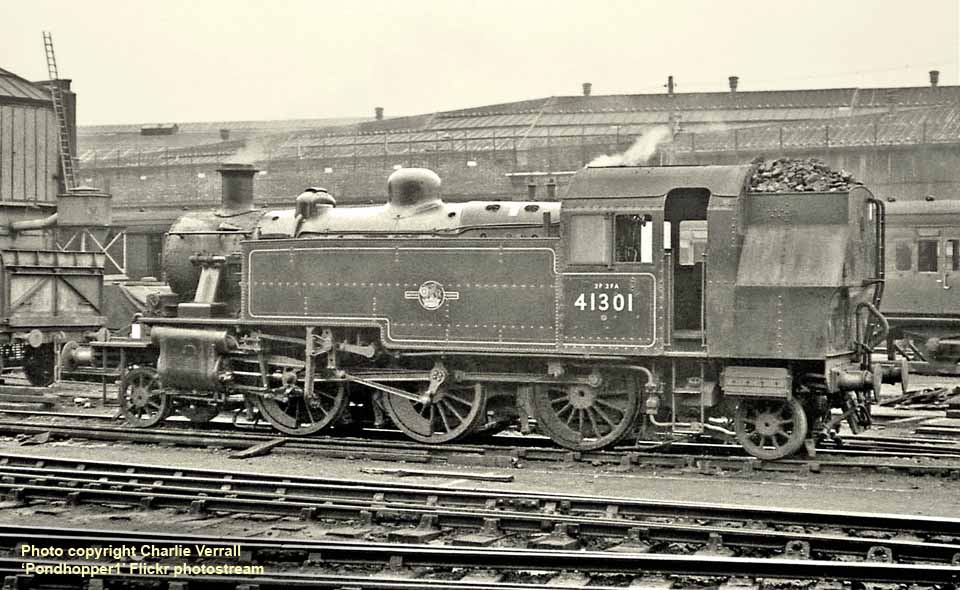
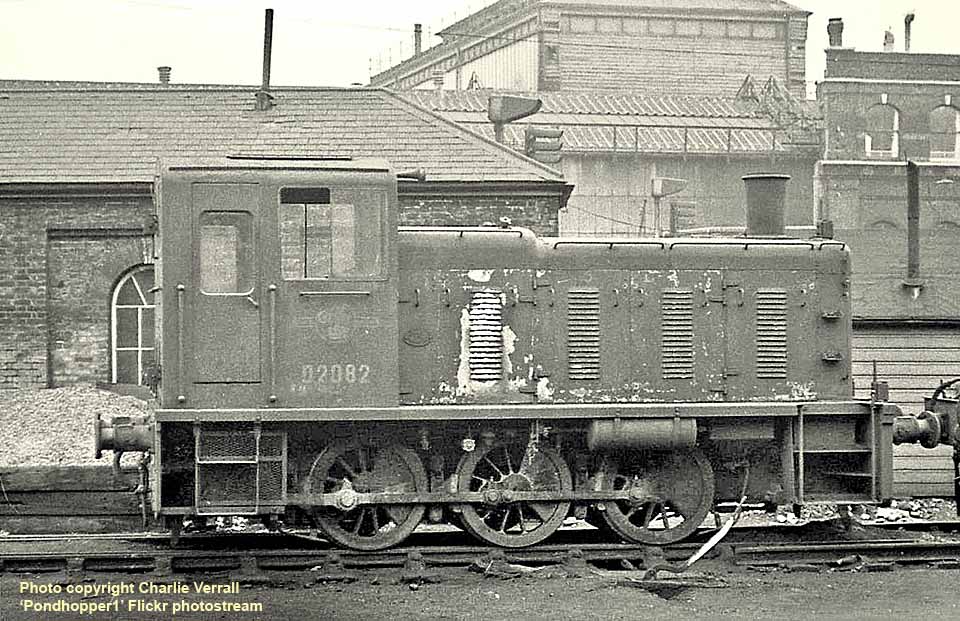
(Above-Below) Also on shed at Brighton was this scruffy-looking 204hp diesel mechanical shunter No D2082. Built at Doncaster in February 1959 the 0-6-0 was withdrawn pre-TOPS in September 1971. (Below) I bought a cassette of High Speed Ektachrome slide film to photograph the wedding of my spotting pal, Mike Harris and Suzanne, however with hindsight a 35mm transparency film was an odd choice since I did not acquire a slide projector until two years later. However, having some frames left over, I decided to take a trip to Peterborough where I photographed EE Co Deltic Co-Co D9011 working the 11.50am Harrogate to Kings Cross on April 14th 1962. D9011 entered service in August 1961 and named The Northumberland Fusiliers in May 1963; under the TOPS reclassification scheme it was renumbered 55011 in February 1974 and withdrawn in November 1981.
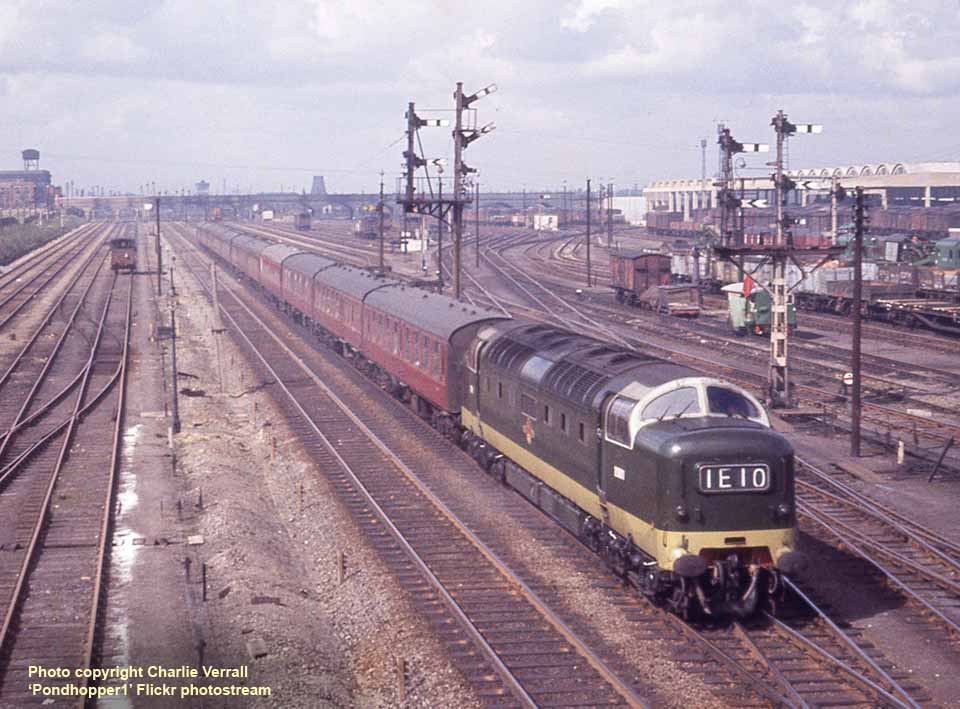
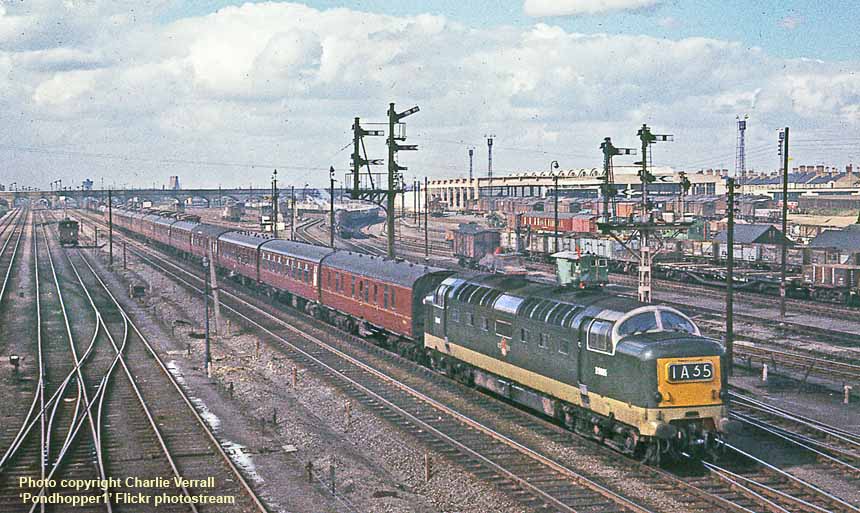
(Above-Below) Another Deltic, D9005, was seen on the up 'Flying Scotsman' in May 1961; D9005 was named The Prince of Wales's Own Yorkshire Regiment in October 1963. Renumbered TOPS Class 55 No 55005 in February 1974, withdrawal took place in August 1981. (Below) Another up service, the 12.30pm Hull to Kings Cross, was hauled by A1 class 4-6-2 60155 Borderer. Built at Doncaster in September 1949, No 60155 was withdrawn from York shed in October 1965.

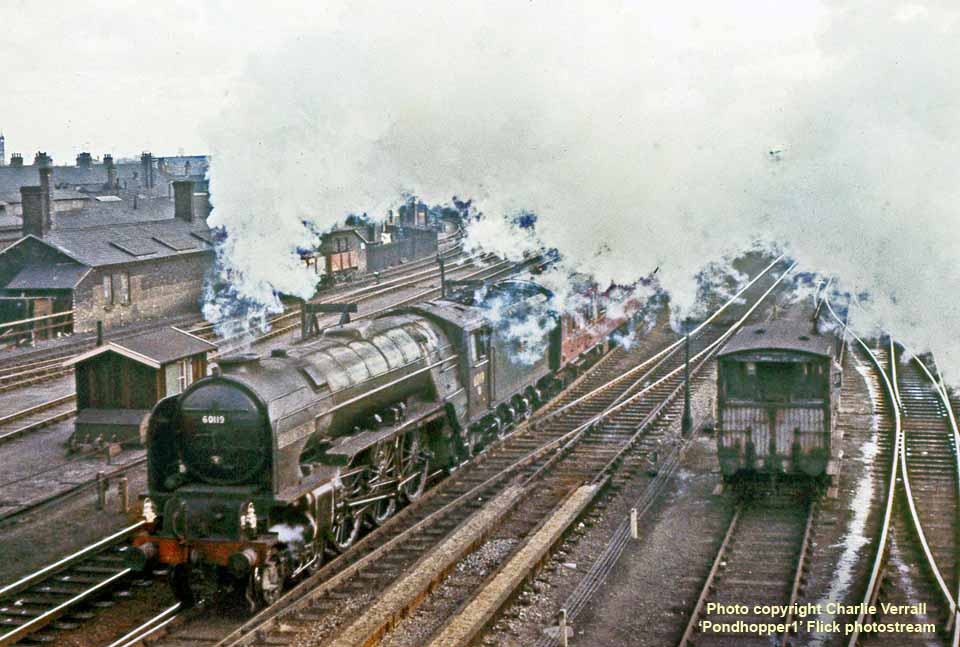
(Above-Below) Another Class A1, No 60119 Patrick Stirling was photographed working the 1.18pm Kings Cross to Hull. Built at Doncaster during November 1948, 60119 was withdrawn in May 1964. (Below) Class A4 4-6-2 60025 Falcon heads the 2pm Kings Cross to Newcastle. Built at Doncaster in January 1937 as LNER 4484, Falcon was allocated number 586 in the original 1946 renumbering scheme, but this number was not taken up and Falcon became No 25 under the second scheme in May 1946. Withdrawal took place in October 1963.
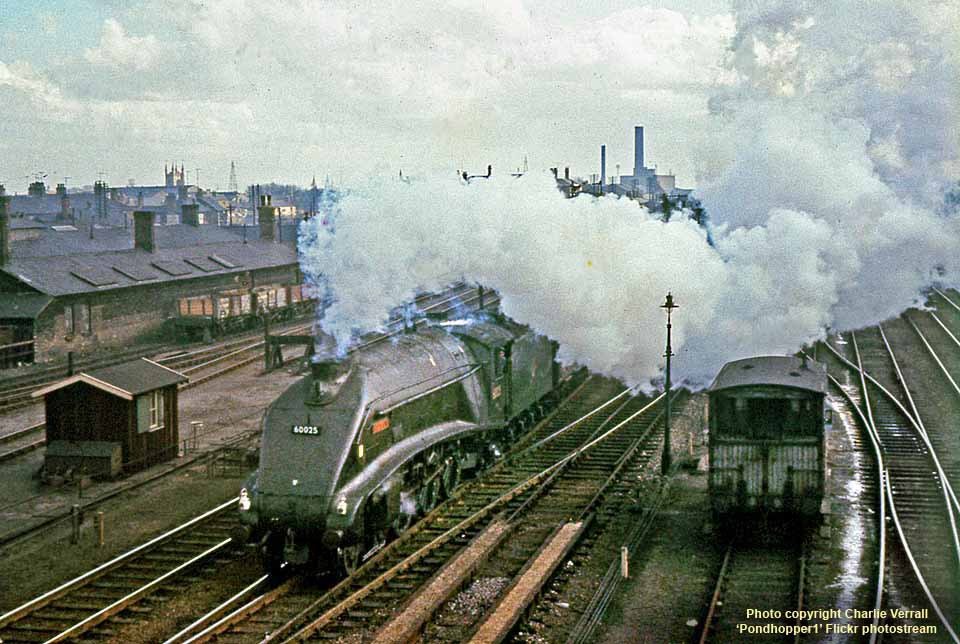
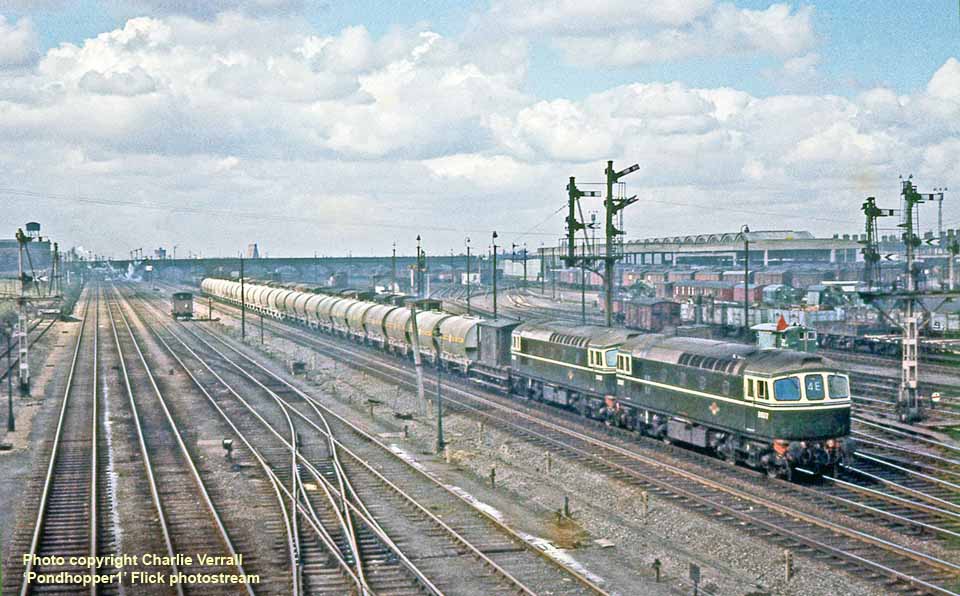
(Above) Working the return cement empties from Uddingston to Cliffe are BRCW Type 3 Bo-Bo 'Cromptons' Nos D6582 and D6577. D6582 entered service in November 1961 and became 33062 in February 1974. Withdrawal took place during September 1987, while D6577 entered service in November 1961, renumbered 33058 in February 1974 and withdrawn in June 1991. This, and the photograph of D9005, illustrate the wide-angle lens fitted to the Werra camera.
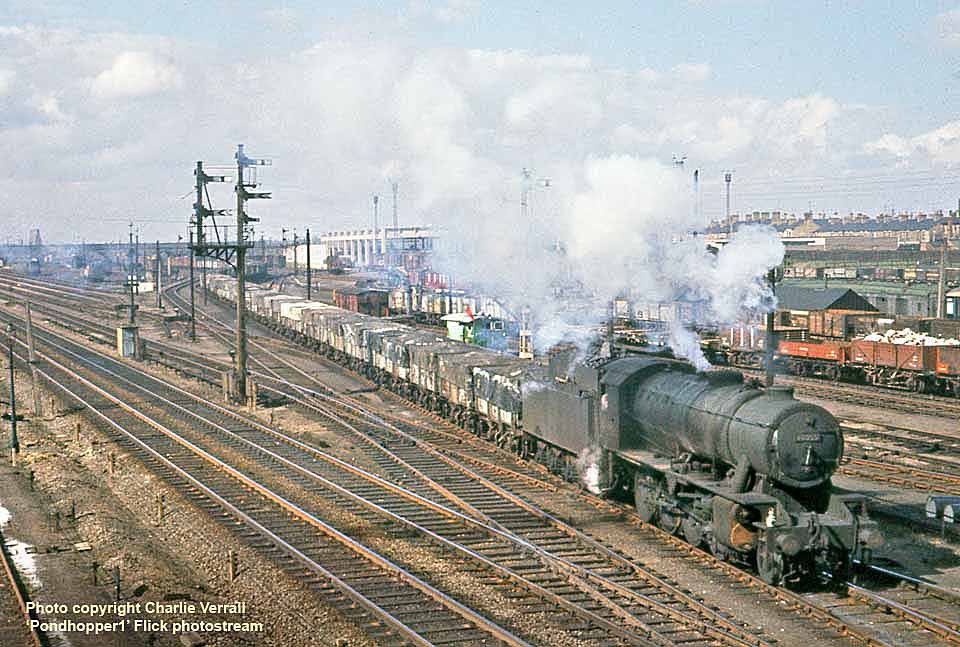
(Above-Below) Working an up freight is WD 2-8-0 No 90055. Built by the North British Locomotive Company for the War Department, the loco entered service as WD 826 in May 1944, and renumbered WD 70826 in January 1945. It became a member of the LNER Class O7 and numbered 63055 between January 1949 and June 1951 before becoming 90055. Withdrawal took place in March 1965. (Below) On April 24th 1962, still with the Werra camera, I visited Salisbury on a miserable overcast day. Possibly because I was using FP3 film instead of my usual HP3 or Tri-X, I found the results disappointing, however one or two of the better ones are included here, including this shot of Hall Class 4-6-0 No 4949 Packwood Hall as it approaches Salisbury with the 9.30am Parson Street to Bournemouth. Built at Swindon in August 1928 No 4949 was withdrawn in September 1964.
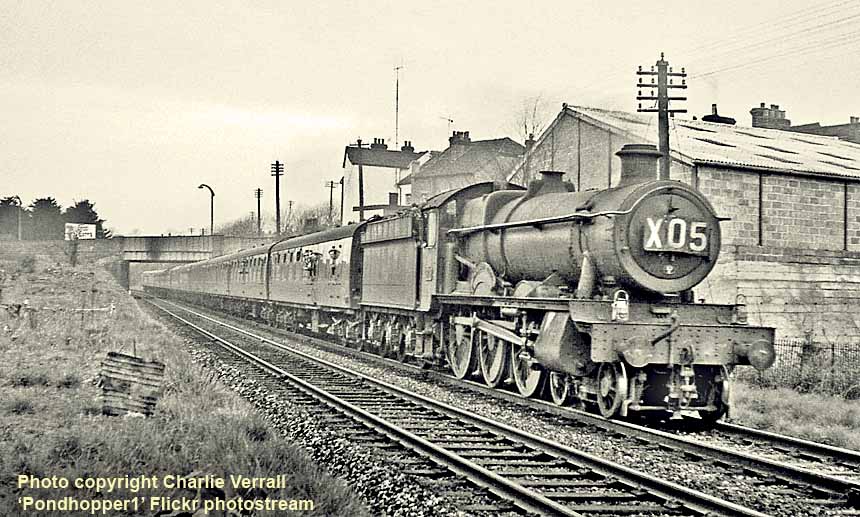
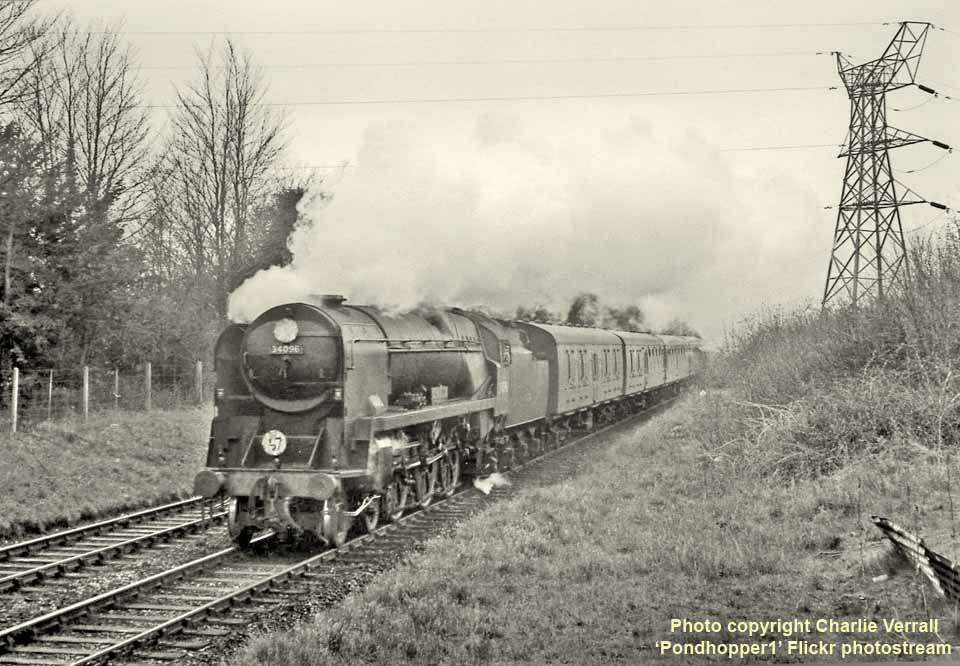
(Above-Below) Rebuilt West Country Class 4-6-2 34096 Trevone is near Dinton with the 6.15am Plymouth to Salisbury. No 34096 was built at Brighton in November 1949 and rebuilt at Eastleigh in April 1961; withdrawal took place in September 1964. (Below) Rebuilt Merchant Navy Class 4-6-2 35001 Channel Packet heads the down Atlantic Coast Express near Dinton. Built at Eastleigh in 1941, the doyen of the MN class exited the works on February 17th numbered 21C1. Rebuilding took place at Eastleigh in August 1959 and withdrawal came in November 1964.
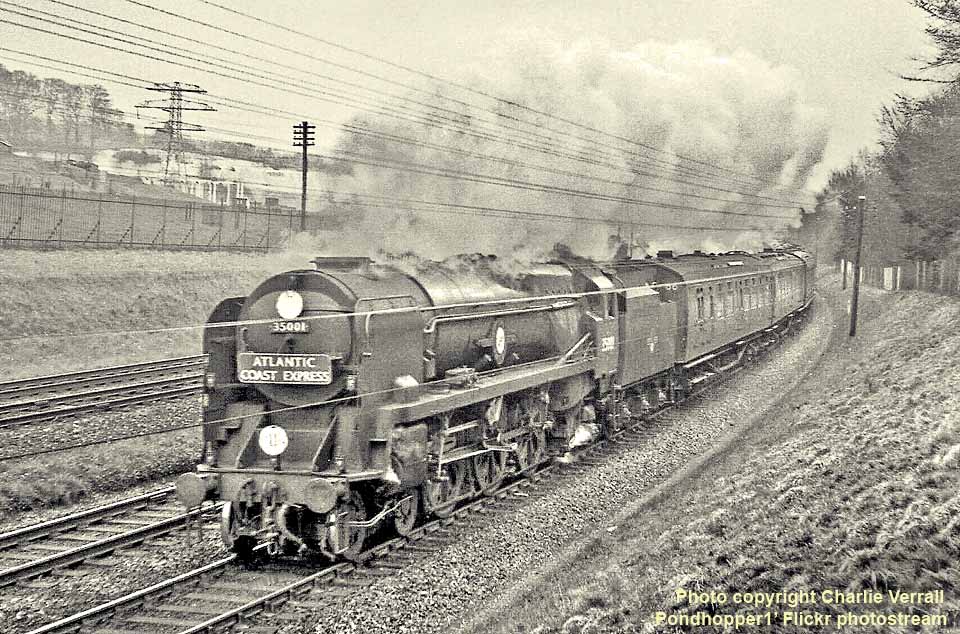

(Above-Below) Departing Salisbury with the 12.36pm to Exeter is Rebuilt Battle of Britain Class 4-6-2 34052 Lord Downing. Originally numbered 21C152, this loco entered service in December 1946; rebuilding took place at Eastleigh in September 1959 and withdrawal came in July 1967. (Below) Rebuilt West Country Class 4-6-2 34048 Crediton gets away with the 1.05pm freight to Templecombe. Built at Brighton in November 1946 as 21C148, a temporary number S21C148 was carried between February and August 1948, followed by its British Railways number 34048. Rebuilt at Eastleigh in March 1959, withdrawal came in March 1966.
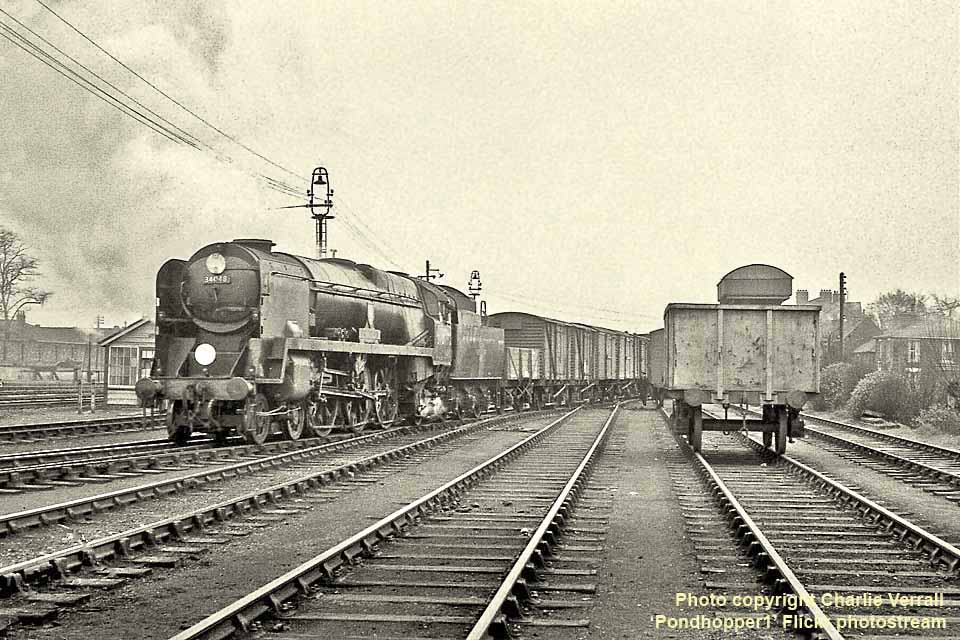
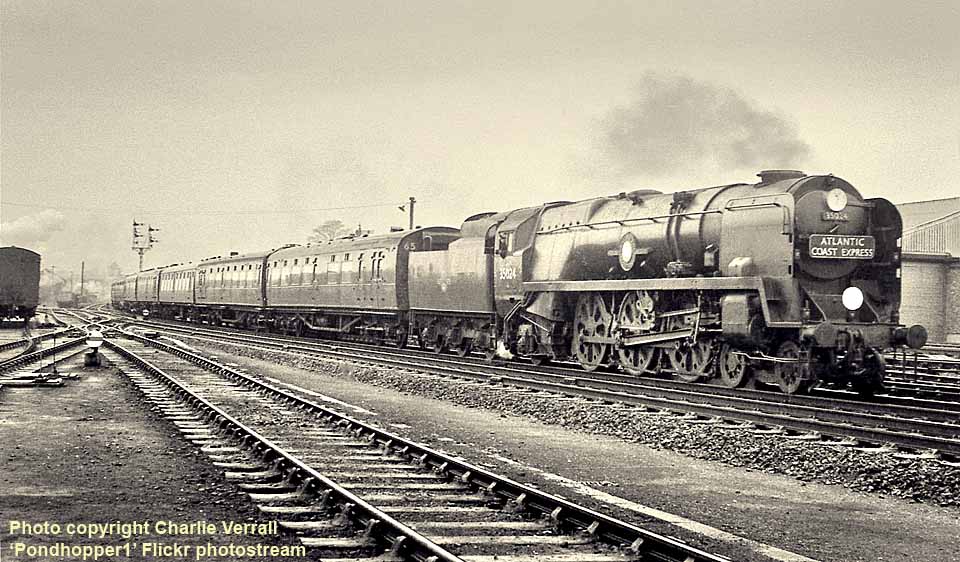
(Above-Below) Rebuilt Merchant Navy 4-6-2 35024 East Asiatic Company is seen arriving at Salisbury with the up Atlantic Coast Express. The loco entered traffic in November 1948 and was rebuilt in April 1959; withdrawal came in January 1965. (Below) On April 22nd I visited Three Bridges where I photographed M7 0-4-4 tank 30055 taking water between duties on the services from Three Bridges to Tunbridge Wells. The M7 is standing on the up local line and will have to cross the down local and up and down main lines to reach the bay platform where its train started and finished. No 30055 was built at Nine Elms and entered service as LSWR 55 in December 1905, withdrawal came in September 1963.
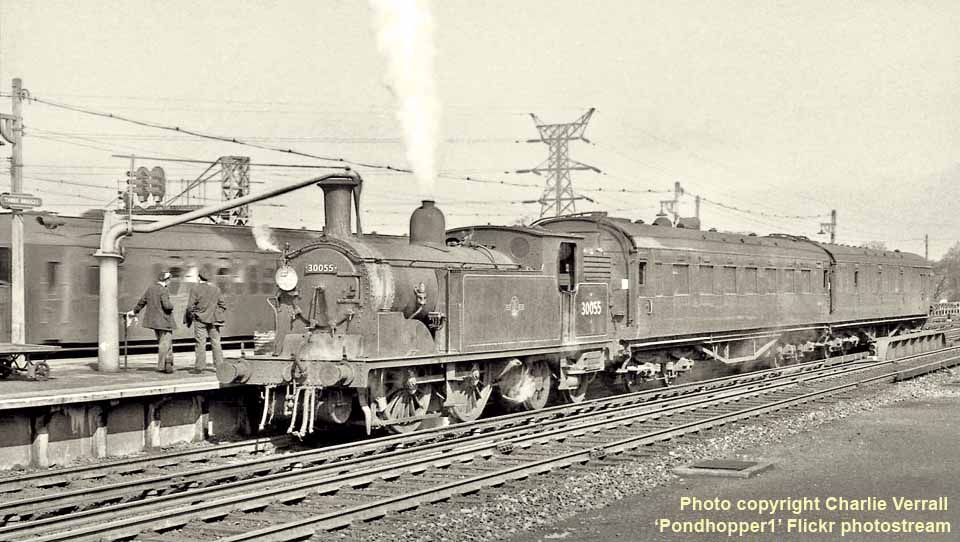
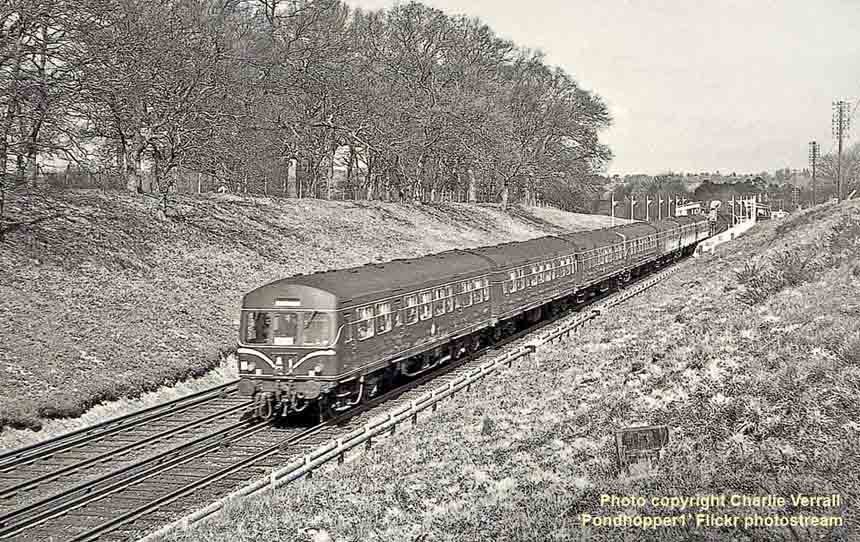
(Above) Later the same day I was back at Wivelsfield and photographed an excursion from Birmingham New Street to Brighton comprised of Metropolitan-Cammell railcars. (Below) By May 5th 1962, newly-weds Mike and Sue had returned from their honeymoon, I got my camera back and went to Redhill to photograph a special locomotive movement when London and South Western 700 Class 0-6-0 30698 was booked to haul Schools Class 4-4-0 30906 Sherborne from Guildford to Ashford Works. At the time it was assumed the Schools would be withdrawn and the 'Black Motor' returned to traffic, however the reverse happened; 30906 was going to Ashford to have AWS fitted, possibly one of the last locomotives to go through Ashford Works prior to closure of the facility on June 15th 1962. Built by Dubs in May 1897, the LNWR 700 Class No 30698 was superheated in March 1927 and withdrawn a few weeks after this photograph was taken; it made its way to Eastleigh for breaking up, Ashford having scrapped its last engine in April 1962. No 30906 was withdrawn as part of the cull of Southern Region locos in December 1962.
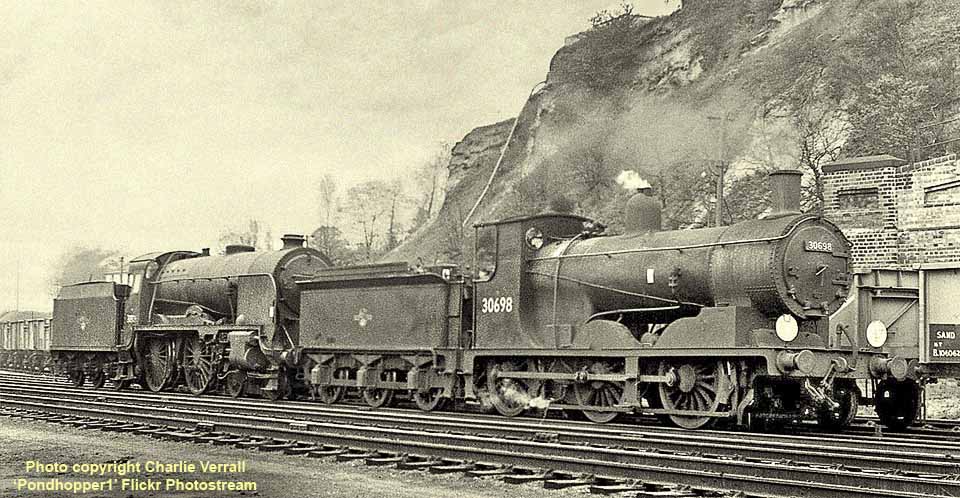
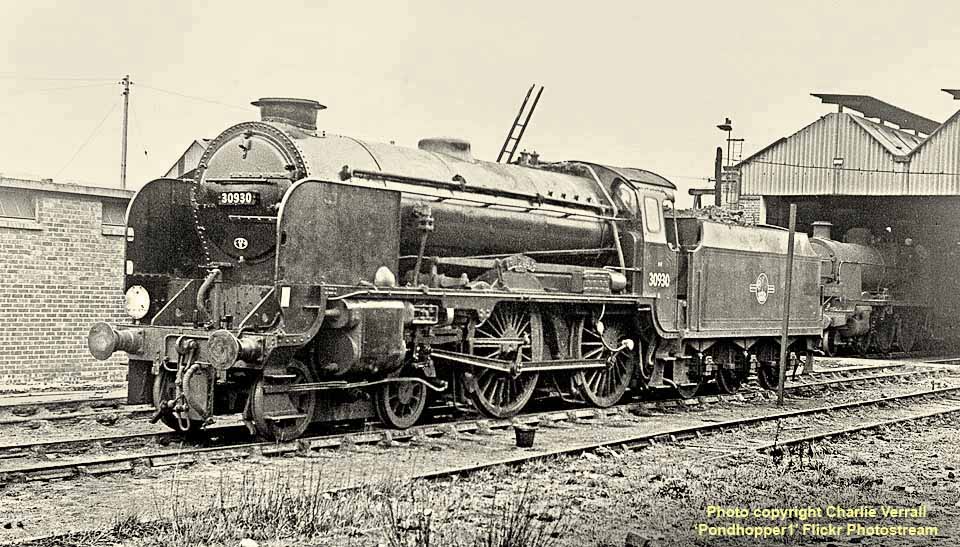
(Above-Below) Also on shed at Redhill was another Schools Class 4-4-0, 30930 Radley. Built at Eastleigh in 1934, 30906 entered traffic in December that year and fitted with a Lemaitre blastpipe in March 1941. Withdrawal came in December 1962. (Below) Later in the day I went to a damp Gomshall and photographed another Schools Class 4-4-0, 30916 Whitgift working a regular Schools turn, the 10.50am Wolverhampton to Ramsgate. No 30916 was built at Eastleigh in May 1933 and yet another December 1962 withdrawal.
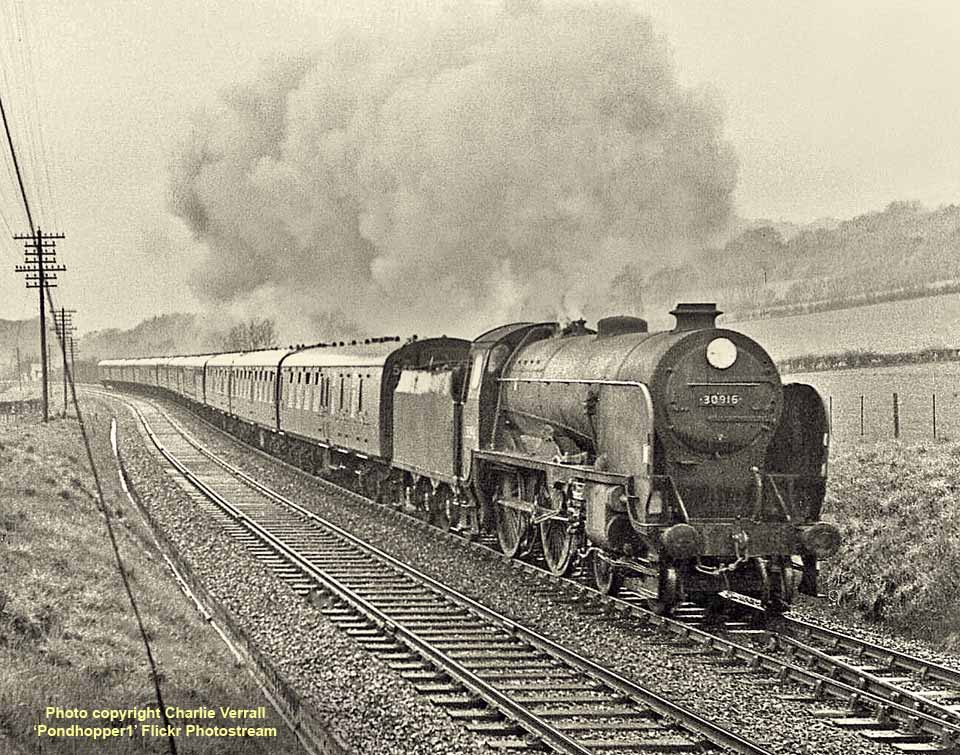
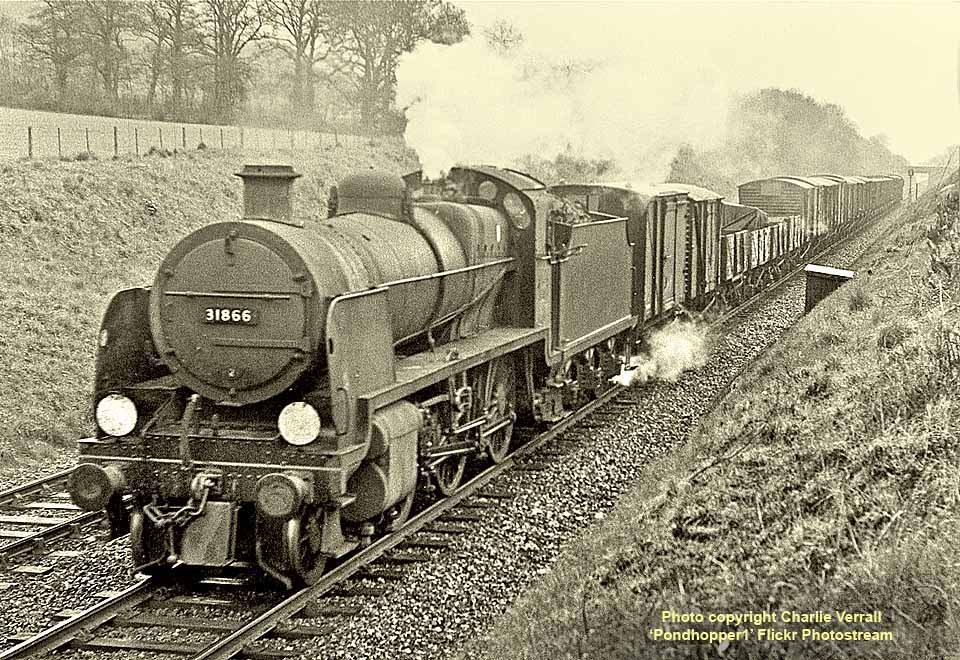
(Above) Dropping down the bank from Westcott was N Class 2-6-0 31866 with the 9.34am freight from Hoo to Reading, a regular Redhill duty. No 31866 was built at Ashford in November 1925 using parts previously constructed at Woolwich Arsenal. Withdrawal took place in January 1966.
PHOTO GALLERY 6
GRESLEY V2s 1961-1965
GRESLEY V2s 1961-1965
Most of the Gresley locomotives of the Great Northern and London and North Eastern Railways were graceful designs, in my mind the most graceful of them all were the V2 2-6-2s. Between 1961 I photographed several of the 'Green Arrows', and here is a selection of them.
(Below) I visited Hitchin on October 7th 1961 and the only photograph I have retained is this one of 60903 on the 1am Inverkeithing to Kings Cross. 60903 was built at Darlington and entered service as LNER 4874 in March 1940. The initial 1946 number of 803 was not taken up, however in December 1946 this loco was renumbered 903. The double chimney was fitted in August 1961, 60903 being one of only eight to be so fitted. Withdrawal too place during October 1963.
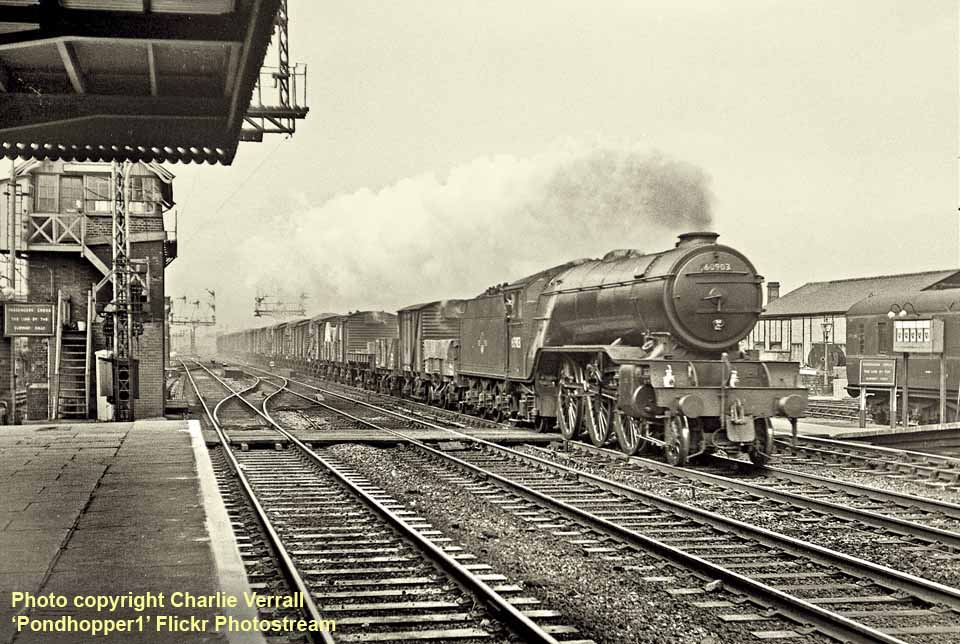
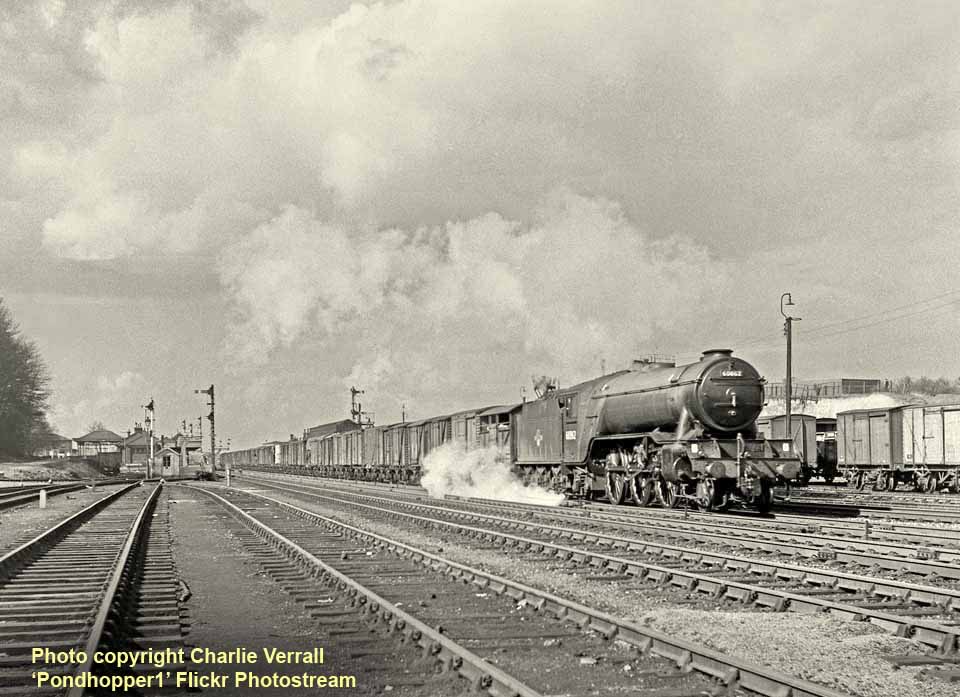
(Above-Below) On March 31st 1962 I was again at Hitchin and took this photograph of 60862 working the 1am ex-Inverkeithing. This is one of my favourite photographs taken between 1961 and 1967. 60862 was built at Darlington in June 1939, and entered service as 4833. The first 1946 number 762 was carried between April and June 1946 then it became 862. The double chimney was fitted during September 1961, and 60862 was withdrawn during July 1963. (Below) Also at Hitchin on March 31st 1962 was this rather grubby 60874 on a down freight train. 60874 was built at Doncaster and as LNER 4845 entered service in June 1939. The first 1946 number 774 was not taken up, however 4845 became 874 in August 1946. Withdrawal took place during August 1962.

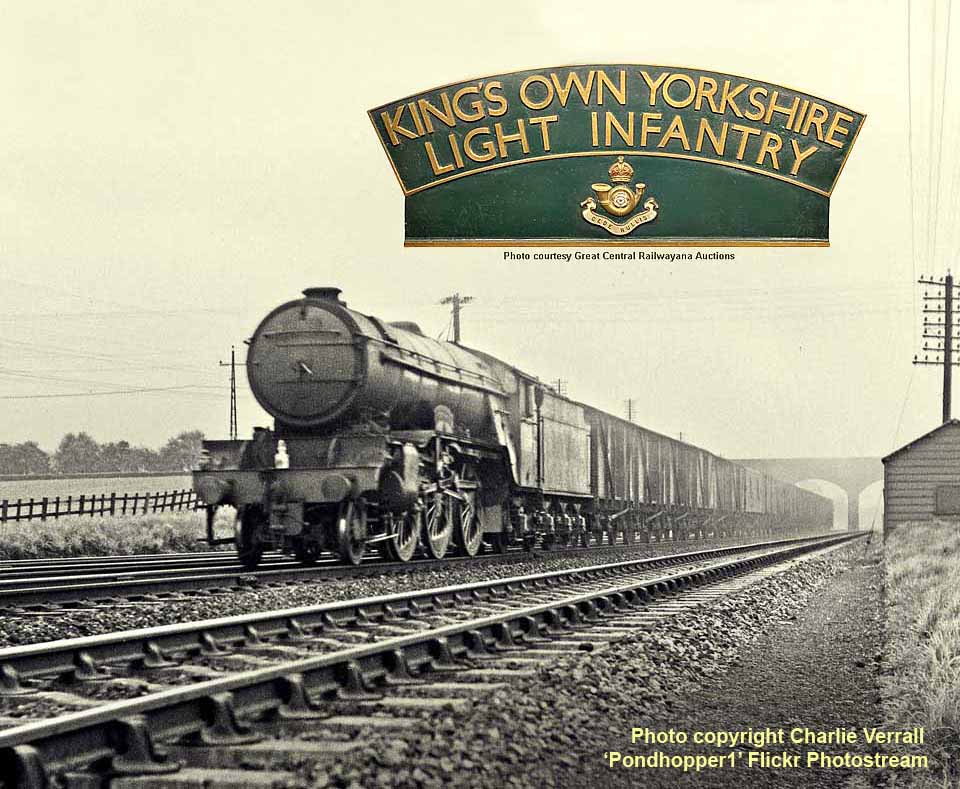
(Above-Below) On May 5th 1962 I was again at Hitchin to photograph 60872 Kings Own Yorkshire Light Infantry on the 11.30am class 4 freight from Kings Cross to Aberdeen. Built at Doncaster in April 1939, No 60842 was one of eight Class V2 locomotives to be named out of a total of 184 members; the locomotive was named on 20 May 1939 at Doncaster Works yard by Lady Deedes, wife of General Sir Charles P Deedes, Colonel of the Regiment. It was renumbered 872 in 1946, becoming BR 60872 and spent most of its working life at Doncaster from where it was withdrawn on 22 September 1963 and cut up at the Works. The nameplate went under the hammer for £25,500 at a Great Central Railwayana Auction on 14th July 2011. Click HERE to visit the GCR Auctions fascinating website...the background information supplied for each lot is quite outstanding. (Below) Class V2 No 60862 again, this time at Wood Green on June 16th 1962 with the 1am ex Inverkeithing.
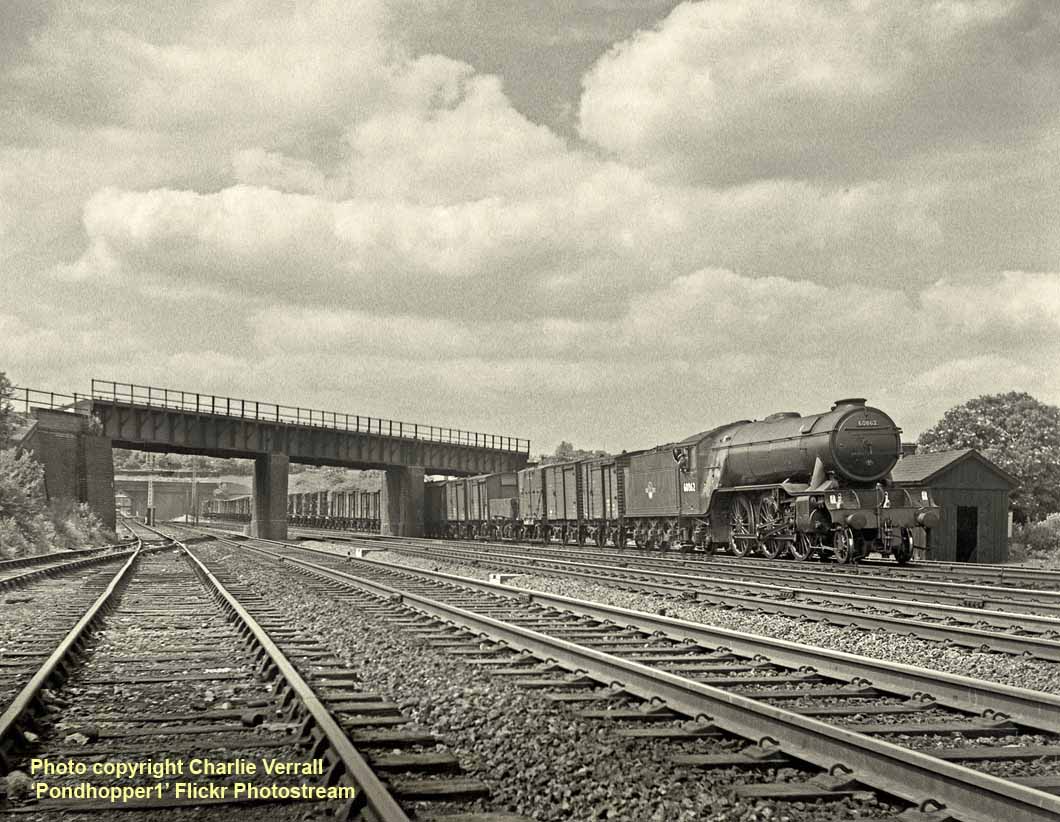
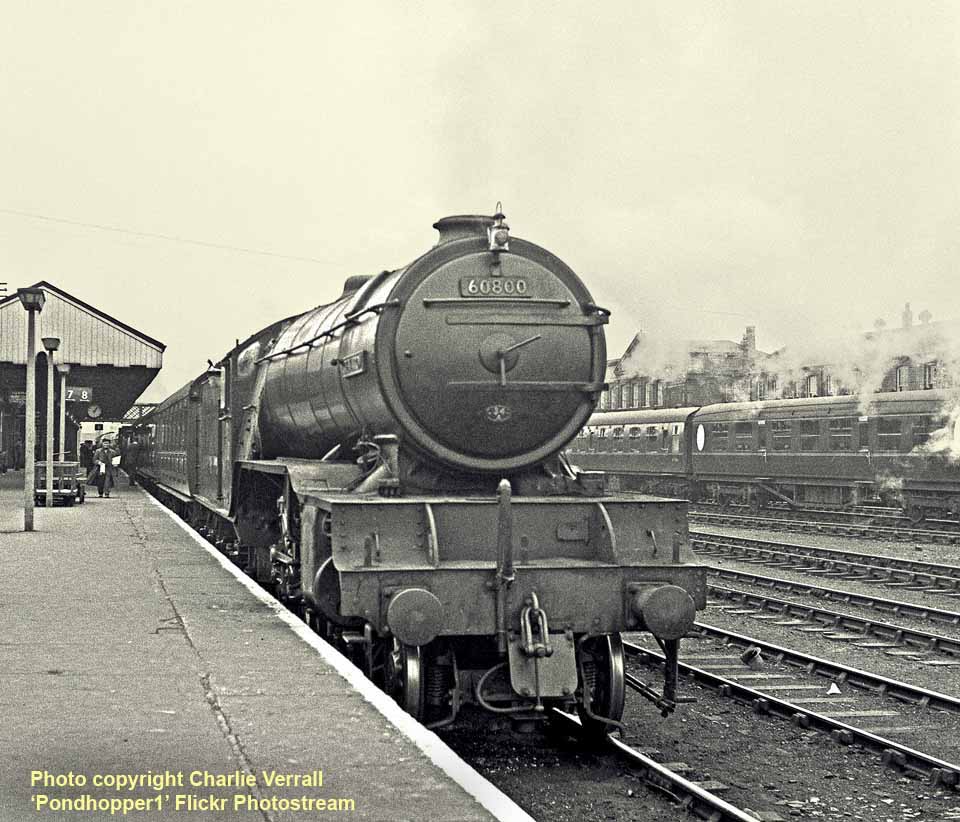
(Above-Below) Photographed at Doncaster on July 14th 1962, the doyen of the class, No 60800 Green Arrow, awaits departure with a down train. Built at Doncaster in June 1936 as LNER 4771, the first 1946 number 700 was not taken up, however in November 1946 the loco was renumbered 800. Following withdrawal in August 1962, No 60800 became part of the National Collection.
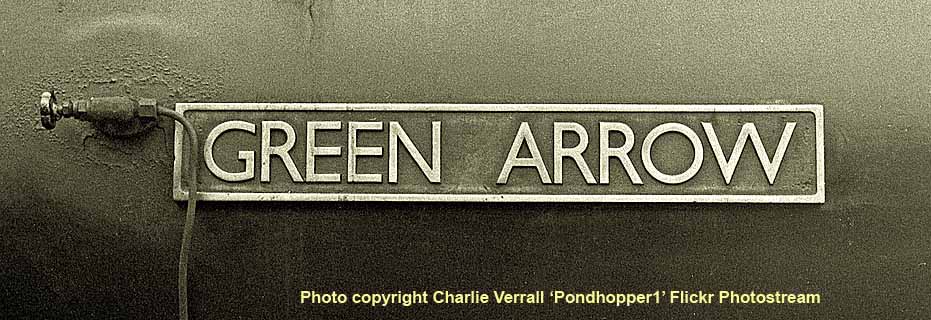
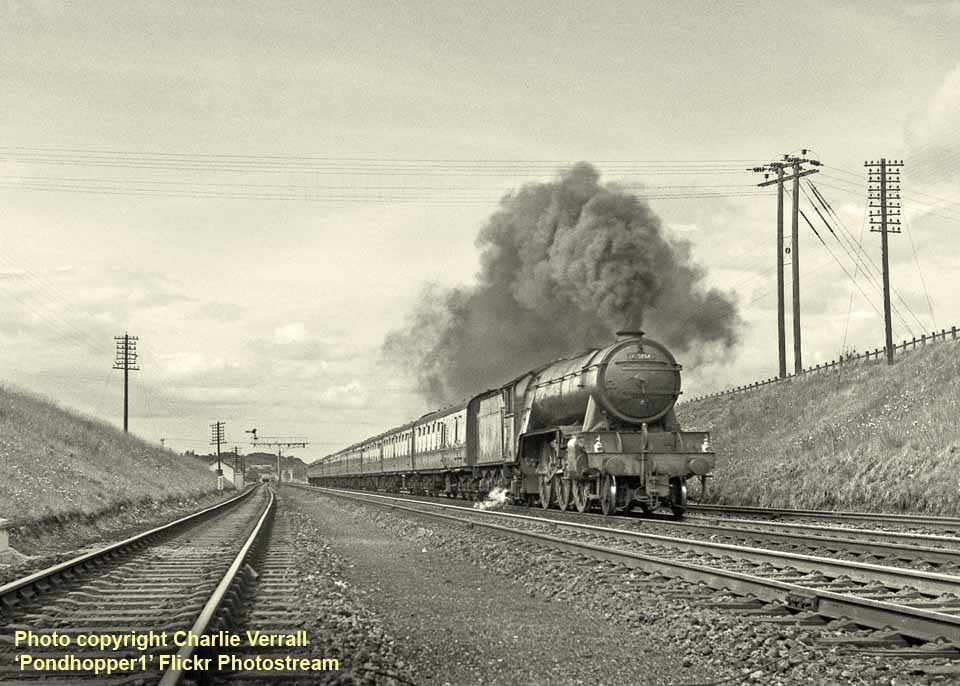
(Above-Below) Another Hitchin photograph, this time of 60814 working the 10.50am Leeds to Kings Cross on August 25th 1962. Built at Darlington in 1937 60814 entered service in October that year as LNER 4785; withdrawal came in April 1963. (Below) Class V2 No 60808 was photographed working the 11.35am Ferme Park to New England at Wood Green on October 6th 1962. 60808 was built at Darlington and entered service as LNER 4779 during September 1939. The first 1946 number 708 was not applied, instead 4779 was renumbered 808 in August 1946. Withdrawal took place during October 1964.
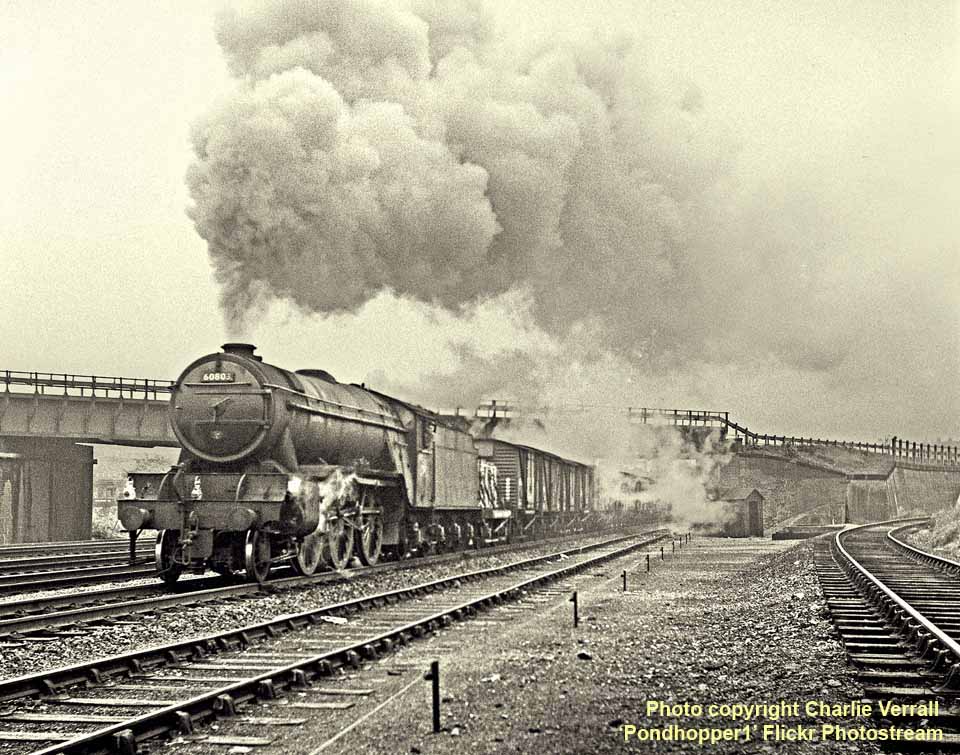
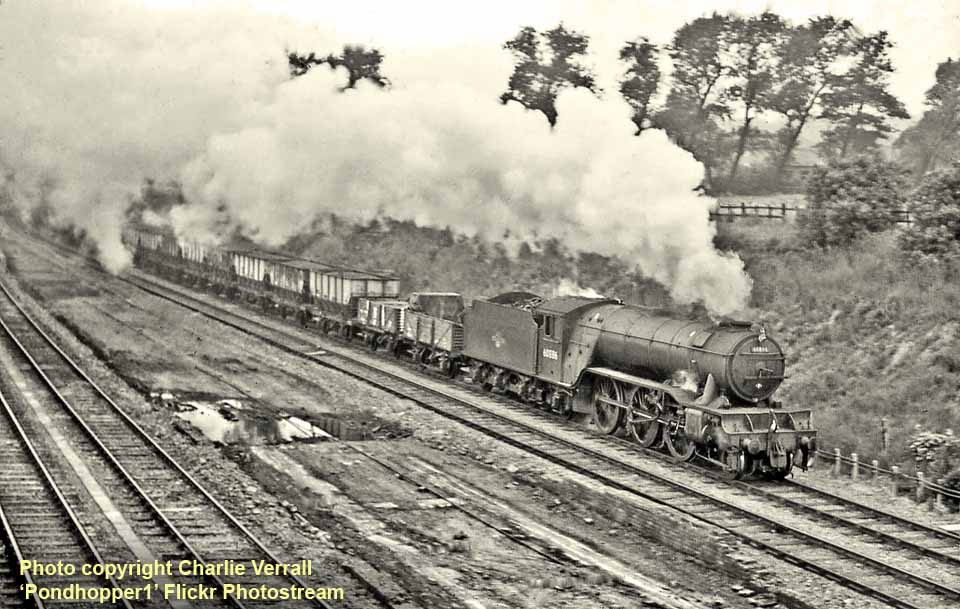
(Above) Fast forward to June 8th 1965 and I photographed 60886 on a freight service at Horbury. Unlike the earlier V2 photographs this image is reproduced from an Agfa Dia-Direct black and white 35mm slide, stock I used a lot of in the mid to late 1960s. 60886 was built at Darlington and entered service as 4847 in November 1939. The first 1946 number 786 was not used however this loco became 886 in October 1946. Withdrawal took place during April 1966.
CHAPTER NINE - 1962
RAILWAY RECONNAISANCES CONTINUED
RAILWAY RECONNAISANCES CONTINUED
(Below) Being in possession of my own camera again I was back at Hitchin on a rather gloomy May 12th for what was mainly photographing diesels. One steam working was Class A1 4-6-2 No 60121 Silurian carrying supporters to the Rugby League Cup Final at Wembley between Wakefield Trinity and Huddersfield. Built at Doncaster in December 1948, No 60121 was a York engine all its working life; withdrawal came in October 1965.
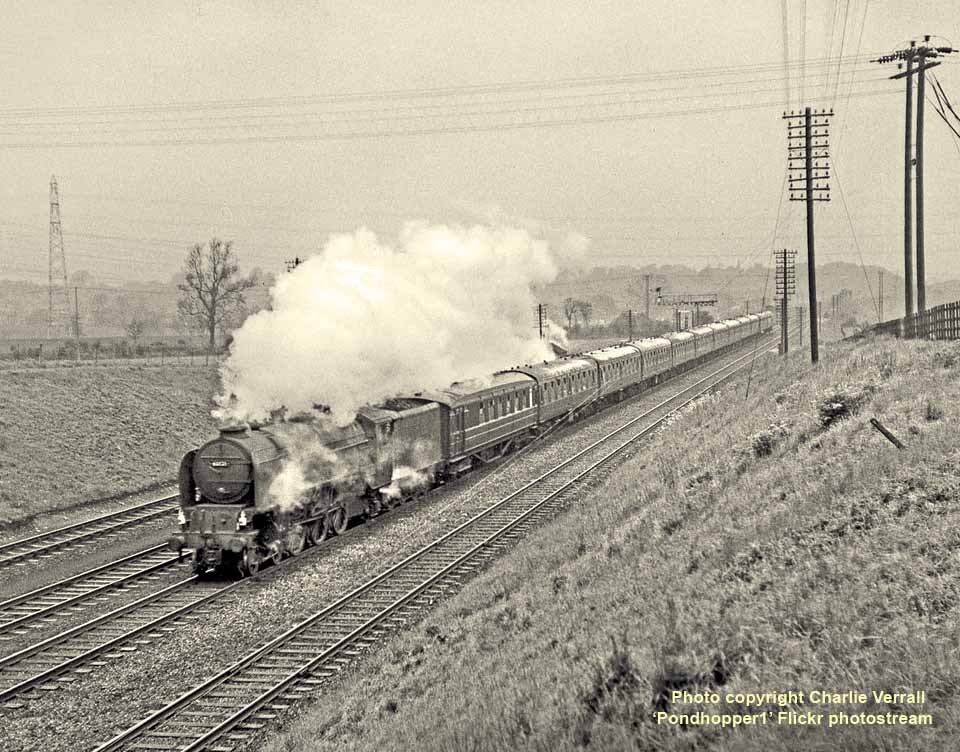
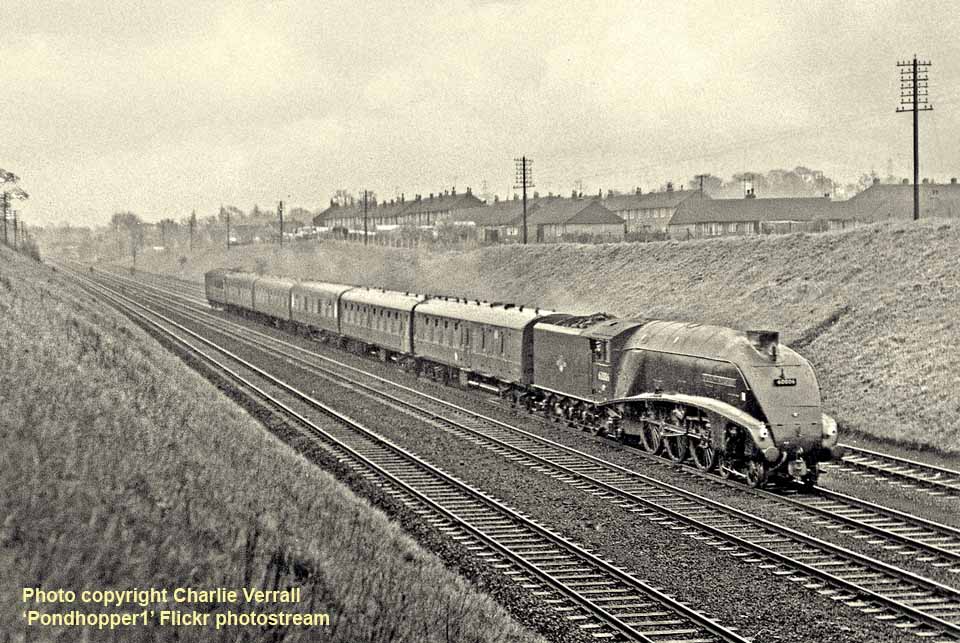
(Above-Below) Another steam working was A4 Class 4-6-2 60006 Sir Ralph Wedgwood with the 10.25am Kings Cross to Grantham. Built at Doncaster in January 1938, this A4 was originally numbered 4468 and named Herring Gull until December 1943. Withdrawal took place in December 1965. (Below) Among the diesel hauled services I photographed that day included this up engineers train being worked by EE Co Type 2 Bo-Bo No D5907. Not the most successful of diesel locomotives to emerge from the EE Co works, this 'Baby Deltic' entered service in May 1959 and became an early candidate for withdrawal in October 1968.

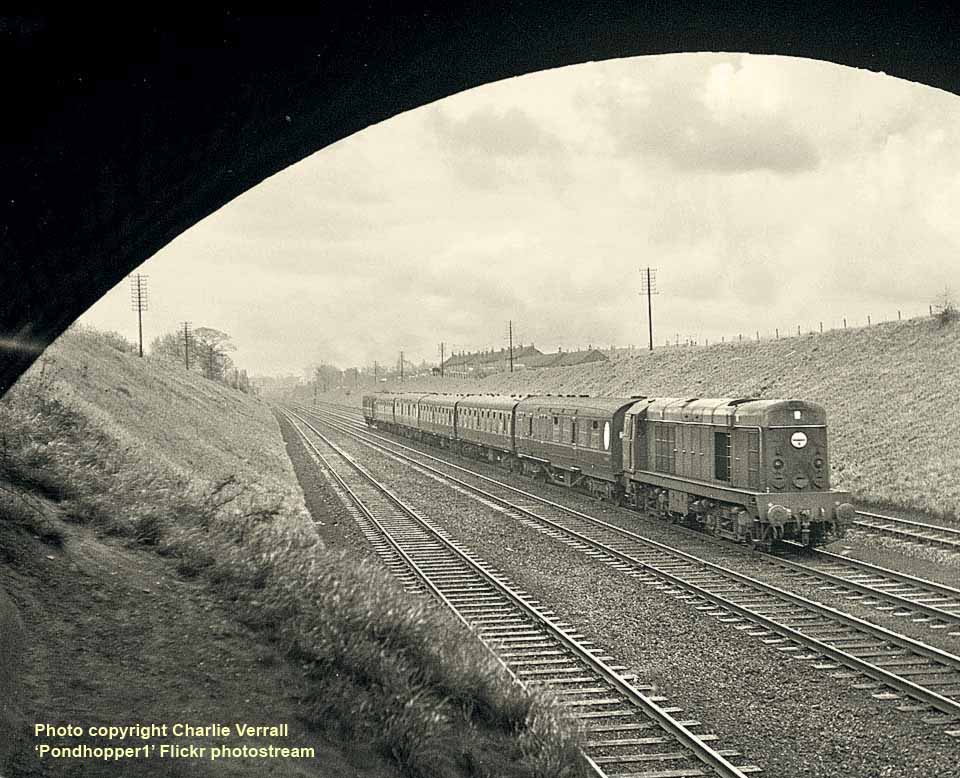
(Above-Below) EE Co Type 1 Bo-Bo Diesel Electric D8049 on the 11.20 am Kings Cross to Baldock. This Type 1 locomotive entered service in December 1959 and under BR's Total Operations Processing System (TOPS) became Class 20 and renumbered 20049 in January 1973; withdrawal took place in May 1987. (Below) Working the 7.50am Newcastle to Kings Cross was 'Deltic' Co-Co Diesel Electric D9018 Ballymoss. Built at the EE Co Newton-le-Willows works in November 1961 No D9018 was named on entering service. The TOPS number 55018 was applied in February 1974; withdrawal took place in October 1981.

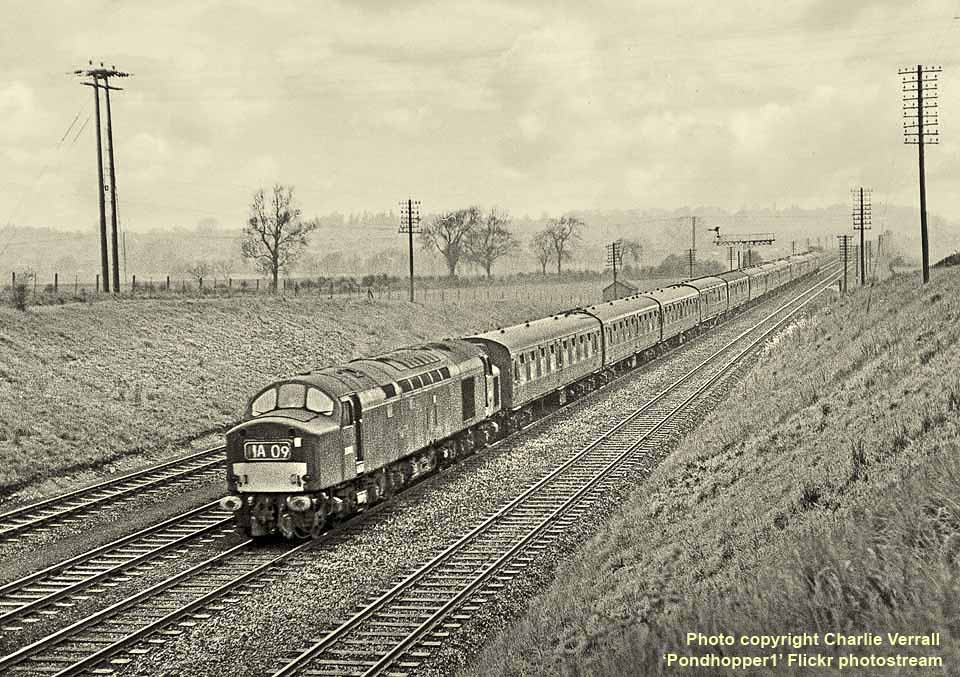
(Above-Below) Yet another EE Co product, this one being Type 4 1Co-Co1 Diesel Electric D349 at the head of the 9.16am York to Kings Cross; D349 entered service in October 1961 and was renumbered 40149 under TOPS during December 1973. Withdrawal took place in August 1981. (Below) A week later, on May 19th, I was at Wood Green to photograph Type 4 1Co-Co1 D278 on the 12.10pm freight from Kings Cross to Niddre. D278 was built in June 1960, renumbered 40078 under TOPS in February 1973 and withdrawn in October 1983.
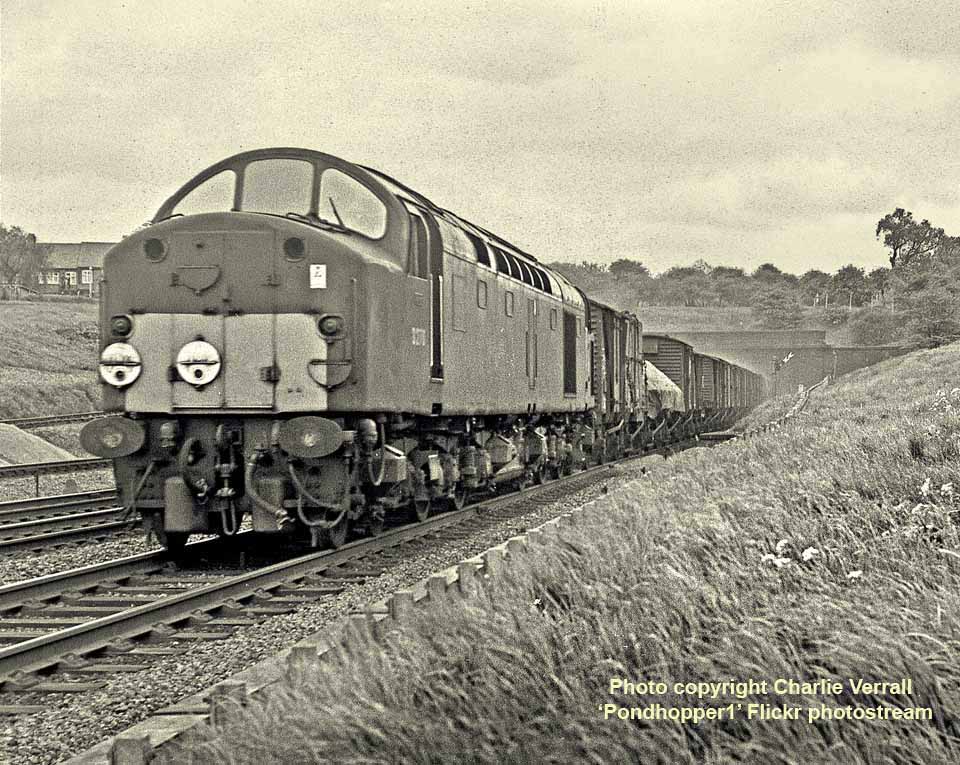
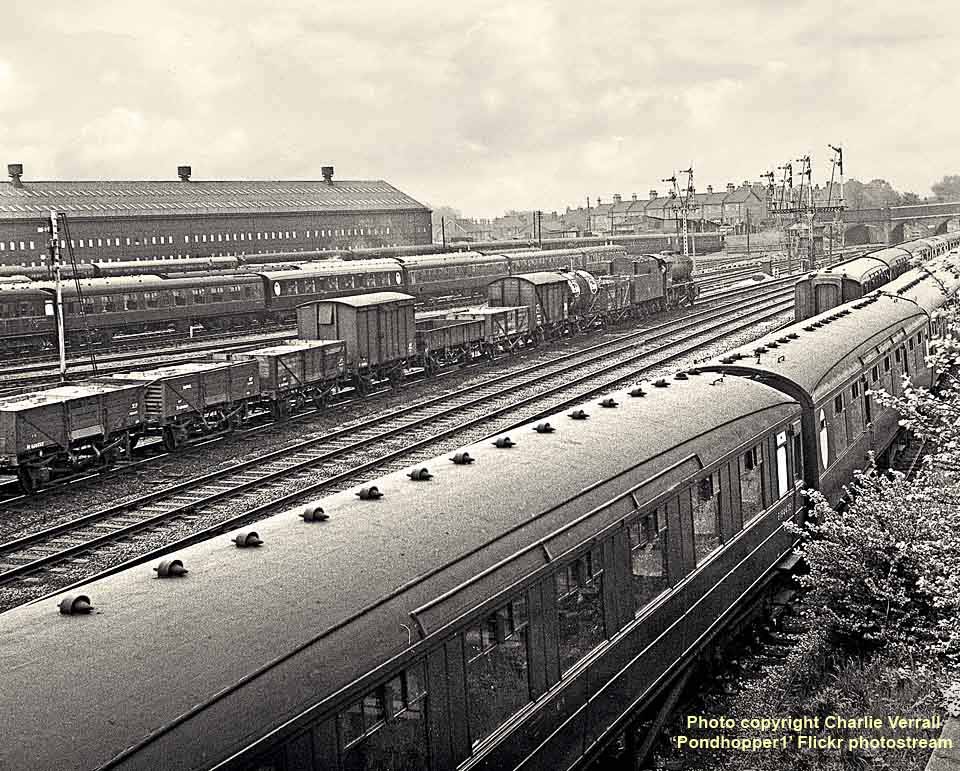
(Above-Below) WD Class 2-8-0 90664 was photographed working an up freight at Wood Green on May 19th 1962. Built by the Vulcan Foundry this loco entered service as WD 79190 in October 1944. Purchased by British Railways it was renumbered 90664 in February 1950 and withdrawn during October 1966. (Below) Moving on to New Southgate, A3 Class 4-6-2 60067 Ladas was photographed on the 7.15am Halifax to Kings Cross. Built at Doncaster as LNER A1 Class No 2566, the locomotive entered service in August 1924. The higher pressure boiler was fitted in November 1939 making it a Class A3. The first 1946 number of 535 was not applied; instead 2566 became 67 in October 1946. Withdrawal took place in December 1962.
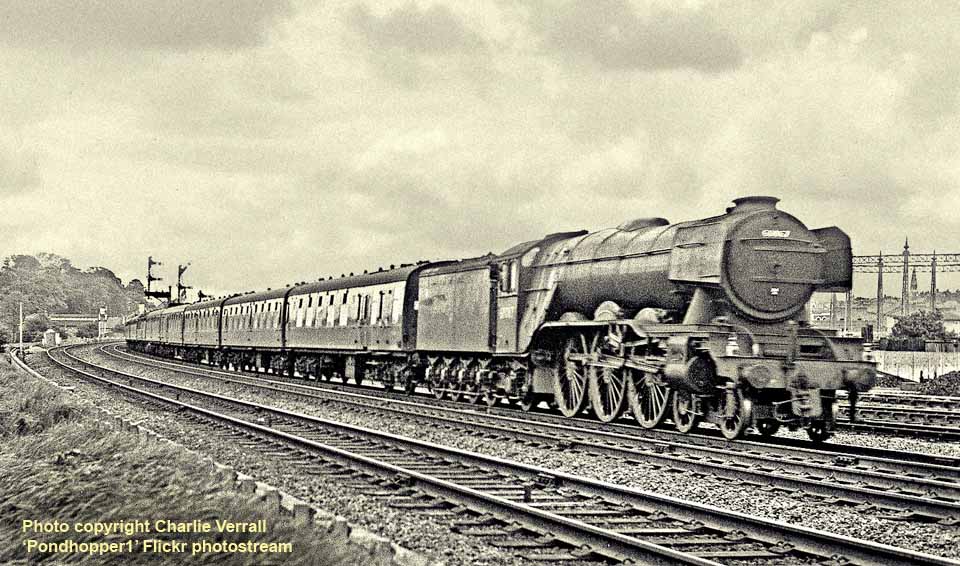
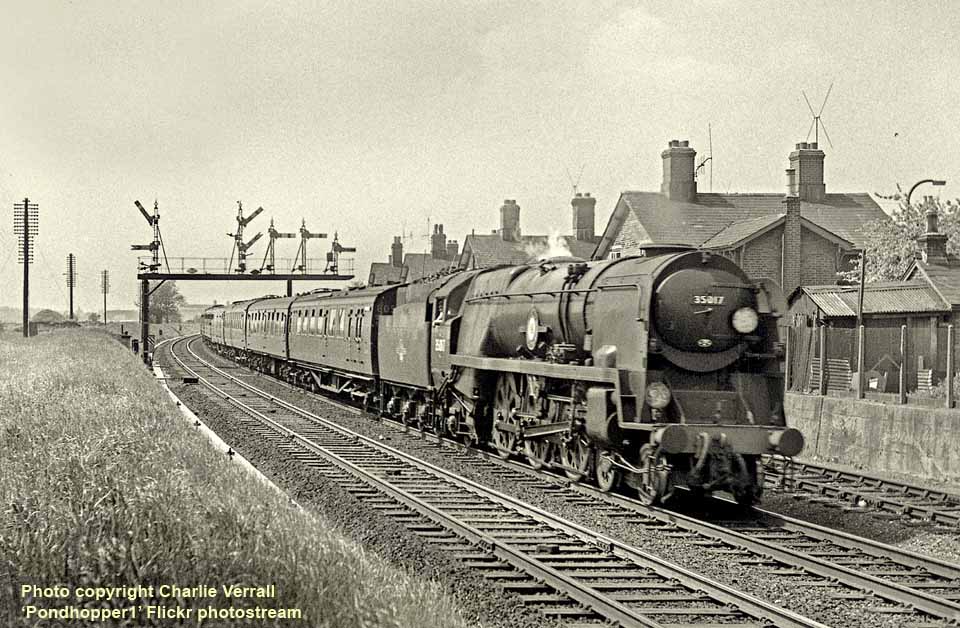
(Above-Below) On June 2nd 1962 I was back at Eastleigh where Rebuilt Merchant Navy Class 4-6-2 35017 Belgian Marine was working the 9.17am Weymouth to Waterloo. Built at Eastleigh in April 1945, the locomotive entered service as Southern Railway 21C17. Rebuilding took place at Eastleigh in March 1956 and withdrawal came during September 1966. (Below) Rebuilt West Country Class 4-6-2 No 34022 Exmoor heads the 2pm to Bournemouth. Built at Brighton as 21C122, the locomotive entered service in January 1946. Rebuilding took place at Eastleigh in December 1957 and withdrawal came during August 1965.
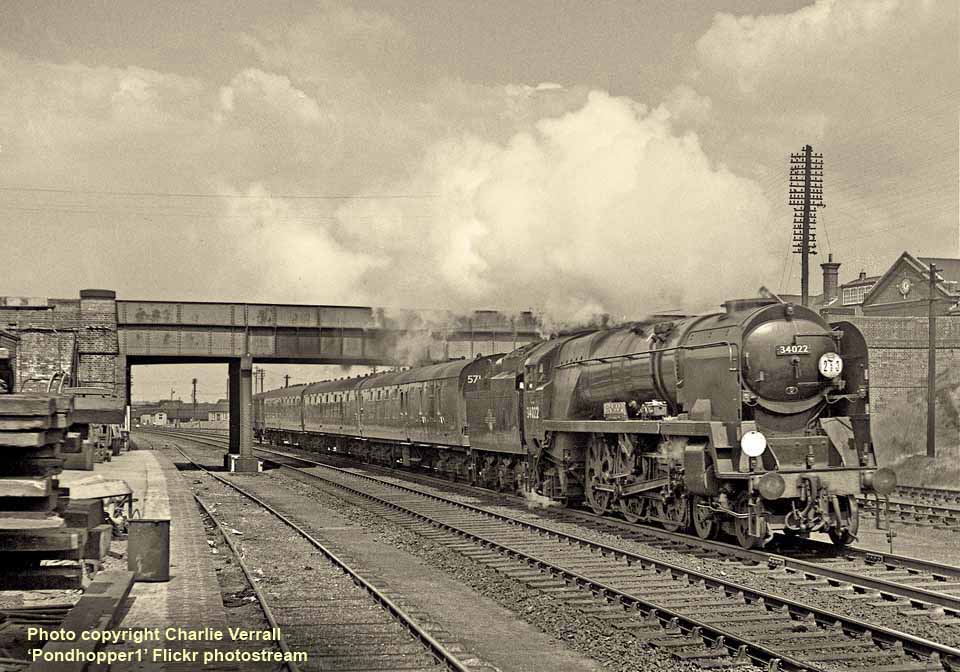
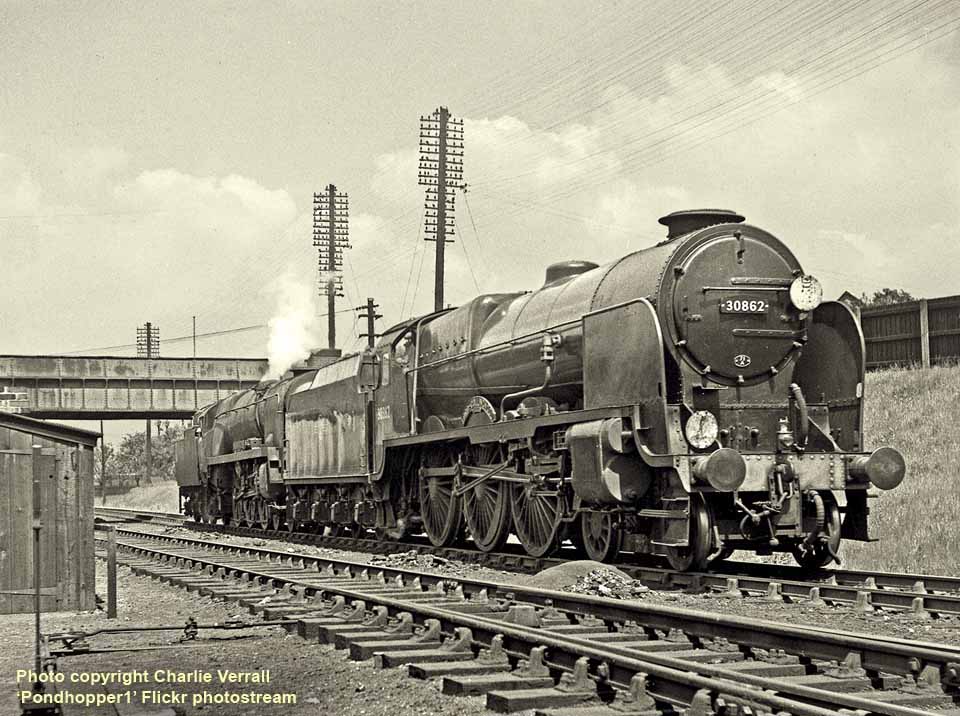
(Above-Below) Also on shed at Eastleigh that day was Lord Nelson Class 4-6-0 30862 Lord Collingwood, one of the last two to remain in service. 30862 was built at Eastleigh in October 1929 and withdrawn in October 1962. (Below) Tyseley based BR Standard Class 4 4-6-0 75024 was photographed in the shed yard. Built at Swindon in December 1953, 75024 was withdrawn in November 1967.
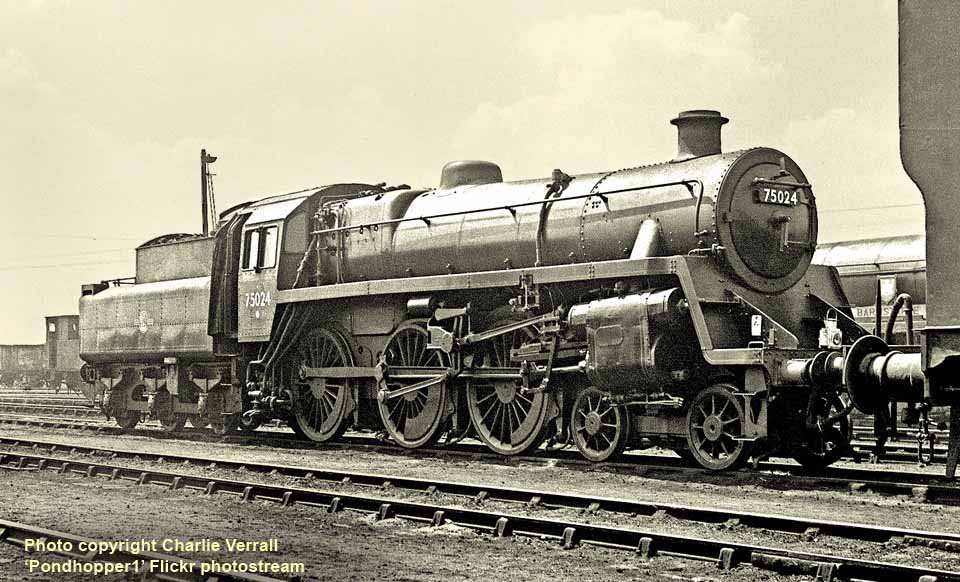

(Above-Below) After leaving Eastleigh I was back at Wivelsfield in time to photograph LMS Class 5 4-6-0 45134 working a return special from Brighton to Leighton Buzzard. 45134 was built by Armstrong Whitworth and entered service in May 1935, withdrawal took place during August 1968. (Below) On June 3rd I was in the Sussex countryside between Ashurst and Birchden Junctions, near to the present Spa Valley Railway, where I photographed K Class 2-6-0 32349 working a weed killing train; note the use of old locomotive tenders to hold the chemicals. 32349 was built at Brighton in December 1920 and withdrawn in November 1962.
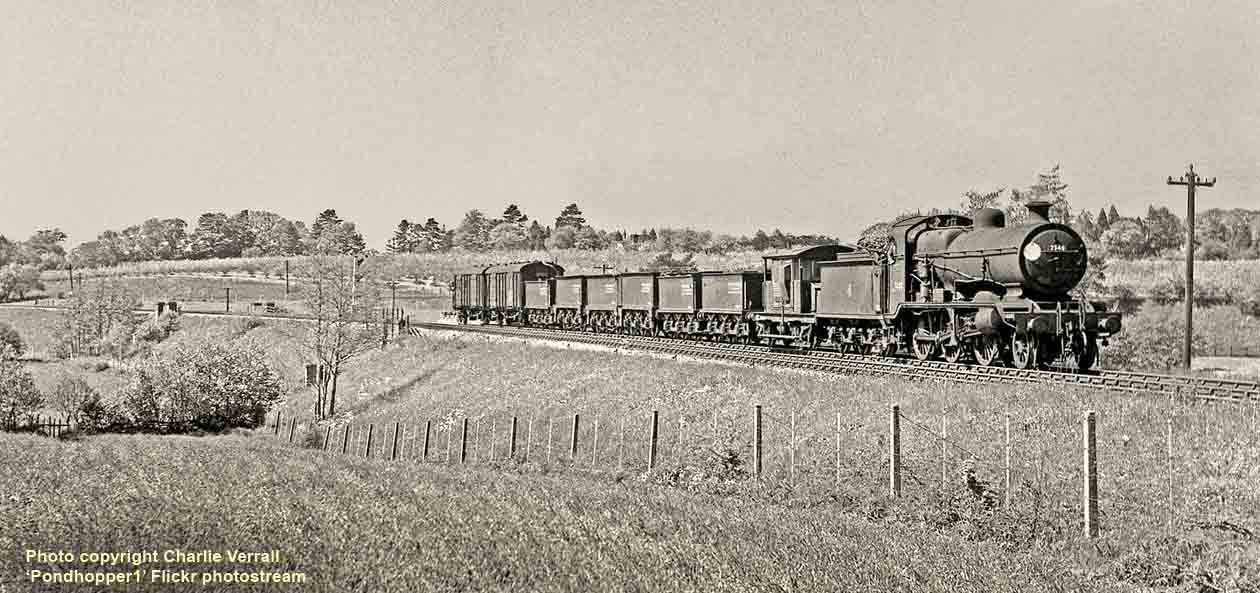
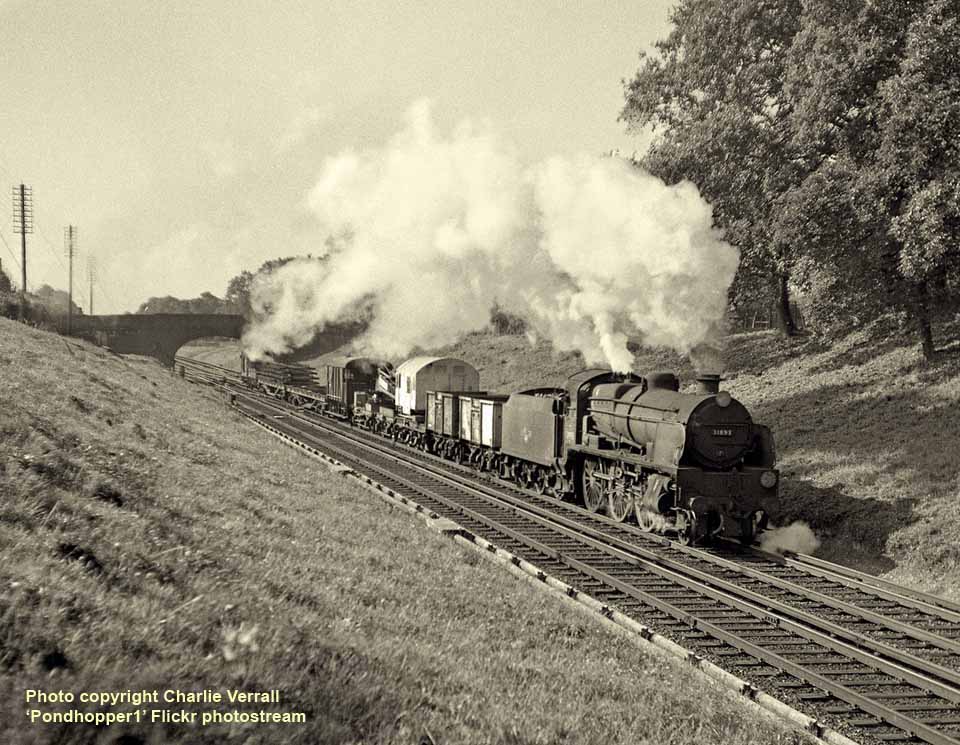
(Above-Below) U1 Class 2-6-0 31894 was photographed at Wivesfield at the head of an engineers special from Ford to Three Bridges via Hove. 31894 was built at Eastleigh in February 1931 and withdrawn in December 1962. (Below) On June 4th 1962 I travelled overnight from Paddington to Plymouth. I had originally booked the sleeper, but Michael Harris and I had been to a Frank Sinatra concert at Hammersmith which overran resulting in missing my train and I had to travel later 'on the cushions'. I had a permit for Laira steam shed where I photographed 'Castle' Class 4-6-0 No 4087 Cardigan Castle. Built at Swindon in June 1925, 4087 was withdrawn during October 1963.
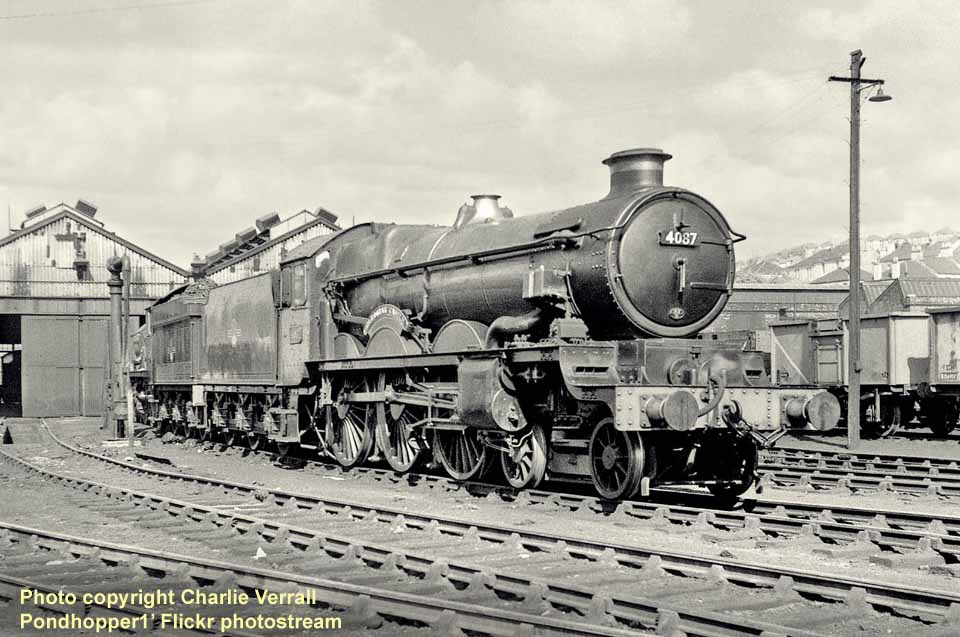

(Above-Below) A view inside Plymouth Laira's roundhouse of engines standing beneath the smoke hoods around the turntable. From the left to right, an unidentified loco with its smokebox door open occupies the first stall, then'Castle' Class 4-6-0 No 7022 Hereford Castle, 4575 Class 2-6-2 tanks 5544 and 5564, and 6400 Class 0-6-0 pannier tank No 6438. 7022 was built at Swindon, entering service in July 1949, withdrawal took place in June 1965; 5544 was built at Swindon in August 1928 and withdrawn in September 1962; 5564 entered service in December 1928 and withdrawn in December 1964; finally 6438 was built at Swindon in April 1947 and withdrawn in November 1962. (Below) Also in Laira shed was withdrawn 4500 Class 2-6-2 tank 4566 awaiting its fate; the locomotive ended its days in traffic during the April before my visit.
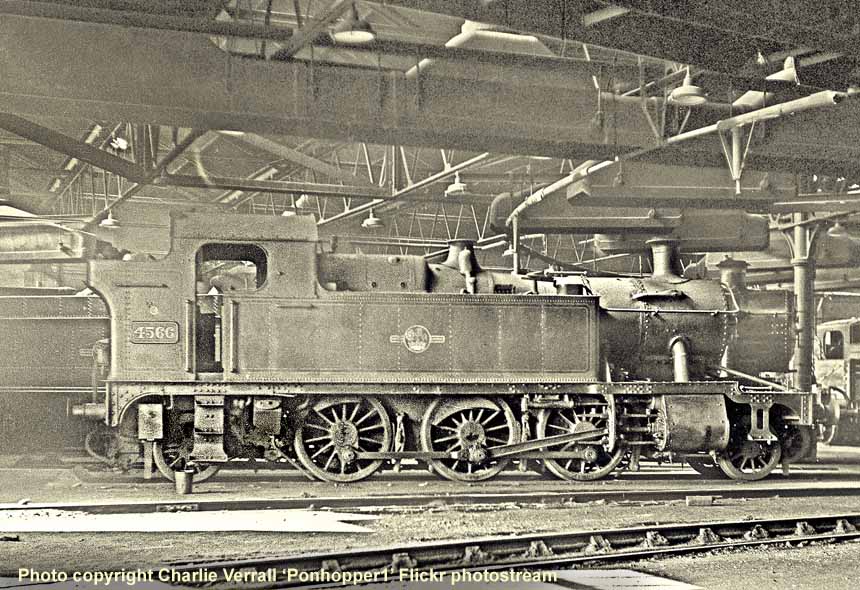
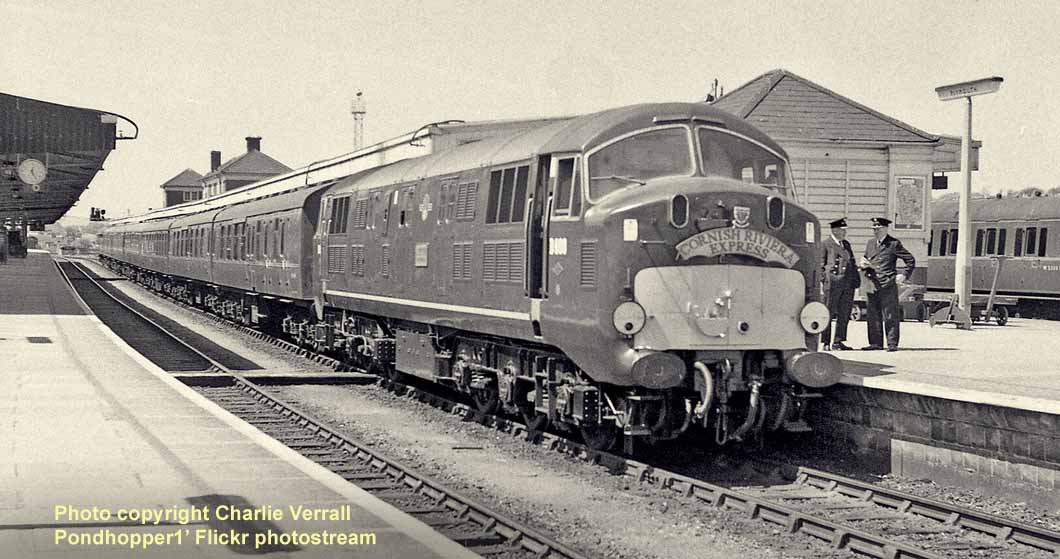
(Above-Below) NBL/MAN-powered Warship Type 4 A1A-A1A D600 Active awaits departure from Plymouth North Road station with the up 'Cornish Riveria Express'. Built by the North British Locomotive Company's Glasgow works in January 1958, D600 was withdrawn in December 1967. (Below) Making my way to Laira Junction, NB Class 43 diesel hydraulic No D846 Steadfast was seen working the 10.30am Plymouth to Paddington. Another product of the North British locomotive Company, D846 entered traffic in April 1961 and withdrawn during May 1971.

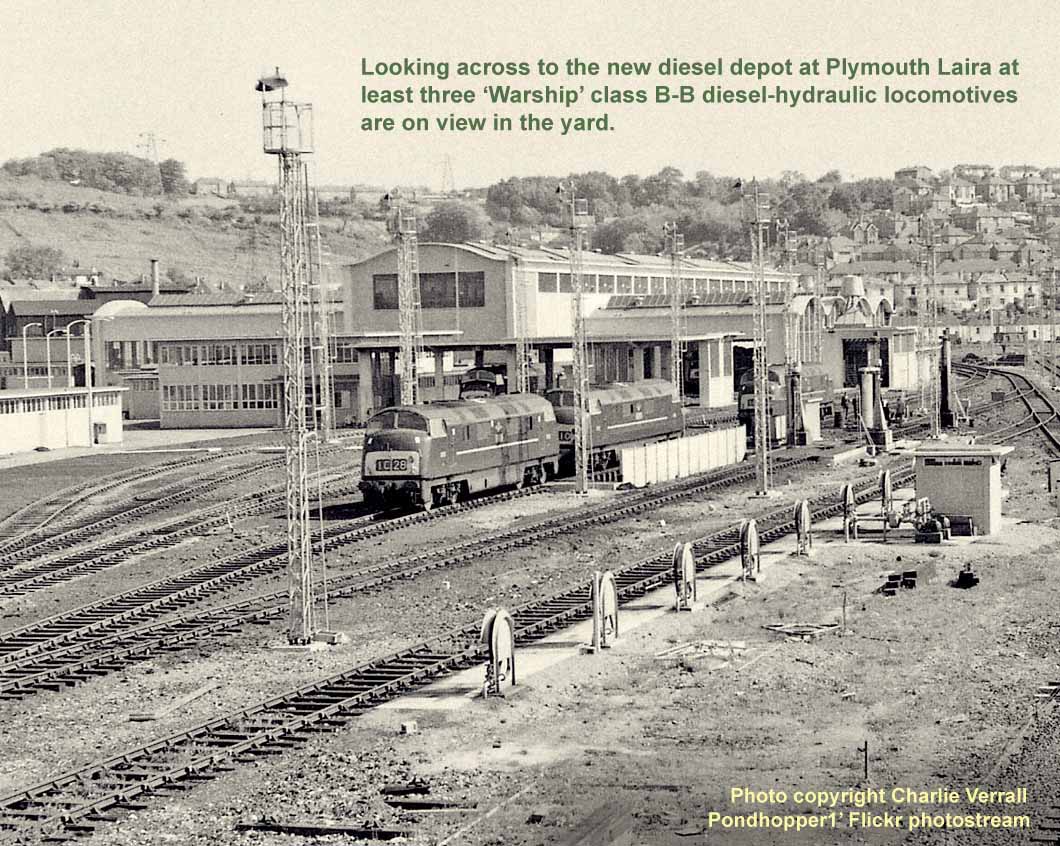
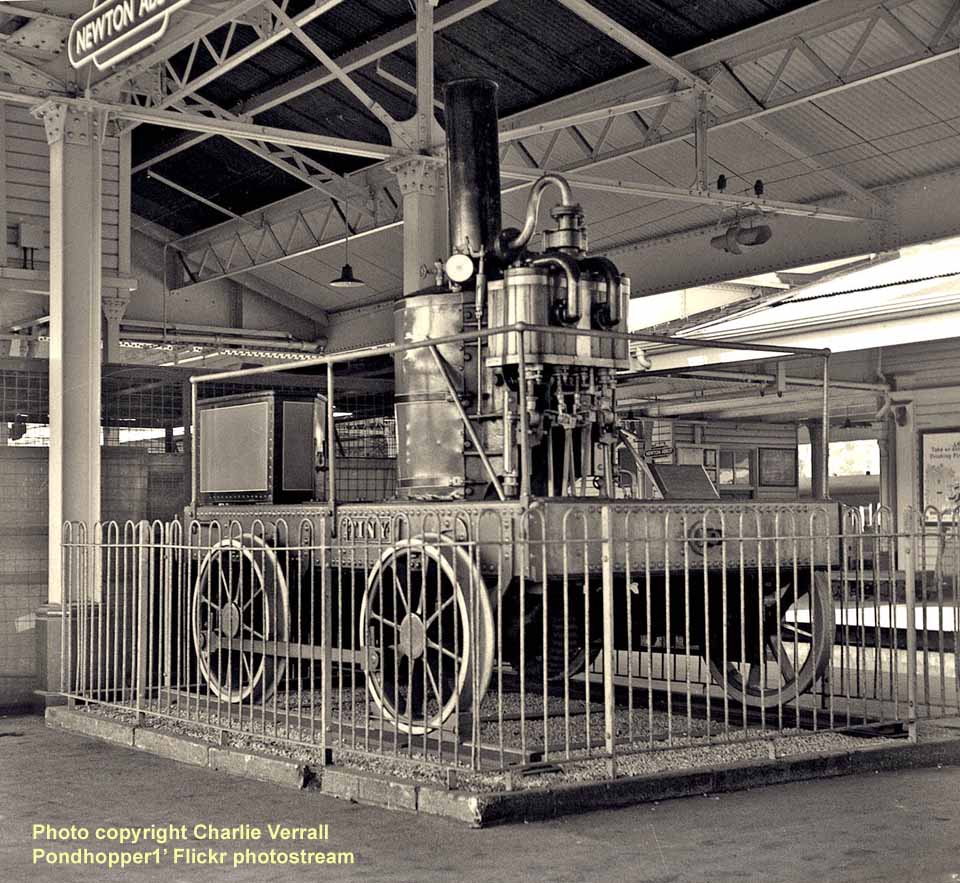
(Above-Below) On my way to Exeter I stopped off at Newton Abbot to photograph the preserved South Devon Railway 7ft gauge Sara and Burgess 0-4-0 geared tank 'Tiny', looking here much smarter than I recall from the 1950s; this engine is now on display under at Buckfastleigh. (Below) I arrived at Exeter just in time to capture 1400 Class 0-4-2 tank No 1466 departing with the 2.08pm to Bampton. Built at Swindon in February 1936 and originally numbered 4866 the engine was renumbered 1466 in 1948; following withdrawal from Taunton shed in December 1963, 1466 now survives in preservation and can be seen at the Didcot Railway Centre. Click HERE to visit the Society's website. Note also in the background the Z Class 6F 0-8-0 tank awaiting its next banking duty to Exeter Central.
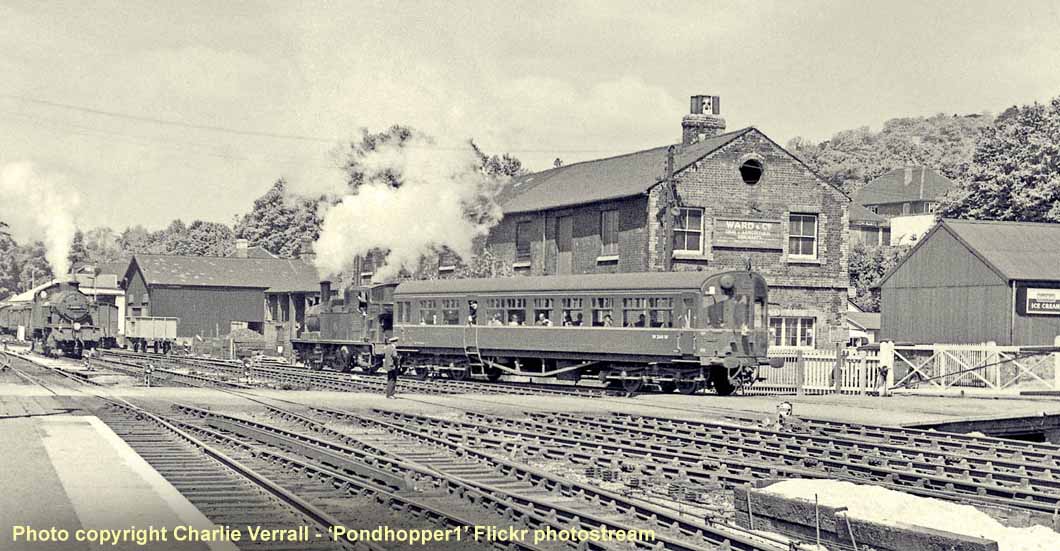
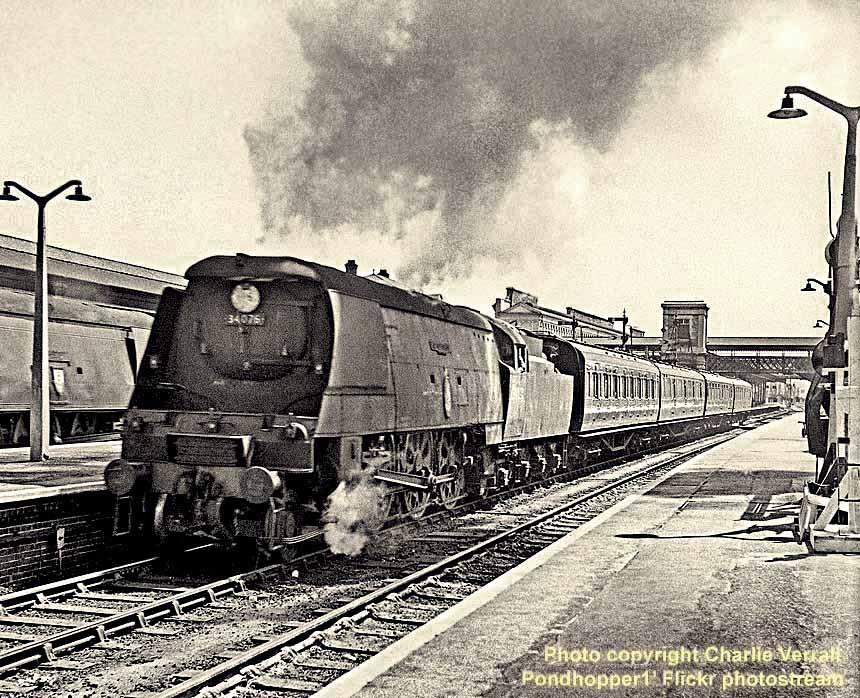
(Above-Below) Two Bulleid Light Pacifics were also seen at Exeter, starting with No 34076 41 Squadron on the Torrington portion of the Down 'Atlantic Coast Express'. Built at Brighton in June 1948, No 34076 was withdrawn in January 1966. (Below) No 34002 Salisbury awaits departure with the Padstow portion of the down 'Atlantic Coast Express'. Built at Brighton in June 1945 as Southern Railway No 21C102, this was one of several Light Pacifics based at Exmouth Junction shed for use on the services west of Exeter; the loco was withdrawn in April 1967.
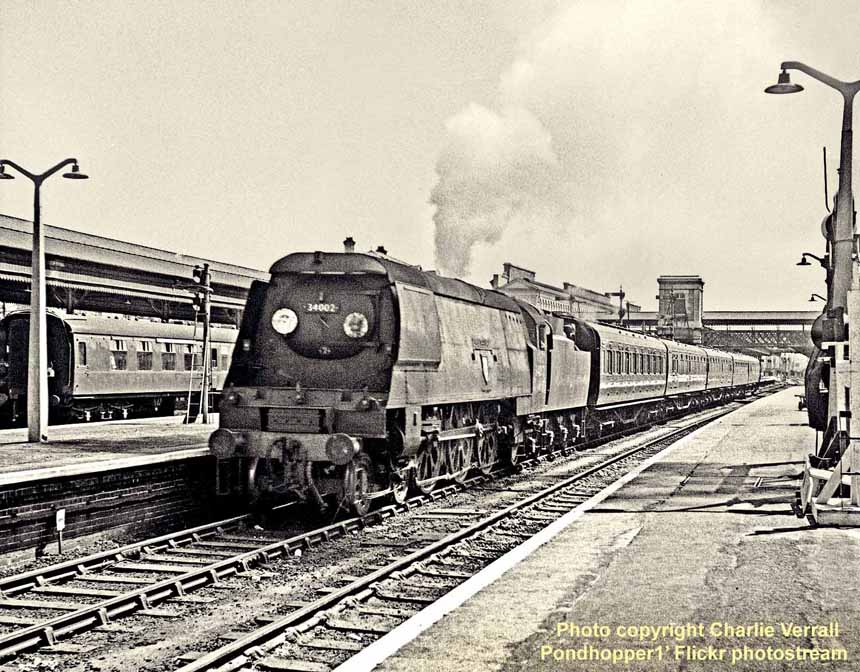
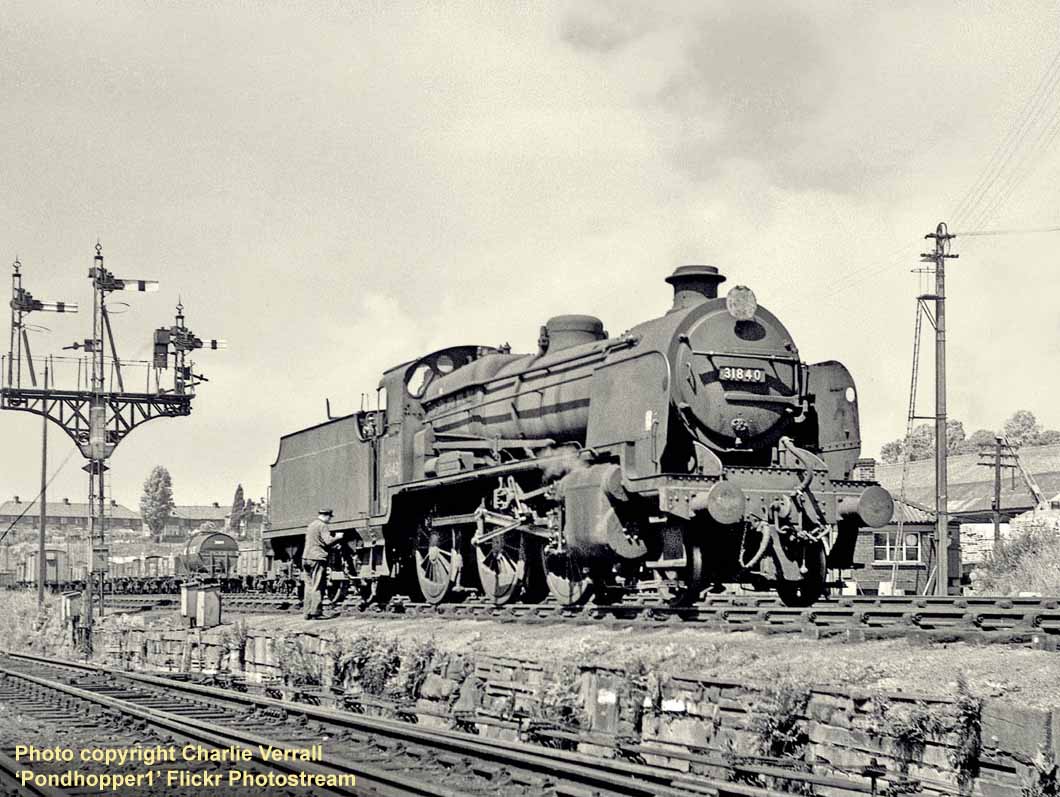
(Above-Below) On June 5th I visited both the Western Region engine shed (83C) and the Southern Region's Exmouth Junction (72A). Seen at Exmouth Junction and adjacent yards were the following, starting with N Class 2-6-0 31840, built at Ashford using some parts made at Woolwich Arsenal. No 31840 entered service as A840 in August 1924; a front-end frame conversion was carried out in February 1957, however within seven years this loco was withdrawn in September 1964. (Below) Battle of Britain class No 34074 46 Squadron was among the Light Pacific fleet based at 72A. Built at Brighton in May 1948, No 34074 was withdrawn during June 1963.
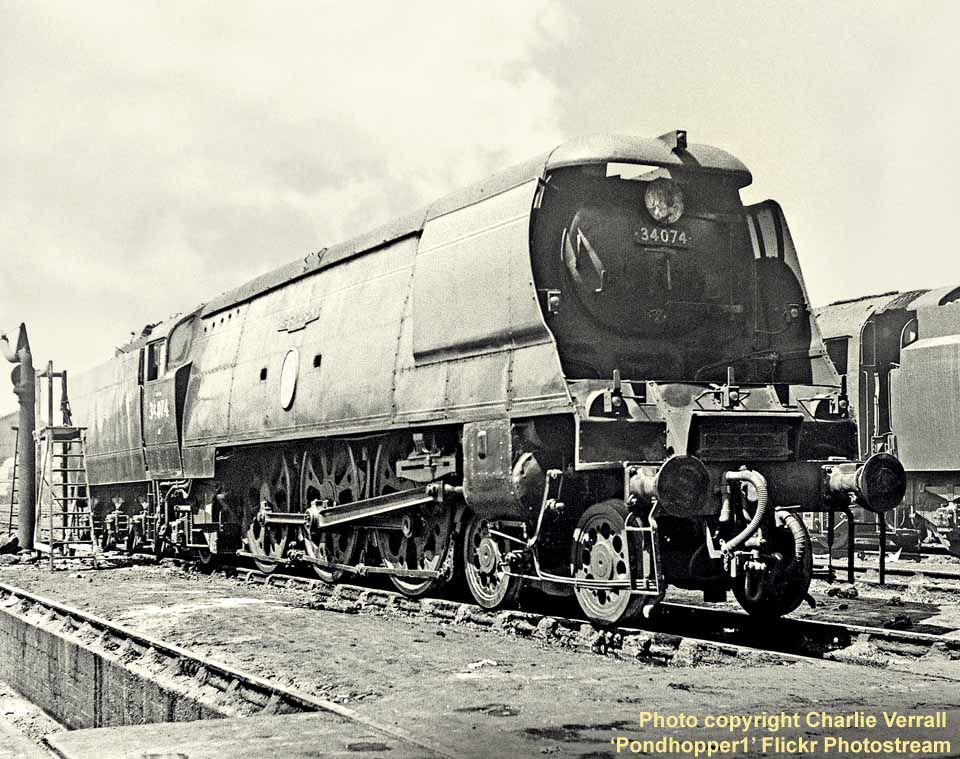
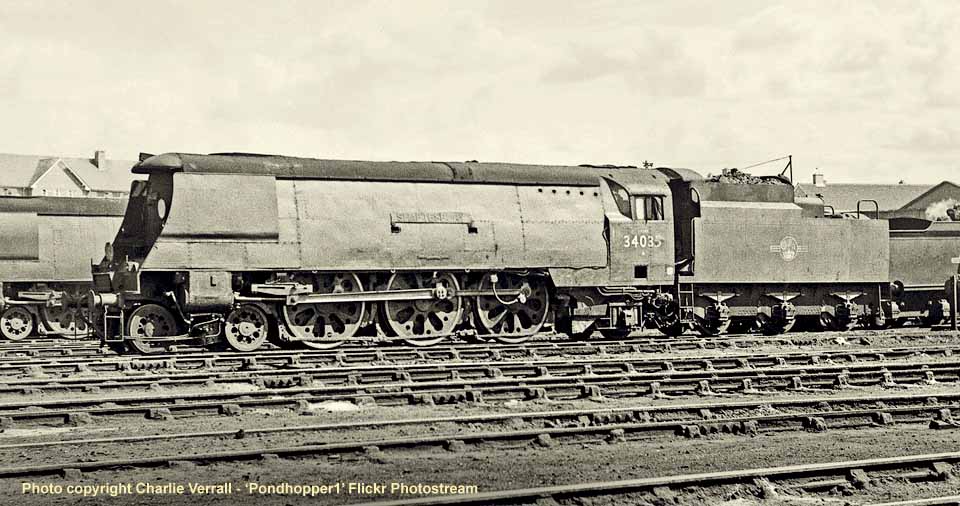
(Above-Below) Another Exmouth Junction Pacific was 'West Country' class No 34035 Shaftsbury, originally built as Southern Railway 21C135 and entering service in July 1946; withdrawal came in June 1963. (Below) Another Pacific was 34106 Lydford; ex-Brighton in March 1950 and withdrawn in September 1964.
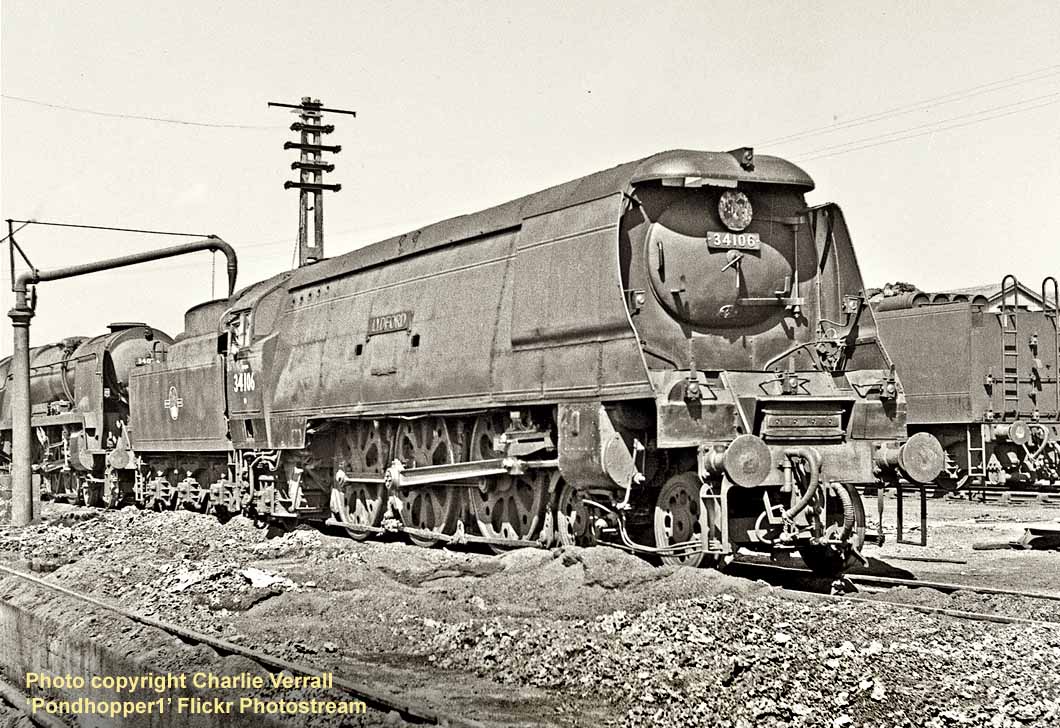
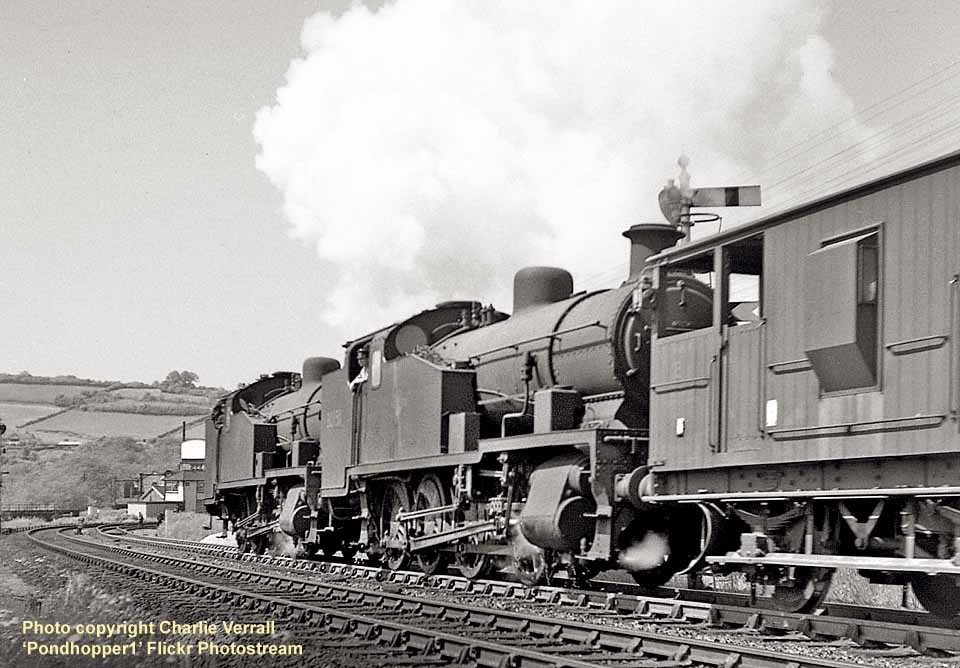
(Above-Below) A pair of Z Class 0-8-0 tanks Nos 30951 and 30950 were seen between Exeter St Davids and Exeter Central banking the 1.55pm stone train ex-Meldon Quarry. No 30950 was ex-Brighton in March 1929 and withdrawn in October 1962, whereas 30951 came into service a month later and was withdrawn in November 1962. All eight members of this class spent their final years based at Exmouth Junction shed but by the autumn of 1962 most were in need of repairs which could not be justified and they were replaced by W Class 2-6-4 tanks. (Below) Earlier passing Exmouth Junction was Rebuilt Merchant Navy 4-6-2 35012 United States Lines on the up 'Atlantic Coast Express'. Constructed at Eastleigh in January 1945 as 21C12, No 35012 was rebuilt during February 1957 and withdrawn in February 1967.
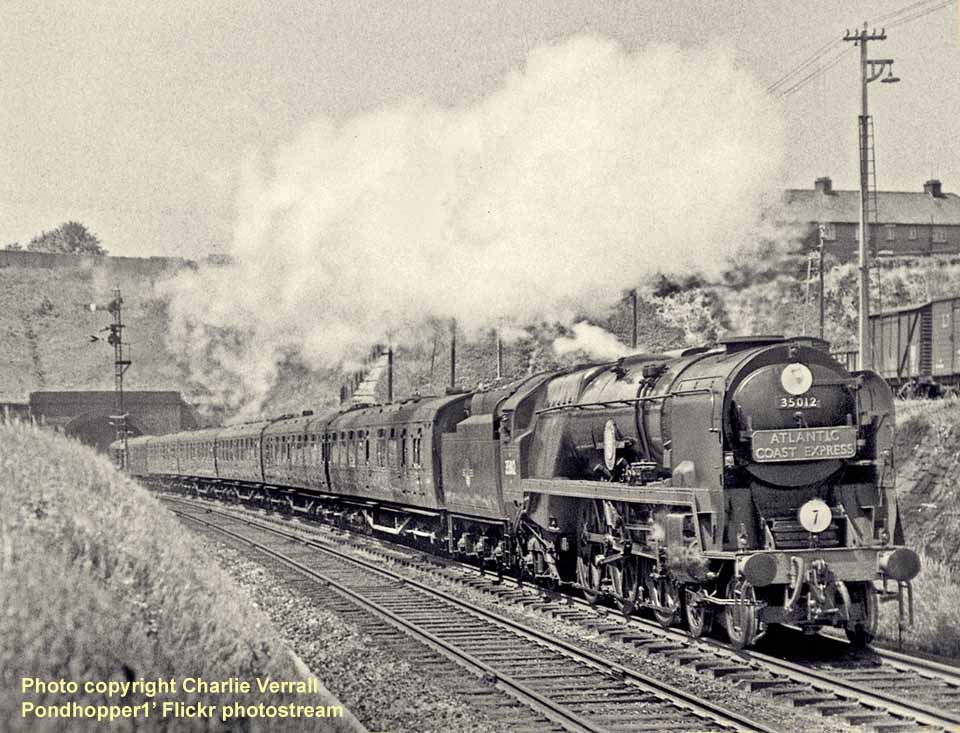
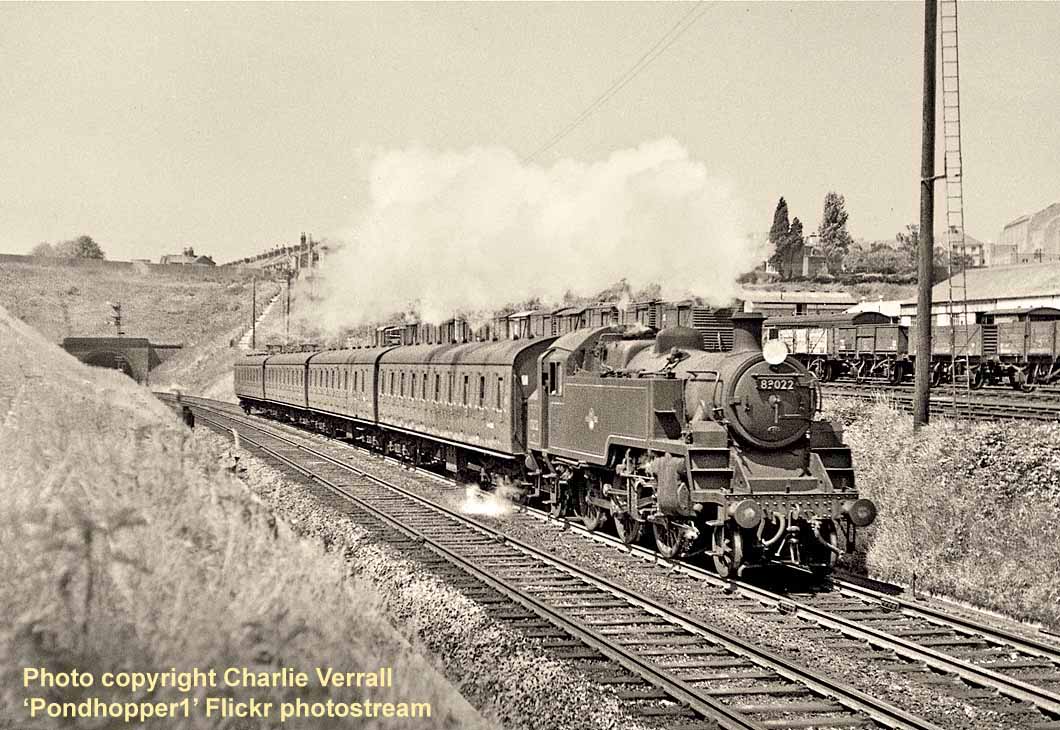
(Above-Below) Not far behind the 'ACE' was BR Standard Class 3 2-6-2 tank No 82022 heading the 12.15pm Exeter Central to Exmouth. Built at Swindon in October 1954, No 82033 was withdrawn during October 1965. (Below) Later I went to the Exeter Western Region shed (83C) and photographed 6959 Modified Hall Class 4-6-0 6965 Thirlestone Hall. Built at Swindon in July 1944, 6965 was withdrawn in November 1962.
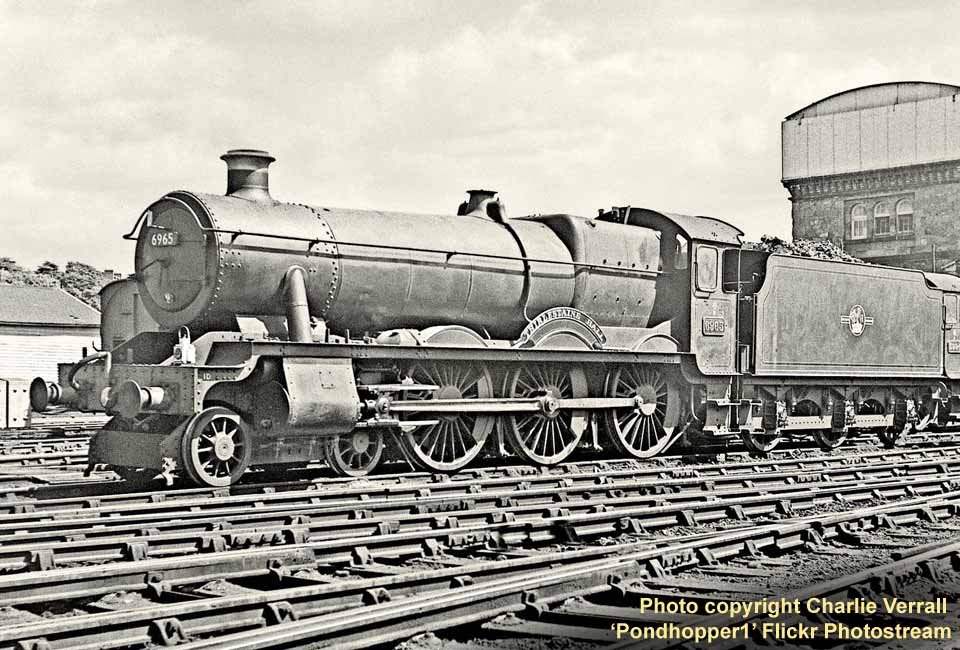
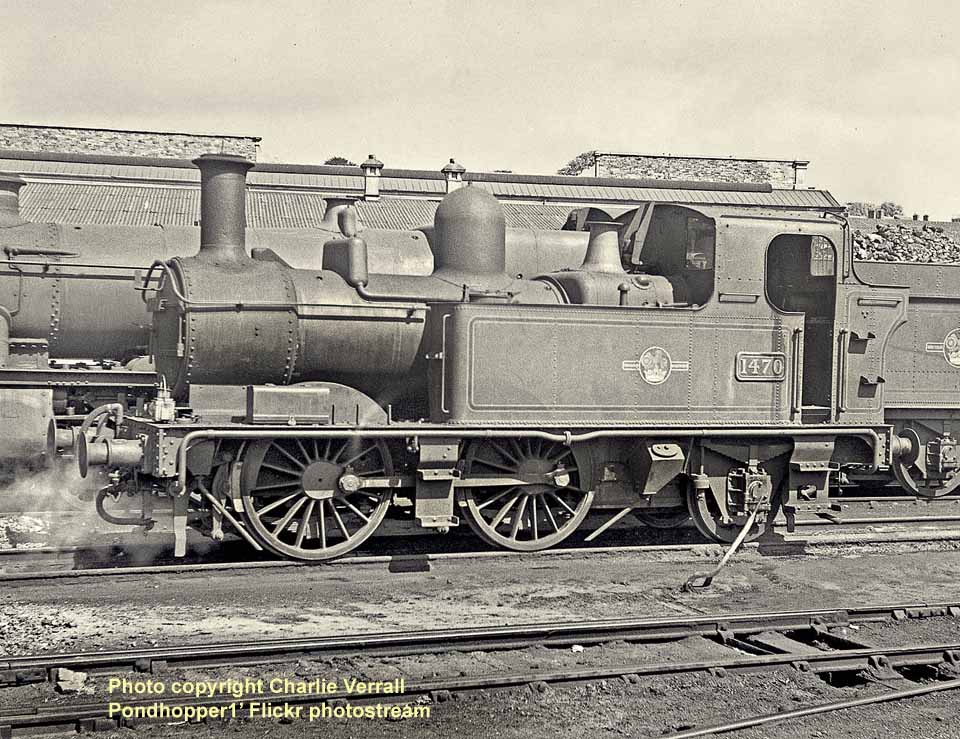
(Above) Constructed at Swindon in April 1936, 1400 Class 0-4-2 tank 1470 was originally numbered 4870 until 1948; withdrawal came in October 1962. (Below) 9400 Class 0-6-0 pannier tank No 9487 was built by Robert Stephenson and Hawthorns in November 1952 and withdrawn in July 1962.
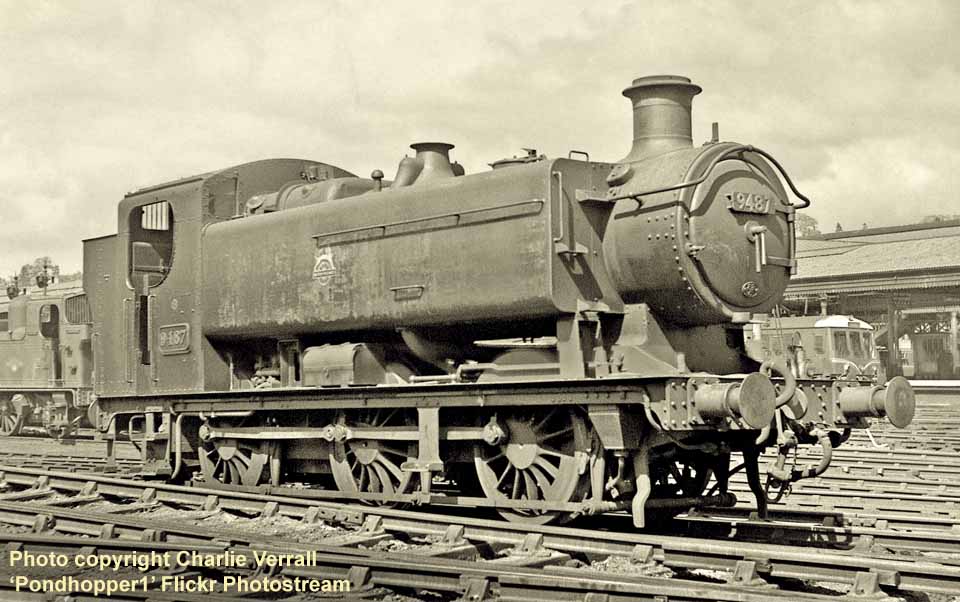
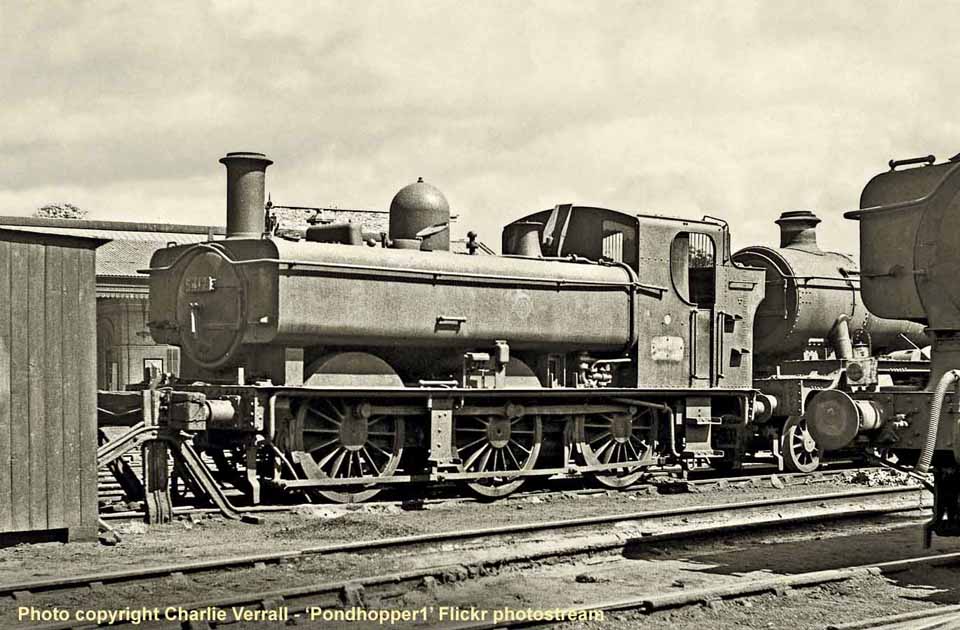
(Above-Below) This withdrawn 5400 Class 0-6-0 pannier tank No 5412 is shorn of its brass cabside number plates but the smokebox plate remains intact. No 5412 was built at Swindon during May 1932 and withdrawn in April 1962. (Below) The following day, June 6th 1962, I went to Okehampton for a tour of the quarries at Meldon, including being present when blasting took place. At Okehampton Station I photographed N Class No 31857 on a Padstow train; this was another Ashford/Woolwich Arsenal loco which entered service as A857 in April 1925, withdrawn in January 1964.

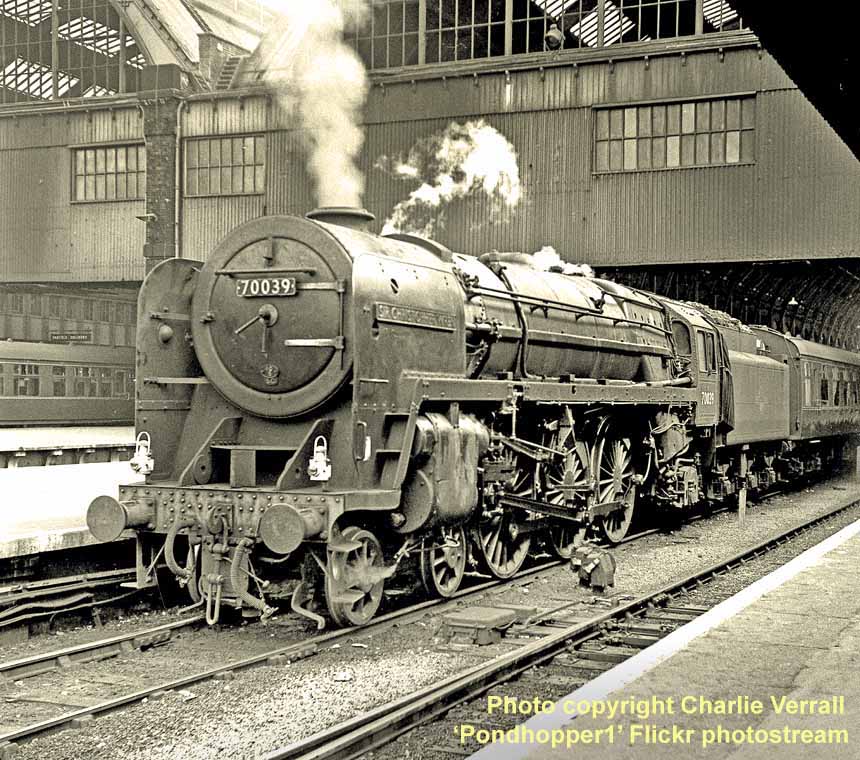
(Above-Below) After returning from my visit to Devon, on June 15th 1962 I headed for Wood Green on the East Coast Main Line. Before catching my train at Kings Cross, I photographed Britannia Class 7MT No 70039 Sir Christopher Wren awaiting departure with a train for Cleethorpes. (Below) At Wood Green it was mainly express trains for most of the session, starting off with this shot of EE Co 'Deltic' D9019 working the up 'Yorkshire Pullman'. Constructed at the English Electric Newton-in-Willows Works in December 1961, D9019 was named Royal Highland Fusilier in September 1965. The TOPS number 55019 was applied in November 1973 and the loco was withdrawn in December 1981.
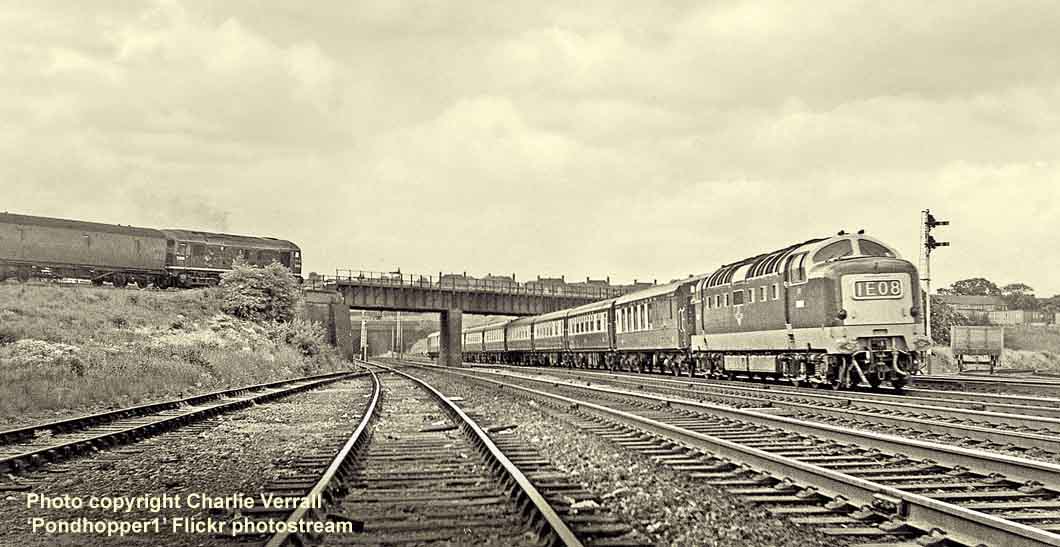

(Above-Below) A1 Class 4-6-2 60132 Marmion followed with the 9.41am Newcastle to Kings Cross; built at Darlington in October 1948, 60132 was withdrawn in June 1965 and broken up the following month. (Below) A4 Class 4-6-2 60008 Dwight D Eisenhower was seen on an up troop special; originally ex-Doncaster in September 1937 as 4496 Golden Shuttle, the locomotive ran without a name from July 1945 until renamed in September 1945. The first 1946 number 603 was not used, however the second 1946 number 8 was applied in November 1946. Following withdrawal in July 1963, 60008 was purchased for preservation in a museum at Green Bay, Wisconsin, USA.

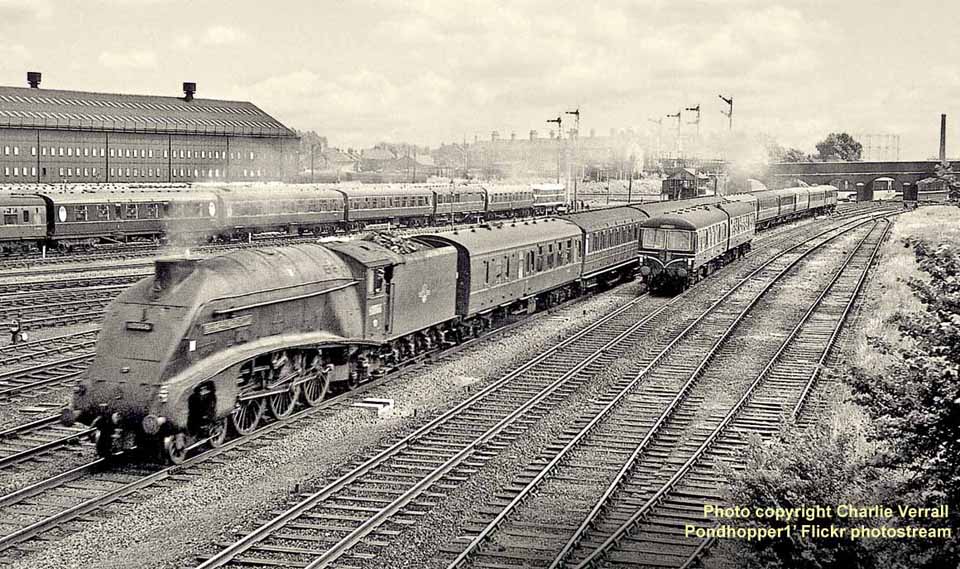
(Above-Below) Working a down relief train to Leeds is Class A4 No 60006 Sir Ralph Wedgwood; built at Doncaster in January 1938 as 4466 Herring Gull, renaming took place in January 1944. The first 1946 number 605 was applied in January 1946 followed by the second number 6 in May 1946. Withdrawal took place during September 1965. (Below) English Electric Deltic Co-Co No D9007 Pinza was on the 1.30pm Kings Cross to Edinburgh. Introduced to traffic in June 1961, the locomotive was renumbered 55007 in June 1974; withdrawal came in December 1980.
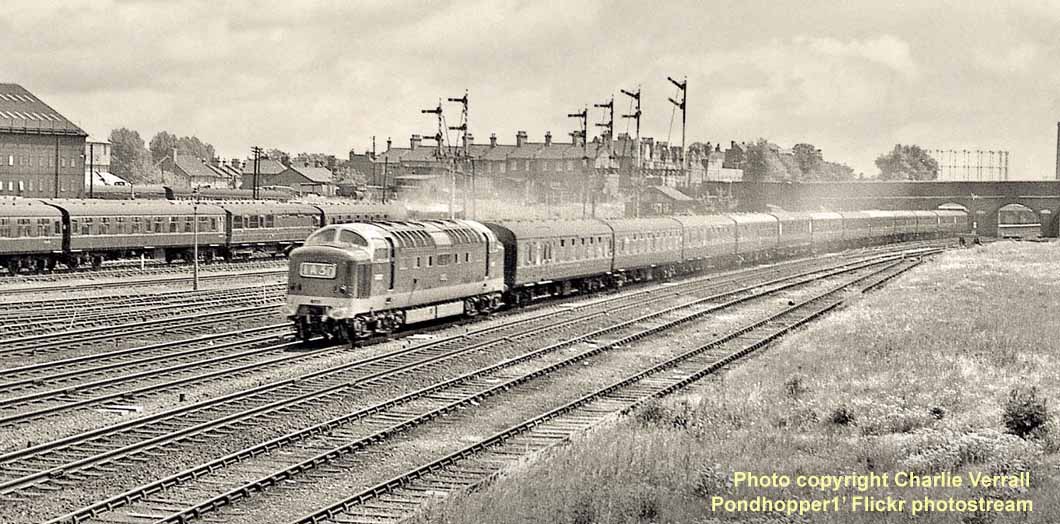
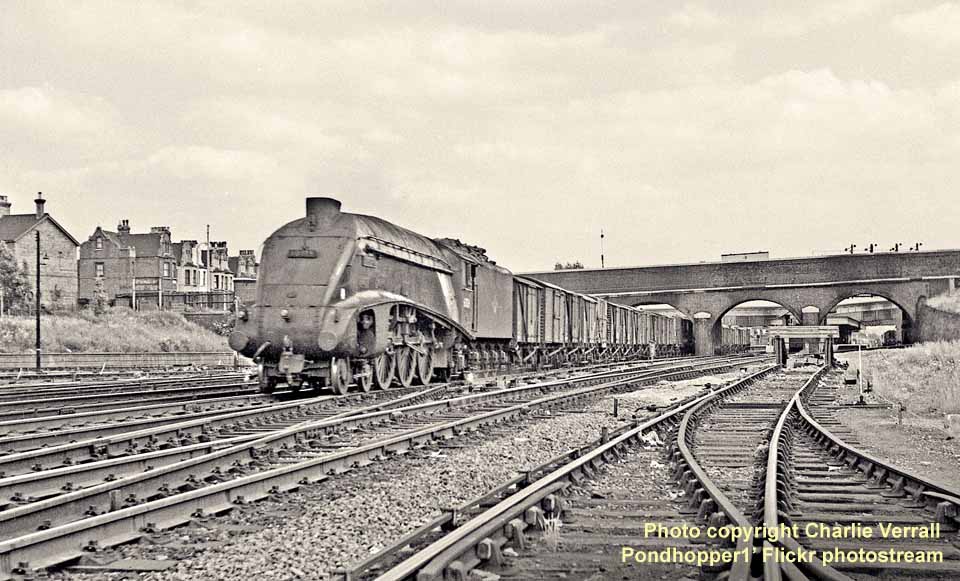
(Above-Below) Class A4 No 60019 Bittern heads the 1.05pm freight from Kings Cross to Edinburgh; built at Doncaster as LNER 4464 in December 1937, the first 1946 number 603 was not used however in August 1946 4464 was renumbered 19. Withdrawal took place in September 1966. (Below) Class A1 No 60122 Curlew heads the 1.18pm Kings Cross to Leeds.

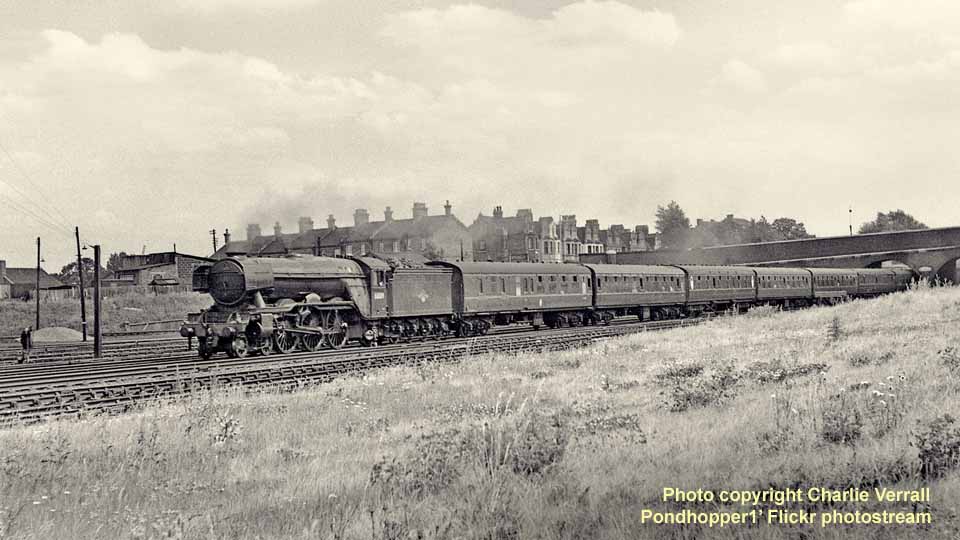
(Above-Below) A3 Class 4-6-2 60109 Hermit heads the 1.45pm Kings Cross to Peterborough, a regular A3 duty at the time; built at Doncaster as an early Class A1 Class locomotive, Hermit entered service in June 1923 as Great Northern Railway no 1478, later renumbered 1478N the following September. Rebuilt to A3 standard in November 1943, the first 1946 number 508 was applied in January 1946, followed in June 1946 by the final 1946 number 109. Withdrawal took place December 1962. (Below) English Electric Type 4 1Co-Co1 diesel electric D347 was photographed in charge of the 3pm Kings Cross to Leeds; built in May 1961, D347 was renumbered 40147 in February 1974 under TOPS and withdrawn in September 1980.
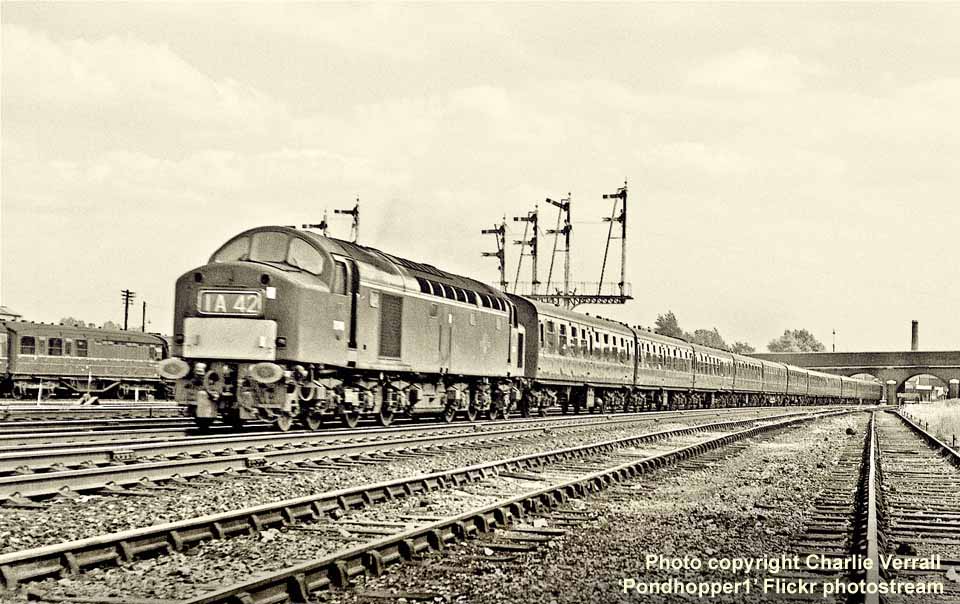
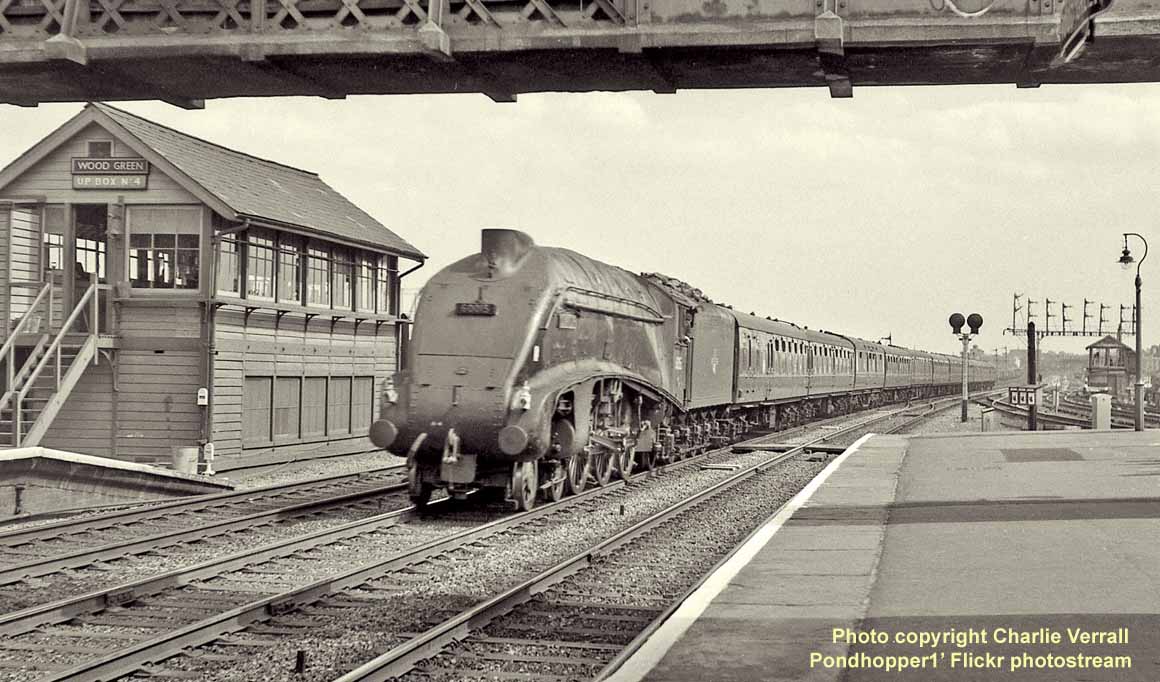
(Above-Below) The final shot at Wood Green captures Class A4 No 60015 Quicksilver heading the 3.20pm Kings Cross to Leeds; built at Doncaster in September 1935 the locomotive entered service numbered 2510. Withdrawal took place during April 1963. (Below) On June 23rd I went to Farnborough, a place I had not visited before. This is where the Waterloo to Basingstoke lines crosses the Reading to Guildford lines. Taking advantage of this I photographed two of the Inter-Regional services, firstly Schools Class 4-4-0 30915 Brighton on the 10.42am Wolverhampton to Margate; built at Eastleigh in May 1933 and fitted with a Lemaitre blastpipe in October 1940, 30915 was withdrawn as part of the cull of Southern locos in December 1962. It then rusticated in Hove goods yard before being towed to Eastleigh for scrap in November 1963. The L&SWR's Waterloo-West of England main line can be seen crossing the bridge in the distance.
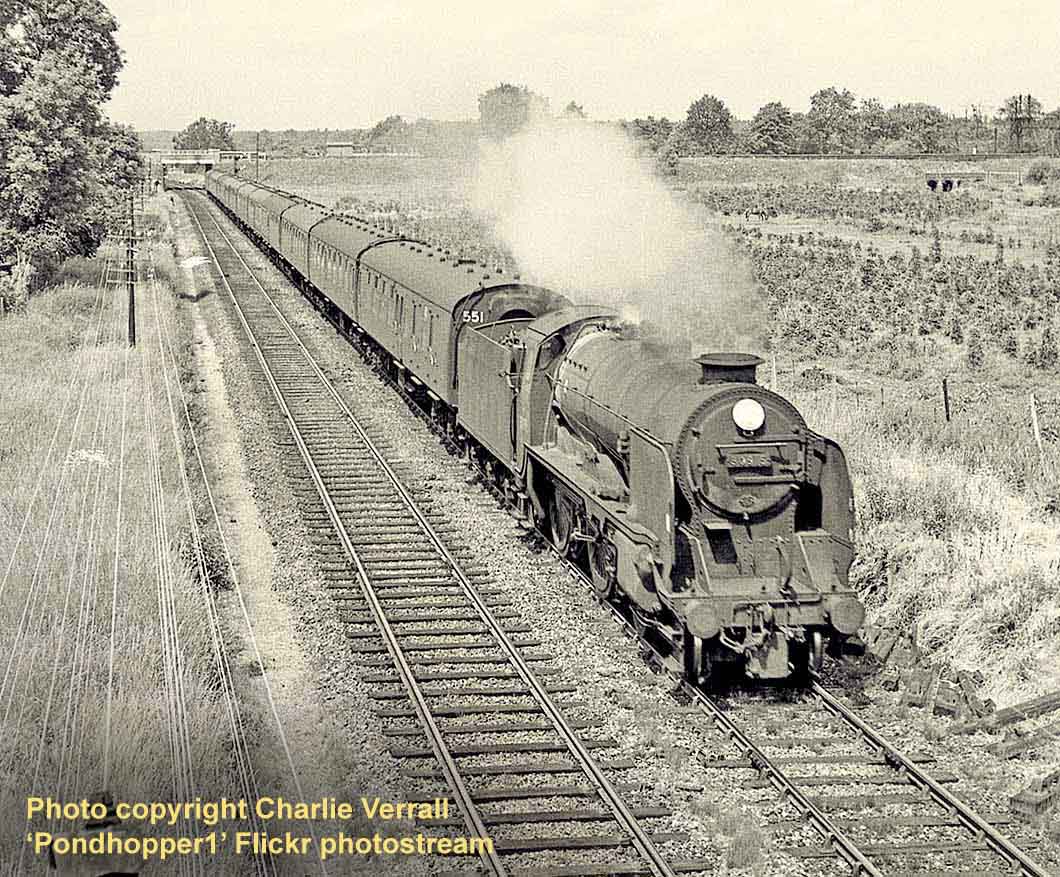

(Above-Below) The other Inter-Regional working I photographed that day was the 10.35am Birkenhead to Hastings headed by the now-preserved Manor class 4-6-0 No 7808 Cookham Manor; built at Swindon in March 1938, No 7808 was withdrawn in December 1965 and subsequently became one of eight Manors rescued from the scrap yard; the engine is now at Didcot. (Below) Returning to the mainline to the West of England, Rebuilt Merchant Navy 4-6-2 35012 United States Lines heads the down 'Bournemouth Belle'; built at Eastleigh in January 1945 as Southern Railway 21C12, rebuilding took place at Eastleigh in February 1957. 35012 was withdrawn during April 1967.
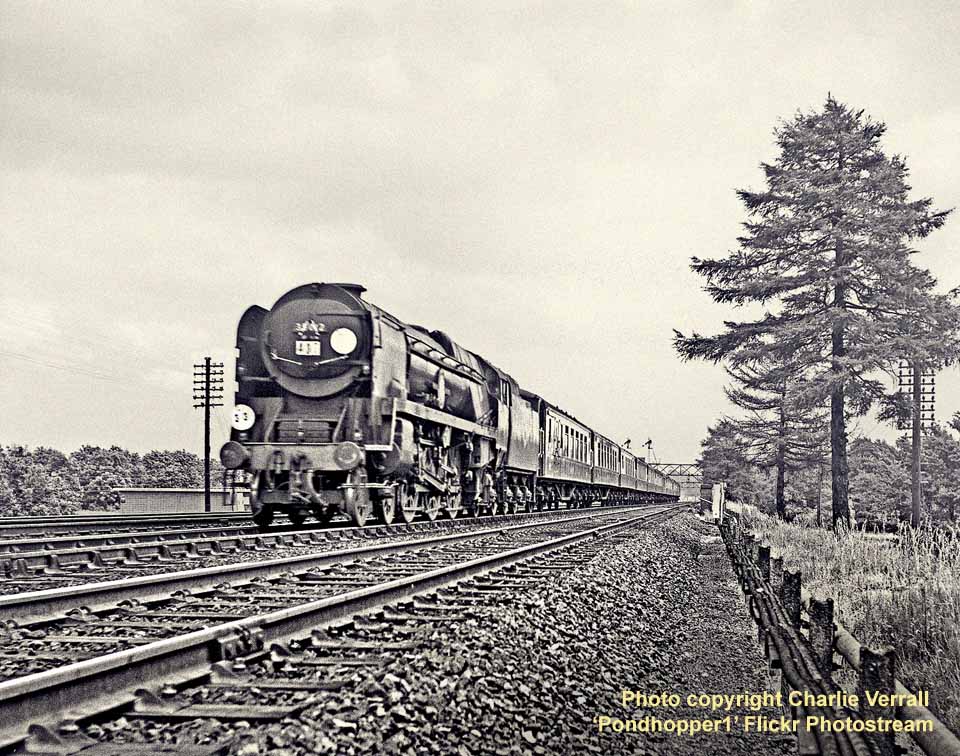
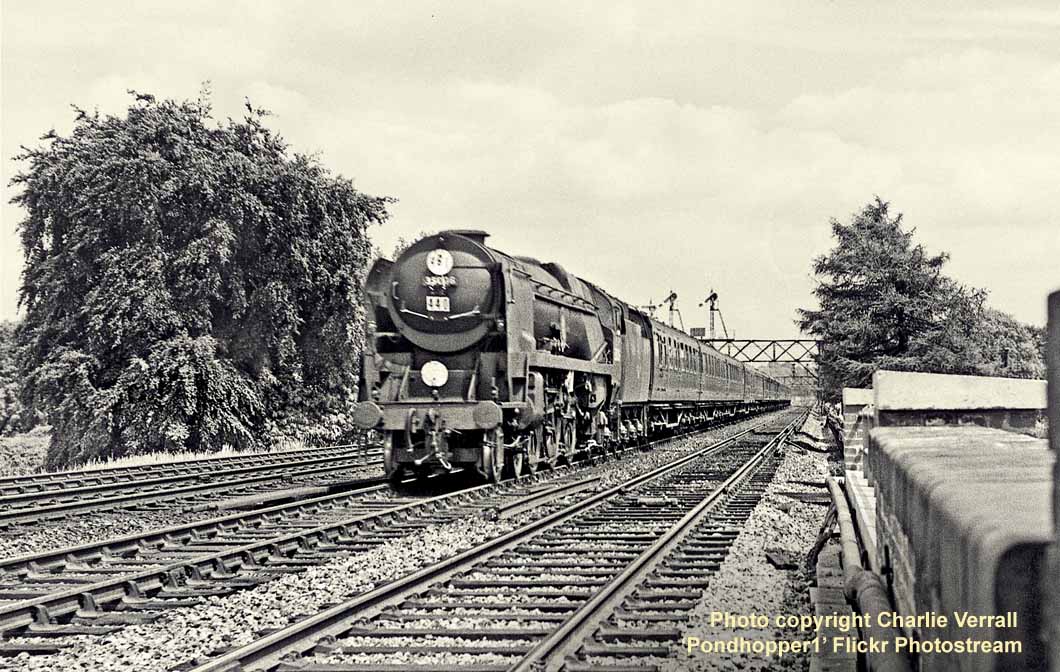
(Above-Below) Rebuilt Merchant Navy No 35006 Peninsular & Oriental SN Co heads the 1pm Waterloo to the West of England; ex-Eastleigh as Southern Railway 21C6 in December 1941, 35006 was rebuilt in October 1959 and withdrawn in August 1964. The locomotive was saved from the scrapyard and is now stored on The Gloucestershire and Warwickshire Railway. (Below) Working a down empty stock train was King Arthur Class 4-6-0 No 30765 Sir Gareth; built by the North British Locomotive Company in May 1925, 30765 was withdrawn in September 1962.
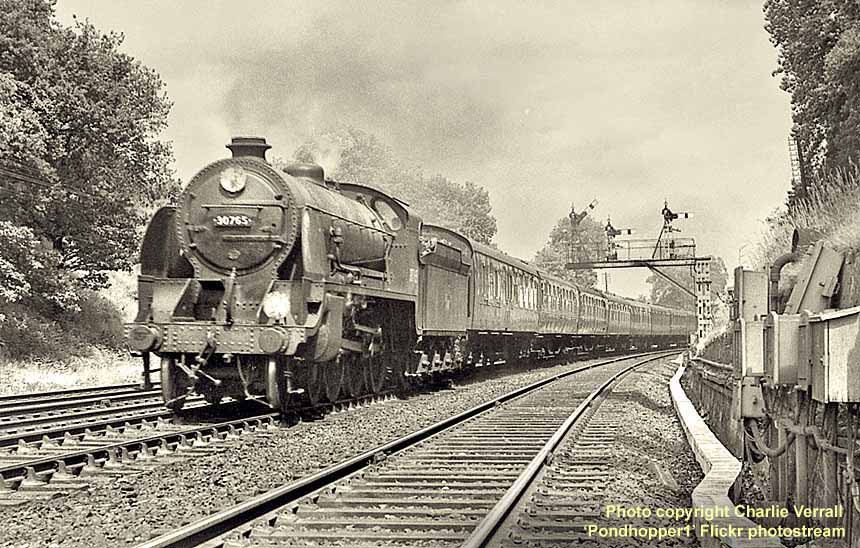
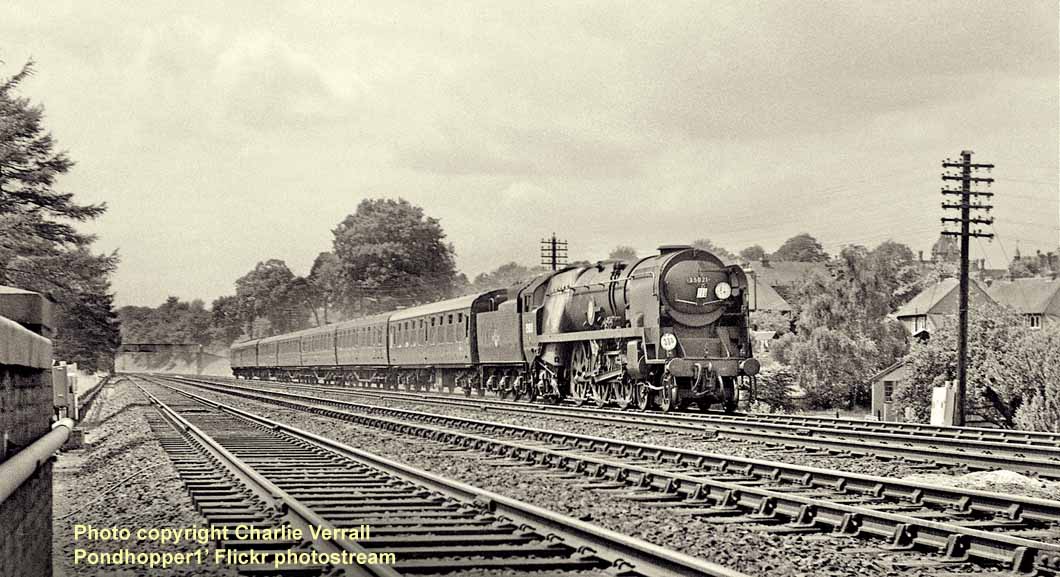
(Above-Below) Merchant Navy No 35021 New Zealand Line heads the 11am Bournemouth to Waterloo; ex-Eastleigh in September 1948, 35021 was rebuilt in June 1959 and withdrawn during August 1965. (Below) Battle of Britain class 4-6-2 No 34110 66 Squadron is in charge of the 10.30am Seaton to Waterloo; built at Brighton Works in January 1951, this was the last of the Bullied Light Pacifics; the locomotive was withdrawn in March 1964.
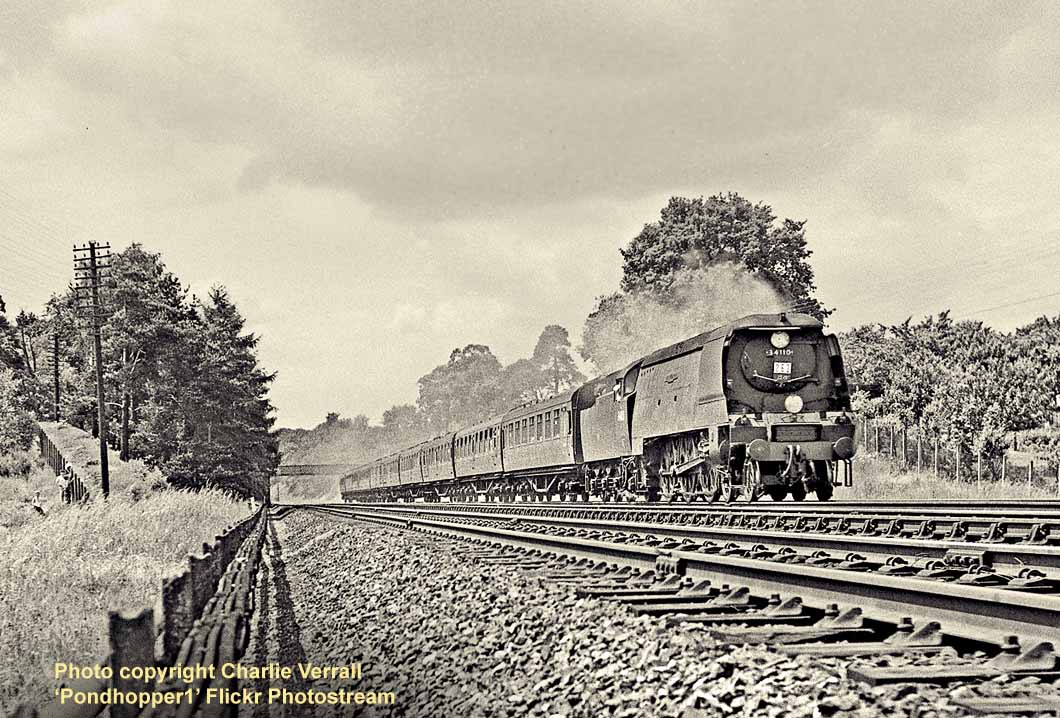
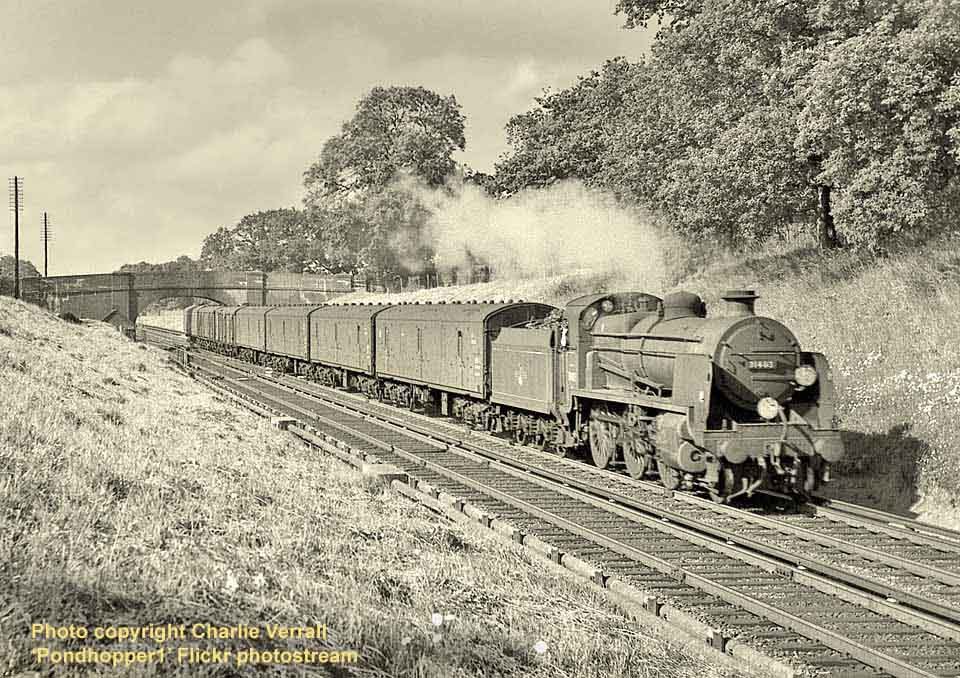
(Above-Below) The next morning, June 24th 1962, I was at Wivelsfield to photograph N Class 2-6-0 No 31403 with the 8.35am parcels train from Brighton to London Bridge; 31403 was built at Ashford during August 1932. Withdrawal took place in June 1963. (Below) Later that morning I was at Three Bridges to see H Class 0-4-4 tank No 31522 simmering in the Tunbridge Wells bay platform; built at Ashford in August 1909, 31522 was withdrawn during January 1963.
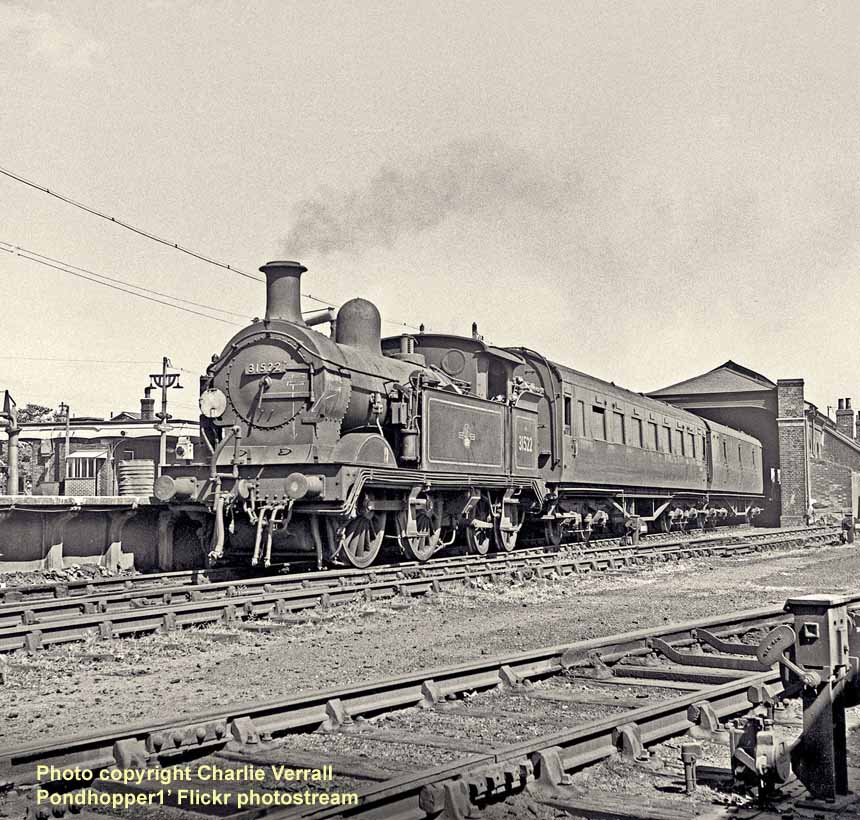
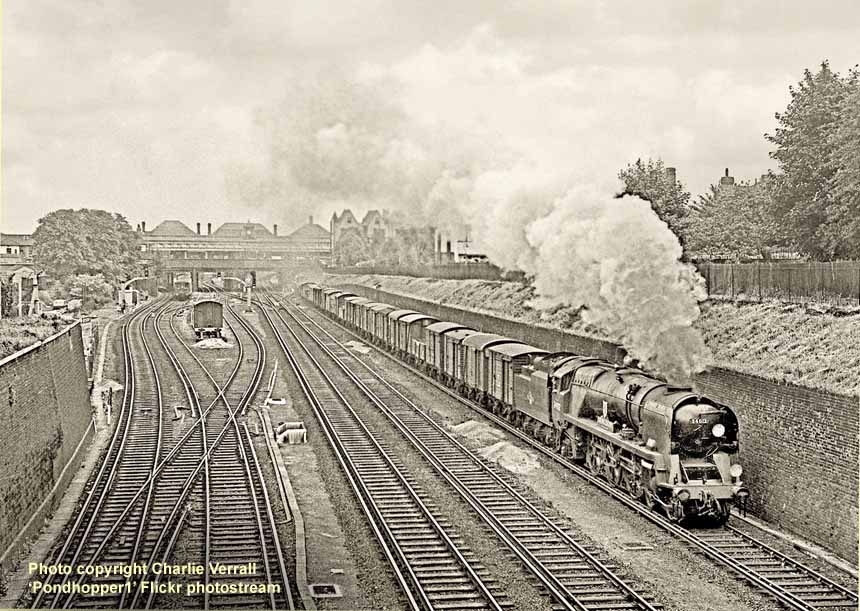
(Above-Below) As mentioned earlier I worked at the Central Section Divisional Manager's Office at Essex House situated almost next door to the Motive Power Department, and on occasions they would tell us of any special loco movements that they had arranged; they also provided us with a copy of the weekly reallocation and withdrawals lists as they were published. One movement they told us about was the replacement of the rostered locomotive on the 1.5pm goods from Norwood to Brighton by Rebuilt West Country 34012 Launceston on its transfer from Bricklayers Arms to Brighton; No 34012 was built at Brighton and entered service in October 1945 as 21C112. Rebuilding at Eastleigh took place in January 1958; withdrawal came in December 1966. (Below) June 30th 1962 saw me back at Basingstoke again. On shed that day was Hall Class 4-6-0 5973 Rolleston Hall. Built at Swindon in May 1937, No 5973 was withdrawn in September 1962.
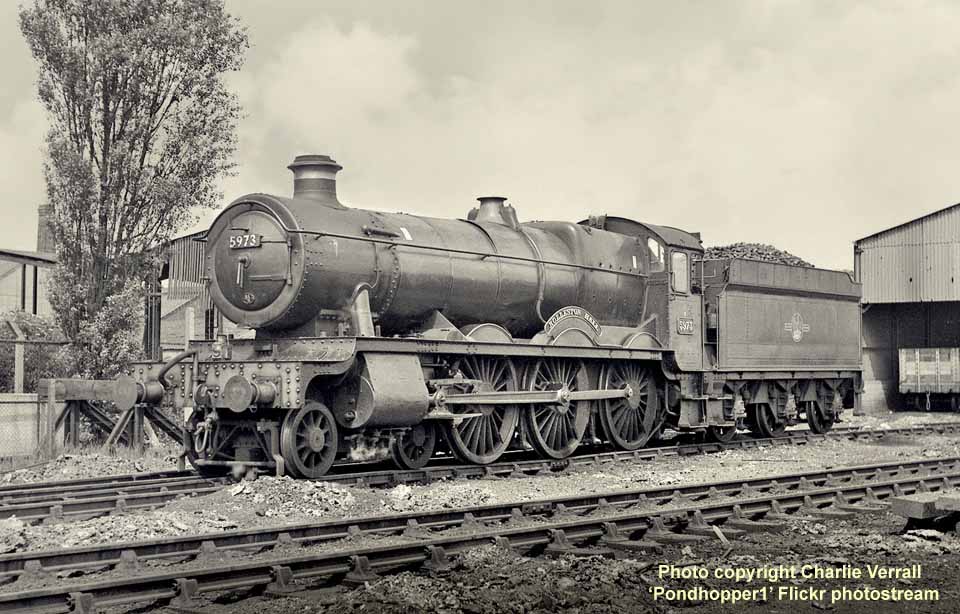
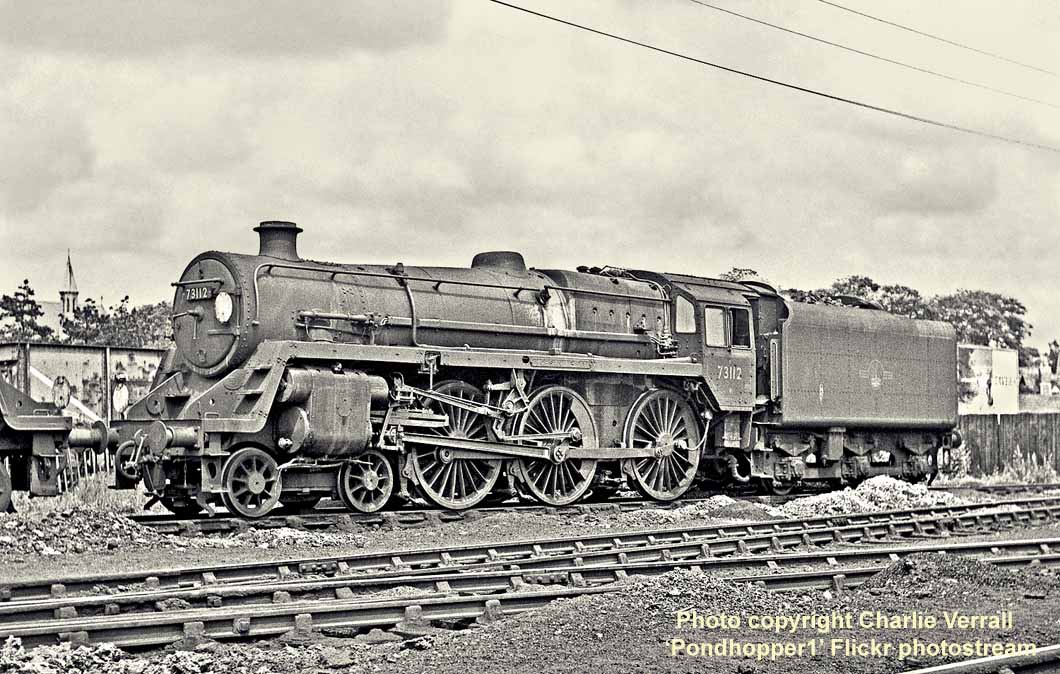
(Above-Below) Also on shed was BR Standard 5 4-6-0 73112 Morgan Le Fay. Built at Doncaster in October 1956, No 73112 was withdrawn in June 1965. (Below) Urie S15 Class 4-6-0 30515 was built at Eastleigh in April 1921 and withdrawn in July 1967.


(Above-Below) Schools Class 4-4-0 30934 St Lawrence was built at Eastleigh in March 1934 and fitted with a Lemaitre blastpipe in March 1940. Withdrawn in December 1962, 30934 was the last, other than those in preservation, to be steamed when it hauled withdrawn 700 Class 0-6-0 30368 from Basingstoke to Eastleigh for scrapping on May 18th 1963. (Below) This is the 700 Class in question, though oddly No 30368 looks to be snowplough-fitted in this broadside shot; built by Dubs and Co as LSWR No 715 in August 1892, the engine was renumbered 368 between June and August 1898 to make way for D Drummond's new T9 Class 4-4-0. Superheated in November 1922, 30368 was withdrawn in December 1962 and remained at Basingstoke until hauled by 30934 to Eastleigh on May 18th 1963.

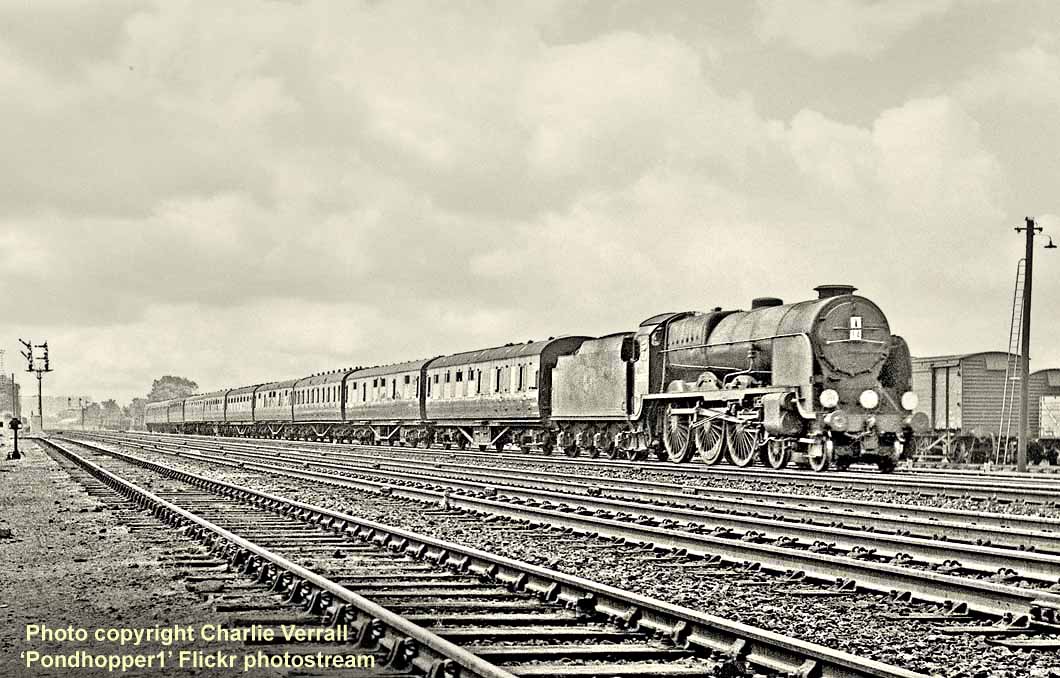
(Above-Below) Lord Nelson Class 4-6-0 30856 Lord St Vincent was photographed on the 1.11pm Portsmouth to Birmingham; built at Eastleigh in November 1928 the loco was withdrawn in September 1962. (Below) Departing Basingstoke with the 8.55am Sheffield to Bournemouth was Standard Class 4 2-6-0 76064; built at Doncaster in July 1956, the loco was withdrawn in July 1967.
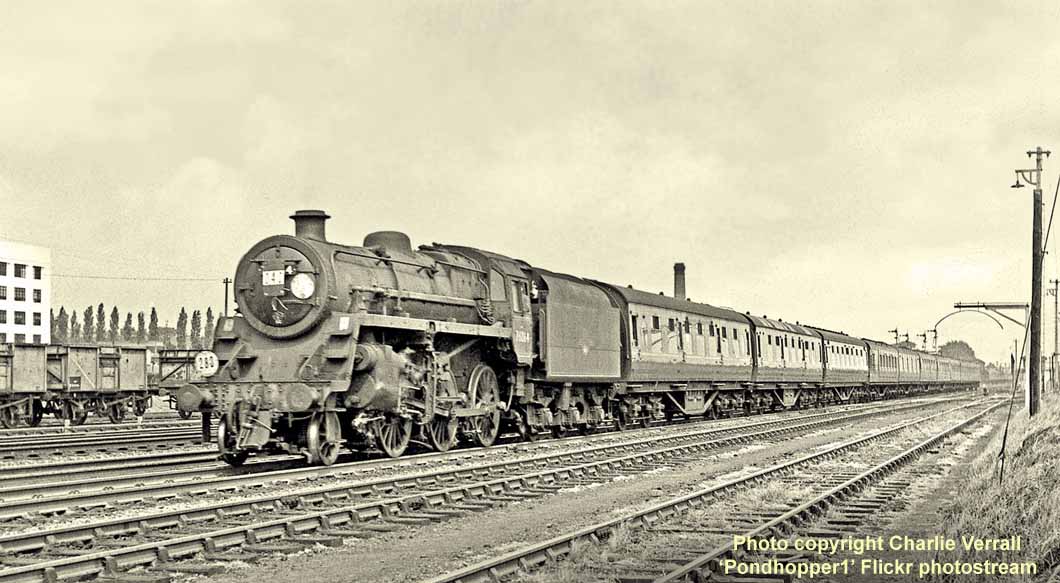
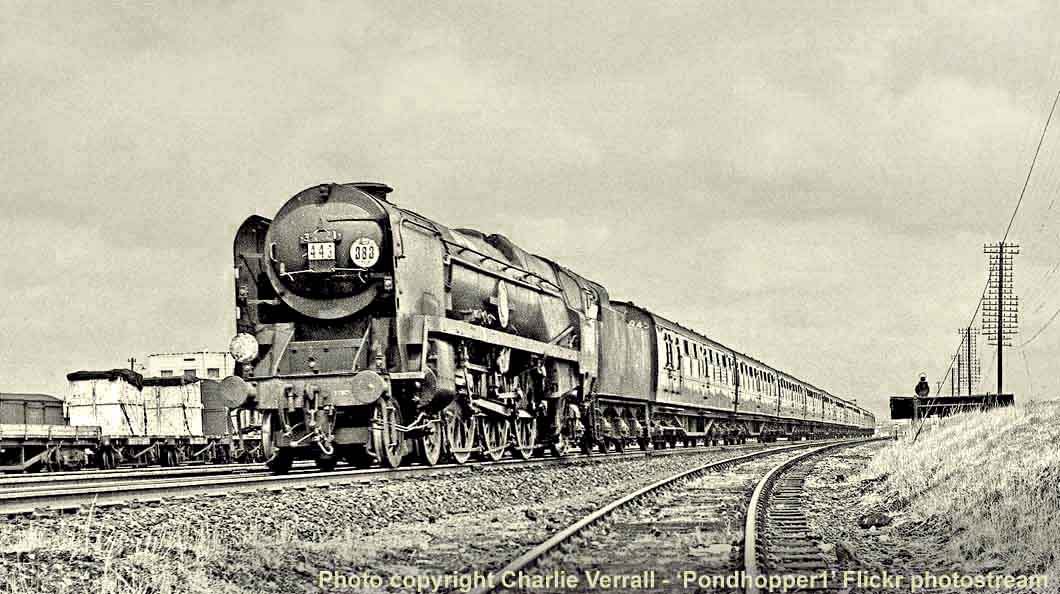
(Above-Below) Following behind the BR Standard Class 4 was Rebuilt Merchant Navy 4-6-2 35021 New Zealand Line with the 1.30pm Waterloo to Weymouth. Built at Eastleigh in August 1948, No 35021 was rebuilt in May 1958 and withdrawn in October 1965. (Below) Working the 1.28pm Lymington to Waterloo was Rebuilt Merchant Navy 4-6-2 35009 Shaw Saville; built at Eastleigh as Southern Railway No 21C8 in July 1942, the loco was rebuilt in March 1957 and withdrawn from Exmouth shed in September 1964. Subsequently rescued from Woodham Brothers Barry scrapyard, No 35009 is currently awaiting restoration at Bury.
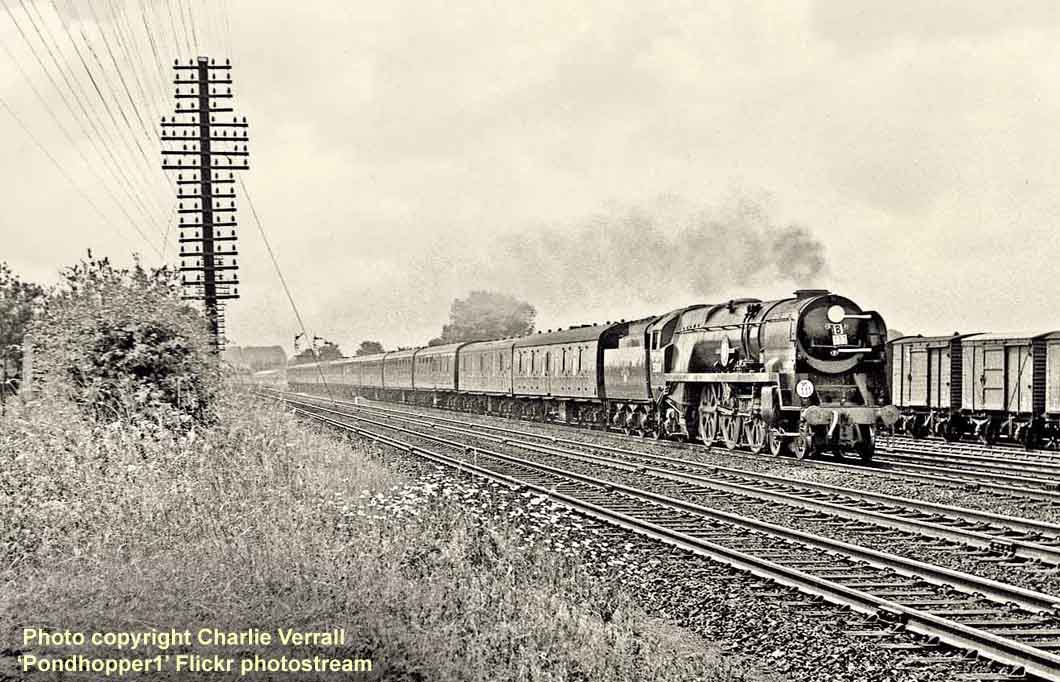
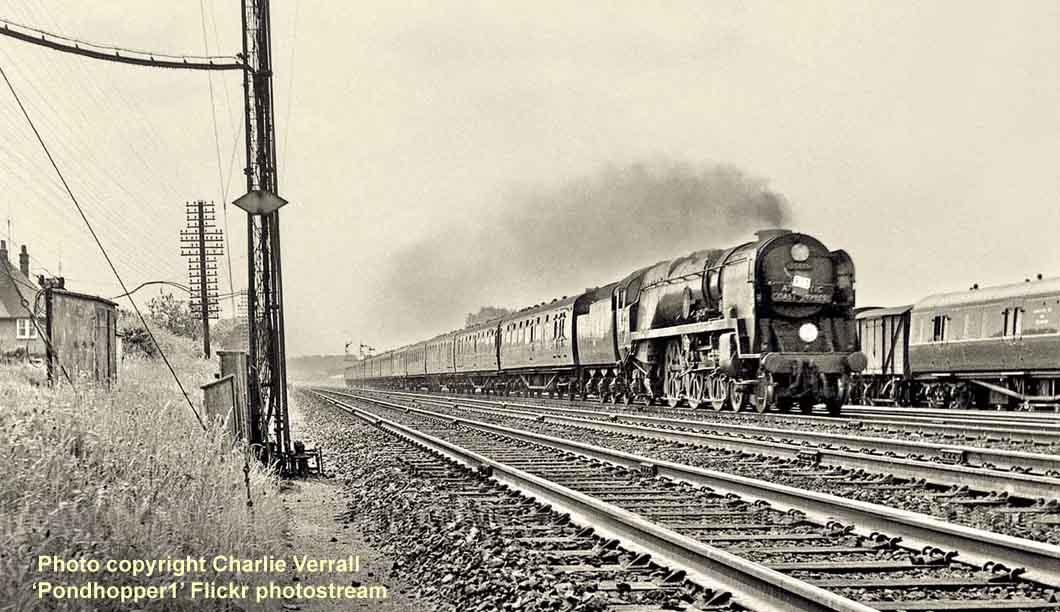
(Above-Below) The final shot at Basingstoke was another rebuilt Merchant Navy 35010 Blue Star working the up 'Atlantic Coast Express'. Built at Eastleigh as 21C10 in August 1942, 35010 was rebuilt in January 1957 and withdrawn from Bournemouth shed in September 1966; the engine was rescued from Woodham Brothers scrapyard at Barry, South Wales, and is now being restored on the Colne Valley Railway. (Below) The following day, July 1st 1962, whilst visiting Eastleigh I photographed Rebuilt Merchant Navy Class No 35020 Bibby Line working the down 'Bournemouth Belle'; ex-Eastleigh Works as 21C20 in June 1945, this locomotive was the second of the class to be rebuilt at Eastleigh in April 1956. 35020 was withdrawn in February 1965.

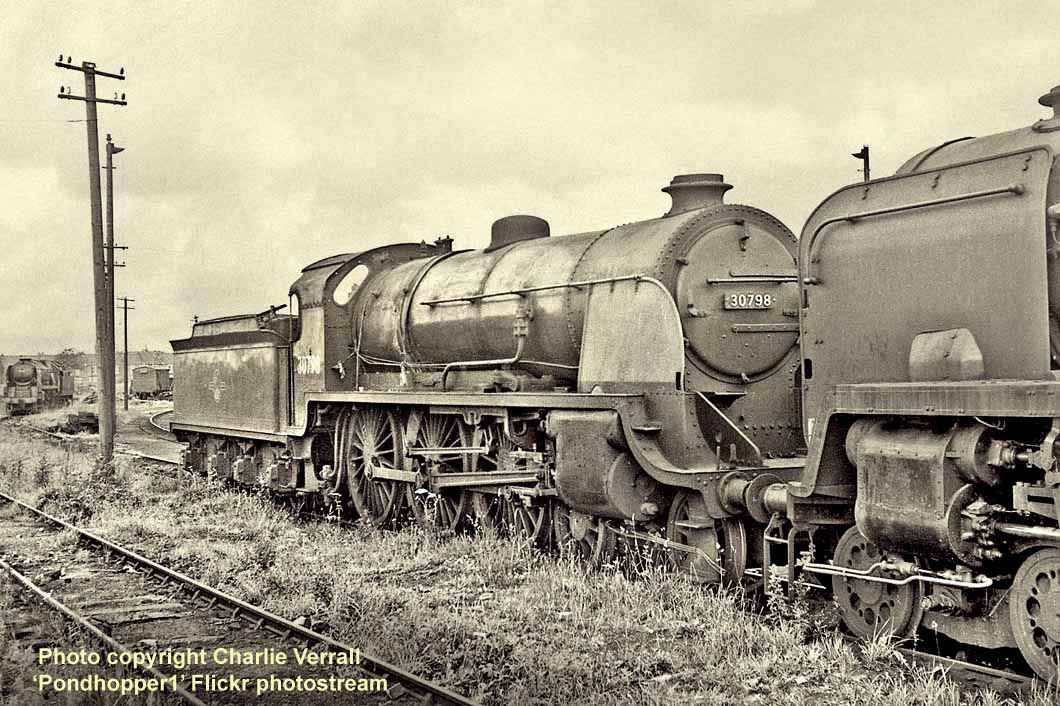
(Above-Below) Following its withdrawal in June 1962, King Arthur Class 4-6-0 30798 Sir Hectimere was photographed at Eastleigh shed awaiting disposal; built at Eastleigh in June 1926, the locomotive was broken up at the works the following month. (Below) Also on shed was M7 Class 0-4-4 tank 30053, freshly transferred from Three Bridges after working the Sussex Coast Limited Railtour on June 24th; built at Nine Elms in December 1905, 30053 was withdrawn in May 1964 and is now on the Swanage Railway.
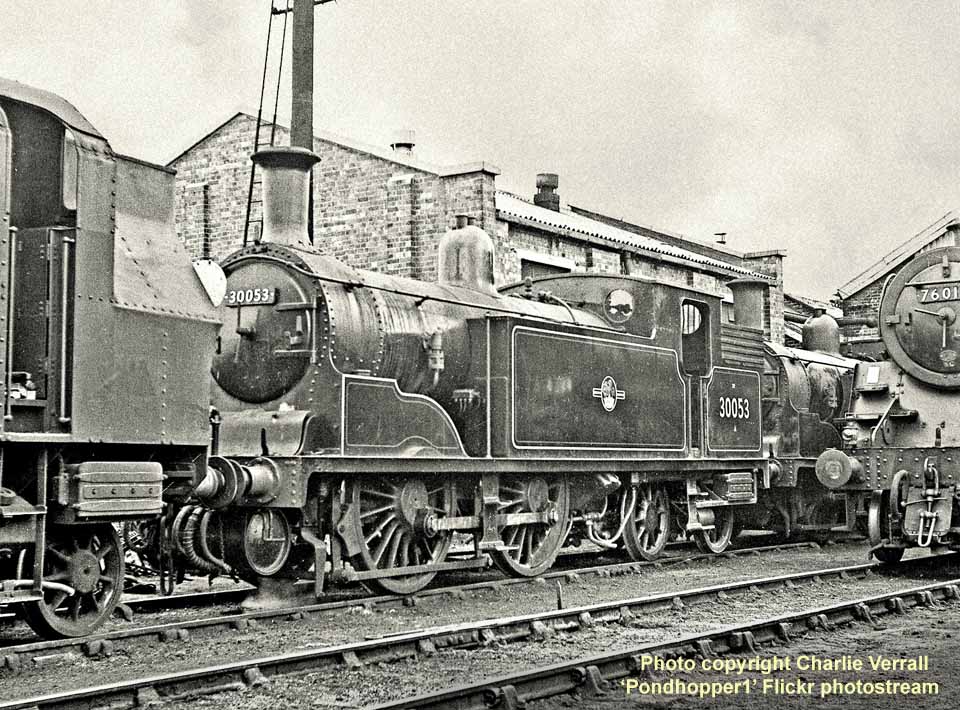
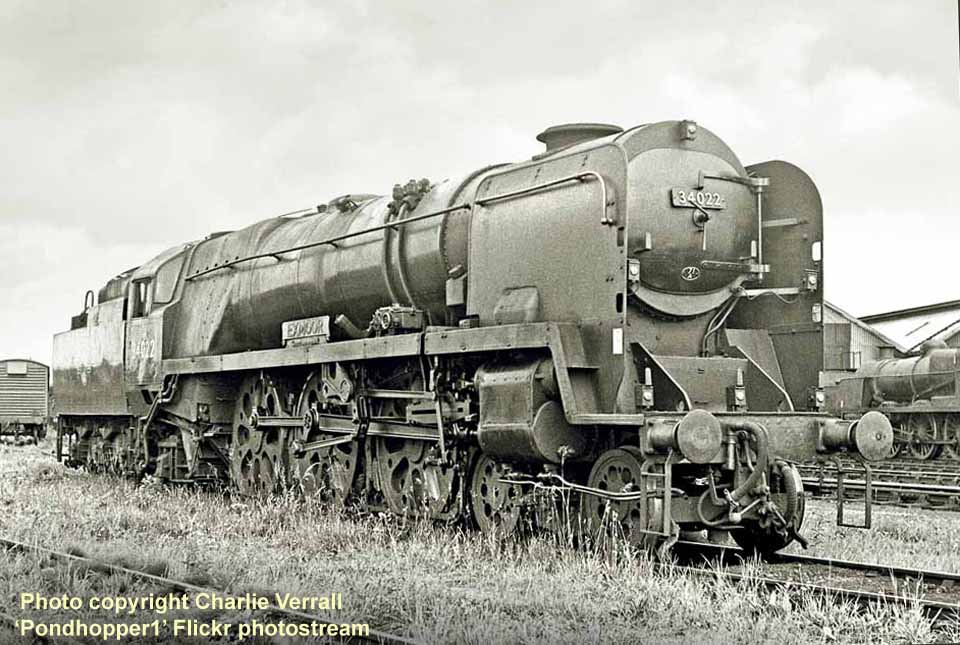
(Above-Below) One of the smartest looking locomotives at Eastleigh was Rebuilt West Country Class 4-6-2 34022 Exmoor; built at Brighton as 21C122 in January 1946, the locomotive was rebuilt in December 1957 and withdrawn in April 1965. (Below) The final shot at Eastleigh shows LMS Class 4 2-6-2 tank 41314; ex-Crewe Works in May 1952, the loco was withdrawn in July 1965.

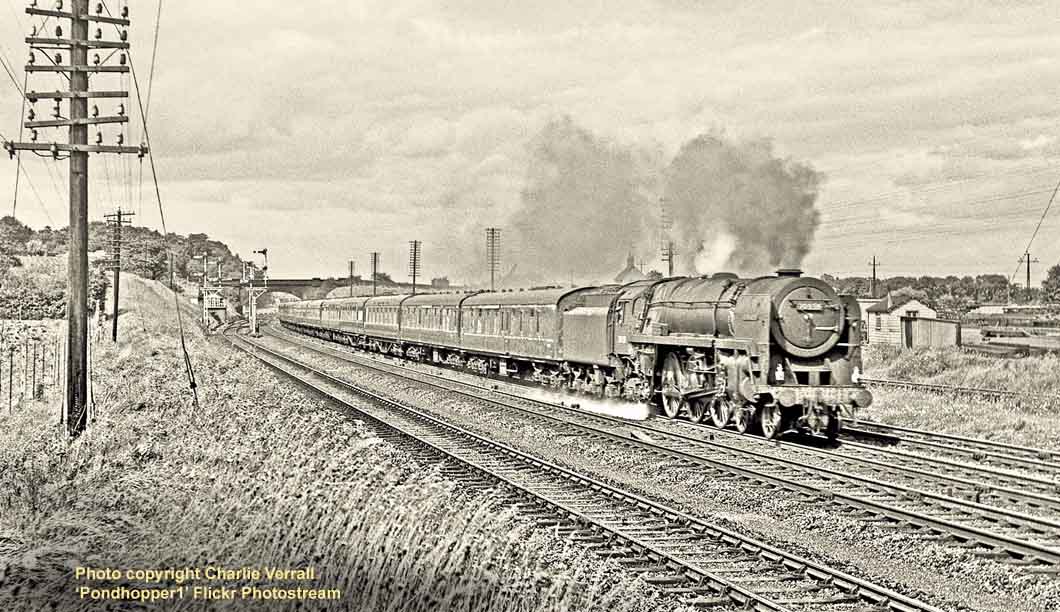
(Above-Below) July 7th 1962 found me back on the Great Northern main line, starting at Hornsey to photograph Britannia Class 4-6-2 70038 Robin Hood working the 7.43am Cleethorpes to Kings Cross. Built at Crewe in January 1953, No 70038 was withdrawn in August 1967. (Below) Also at Hornsea was V2 Class 2-6-2 No 60858 on the 10.50am Leeds to Kings Cross; built at Darlington in May 1939 and numbered 4829, the first 1946 number 758 was not taken up, however renumbering to 858 took place in December 1946. No 60858 was withdrawn in October 1963.
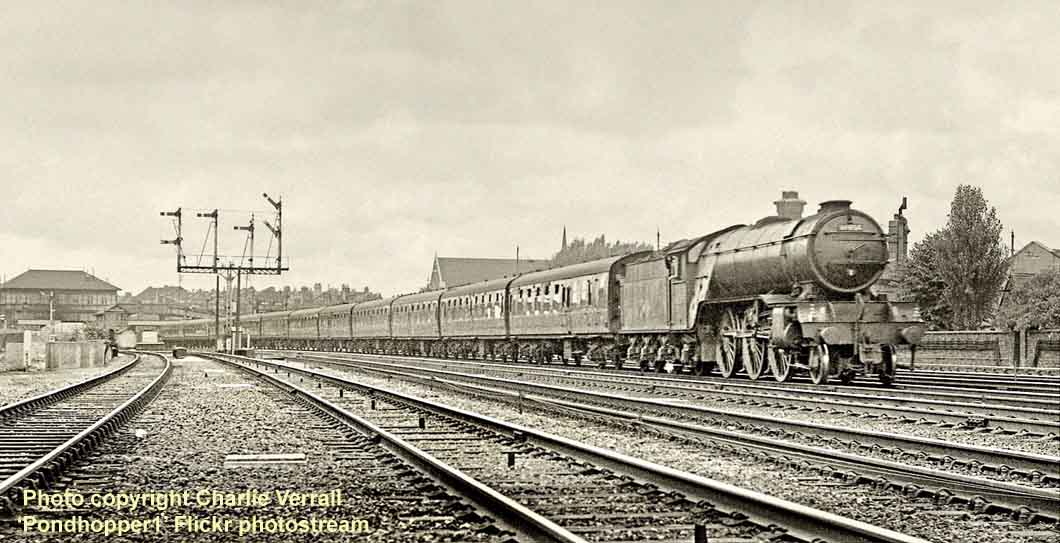
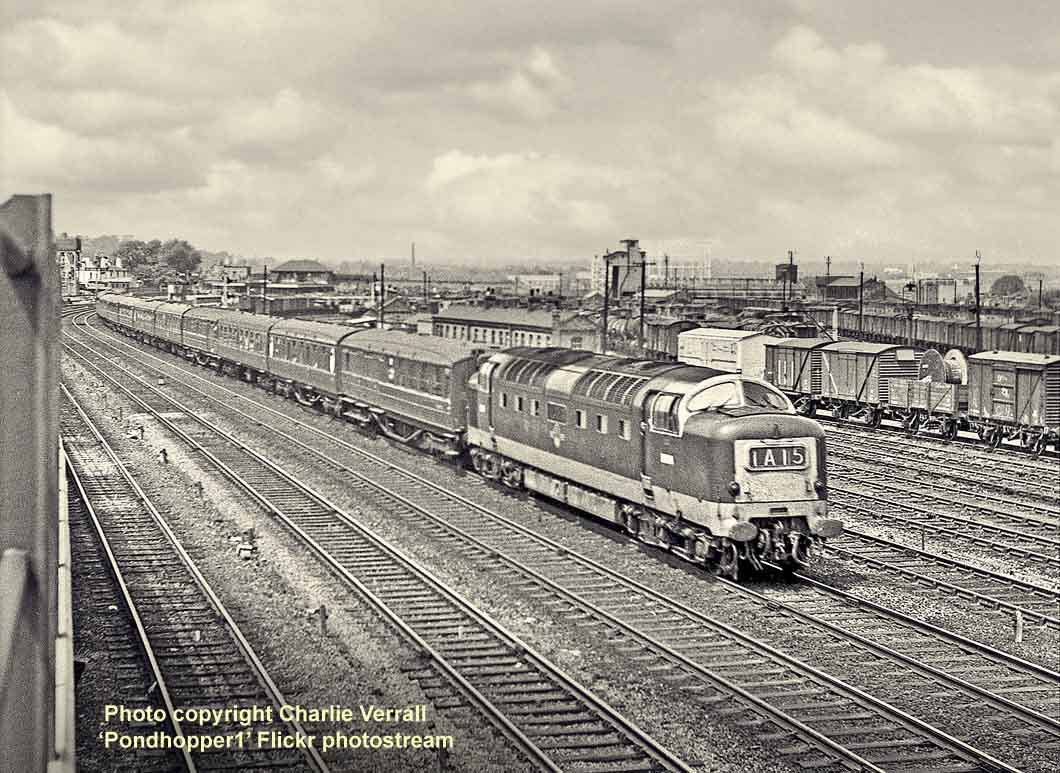
(Above-Below) The final photograph taken at Hornsea shows Deltic Class Co-Co D9014 heading the 8.52am Newcastle to Kings Cross; built by the EE Co works at Newton-Le-Willows in September 1961, D9014 was named The Duke of Wellington's Regiment in October 1963. Renumbered 55014 under TOPS in February 1974, the locomotive was withdrawn in February 1982. (Below) I then moved to the stretch of ECML between Ferme Park and Harringay West, first to photograph Class A3 4-6-2 No 60105 Victor Wild on the 10.05am Bradford-Kings Cross. Built at Doncaster Works in March 1923 as Great Northern Railway Class A1 No 1474, the locomotive was rebuilt to A3 standards in October 1942; the first 1946 number 504 was not applied, instead the renumbering to 105 took place in May 1946. No 60105 was withdrawn in June 1963.
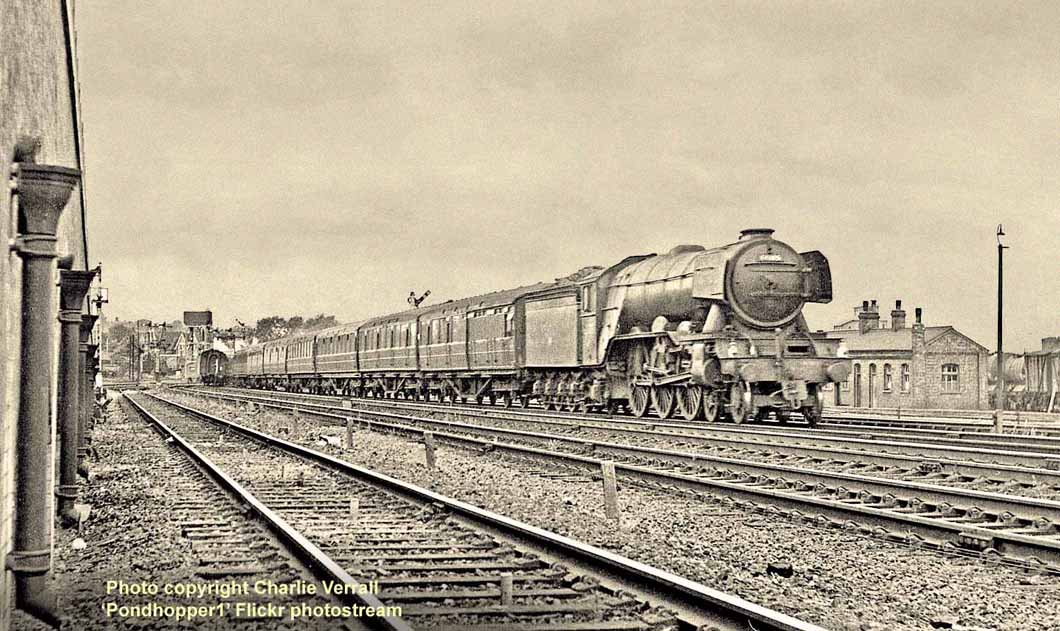
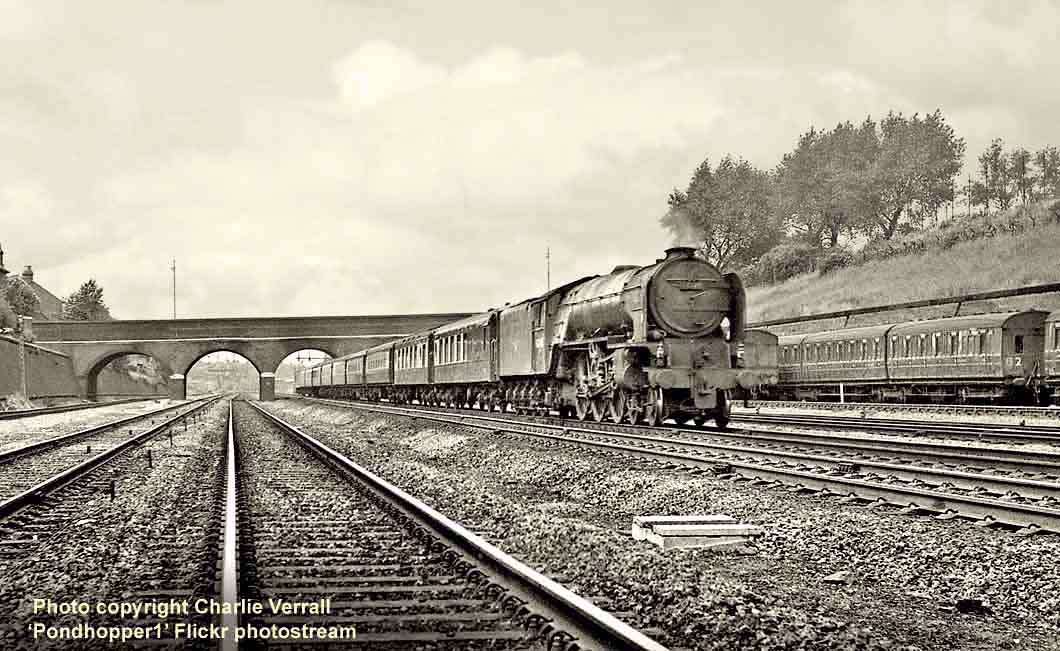
(Above-Below) Class A1 No 60148 Aboyeur worked the Up 'Yorkshire Pullman'; built at Doncaster in May 1949, 60148 was withdrawn in June 1965. (Below) Class A4 No 60003 Andrew K McCosh was captured at the head of the 10.25am Newcastle to Kings Cross; built at Doncaster Works in August 1938, numbered 4494 and named Osprey, the locomotive was renamed in August 1942; withdrawal came in December 1962.
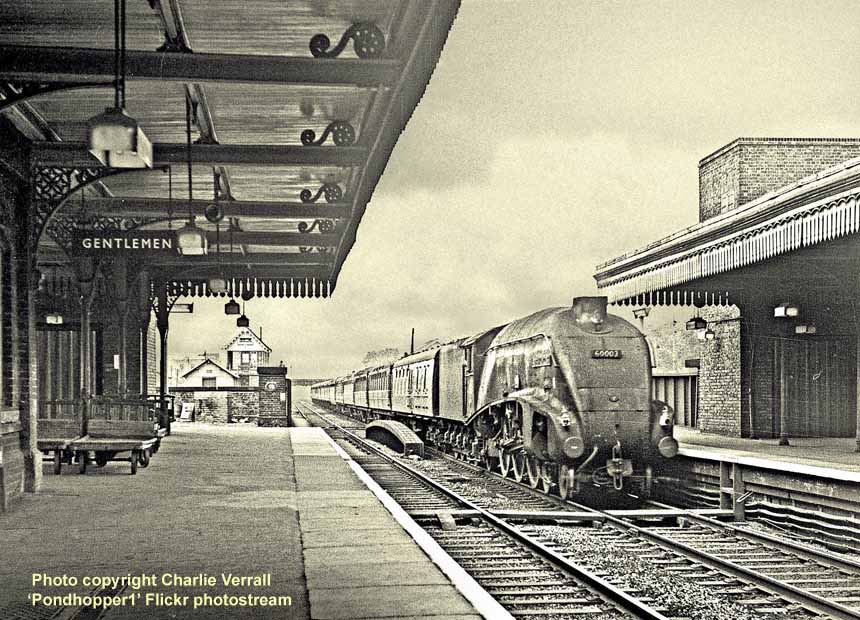
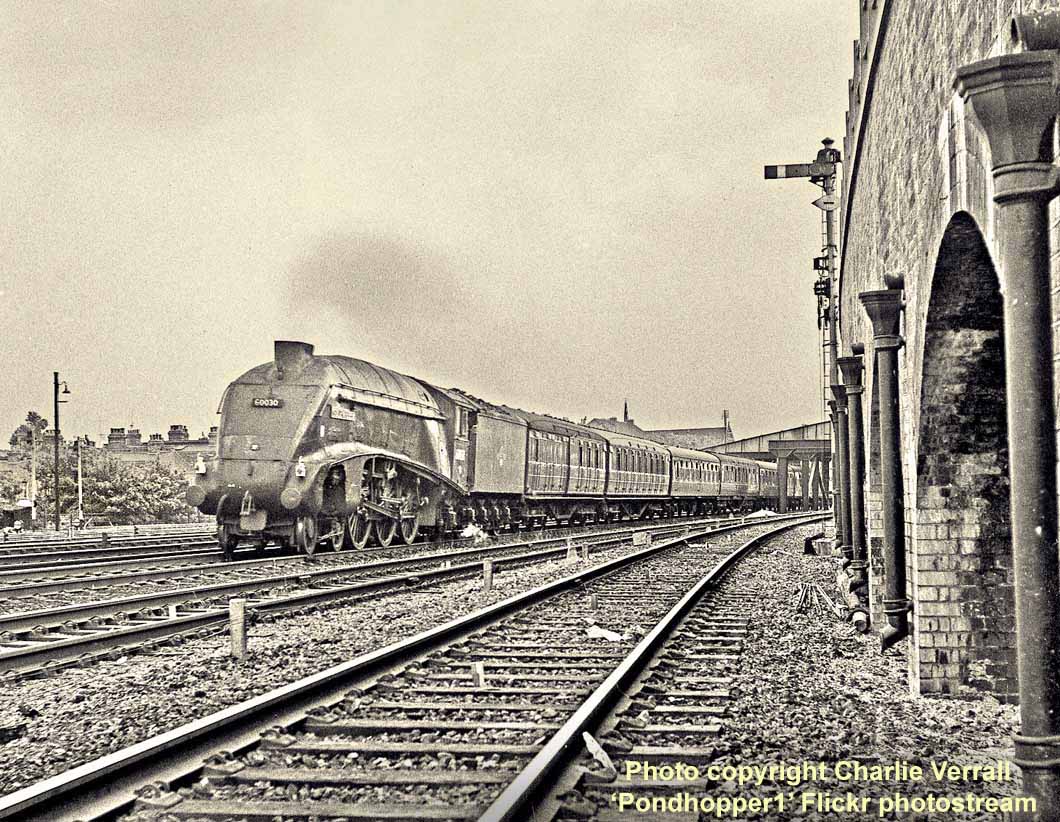
(Above-Below) Another Class A4, 60030 Golden Fleece, was photographed at the head of the 1.52pm Kings Cross to Peterborough; built at Doncaster in August 1937 as LNER 4495, and originally named Great Snipe, the locomotive was renamed Golden Fleece the following month. The first 1946 number 597 was not used, the second number 30 was applied in November 1946; withdrawal came in December 1962. (Below) The 2.15pm Kings Cross to Cleethorpes was hauled by Class B1 4-6-0 No 61073; built by the North British Locomotive Company in September 1946, the engine ran as E1073 between February 1948 and March 1949. Withdrawal came in March 1963.
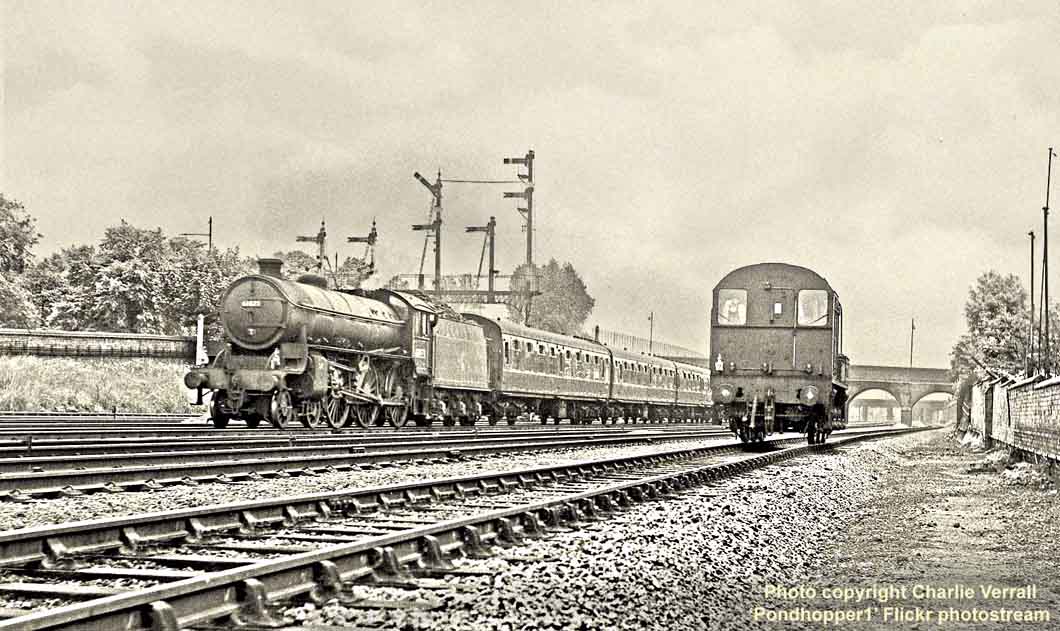
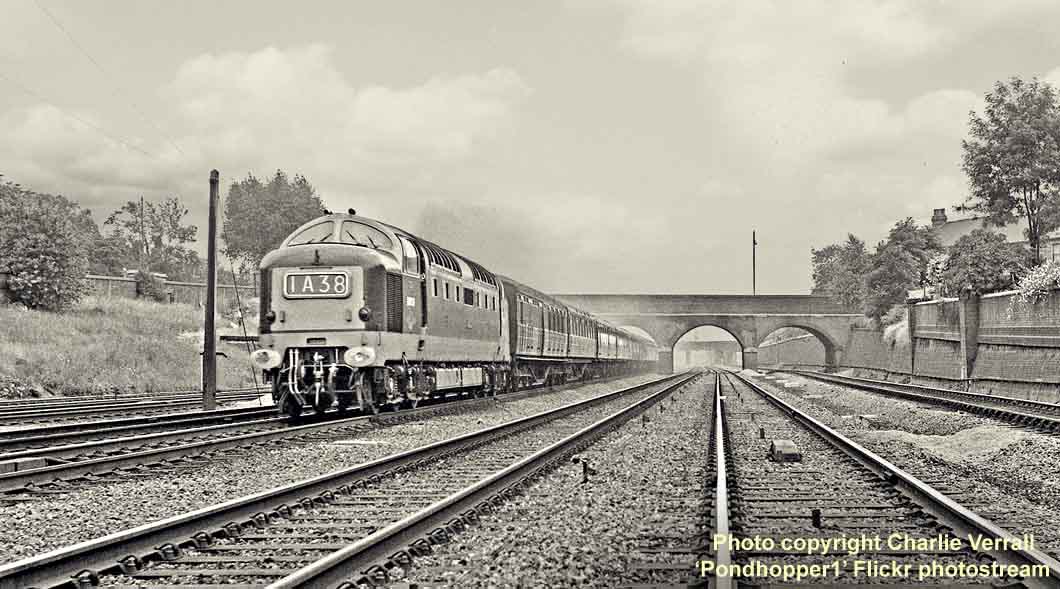
(Above-Below) English Electric 'Deltic' pre-TOPS Class 55 No D9020 Nimbus heads the 2.30pm Kings Cross to Newcastle. Built in February 1962, the locomotive was renumbered under TOPS to 55020 in November 1973 and withdrawal in January 1980. (Below) The 4.55pm freight from Kings Cross to Niddrie was worked by Class A4 No 60001 Sir Ronald Mathews; built at Doncaster in April 1938 as 4500 Garganey, the original name was removed in January 1939 and renaming took place the following March. Withdrawal came in October 1964.
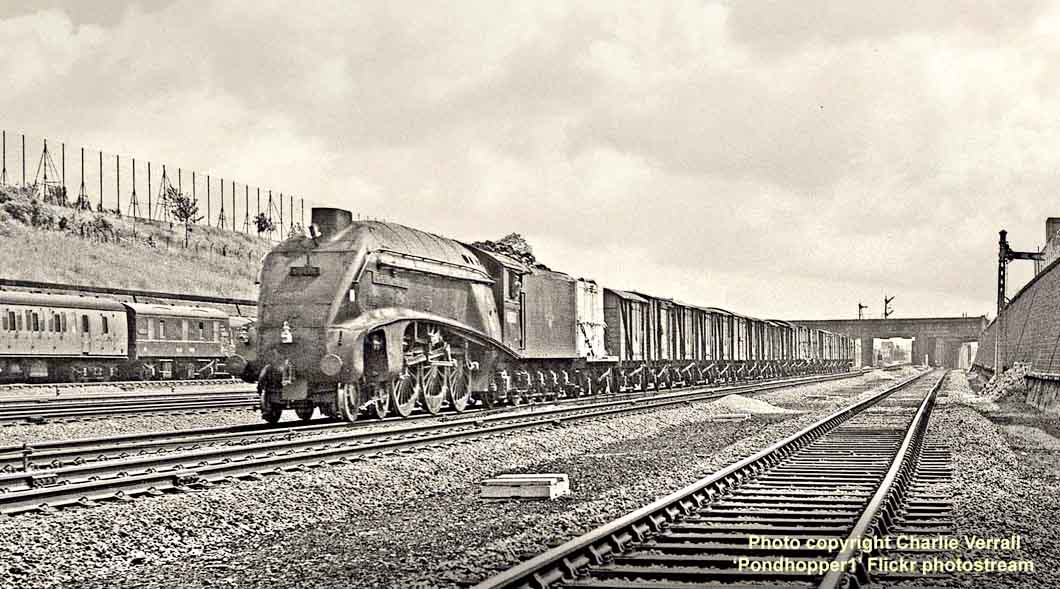
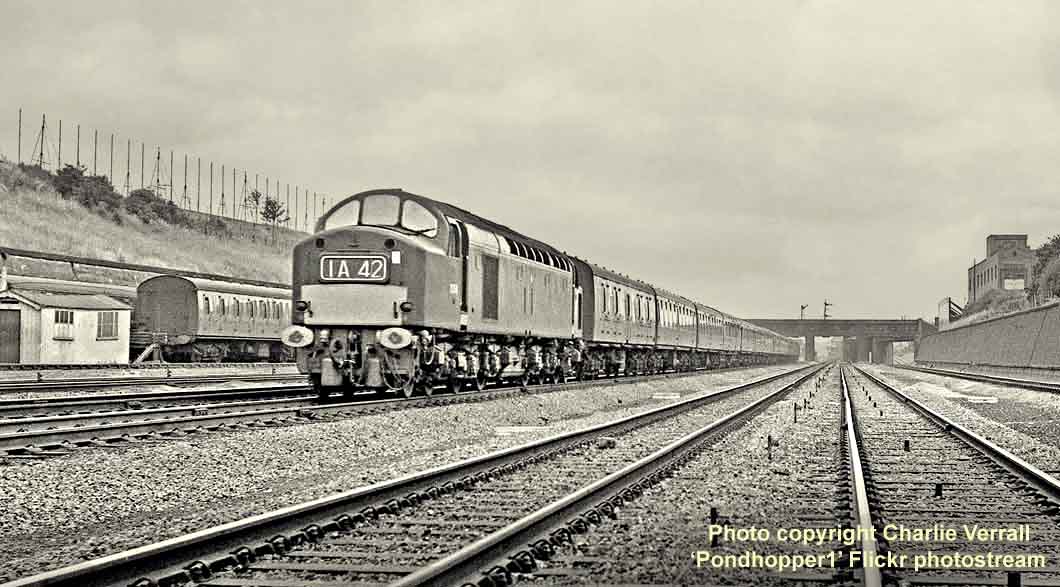
(Above-Below) Adding to the loco variety, Type 4 1Co-Co1 diesel electric D356 heads the 3pm Kings Cross to Newcastle. Built at the Vulcan Foundry in August 1961 the locomotive was renumbered under TOPS as Class 40 40156 in December 1973; withdrawal came in July 1980. (Below) The final shot shows Brush Co-Co Diesel Electric Type 53 prototype D0260 Falcon heading the 3.15pm Kings Cross-Sheffield; built by Brush in October 1961, the locomotive was taken into British Rail stock as D1200 in December 1970. A TOPS number was never allocated and withdrawal took place in October 1975.
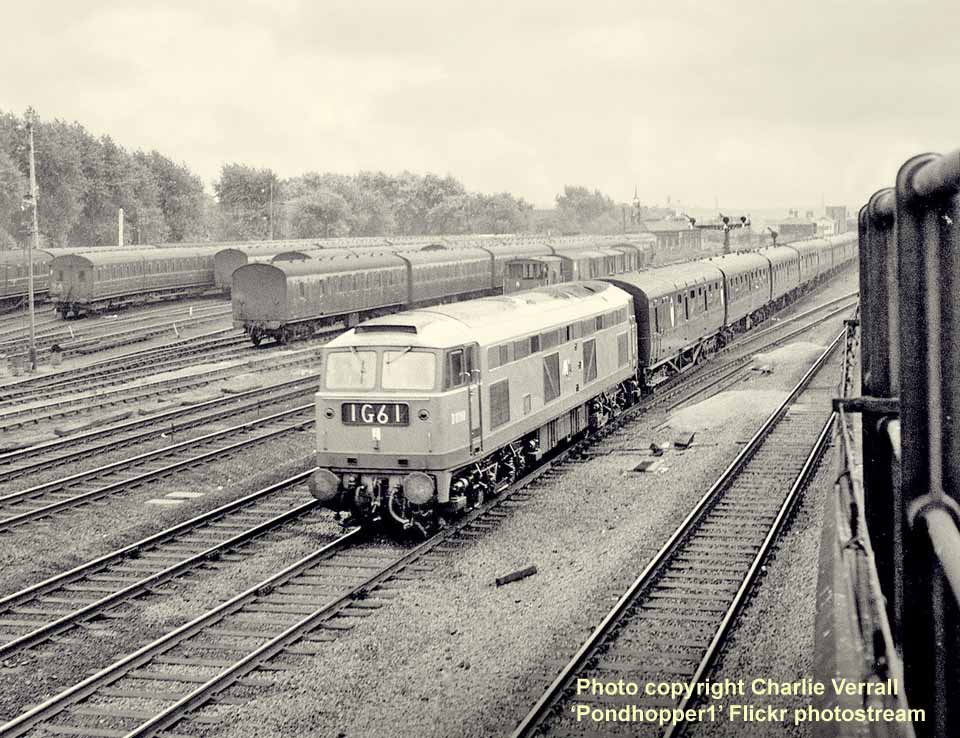
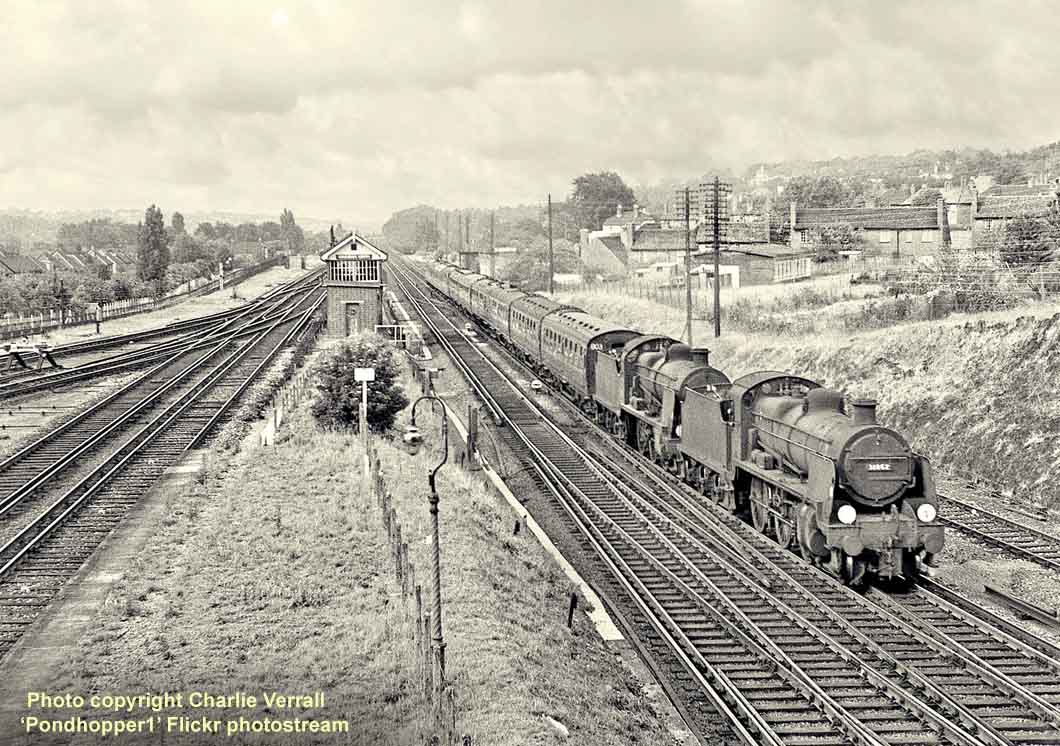
(Above) Back on the Southern Region, on weekdays there was a steam hauled express at 5.25pm from London Bridge to Reading via Redhill. When there was a stone train from Woking to New Cross Gate the returning light engine to Redhill was booked to run after the finish of the business services. However it was the practice for the Motive Power Section to arrange for this engine to double the 5.25pm ex-London Bridge as far a Redhill where some smart working required the pilot to be detached and sent to the sheds without incurring any delays. From my point of view this was a difficult train to get a photograph of since it ran whilst I was still at work! However on July 12th I managed to get to Coulsdon in time to photograph N Class 2-6-0 No 31862 piloting U Class 2-6-0 31807. This train is on the down line to Redhill, the two lines to the left are the up and down Redhill avoiding (Quarry) lines, those branching off to the left by the signal box led to the now closed Coulsdon North Station, the terminus of the LBSCR overhead electrified lines [photo 31862 was built at Ashford in March 1925 using parts manufactured at Woolwich Arsenal and was originally numbered A862. Withdrawal took place during April 1965; 31807 was built at Ashford in November 1926 as L Class 2-6-4 tank A807. Rebuilding as a U Class 2-6-0 was undertaken at Ashford between March and June 1928. Withdrawal took place in January 1964.

(Above-Below) July 14th 1962 saw me at Doncaster for a very short visit, but enough time to capture two freights passing through, the first being O1 Class 2-8-0 No 63646 heading a down service; built by Kitsons for the War Department in February 1918 to the Robinson Great Central Railway Class 8K design, the engine was numbered ROD 1605; it was on loan to the London and North Western Railway as their No 2870 between September 1919 and August 1921. Purchased by the LNER in May 1924 as Class O4/3 No 6374, the locomotive was rebuilt to Class O1 by Thompson in September 1945 and renumbered 3646 during December 1946. Withdrawal took place in July 1965. (Below) In the opposite direction, Class O2/4 2-8-0 No 63935 heads an up freight; built at Doncaster in November 1923 as Class O2/2 No 490N, the locomotive was renumbered 3490 in March 1926 and 3935 in September 1946. Rebuilt with a 100A boiler in April 1958 the engine became Class O2/4; withdrawal took place during August 1963.
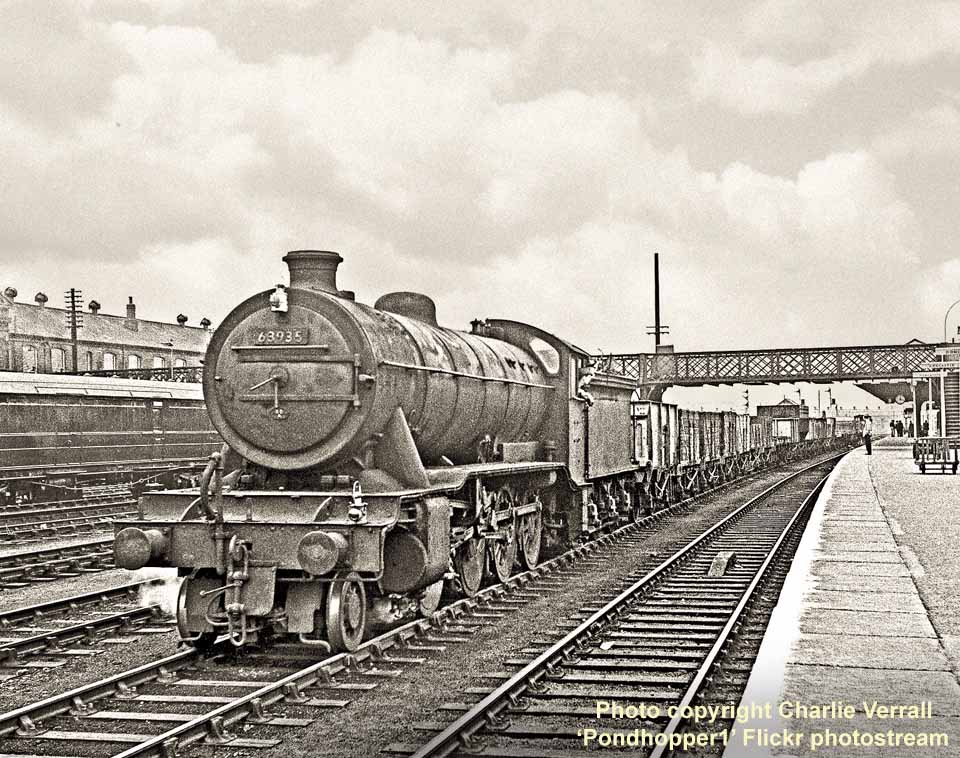

(Above) Outside 'The Plant' was AL5 Class 85 Bo-Bo Electric E3075; although appearing to be complete E3075 did not enter service until January 1963. The TOPS number 85025 was applied in January 1973; withdrawal came in October 1990.....
CHAPTER HEADING...under construction
1963 was not too much of an active year. The decimation of many Southern classes, purely for accounting purposes, the influx of diesel traction on the South Western, and the harsh winter dampened my enthusiasm. Visiting Eastleigh in December 1962 and seeing lines and lines of locos awaiting the cutters torch was very off putting. Other than a few photographs, mainly at Redhill, the cameras remained unused
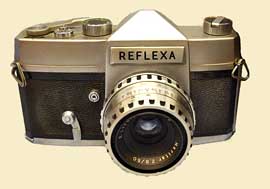 until the tail end of the year. I had by that time added a not very good SLR, a Mamiya Reflexa marketed under the Prinz name by what became Dixons.
until the tail end of the year. I had by that time added a not very good SLR, a Mamiya Reflexa marketed under the Prinz name by what became Dixons. (Left) This is similar to my Reflexa camera, although mine had a Canon lens. In many ways it was a bit of a disaster, the lens was of the highest quality and could not be faulted; in fact I still have it today. However there was a permanent problem with the shutter mechanism where the shutter blades were only in sync for part of the exposure which resulted in most of the image being over exposed. Despite being sent for repair the issues were never resolved and eventually it ended its days in the tip!
I was no longer living in Kentish Town so my movements were severely restricted. I was much more active in 1964, including a productive visit to the Manchester area and the start of visits to industrial lines.
Photographs of industrial lines continued to be the main theme for much of 1965, although I started the year with the last official steam hauled regular services between Redhill and Reading, a bitterly cold January day. Near the end of 1965 I joined the BR Timetable Development Group at Leeds; the group was looking at the development of what would effectively be real time schelues for the movement of loaded and empty
 wagons between collieries and coal pits - a precurser to the Merry-Go-Round trains - heady stuff indeed!
wagons between collieries and coal pits - a precurser to the Merry-Go-Round trains - heady stuff indeed! This job opened new photo opportunities, mainly for 1966; indeed whilst at Leeds we travelled by train to Darlington once a week, strangely always choosing a scheduled service via Harrogate hauled by one of the last A1s, I wonder why!
(Right) 60124 Kenilworth, the penultimate Class A1 in service regularly hauled a service from Leeds to York via Harrogate which I travelled on at the end of 1965. Here she is back at her home shed of Darlington after one of these trips. Built at Doncaster March 1949 she was withdrawn in March 1966 being cut up, as were so many other locos at A Drapers srapyard at Hull. The very last A1 was the York-based 60145 Saint Mungo which was withdrawn in June 1966.'
(Below) By coincidence I was taking photos at Engine Shed Junction around about the time signalman Keith Long - aka Flickr's 'Cabsaab900' (see Page 60) - was working there, although at the time I never actually met him, but since then I have established a friendship with both Keith and his wife, Sue, which in many ways demonstrates the closeness of the Flickr family of members. Here, three ex-railwaymen, all contributors to this website, pose for the photographer at Geoff Burch's 'Rambling Railwayman' book signing at Guildford on April 4th 2011. Geoff is on the left with yours truly (the handsome bearded fellow in the centre) and Keith Long on the right, sporting a tie revealing his allegiance to Saab cars.
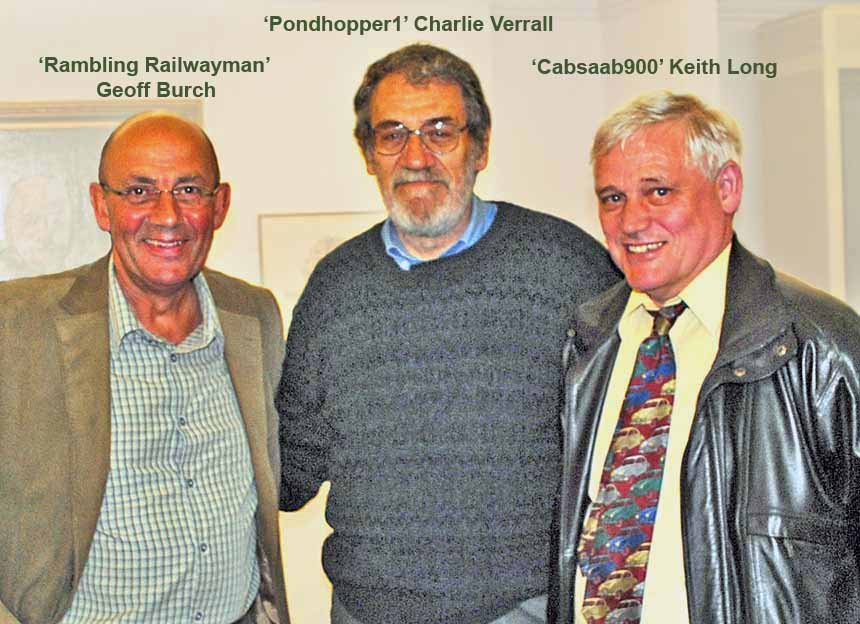
1966 was more industrials and the Calder Valley line and around Huddersfield. However the number of images made were quite low in comparison with other years. In 1967 I had moved to BR HQ at Marylebone where the non accounting Comupter Standards Group was located over the Station Buffet. By then I had more or less given up railway photography, eventually leaving the service of BR near the end of 1967. In fact other the a few odd outings I rarely take photographs of railways. Living where I do all I get to see are class
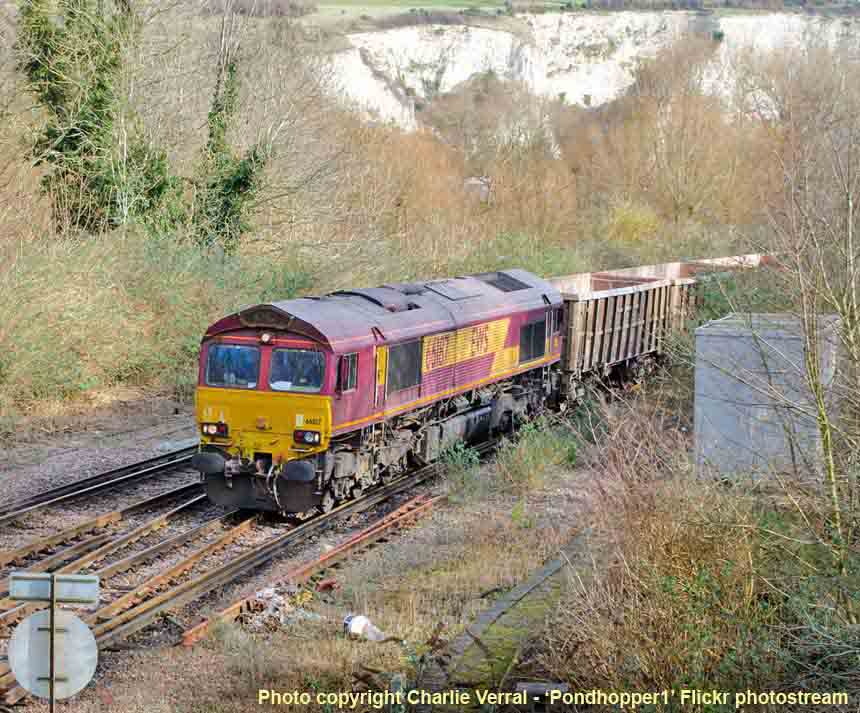 313 and 377 EMUs plus Class 66 locos on the aggregate trains from the recycling centre at Newhan to Ealing, boring! That is not to say I have lost interest in photography, quite the reverse, in fact. I take what must be several hundred images a year of a variety of subjects.
313 and 377 EMUs plus Class 66 locos on the aggregate trains from the recycling centre at Newhan to Ealing, boring! That is not to say I have lost interest in photography, quite the reverse, in fact. I take what must be several hundred images a year of a variety of subjects.(Right) Against the wishes of the local residents an Incinerator Plant has been built on the former railway siding just north of Newhaven station. One of the by-products consists of different grades of aggregates which is removed by a rail freight service to Acton or Ealing several times a week. Here Class 66/0 Co-Co diesel electric locomotive 66187 is approaching Lewes station with the 12.15 ex-Newhaven on January 30th 2015.
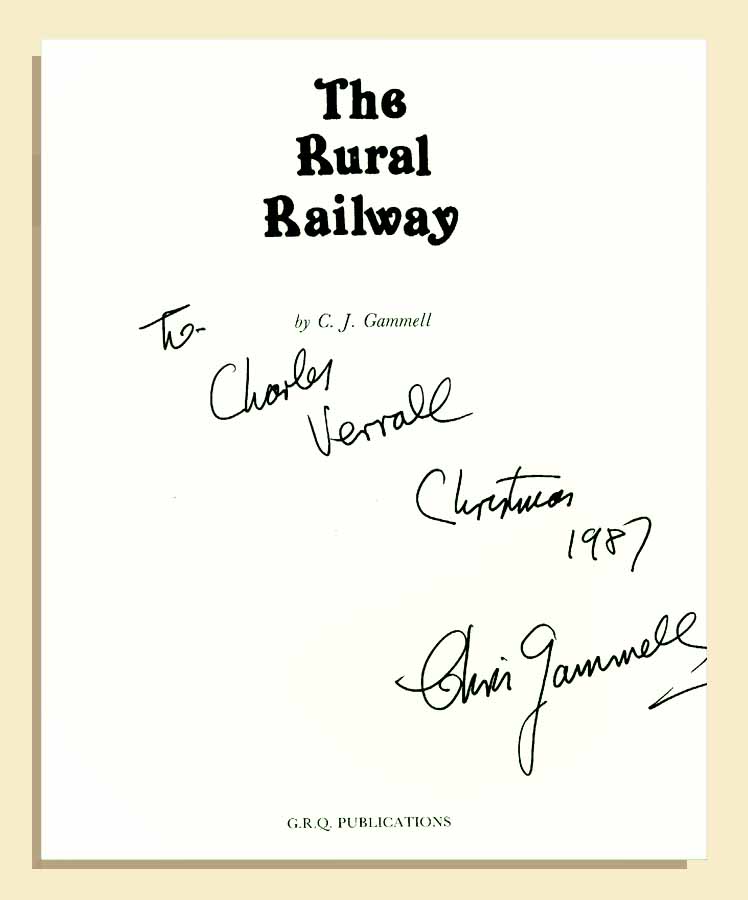 By chance in 2003 I was at a reunion of staff who worked at the Central Section Divisional Manager's Office at Essex House and met the late Chris Gammell, a great character with a joint love of real ale and curries, whom I worked with in Engine Diagrams during the 1960s. Chris asked me if I still had all the images I had taken, and had I considered sending some to the Railway themed magazines. Sadly I never saw Chris again.
By chance in 2003 I was at a reunion of staff who worked at the Central Section Divisional Manager's Office at Essex House and met the late Chris Gammell, a great character with a joint love of real ale and curries, whom I worked with in Engine Diagrams during the 1960s. Chris asked me if I still had all the images I had taken, and had I considered sending some to the Railway themed magazines. Sadly I never saw Chris again. However, I did some rough calculations as to the likely cost of having my negatives printed and came to the conclusion that it would not be cost effective. Then a couple of years later, having familarised myself with the new digital age, one of my sons introduced me to Flickr, and being in possession of a new scanner I thought it would be interesting to scan my negatives and slides and see if they would be if interest to other Flickr users. This turned out to be an interesting exercise that I have yet to complete since most of my 1960's negatives have never been printed; indeed other than a written list of locations and dates I had no idea what they would be like.
What has really pleased me is the continued interest shown in my efforts, with requests to include some in publications and on websites, so all in all it has been a very rewarding exercise.
You are most welcome to drop by my 'Pondhopper1' Photostream by 'clicking' the image link (below).
I hope you enjoy your visit...

THIS PAGE IS STILL UNDER CONSTRUCTION...TO BE CONTINUED...
Polite notice: All text and photographs are protected by copyright and reproduction is prohibited without the prior consent of the © owner. If you wish to discuss using the contents of this page Charlie Verrall's email address is below. Please note - this is not a 'clickable' mail-to link via Outlook Express. You will have to email manually.
charlieverrall@aol.com
or
dheycollection@ntlworld.com




